8 REASONS TO ADD



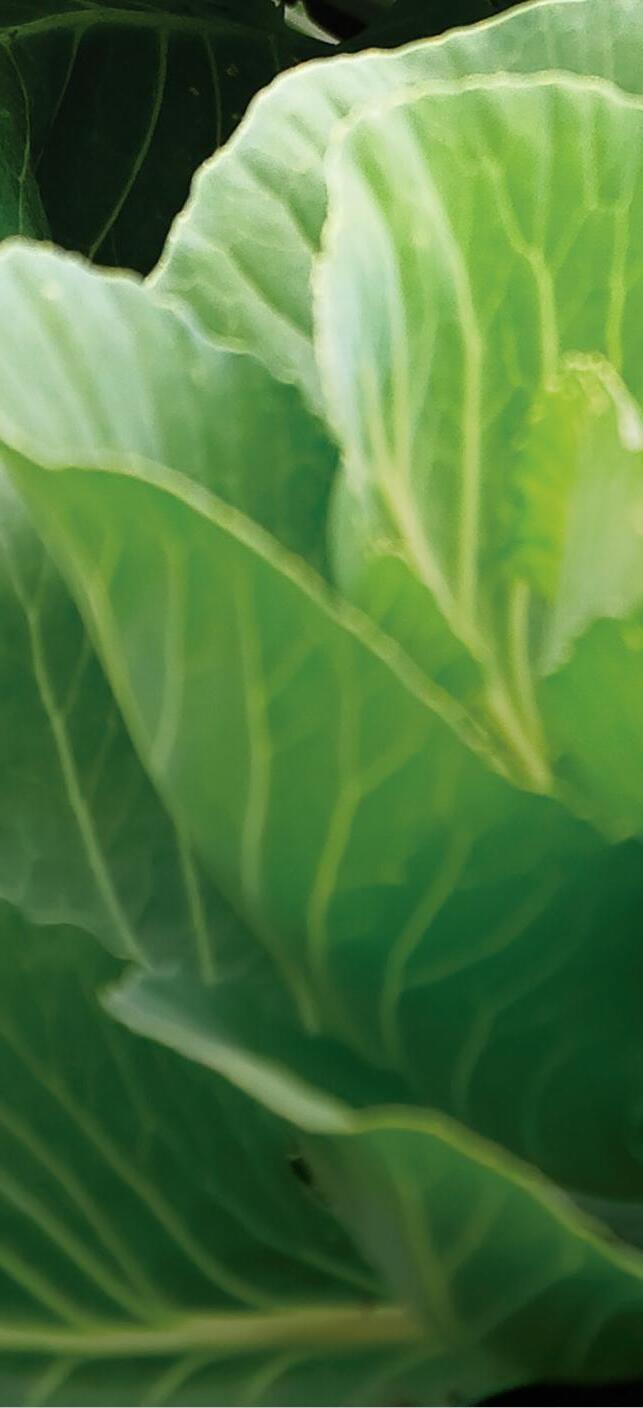


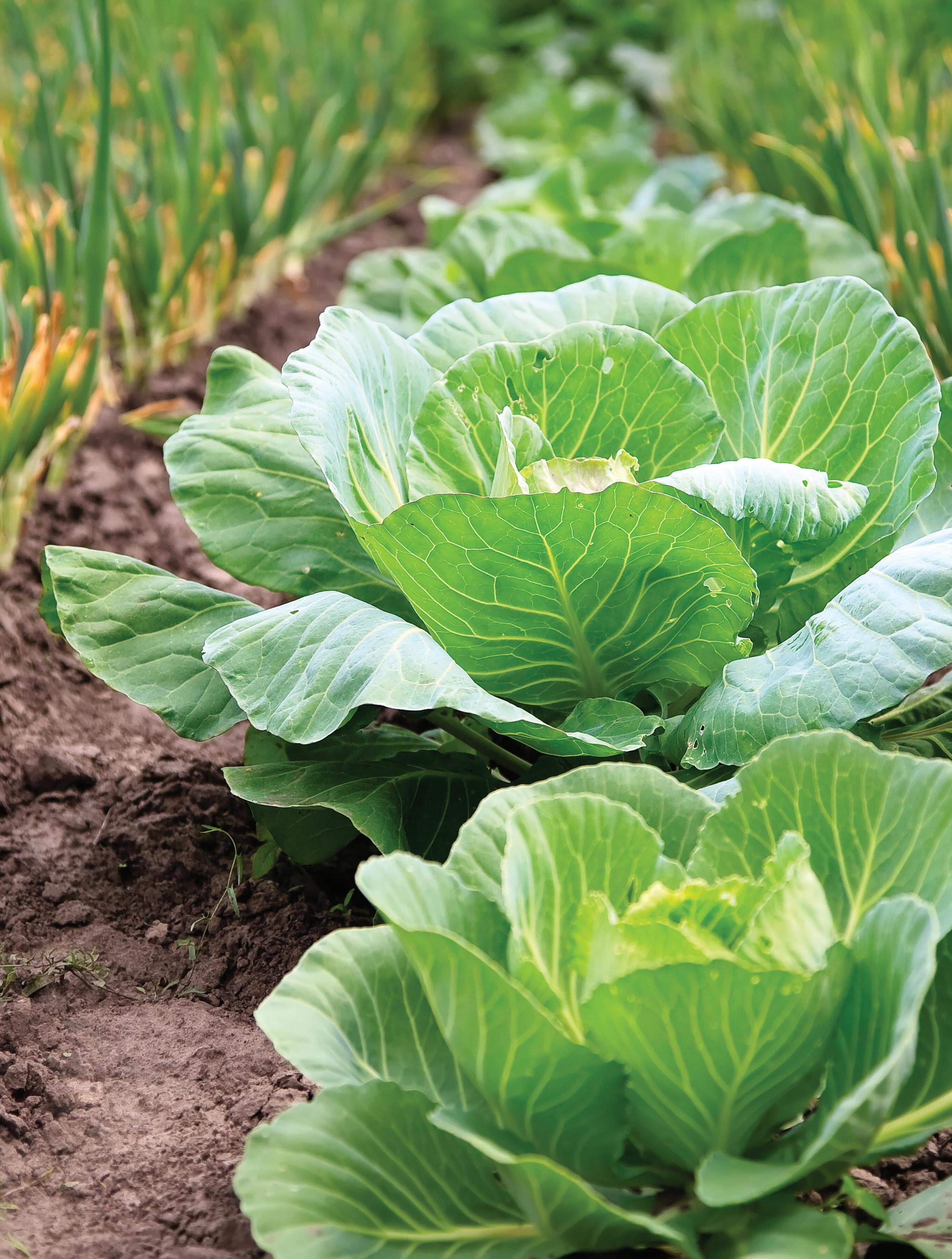
TASTE OF SUMMER: Grow Sweet Red Raspberries

ALL ABOUT EGGS: What to Expect When Your Flock Starts Laying


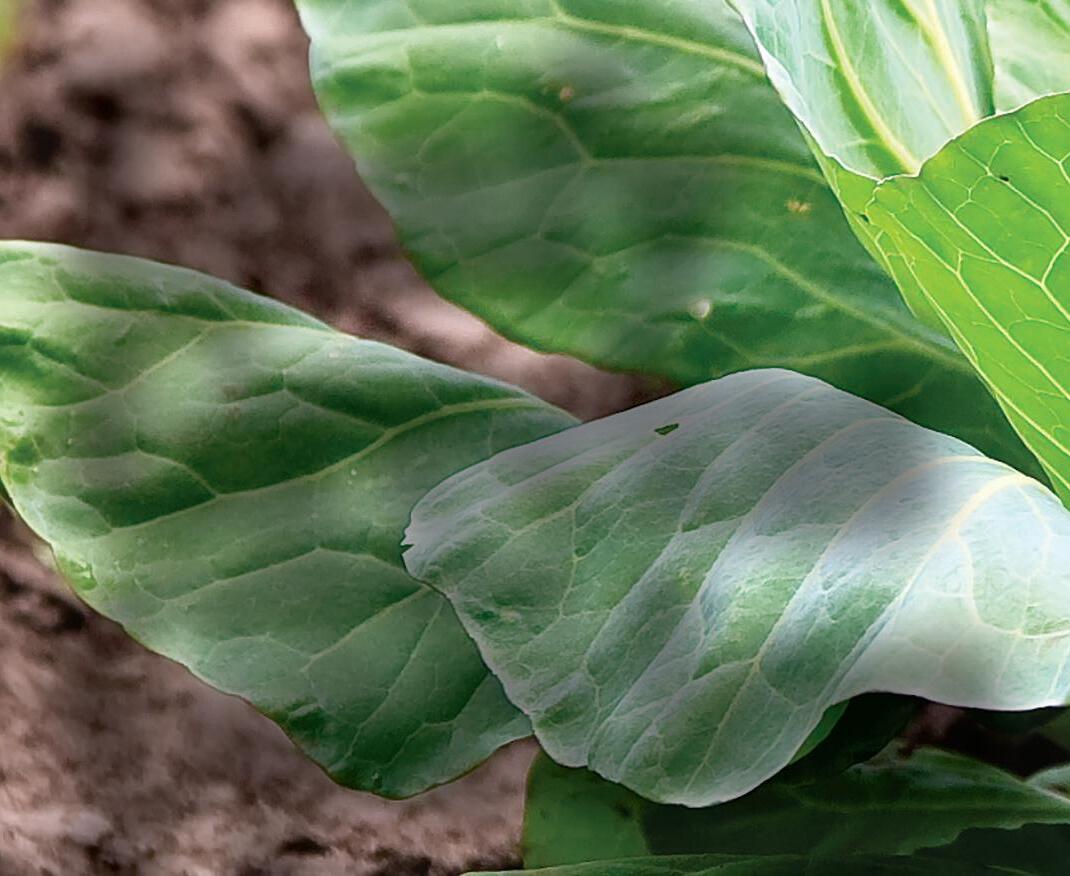










Celebrating Rural America Since
1882
Leafy Greens
Garden
TO YOUR
Lineup
www.Grit.com MAY/JUNE 2023 • $5.99
See #24 on page 63

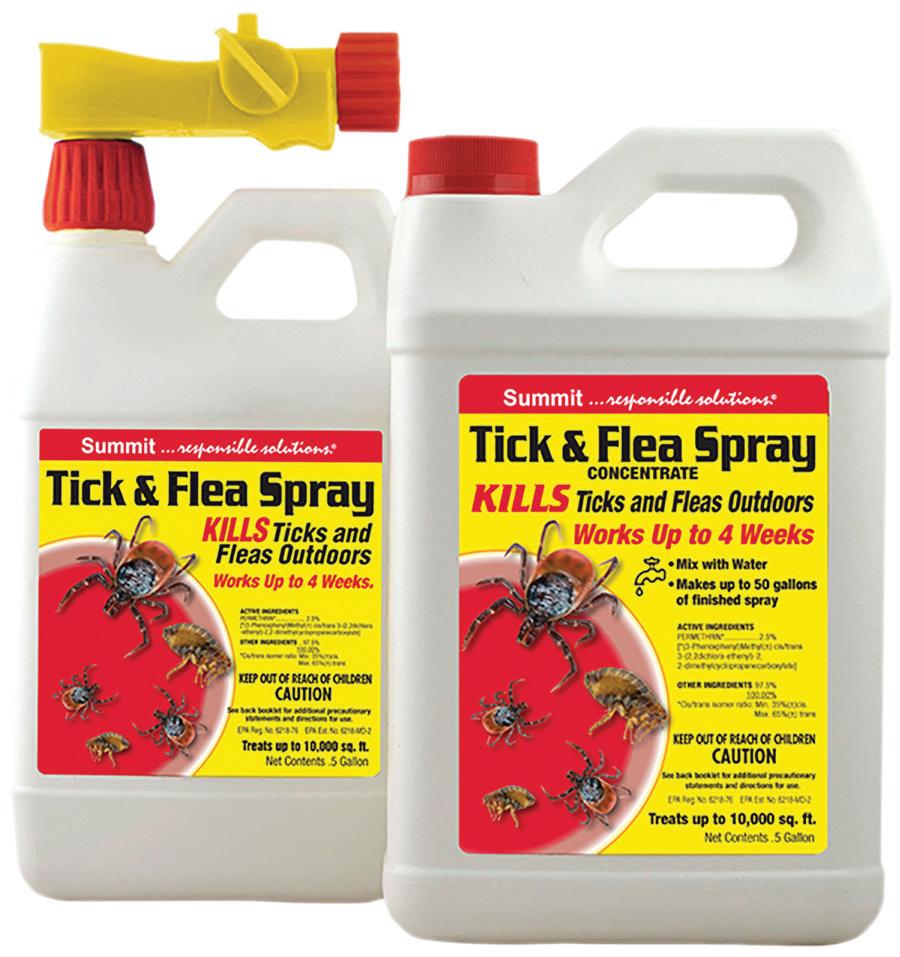


17 8 Reasons to Eat Your Greens




Plate up flavor, nutrition, and a pop of color by learning to grow and cook with leafy greens.
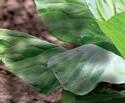

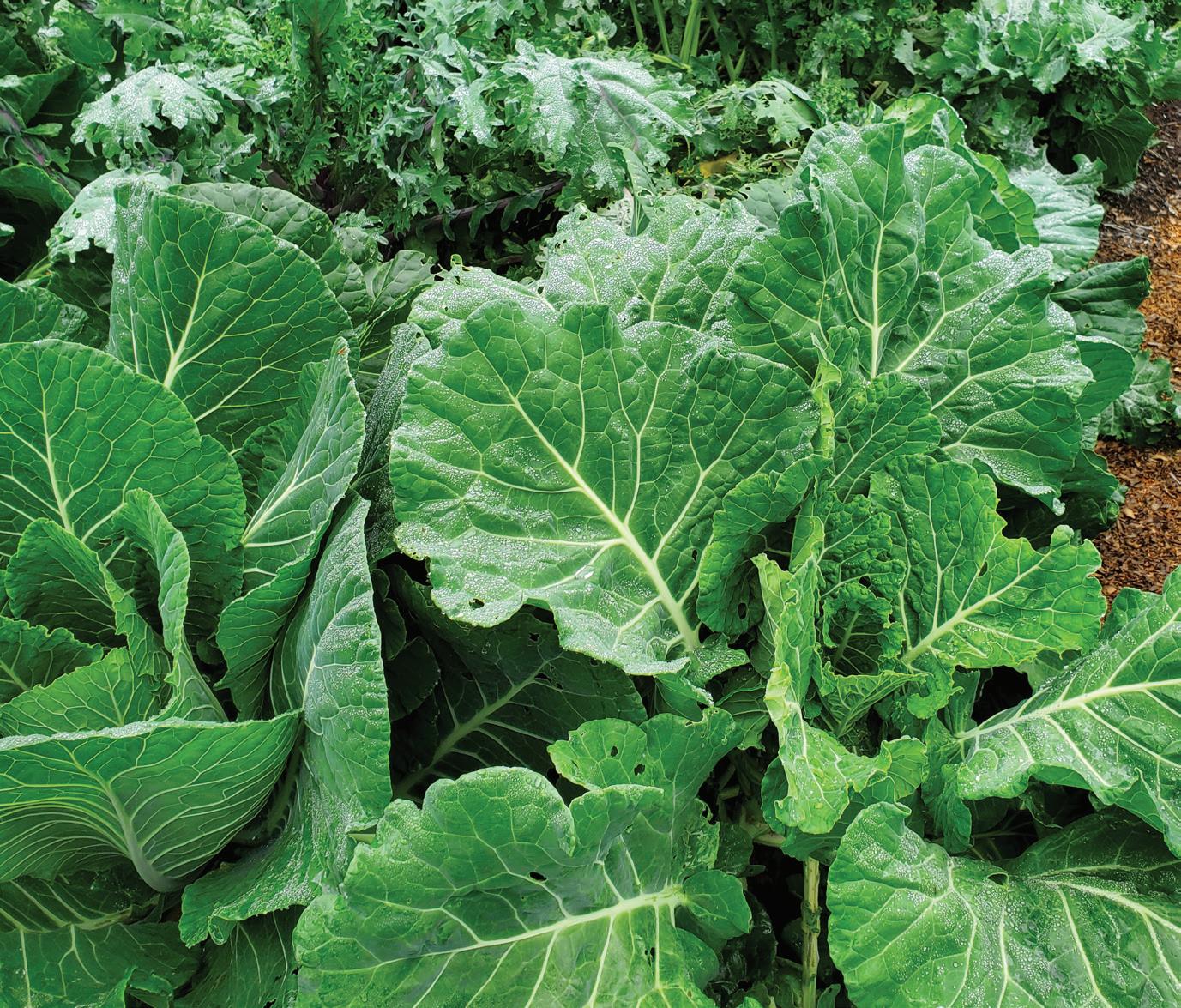
21 All About Chicken Eggs


From odd egg shapes to production qualms, here’s what to expect when your flock starts laying.

50 Hurrah for Red Raspberries
Raspberry patches bring a sumptuous summer bounty year after year with minimal upkeep.
Helpful How-Tos





27 Transitioning to a Certified Organic Farm



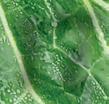
If you’re considering organic certification for your farm, this expert advice can help you navigate the daunting process.


33 Sew Your Own Clothing Sans


Patterns
Outfit your closet with no-fuss, inexpensive garments by picking up the renegade art of patternless sewing.


40 Self-Care with Sage
Try this reliable herb outside the confines of your kitchen to craft natural skin-supporting products.
Well-Fed Farmstead

12 Quesadillas

Kicked Up a Notch
Turn those cheese-filled snacks into full-blown meals with these recipes for quesadillas fit to feed a crowd.
44 Choosing the Right Animal Feed

Keep your animals healthy by understanding the different kinds of feeds available.
Animals Abound


54 Critters and Cars: Avoid Costly Collisions
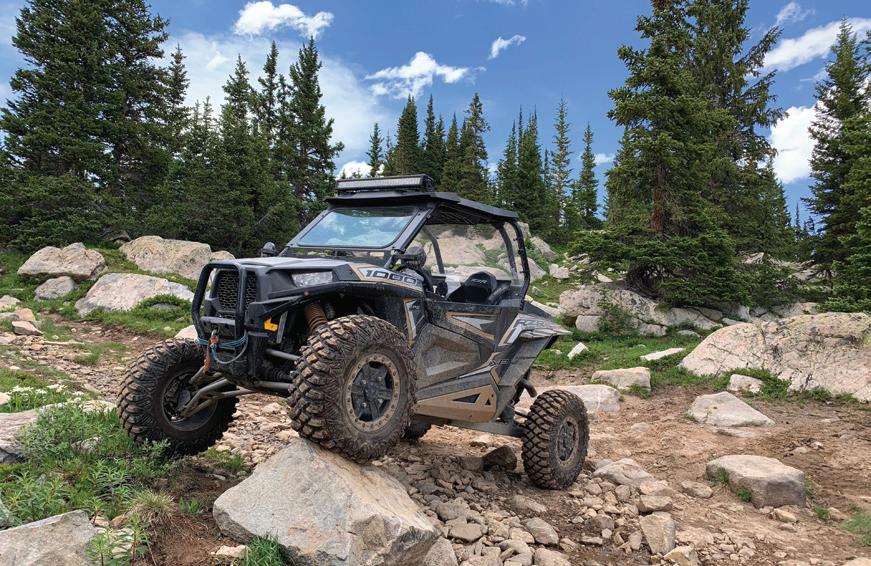
What animal encounters can happen on the road? Some are more common — and more hazardous — than others.
68 Draft Horses on the Homestead: Historical Skills in Use Today
These powerful animals can provide modern farmers a fuelefficient way to work the land.
F ROM TOP K RISTINA S ELESHANKO A DOBE S TOCK /R AY 17 4 In Every Issue 2 Our View 3 Through the Grapevine 4 Tools of the Trade 6 The Best of Times 8 Mail Call 11 Your View 80 Roodoodle Cover: Adobe Stock/Sunny Forest Cover Design: Shelly Bryant Celebrating Rural America Since 1882 TASTE OF SUMMER: Grow Sweet Red Raspberries ALL ABOUT EGGS: What to Expect When Your Flock Starts Laying Leafy Greens TO YOUR Garden Lineup 8 REASONS TO ADD Contents May/June 2023 On the Cover
Stories with this logo are available in audio form online!
TOOL TALK
■ Few things in life are as useful as a good tool. Whether fixing a fence or working in the garden, the right tool makes all the difference.
As a kid, one of the big rules on the farm was “don’t touch the tools.” And if we did need to use a tool for some task, we were instructed to immediately return it to its resting place once we were finished. I recall a couple of times when tools were accidentally left out in the elements. Once my dad discovered the often-ruined implement, he was pretty disappointed. I didn’t really understand why back then, but I certainly do now. The loss of a good tool is something to mourn.
Now, I’m gearing up for the growing season, which means bringing out my garden tools and taking inventory of what I need. I always clean and inventory my tools at the beginning of winter, but a few months of cold weather has me forgetting what I have. Or that’s what I tell myself, anyway. The reality, I think, is that warm weather gets me itching for new, exciting gadgets. Plus, it’s prime garage sale season, which is a great way to get new-to-me tools.
Speaking of tools, I want to point out a new department we’re introducing in the magazine. Check out Tools of the Trade on Page 4. As we all know, rural living requires the help of some sturdy equipment. In this department, we’ll be highlighting some of our favorites, from large machinery down to small hand tools. (Don’t miss this issue’s installment from Hank Will, former editor-inchief of Grit!)
We’re also starting a new department to showcase nostalgic stories from our community. Among rural folks, stories get passed down through the generations often through word of mouth. We’d like to carry on that tradition in these pages. If you have a story to share, send it along! Turn to Page 6 to read this issue’s installment of The Best of Times.
As always, we want the pages of this magazine to serve as a helpful tool for those living the rural life, and to bring some smiles out along the way. I hope you enjoy these new departments and each of the articles found in this issue. One of my goals for this summer is to sew more, so I’m personally delighted by Wren Everett’s article, “Sew Your Own Clothing Sans Patterns,” found on Page 33.
Do you have a favorite tool? If so, I’d love to hear about it! I’m always looking for recommendations. Or, let me know what you think of our new departments or an article you enjoyed. Drop me a note at ASarkesian@ OgdenPubs.com.
Keep those tools handy,
VOLUME 141, ISSUE 3
ISSUE EDITORS
ALLISON SARKESIAN, Lead Editor

OSCAR H. WILL III, Editor at Large
EDITORIAL TEAM
INGRID BUTLER
KARMIN GARRISON
REBECCA MARTIN
JESSICA MITCHELL
ILENE REID
BEN SAUDER
AMANDA SORELL
JEAN TELLER
CARLA TILGHMAN
ADVERTISING DIRECTOR
BRENDA ESCALANTE; BEscalante@OgdenPubs.com
ART/PREPRESS
SHELLY BRYANT, Art Director
WEB AND DIGITAL CONTENT
TONYA OLSON, Digital Content Manager
DISPLAY ADVERTISING
800-678-5779; AdInfo@OgdenPubs.com
CLASSIFIED ADVERTISING

866-848-5416; Classifieds@Grit.com
CUSTOMER CARE 866-803-7096
CustomerService@OgdenPubs.com
BILL UHLER, Publisher
MARISSA AMES, Editorial Director
CHERILYN OLMSTED, Circulation & Marketing Director BOB CUCCINIELLO, Newsstand & Production Director BOB LEGAULT, Sales Director ANDREW PERKINS, Director of Events and Business Development
TIM SWIETEK, Information Technology Director ROSS HAMMOND, Finance & Accounting Director
Grit Magazine (ISSN 0017-4289)


May/June 2023, Vol. 141, Issue No. 3. Grit is published bimonthly by Ogden Publications, Inc., 1503 SW 42nd St., Topeka, KS 66609-1265. Periodicals Postage Paid at Topeka, KS and additional mailing offices. POSTMASTER: Send address changes to Ogden Publications, Inc., 1503 SW 42nd St., Topeka, KS 66609-1265. For subscription inquiries call: 866-803-7096
• Outside the U.S. and Canada, call 1-785-274-4361 • Fax: 785-274-4305
SUBSCRIBERS: If the Post Office alerts us that your magazine is undeliverable, we have no further obligation unless we receive a corrected address within two years.
©2023 Ogden Publications Inc.
Printed in the U.S.A.
In accordance with standard industry practice, we may rent, exchange, or sell to third parties mailing address information you provide us when ordering a subscription to our print publication. If you would like to opt out of any data exchange, rental, or sale, you may do so by contacting us via email at CustomerService@ OgdenPubs.com. You may also call 866-803-7096 and ask to speak to a customer service operator.
Allison Sarkesian, Senior Editor ASarkesian@OgdenPubs.com
A llison s A rkesi A n
® Our View May/June 2023 2
READER TIPS FROM RURAL AMERICA
Effective Deer Deterrent
After years of trying to keep deer out of our garden, when lights, radio, and three strands of electric fence failed, my husband installed this safety fence that has worked well for several years now.
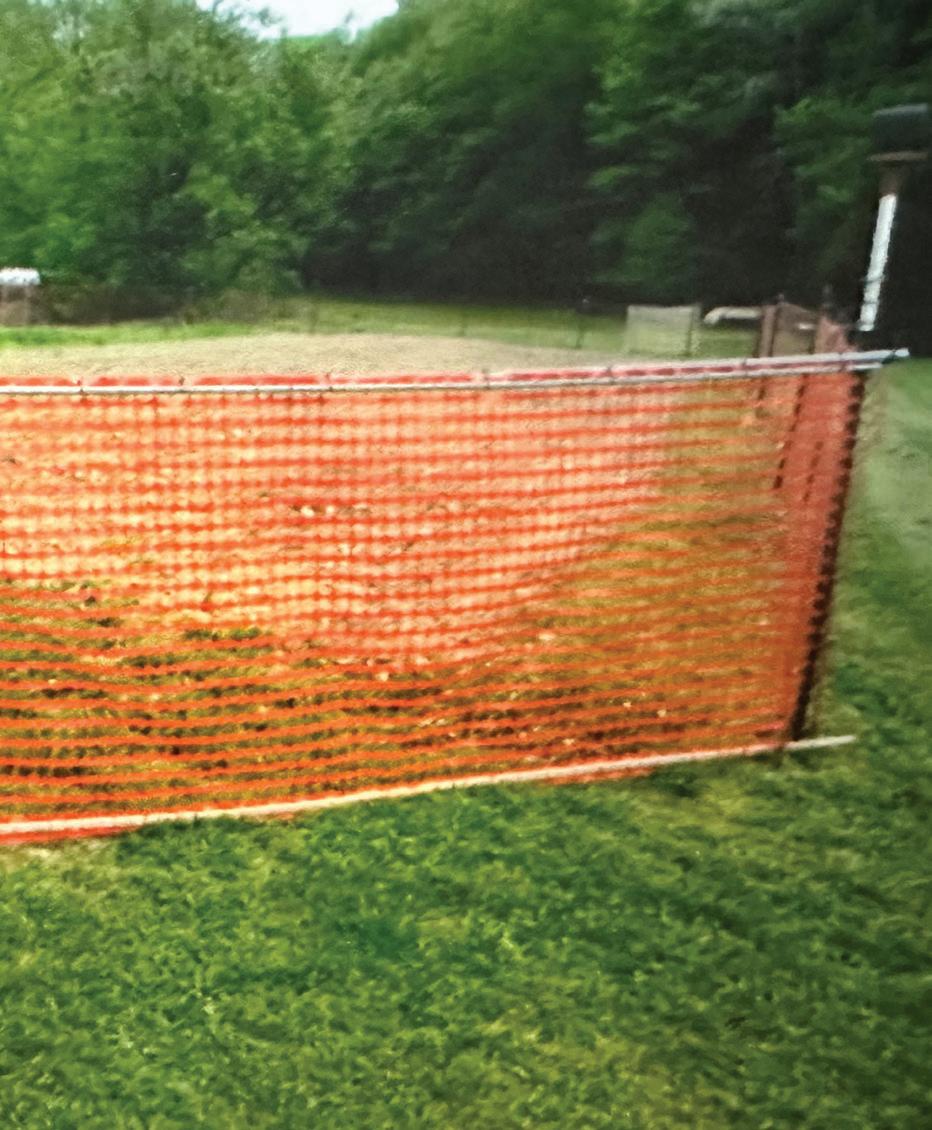
FERN CECCO ELYSBURG, PENNSYLVANIA
Flies-Be-Gone








I have a great gadget that outlasts ordinary fly swatters. I covered a fly swatter in common window screen that can be purchased from a farm supply store or window company. (You can also use an old screen from a window that’s no longer in use.) Fold a piece of screen in half and lay your swatter on top. Cut around the swatter, allowing for a ¼-inch seam. Insert the swatter between the screen layers and sew around the edges. You can even use hem binding to make it fancy. Air flows through it easily.
CHARNELSA KAY DILLER DARDEN, TENNESSEE

Keep Pepper Plants Warm
When you transplant your pepper plants in spring, place three or four flat rocks around the base of each plant. The rocks will help your plants grow faster by keeping the soil warmer, maintaining moisture, and preventing weeds. You can remove the rocks when the leaves shade them during the day. By then, the soil will be sufficiently warm for your plants.
 JAMES LEO VIA EMAIL
JAMES LEO VIA EMAIL




Personalized Planting Stick

Last summer, I made a planting stick to eliminate stooping, squatting, and kneeling while I planted. I used scraps I had around the house. I built it from a 3-by-36-inch piece of PVC pipe and a “funnel” I made from the top half of a V8 juice bottle. I taped and glued the funnel to one end of the PVC pipe. Then, all I had to do was hoe where I wanted the seeds to go, aim the open end of the planting stick, and drop the seeds down the funnel. I finished by covering the seeds with dirt. Easy peasy, job done. It works great and provides pain-free planting.
You can use a smaller diameter of PVC, but make sure your largest seeds, such as lima beans, will slide down the pipe. With a smaller-diameter PVC, you should be able to find a nice funnel from the dollar store or local automotive store to fit the pipe.

I like the 3-inch pipe because it also serves as a walking stick while I move around the garden. This year, I’m going to try gently sliding small transplants down the pipe.
KAMA LEE BENTLEYVILLE, PENNSYLVANIA
If you have garden, farm, or home advice you’d like to share, send an email to Letters@Grit.com, or mail a letter to 1503 SW 42nd St., Topeka, KS 66609. We pay $25 for each tip we publish.








around
Visit www.Grit.com and search “reader letters” to see what other members of the GRIT community have been up to lately. C LOCKWISE FROM TOP LEFT : F ERN C ECCO ; J AMES L EO ; S HUTTERSTOCK / IRINK www.Grit.com 3 Through the Grapevine
ATV OR UTV? DECIDING ON A FARM VEHICLE
 By Oscar H. Will III
By Oscar H. Will III
■You’ve decided to take the plunge and increase your rolling stock remuda by adding a nimble, light, utilitarian vehicle to help with daily chores, but you aren’t certain whether you should spend your hard-earned cash on an all-terrain vehicle (ATV) or a utility vehicle (UTV). The decision isn’t really that difficult if you park your emotions and systematically consider how you’ll make use of the machine.
The ATV is generally a single-person, four-wheeled, cycle-like vehicle that the operator straddles and steers with handlebars. The UTV is a four- or six-wheeled vehicle that’s like a small truck. Both ATVs and UTVs can save you time, money, and future medical bills by reducing physical labor and stress. While many experts suggest UTVs are the wiser investment, they’re typically more expensive, and in some cases, an ATV makes more sense.
Agile ATVs
The ATV is a perfect workhorse on livestock farms and sprawling ranches, where trails are narrow, the landscape is rough, and the fences are long. ATVs require more care and skill to safely operate, and they leave a light footprint with minimal compaction, except in wet soils.
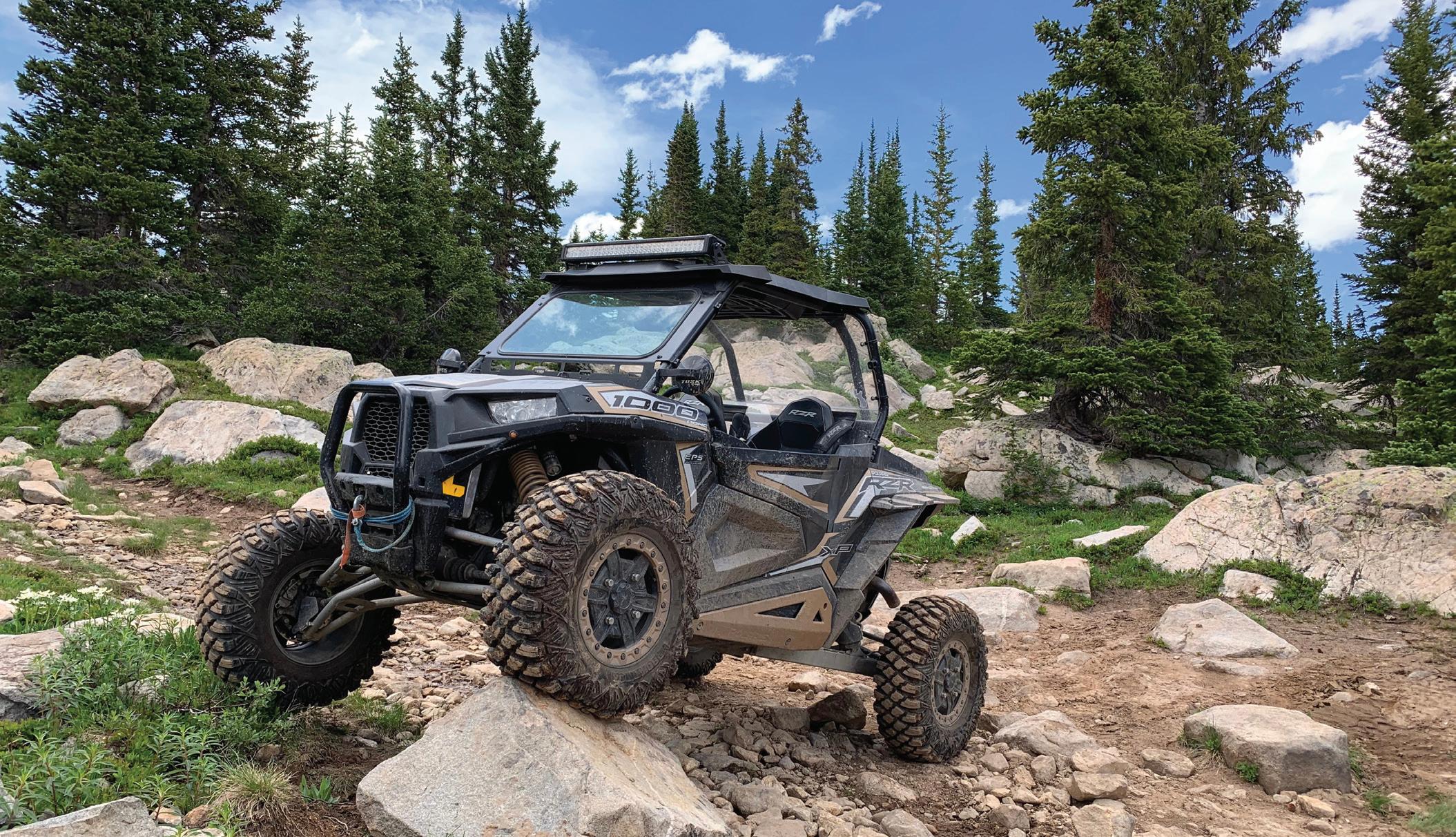
For fixing fences, checking cows, catching calves, and even bringing in the flock, an ATV is an excellent choice. Like a horse, the ATV has a relatively light cargo capacity compared with a pickup truck, but it can also tow a small trailer if you need to haul a few fence posts to that remote breach.
The ATV is also the most nimble of the four-wheeled workhorses. We use ours to round up our cattle and sheep, check miles of fence, spot-spray remote weedy patches with molasses to encourage grazing, and take an occasional trip down the lane to get the mail.
Sturdy UTVs
UTVs are more versatile than ATVs in many ways, but they’re less nimble and less fuel-efficient, and they require somewhat wider and more developed trails. UTVs are also more stable and can carry up to 5 passengers (in addition to the operator). Plus, UTVs have a higher cargo capacity with a dedicated bed and a higher towing capacity than ATVs.
Tools of the Trade May/June 2023 4 A dobe S tock /R A y
the most from your next machinery investment.
Get
UTVs are great for getting the fencing crew and all the supplies out to the build site, and they’re great for hauling moderate amounts of feed, bedding, garden produce you name it. We use our UTV to haul water to remote paddocks, haul firewood, tow our mobile shepherd’s hut, and set up and tear down large stretches of temporary fencing. In a pinch, we’ll use the UTV as backup when moving a few hundred sheep down the road to a remote pasture and hauling mineral and salt to the active paddocks.
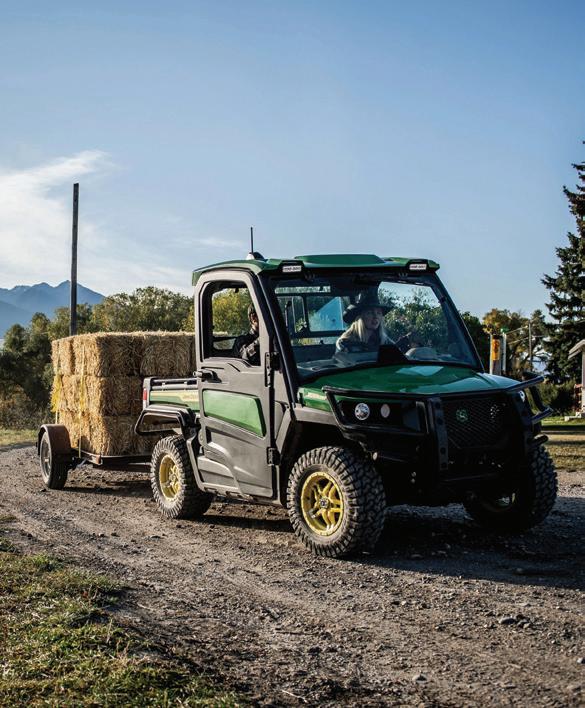
More Than Just a Workhorse
Both the ATV and the UTV have significant recreational value in addition to the more utilitarian advantages. If you want to get away by yourself, choose an ATV. If you’re going on a picnic with your sweetie by the eagle nest in the back corner of the pasture, take a UTV.
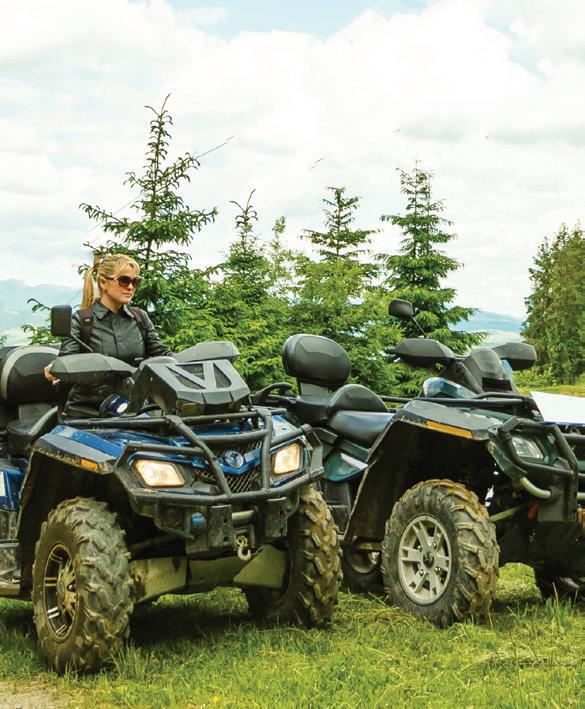
In any case, be sure to choose the ATV or UTV that’s suited for the work you’ll need to accomplish. Many are now designed with rip-it-up recreation in mind, and while they might deliver maximum adrenaline, they’ll also deliver minimum utility. For more help with choosing appropriate machinery, see www.Grit.com/Tools/Machinery.
Making a Purchase
Once you’ve settled on what to purchase, the next step is finding a quality piece of equipment. You can often find good deals on used ATVs or UTVs if you’re willing to have a bit of patience. Check locally to see if anyone is selling one in good condition. Online marketplaces, such as Craigslist and Facebook Marketplace, are good places to look. Ask lots of questions before purchasing anything, and don’t buy anything you haven’t seen in person. Thoroughly inspect the machine and ask to test-drive it before committing to a purchase.
If you’re in the market for a new ATV or UTV, contact a local dealer to see what’s available. Just like when buying a used machine, you’ll want to go see the equipment in person before purchasing. Testdrive it, and ask the dealer plenty of questions. You’ll be spending hard-earned money, so make sure you get exactly what you want. Many dealerships also sell used equipment. Here are a few reputable brands to check. Contact the companies to find dealers near you.
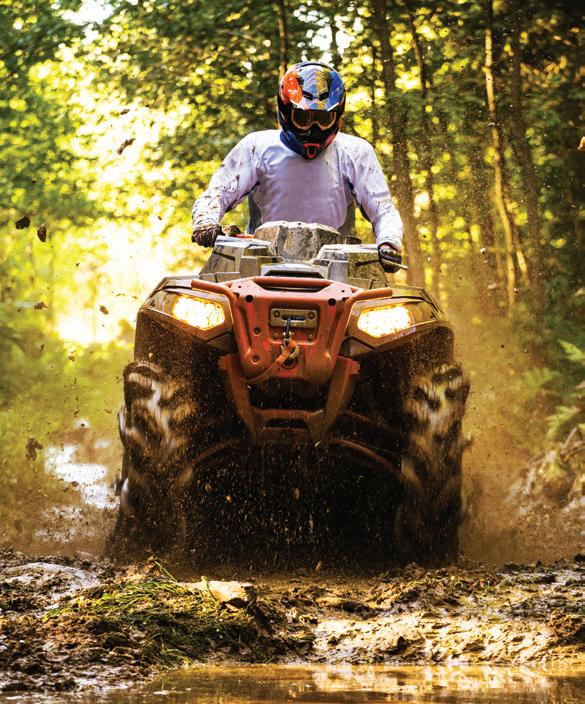
• American Landmaster
800-643-7332
www.AmericanLandmaster.com
• Arctic Cat
800-279-2281
https://ArcticCat.TXTSV.com
• Bobcat
800-743-4340
www.Bobcat.com
• Can-Am
888-272-9222
https://Can-Am.BRP.com/ off-road/us/en


• CFMOTO
763-398-2690
www.CFMOTOUSA.com
• Cub Cadet
877-428-2349
www.CubCadet.com
• Gravely 877-904-4069

www.Gravely.com
• Hisun Motors 972-446-0760
www.HisunMotors.com
• Honda Powersports
866-784-1870
www.Powersports.Honda.com
• Intimidator UTV
855-307-0933
www.IntimidatorUTV.com
• John Deere
866-993-3373
www.Deere.com/en
• Kawasaki
866-802-9381
www.Kawasaki.com/En-US
• Kioti
877-465-4684
www.Kioti.com
• Kubota 888-458-2682
www.KubotaUSA.com
• KYMCO 864-327-4744
www.KYMCOUSA.com
• Mahindra 877-449-7771
www.MahindraUSA.com
• Polaris 888-704-5290
www.Polaris.com/En-US
• SSR Motorsports 562-926-2888
www.SSRMotorsports.com
• Suzuki 714-572-1490
www.SuzukiCycles.com
• Yamaha 800-962-7926
www.YamahaMotorSports.com
• Yanmar 770-824-9486
www.YanmarTractor.com
Tools of the Trade www.Grit.com 5
Oscar H. Will III raises hair sheep, heritage cattle, and many varieties of open-pollinated corn with his wife, Joanna, on their rural Osage County, Kansas, farm.
c lockwi S e f R om top left A dobe S tock / l evel ; A dobe S tock /A ngelov J ohn d ee R e A dobe S tock / m AR celo p hoto S
Whether you choose an ATV or a UTV depends on the kind of work you’ll need it for.
DAD’S BUCKET

Take a trip down memory lane with time-honored tales from our readers.
By Mary Blye Kramer
“Daddy’s home!” I yelled as I heard my dad’s old, red Chevy spit gravel in front of our house. The faux-crystal door handle jiggled in my hand as I twisted it, the wooden screen door flapping behind me as I tore down the concrete steps and skipped across our small front lawn. There in my dad’s hand was his coal-mining bucket, and inside that bucket was something for me.
I loved my dad for more than his bucket. From the time I was 3 years old, I was up at 7 a.m., ready to go to work with him at his second job as a handyman. My sister had written my name on the front of his white milk truck, which he used for his second line of work. People around town called me “Little Joe,” after my dad. I planned on being a plumber when I grew up.
But for that moment when he’d come home from the mines, the bucket would take precedence as I’d wrangle it out of his hand. A two-tiered silver tin can with a handle, it was Aladdin’s lamp to me, a magical container that every coal miner’s child remembers.
Inside my dad’s bucket would be a candy bar. Physically, it was like any Hershey bar you’d buy at the store. But here’s what made it different: It came home in my dad’s bucket. I figured there must’ve been some special candy factory down in those coal mines that existed nowhere else in the world. Or, better yet, when that big, old machine would claw out the black chunks of coal — surprise! Candy would fall out right alongside the coal, dads scrambling to sort the candy from the coal so they could bring the edible stuff home to their children.




In reality, the “magic” started in the kitchen at home, although I didn’t know that. Dad worked rotating shifts

although I didn’t know that. Dad worked rotating shifts each month, and when he was on midnights, Mom would head to the kitchen at 9 p.m. to fix his bucket. Other months, she’d rise at 5 a.m. or barely finish lunch before she’d prepare his bucket. Each time, she slipped in an extra candy bar. I was well into adulthood when she finally told me where my candy came from, and I was unreasonably peeved at her for days.
I still have one of Dad’s buckets, even though he passed away more than 20 years ago. Dozens of dents pockmark the thin tin bucket. The circular lid once popped off to reveal a deep compartment in which my mother would place a bologna sandwich, a bag of Lay’s potato chips, and two candy bars. The bottom section would hold tea, although Dad would also carry a small flask of whiskey, as did most miners to ward off the anxiety of working in an environment in which men died or became incapacitated nearly every day.

This is a tradition with coal miners’ children. My mother remembers when her dad would arrive home with his bucket. With 17 children during a time when the union hadn’t made much progress, Grandpa was hungry and ate pretty much everything, but the kids would still line up at the door to see if anything was left. There would be, but it was usually just a soggy corner of bread. My mom would fight for it nonetheless, not because she was hungry, but because it came out of her dad’s bucket.
If you have a nostalgic story you’d like to share, send us an email to Letters@Grit.com, or mail a letter to 1503 SW 42nd St., Topeka, KS 66609. We’d love to hear from you!


A DOBE S TOCK / DIZELEN
May/June 2023 6 The Best of Times







Protect your suite way to travel Get coverage from a leader in RV insurance. 1-800-PROGRESSIVE / PROGRESSIVE.COM Progressive Casualty Insurance Co. & af liates. Quote in as little as 4 minutes See #22 on page 63
MANURE CONNOISSEUR
They say smell can be a strong trigger for memory, and it certainly is for me. A robust barn-cleaning emptied on a field can fill me with dozens of childhood memories of playing with my cousin on his family’s dairy farm.
When other people cover their noses and complain about such smells, I breathe in deeply. I close my eyes and can feel the sun on my skin and the dirt (and manure) between my toes as we’d run through the fields and climb the ladder from the milking area to jump in the haymow.
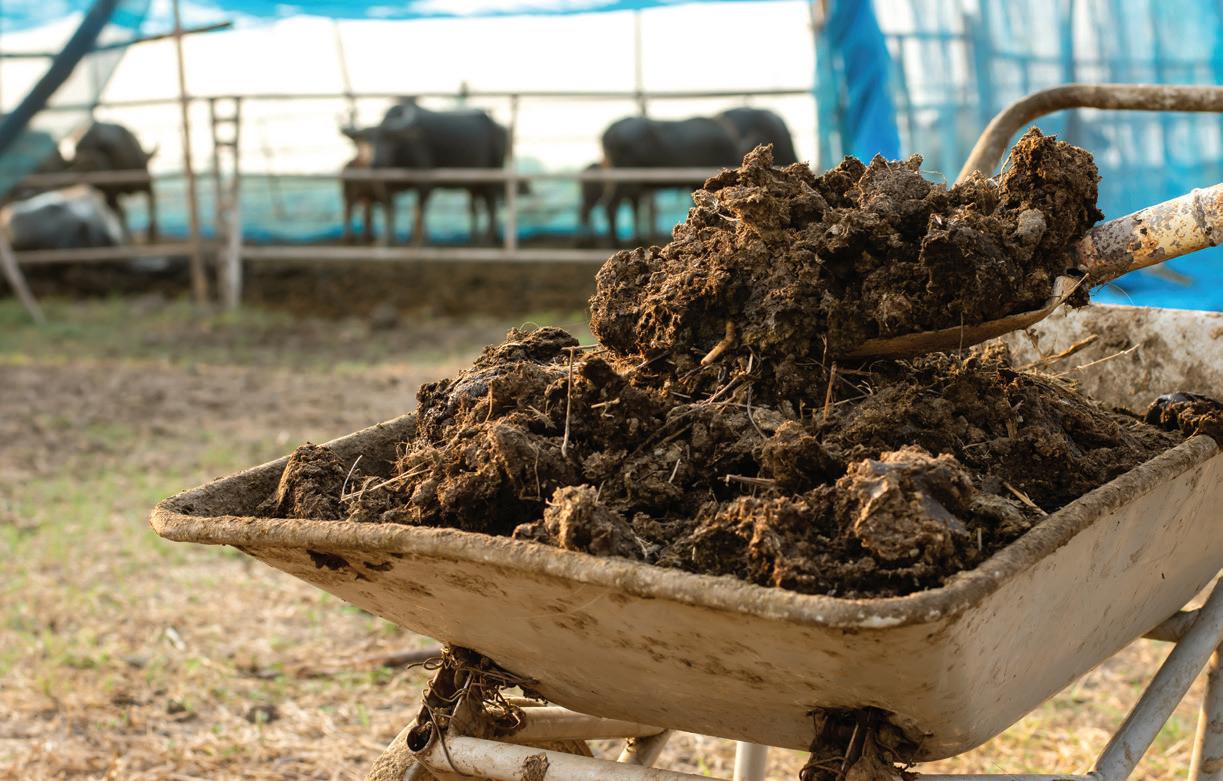
But I also spent a fair amount of time around another cousin’s beef cattle, and it was a different sort of smell. Similar, but different. I first noticed this because I’d associate the smell with one cousin






or the other, depending on the aroma. I didn’t really give it much thought until one day when I was kayaking on the river near our summer cabin. I was overwhelmed by memories of one of my cousins while going around a bend. The field was up on a bluff, and I couldn’t see the cattle, but I definitely smelled their field perfume. As the bank lowered and I could actually see the animals, I saw that they were indeed beef cattle! I have to admit, that was the extent of my scientific method, but I swear I can detect a difference.
I have no clue why this would be, but I’m curious if others have noticed something similar.



 MARY H. GAPLAND, MARYLAND
MARY H. GAPLAND, MARYLAND

C LOCKWISE FROM TOP : A DOBE S TOCK /V ANDER W OLF MAGES ; A DOBE S TOCK /S TEVE O EHLENSCHLAGER ; A DOBE S TOCK /994 YELLOW
May/June 2023 8
A Step Back in Time
Do you have any idea how rewarding it is to spread homemade butter on homemade buttermilk bread? Most of my generation may not know, but ask my kids — they think they’re truly living the life.
I feel like we took a step “backward” when we bought Pepper the Jersey cow. How convenient it is to run to the store and buy milk and butter off the shelf. Buying those items instead of milking a cow and making butter would give me so much extra time. But I enjoy the step back that we took. It adds so much simplicity to our lives. My children will grow up with many memories of a sweet milk cow, raw milk, fresh butter and bread, and family togetherness.
Adding a milk cow to our homestead wasn’t a light decision. I knew it would take time and dedication, but I haven’t regretted it, and my children haven’t complained about the extra work. We’ve all found so much joy by jumping into this venture. Not only do we love Pepper, but we also love her milk and all its possibilities.
My oldest child is a champ at making butter. It’s something she’s wanted to do with raw milk for years. She’s made most of her batches with my mixer, but she’s also used a hand-held Mason jar butter churn. The kids all take turns churning. The younger two are unimpressed with how long it takes to make any progress, so they’ll stick the butter in the fridge for a while before churning some more.
Once it’s fully butter, the kids are so excited to pull the churn off the jar and peek inside. They’ve had even more fun molding their own little butters after my oldest showed them the draining and rinsing procedure. It may take some more age on each of the younger two to be able to hand-churn it in one sitting, but they now know how fun it is to reach the end result. My oldest has made several batches of butter already. She molded one batch into an adorable turkey for the Thanksgiving table. With each batch of butter, we get a decent amount of buttermilk. Our rst jar of buttermilk went to the cats. The next time, I was determined to use it. I found a wonderful recipe for buttermilk bread and a recipe for buttermilk rolls. Waste not, want not. Mastering some beginner cheese and yogurt recipes is next on our list.
Not everyone’s picture of a rewarding life is the same. Ours looks like our youngest child nuzzling the face of a sweet Jersey cow, our oldest in the kitchen making butter, and our son hauling hay to the bunk. How you raise your kids in uences what the next generation will appreciate and what type of work ethic they’ll have. Don’t be afraid to take a step back with your family to a simpler life.
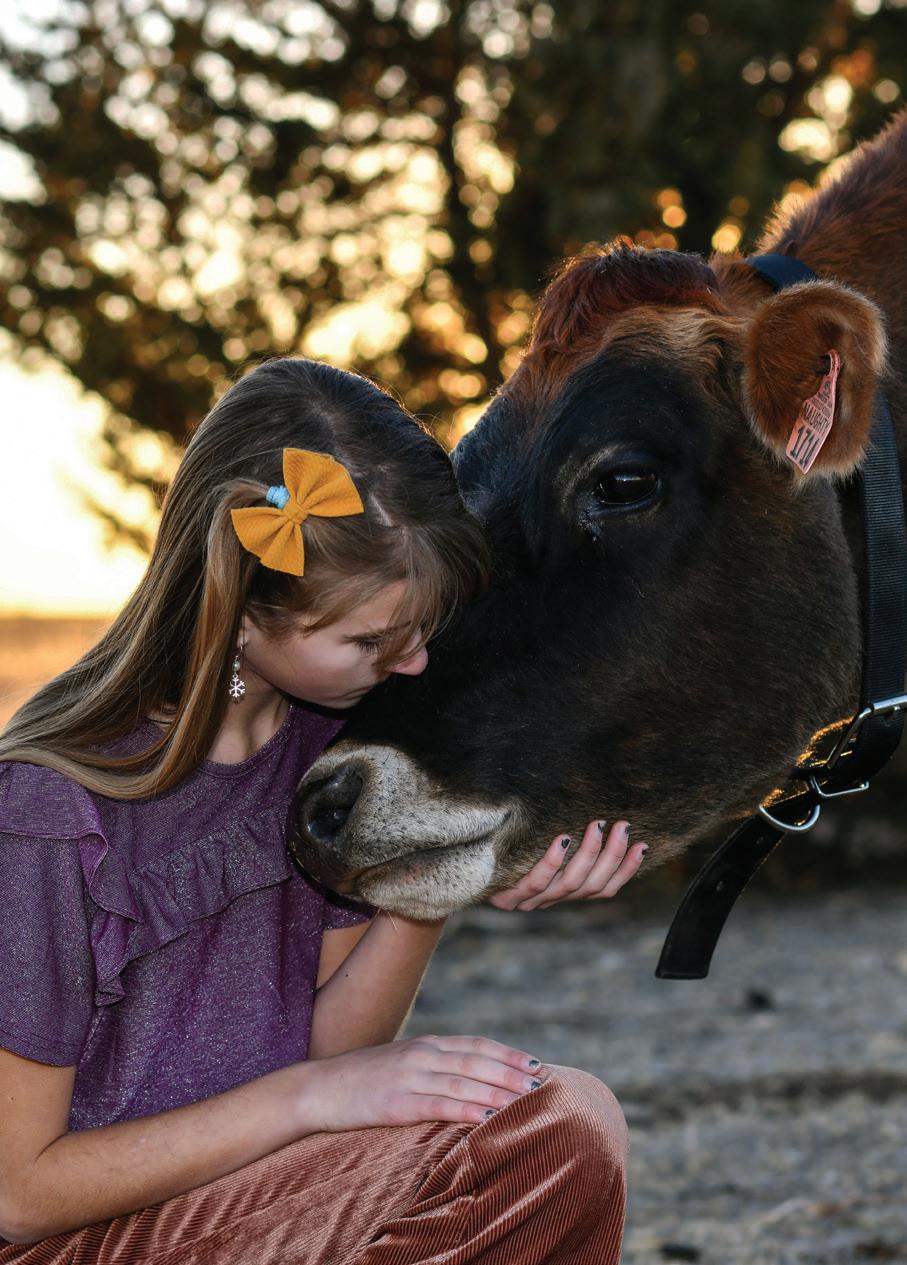 ASHLEY WALKER VIA EMAIL
ASHLEY WALKER VIA EMAIL
Looking For
BUTTONS
I’m interested in collecting buttons. If anyone has old or new buttons they’d like to give away, please send them to me.
Gulo Maxson
410 N. 75th Ave.
Pensacola, FL 32506
PEN PALS
I’m a new grandma who would love to send and receive letters from ladies of all ages. I love to read and talk about books. I love to cook and try new healthy meals. I’m learning to knit and sew. I love to explore small towns. I hope to make lifelong friendships.
Julie Petty
P.O. Box 508
Comanche, TX 76442
BOOK
I’m looking for an old book titled Farm Homes In-Doors and Out-Doors by E.H. Leland, preferably an original copy, copyrighted 1881.
Rachel Bennett
4221 Day Road
Lockport, NY 14094

PEN PALS




I’m looking for pen pals. My interests are birdwatching, stamp-collecting, drawing, playing badminton, embroidery, classical music, organic farming, and nature.
Carolina Parks
P.O. Box 88 Woodburn, KY 42170
Share Your Thoughts
We welcome letters from our readers. If you’d like to comment on an article, share your opinions, or submit a “Looking For,” send us an email (with photos, if available) to Letters@Grit.com, or send a letter to: GRIT Mail Call, 1503 SW 42nd St., Topeka, KS 66609. Electronic submissions are more likely to receive a timely response. Readers assume all risk associated with publishing a mailing address, requesting correspondence, and responding to correspondence requests in GRIT magazine.
Mail Call A SHLEY W ALKER
www.Grit.com 9
Rockin’ Out
“Solid Stonework: Building Thrifty Fence Posts” in the March/April 2023 issue shows how creative the technology of gabion boxes has become. This technology was often used during war as a means of building stout barriers. Now, it’s found in many building sites, from retaining walls to channelizers. It’s so pleasant to see this technology at use on at least one small ranch.
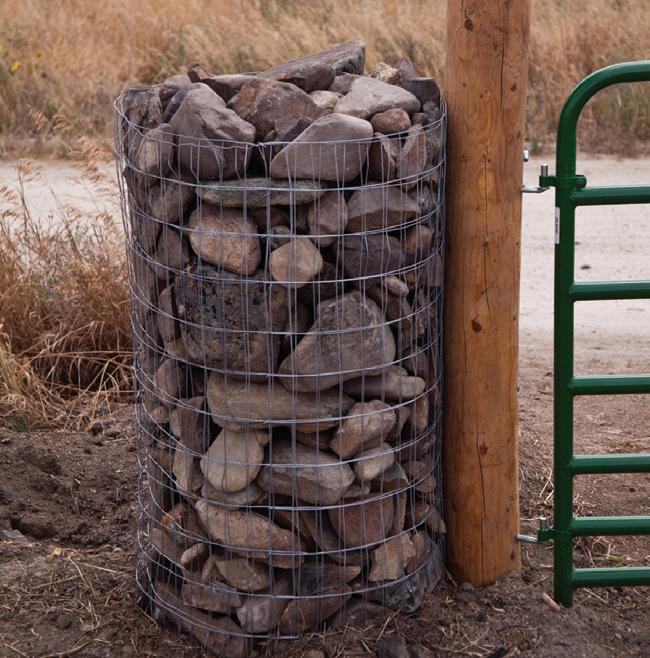 G rit READER VIA EMAIL
G rit READER VIA EMAIL
Learning at a Young Age
I had a door-to-door route via bicycle (and, in the last few months, a red, 5-horsepower Cushman motor scooter) that covered my small southwest Texas town and beyond the city limits. I used two of the Grit shoulder bags to carry my papers, and it usually took Thursday through Saturday afternoon to do my run. This was my pitch:
“Hi! My name is Skipper, and I’m selling Grit newspaper: 40 pages, 10 cents,


news, fashion, sports, the Sunday comics on Thursday, and $40 worth of fiction a year.”
Having “my own business” at such an early age (I think I was 12 or 13) was not only a learning process for me in terms of responsibility to myself and others, but also a great early experience in the realms of concern for others and social transaction.

Mail Call
G rit READER VIA EMAIL F rom top L ibrary o C on G ress , p rints & p hoto G raphs D ivision F arm s e C urity a D ministration / o FF C e o W ar i n F ormation b L a C kan D -W hite n e G atives .; W ar D an D k ammy t hurman May/June 2023 10
PHOTOS TAKEN BY THE GRIT COMMUNITY
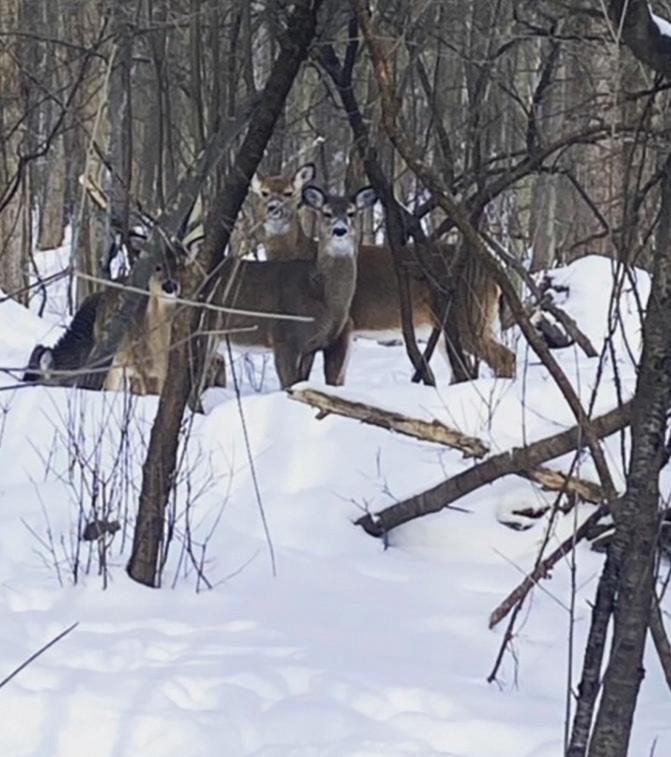

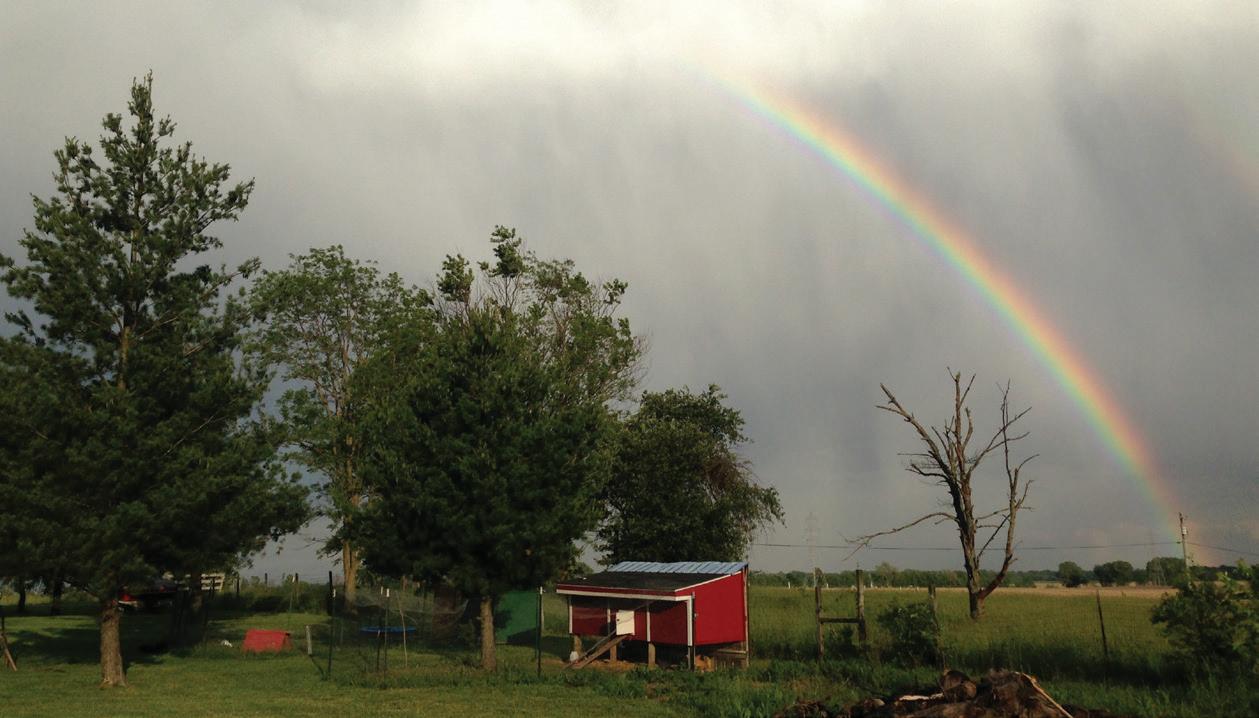
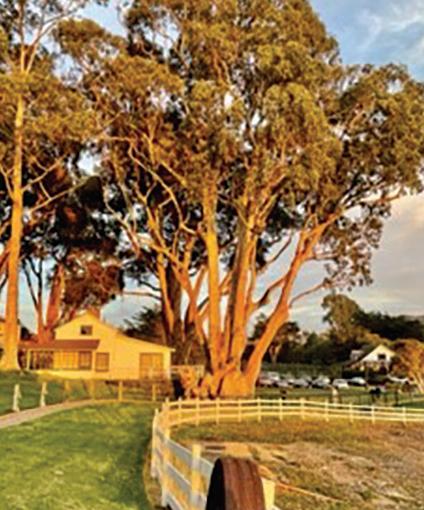




Weather Observations


Share your visual perspective! Post your photos at www.Facebook.com/GritMagazine, tag us on Instagram (@Grit1882), or email us at Letters@Grit.com. Share your best shots, and we just might select one of your photos for a future issue of the magazine.
Angel captures the quiet beauty of a snowfall in January, including some curious deer.
The sun sets over the Arizona mountains from Misty’s front yard.
After the rain, a rainbow appears against the clouds above Tammy’s farmstead.
The moon shines above Tamra’s blooming redbud tree, a sign spring is on the way.
C LOCKWISE FROM TOP RIGHT M ISTY B LOOM T AMRA L OCKARD L AURA G ERNDT B ACKE (3); T AMMY F LENNERY A NGEL K ENDRICK (2) www.Grit.com 11 Your View
From left: Laura admires the sunset from two different places: southeastern Pennsylvania and Carmel-by-the-Sea, California.
QUESADILLAS KICKED UP A NOTCH
Turn those cheese-filled snacks into full-blown meals with these recipes for quesadillas fit to feed a crowd.
By Donna Kelly
■Simply put, the quesadilla is a delightful package of avorful foods and melted cheesy goodness — all sandwiched inside crispy tortillas. It’s the ultimate blend of Southwest traditional foods and modern fare.
When the Spanish conquistadors arrived in present-day Mexico in the 16th century, they found the indigenous people
SHARE YOUR RECIPE!

eating what they described as “corn cakes.” These corn cakes were the ancestors of what we call “tortillas” today. They were used as a side dish for meals and as utensils — a sort of edible plate or spoon to hold other foods while eating.
“Quesadilla” loosely translates to “little cheese snack.” Since the popular lling for these bundles is cheese, the term ts.
I grew up a few miles north of the Mexican border in Tucson, Arizona, where quesadillas were a staple in most households. They were a cinch for us kids to make; we just added a few handfuls of shredded cheese to a tortilla, folded it, and cooked it in a skillet until the cheese melted and the tortilla browned. And with the invention of microwave
Do you have a favorite quesadilla recipe? We’d love to try it!


Share it with us on Facebook (@GritMagazine) or Instagram (@Grit1882).
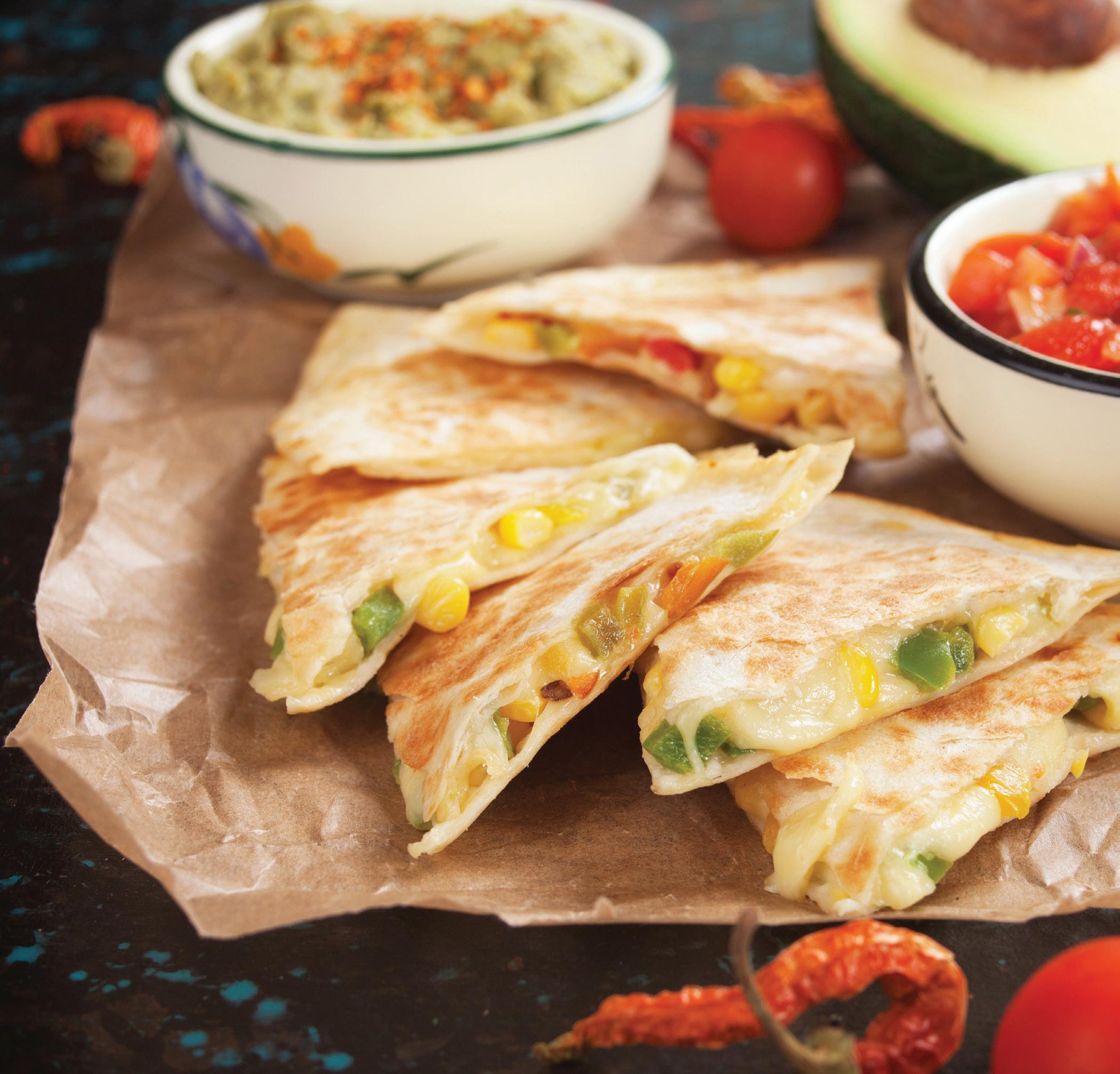
Comfort Foods May/June 2023 12
A DOBE S TOCK /I GOR D UTINA
ovens, quesadilla-making time went from minutes to mere seconds. They were the perfect after-school snack food.
The adults made fancier versions as appetizers for parties or with more fillings for a main dish.
Over the years, quesadillas have become increasingly popular all across the United States. The foods and spices of many diverse cultures are now often captured inside a quesadilla. The two essential ingredients are tortillas, which form the crisp outer crust, and cheese, which, when melted, is the necessary “glue” that holds the quesadilla together.
Quesadillas are so simple, delicious, and easy to make that their popularity has survived for centuries.
Cooking Techniques
Quesadillas can be made a few different ways. You can bake them, grill them, or cook them in a dry skillet. There are even specialty quesadilla makers available. All methods use high heat to ensure the crispiness of the tortillas.
Baking: To bake quesadillas, simply put the stuffed tortillas on a wire rack on a baking sheet and place the sheet in the middle of the oven. Bake for about 20 minutes at 425 degrees Fahrenheit. The actual baking time will vary according to how much filling is in each quesadilla. The more filling a quesadilla has, the longer it will take to bake. The goal is to have a quesadilla with fully melted cheese, heated filling, and crispy tortillas. Watch closely the last few minutes of baking to make sure the tortillas don’t become too brown. Nut- or cheese-crusted quesadillas require the baking method, because the nuts and cheese can fall off when you turn the quesadillas in a skillet.
Grilling: For grilling, place stuffed tortillas on a hot grill with very low flames, or on the opposite side of the grill away from the flames. Close the cover and wait 1 to 2 minutes, watching closely so the tortillas don’t become too brown. Carefully flip the quesadillas with a wide spatula, close the cover, and grill for another 1 to 2 minutes, or until the tortillas have browned and the filling is cooked through.
Toasting in a skillet: The best method for cooking quesadillas is in a dry, covered skillet over medium heat, or in a quesadilla maker. When using a skillet, it should be dry to prevent oily or burned quesadillas; don’t use oil or butter. This toasting method also ensures the filling will be cooked through, the cheese will be melted, and the tortillas will be crisp and browned.
I prefer making quesadillas with two flat tortillas rather than one folded tortilla, because this ensures more even cooking. Choose a skillet that’s just slightly larger than your tortillas. For example, I use a 10-inch skillet for tortillas that are 8 to 9 inches in diameter.
Start by placing a dry tortilla in a dry skillet that’s been heated to medium heat. Place the filling ingredients on the tortilla, making sure there’s some cheese both underneath and on top of the filling. This will help the quesadilla stick together. Place another tortilla on top. Cover the skillet with a tight-fitting lid. This will hold in the heat and cook the quesadilla all the way through without burning the outside. Let the quesadilla cook for 1 to 2 minutes. Check to see if the bottom tortilla has browned. If so, carefully flip the quesadilla with a wide spatula. Cover and cook for another 1 to 2 minutes, or until the bottom tortilla has browned, the cheese has melted, and the filling is heated through.
CROWD-PLEASER SHEET-PAN QUESADILLAS
This giant quesadilla is a crowdpleaser. Let your guests customize it with their favorite toppings. Yield: 12 to 15 servings.



1 pound ground beef, chicken, or meat substitute of choice
1 or 2 jalapeño peppers, thinly sliced (optional)
1 tablespoon ground cumin
1 tablespoon chili powder

1 teaspoon salt
1 tablespoon cayenne pepper sauce
2 tablespoons butter, melted, divided (or canola oil)
8 white or whole-wheat flour tortillas, 9 to 10 inches in diameter
Comfort Foods www.Grit.com 13 S heen A b A te S (3)
Crowd-Pleaser Sheet-Pan Quesadillas
Homemade Tortillas
If you’ve never looked at the ingredients list on a package of store-bought tortillas, you should. Forgo the additives and make your own — authentically prepared with lard — from wholesome ingredients. Yield: 12 tortillas.
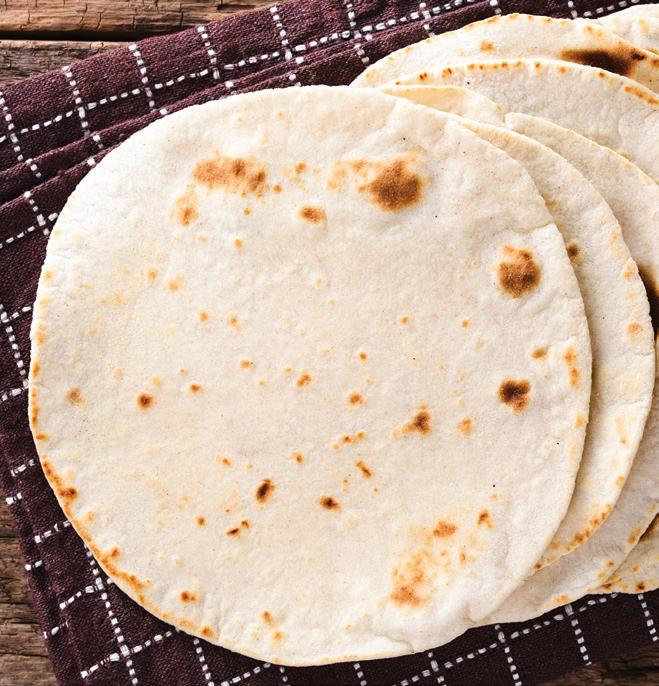
3 cups all-purpose unbleached flour
2 teaspoons baking powder

1 teaspoon salt
4 to 6 tablespoons lard, cold and coarsely chopped 11⁄4 cups warm water
1. In large bowl, combine flour, baking powder, and salt. Using pastry blender, cut in lard until mixture resembles coarse crumbs. Add warm water, a little at a time, to form dough that’s soft and no longer sticky. (Don’t use hot water.)
2. Turn dough onto floured board, and knead until soft and pliable, 2 to 3 minutes. Divide dough evenly into 12 portions the size of golf balls. Cover with a linen towel, and let dough rest for at least 10 minutes.
3. Dust each ball with a little additional flour, and roll out with rolling pin or palote as thinly as possible without tearing, 1⁄16 inch or thinner.
4. Heat griddle, comal, or cast-iron skillet over medium-high heat. (Don’t use a very hot griddle, or the tortillas will cook too quickly.)

5. One at a time, lay tortillas on hot griddle. Let brown for a few seconds on one side, and then flip and brown other side. Each side should be nicely speckled.
6. Place cooked tortillas on a towel or in a tortilla warmer to keep warm while you cook the remaining tortillas.
8 ounces pepper jack cheese, shredded 8 ounces sharp cheddar cheese, shredded 1 cup cooked black beans
1 cup corn kernels
Salsa, sour cream, sliced green onions, diced avocado, and sliced olives, for topping (optional)
1. Cook meat in a large skillet over medium-high heat until lightly browned, breaking into small bits as it cooks. Add onion, jalapeño (if using), cumin, chili powder, salt, and pepper sauce, and cook another minute. Remove skillet from heat.
2. Brush a 12-by-16-inch baking sheet with 1 tablespoon melted butter. Lay 2 tortillas on one long side of baking sheet, so they’re lying side by side and not overlapping, halfway on pan and halfway hanging off. Repeat on
other long side. Place 1 tortilla on each short side, halfway on pan and halfway hanging off pan. Place 1 tortilla in center to cover any remaining bare pan.
3. Toss cheeses together in a bowl. Scatter half of cheese mixture over tortillas. Spoon meat mixture on top, spreading evenly over cheese. Scatter beans and corn evenly over meat mixture, then top with remaining cheese.
4. Fold overhanging tortillas up and over filling, flattening them on top. Place 1 tortilla in middle, covering any exposed filling. Brush remaining melted butter all over top.
5. Place another baking sheet on top of tortillas, pressing down to flatten quesadilla. With the top baking sheet still on, bake 20 to 25 minutes, until tortillas are
Comfort Foods May/June 2023 14 F rom top A dobe S tock /I ld ; S heen A b A te S
Bacon Jam Quesadillas
golden-brown. Cut into squares and serve with toppings.
BACON JAM QUESADILLAS
The stunning flavor of bacon jam makes a heavenly breakfast quesadilla. Refrigerate extra bacon jam mixture in an airtight container for up to 2 weeks. Yield: 4 servings.
8 ounces bacon, finely diced
1⁄2 medium yellow onion, diced
1 medium shallot, diced
1⁄3 cup apple cider vinegar
1⁄4 cup dark brown sugar


1⁄4 cup maple syrup
8 white flour tortillas, 9 to 10 inches in diameter
4 ounces Monterey Jack cheese, shredded, divided
1 ‘Granny Smith’ apple, cored and shredded, divided
1 ripe avocado, peeled, pitted, and diced, divided
4 large eggs
1. Cook bacon in 10-inch skillet over medium-heat until lightly browned, stirring frequently. Drain all but 1 tablespoon rendered fat out of skillet, reserving fat separately.

2. Add onion and shallot to cooked bacon in skillet and cook until softened and browned, about 3 to 5 minutes. Stir in vinegar and cook until little liquid remains. Stir in brown sugar and maple syrup. Turn heat to medium-low and let simmer until mixture has thickened, about 10 minutes.
3. Pulse bacon mixture in food processor into very small bits. Wipe out skillet with a paper towel and set aside.
4. Lay 4 tortillas on a flat surface. Divide cheese in half. Sprinkle half of cheese evenly over 4 tortillas. Sprinkle one-fourth of the apple, one-fourth of the avocado, and 2 tablespoons bacon jam over
cheese on each tortilla. Scatter remaining cheese on top.
5. Slide 1 covered tortilla into skillet over medium heat. Place a remaining tortilla on top. Press down with a wide spatula to remove air pockets. Cover skillet, and cook quesadilla 1 to 2 minutes, checking often, until bottom tortilla is crisp and browned.
6. Flip quesadilla, cover, and cook 1 to 2 minutes more, or until tortilla is lightly browned. Repeat this process for remaining quesadillas.
7. Add 2 tablespoons reserved bacon fat to skillet. Turn heat to medium-high and cook eggs sunny-side up or to your liking. Top each quesadilla with an egg and drizzle more bacon jam on top. Serve immediately.
Comfort Foods www.Grit.com 15
See #18 on page 63
This excerpt is from Quesadillas by Donna Kelly (Gibbs Smith).
This easy-to-use book includes:
• Welding techniques for simple, practical repairs and small artisan home projects
• Safety and protective gear
• Workshop set-up plans
• Basic equipment and upkeep

• Basic welding types, including arc and MIG

• Common mistakes and troubleshooting


• Project ideas
• Instructional photos showing process details for successful results
• Tons of quick tips and welding hacks to give beginners a strong foundation to improve upon

Order today and get welding!
Item #11797 $16.99
Order by calling 866-803-7096 or visiting Store.Grit.com Promo code: MGRPANZ2. Price does not include shipping and handling. with this STEP BY STEP Beginner’s Guide! Learn to Weld
8 Reasons TO EAT YOUR GREENS
Plate
up flavor, nutrition, and a pop of color by learning to grow and cook with leafy greens.
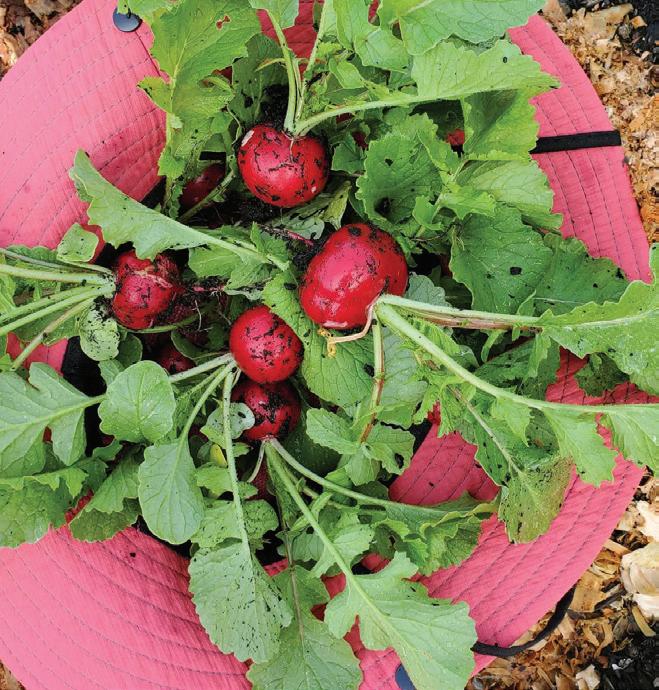
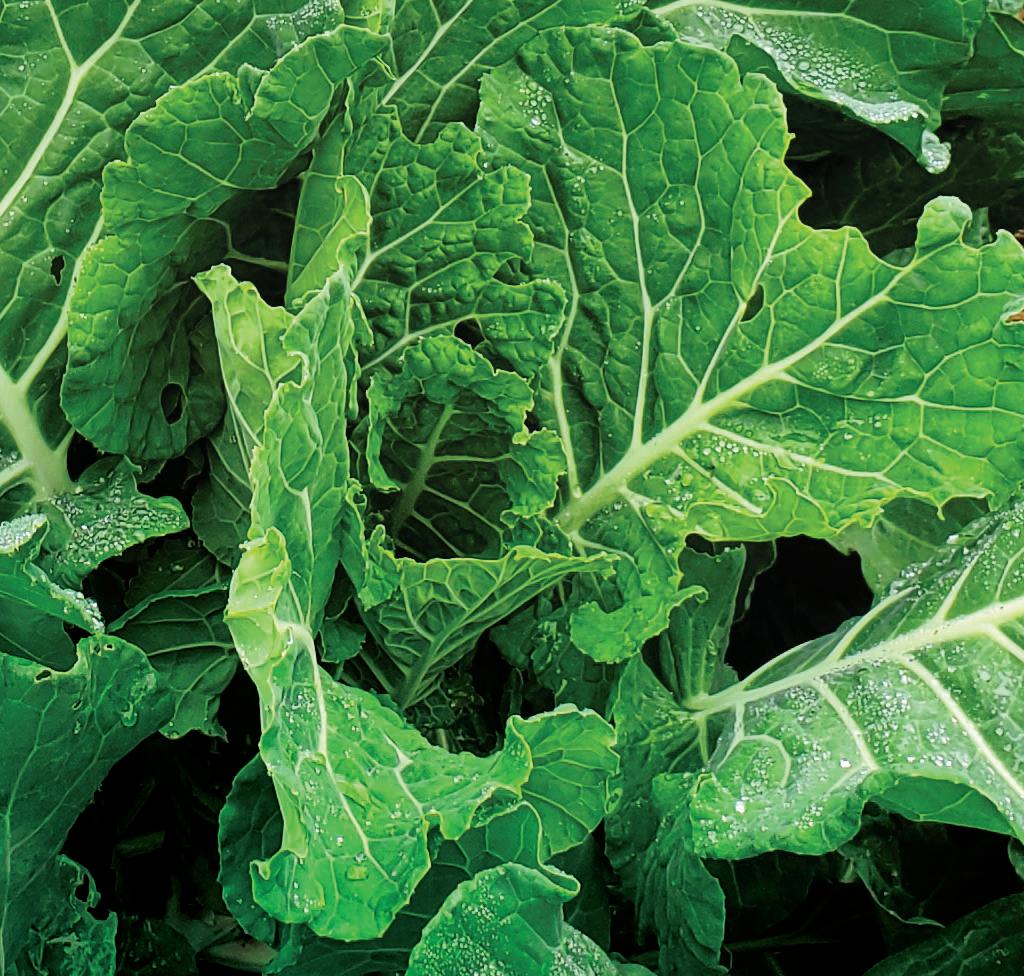
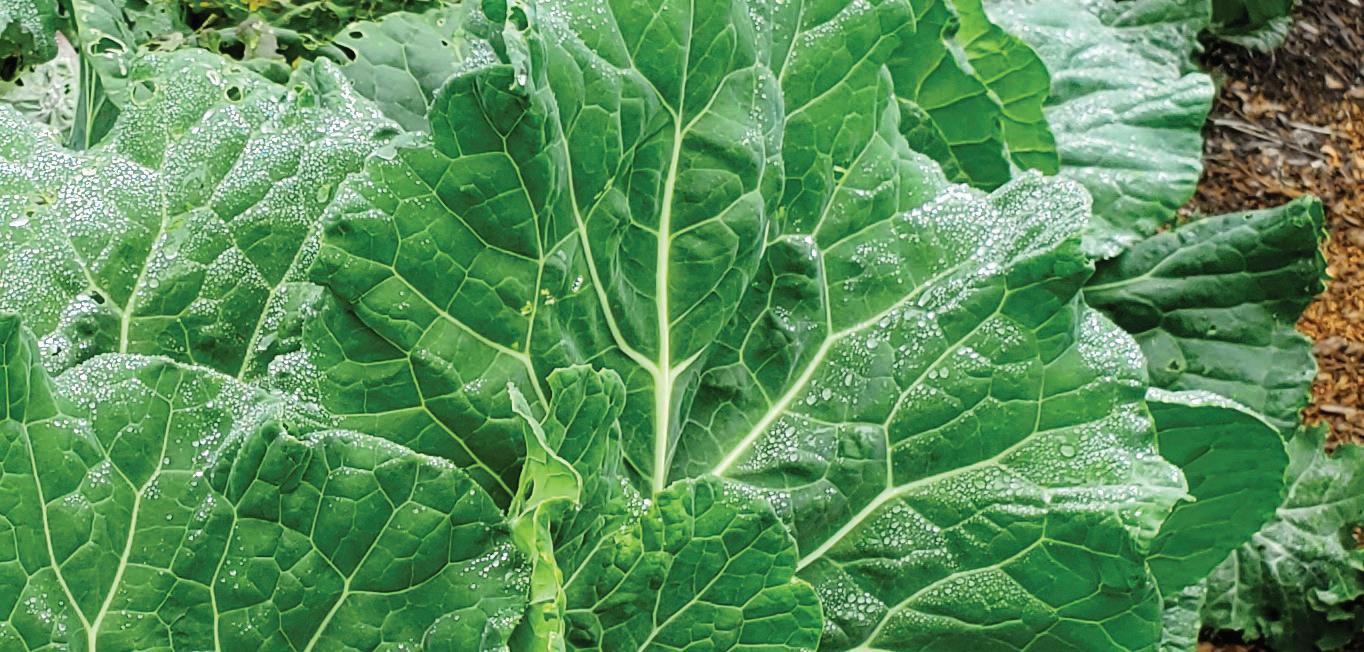 Story and photos by Kristina Seleshanko
Story and photos by Kristina Seleshanko
Years ago,
I watched a video about creating a survival garden in which the host said something along the lines of: “Leafy greens are nice, but they aren’t high-calorie enough to bother planting.” My reaction? Well, let’s just say I couldn’t disagree more. In fact, I think leafy greens should be part of everyone’s garden — especially if times are tough or you want to be more self-suf cient. Here are eight reasons why.
1. Leafy greens are packed with nutrients.
What the survival garden guy failed to consider was that leafy greens are much more nutritious than the other vegetables he focused on. Kale and collards are just two examples. One cup (67 grams) of raw kale contains 68% of the daily value (DV) for vitamin K, 6% of the DV for vitamin A, and 22% of the DV for vitamin C. Kale is also high in potassium, magnesium, and calcium. Collards are a great source of calcium and vitamins A, B9, and C, plus 1
cup (190 grams) of cooked collard greens has a whopping 1,045% of the DV for vitamin K! All leafy greens are also high in antioxidants, known to help prevent disease and ease the effects of aging.
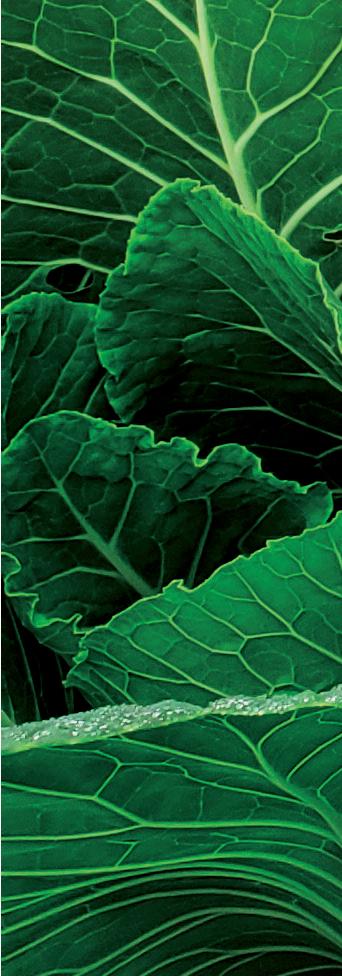
Nutrition experts tell us dark leafy greens are among the most nutrient-dense foods we can eat, and some even claim leafy greens offer more nutrition per square foot than any other food grown in the garden.

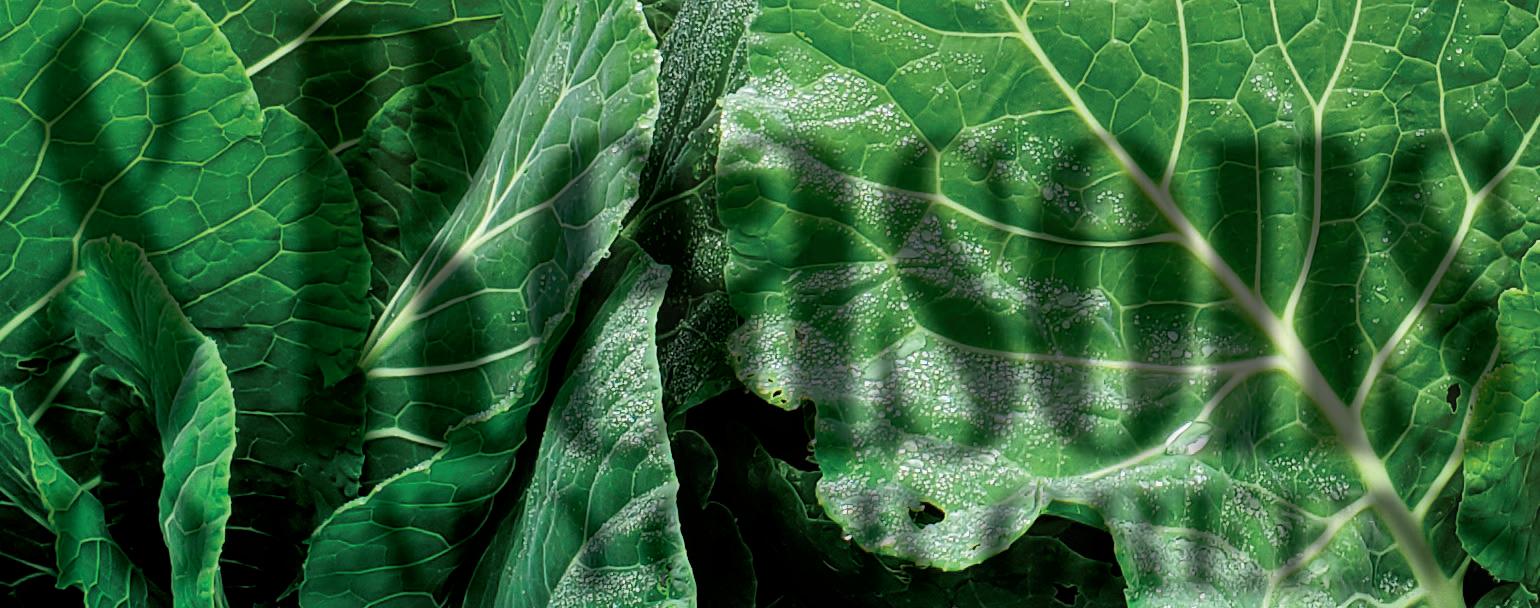


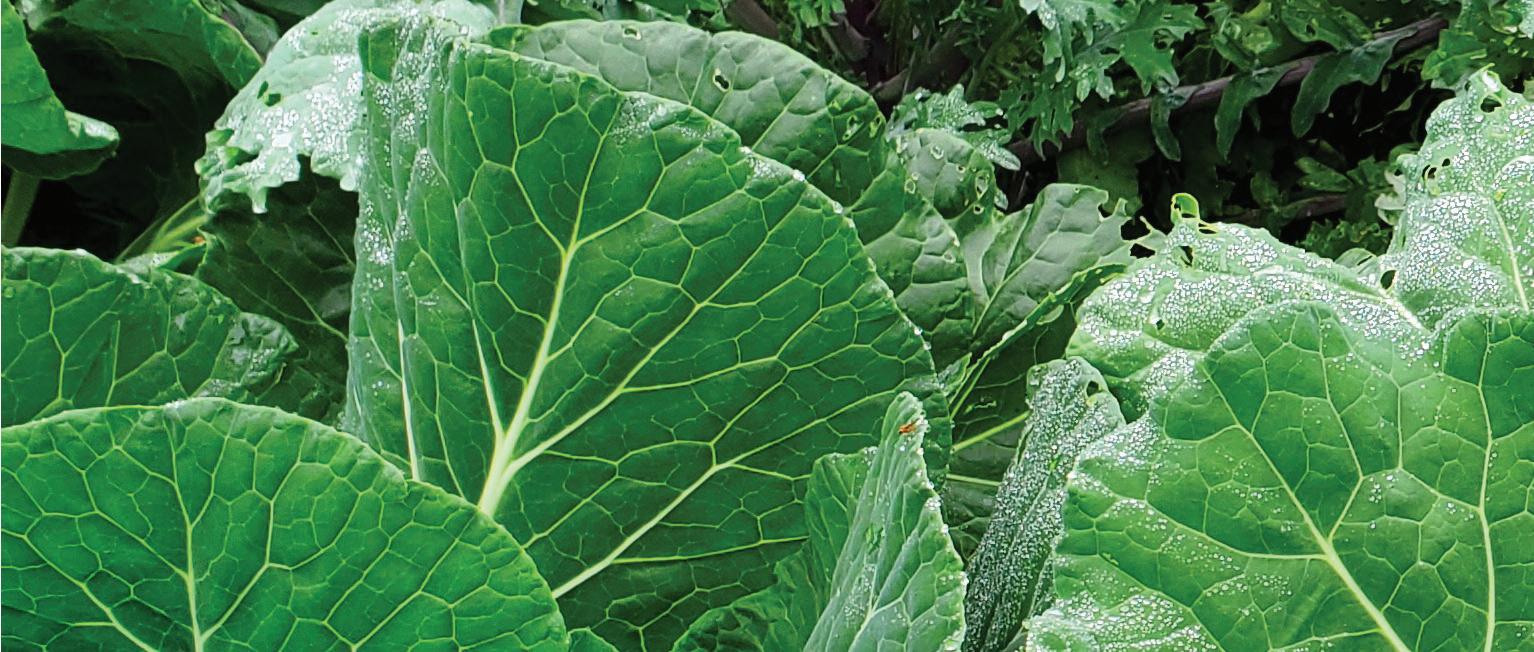
2. Greens come in a variety of flavors.

Hate store-bought kale? Me too! But leafy greens taste much better when you grow your own. In my experience, storebought collards are pretty bitter and tough, but when I grow my own, I pick the leaves when they’re young — and the avor and texture are fantastic.
When I want collards to have even less bitterness, I harvest them only after the rst hard frost. Late fall and winter greens are the tastiest, because the plants convert
some of their starches to sugar to protect their cells from freezing, and their avor improves as a result.

Different cultivars and types of greens vary in avor. Although I dislike dinosaur kale (also known as Tuscan or lacinato kale), I love the taste of the Russian kales (which are readily available from many popular seed sellers).
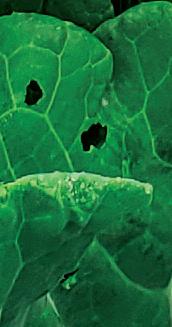
Sow Hoe
www.Grit.com 17
Don’t overlook the edible leaves of common vegetables.
Besides kale and collards, you can choose from many different types of leafy greens, including mustard, cabbage, bok choy, sorrel, arugula, orach, Swiss chard, Malabar spinach, New Zealand spinach, and dandelion greens. Lettuce is a leafy green too, although it can be more nicky and is less nutritious than the other plants I’ve mentioned.
Plus, don’t overlook the delicious leaves of common vegetables. These include turnip, beet, and radish greens; broccoli leaves; and cauli ower leaves. Some may be off-putting because of their slightly prickly texture, but the prickles disappear as soon as they’re cooked. I’m especially fond of these plants, because you get two different types of food — greens and vegetable — from the space it takes to grow just one.
3. They take up little space in the garden.
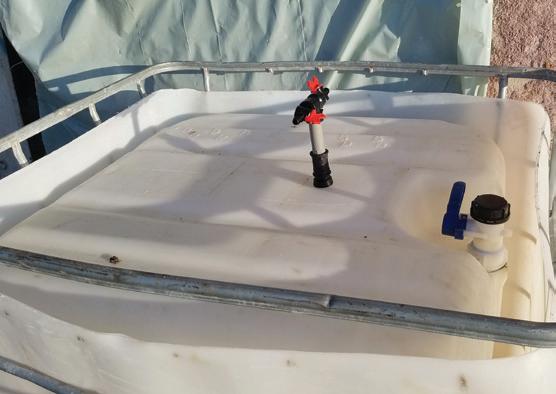

Unlike potatoes, corn, tomatoes, and many of the most popular home garden crops, leafy greens don’t require much room to grow. Even if you live in an apartment building in a big city, you can grow a pot of kale or collards in a sunny windowsill. These plants are shallowrooted, so they grow well in a container, a small raised bed, or a tiny plot — and
they add beauty to ower gardens and window planters. They provide quite a lot of food for the amount of space they take up. Just a few pots of kale can provide one person with fresh greens for most of the year.
4. Anyone can grow greens.
Leafy greens don’t take any special gardening skill to grow. They’re easy to start from seed. For gardening advice, see “Growing Leafy Greens” on Page 20.
5. These plants grow quickly and abundantly.


Most leafy greens are edible as soon as they sport more than three leaves. This means you can harvest early and often. Leafy greens are also among the earliest producing plants in a spring garden.
So long as you leave behind at least three leaves per plant when you harvest, leafy greens will continue to produce food until they die or go to seed. (Exceptions are greens that grow as a rm head, such as head lettuce or cabbage; they’ll provide only one main head per plant, and sometimes much smaller heads after the main one has been harvested.)
6. In many areas, leafy greens will survive winter.



Leafy greens are a good source of food during those lean months before spring

Sow Hoe Dr. T.H. Culhane gives instructions for building a small-scale biodigester, and how to make biogas at home using household waste. DON'T MISS IT Episode 179, How to Make Biogas at Home with a Biogas Digester www.MotherEarthNews.com/Podcast/Biodigester
You can easily grow a diversity of delicious leafy greens in small garden plots and patio containers.
May/June 2023 18
hits, because many of them can survive under inches of snow. Kale and collards are hardiest, with collards winning the grand prize for not minding snow.


7. They’re easy to cook.






My favorite way to cook leafy greens is to remove any large central stems, stack the leaves, roll them into a cigar shape, and cut the roll into thin strips. Then, I sauté the sliced greens in bacon drippings or olive oil, seasoning liberally with salt and pepper, until the leaves are a bright-green color. For really fantastic avor, I add some sautéed onions and chopped bacon. Supereasy, super-fast, and super-tasty.
Many leafy greens are also good eaten raw in salads or sandwiches, especially if picked young. Fresh greens can be made into pesto, or eaten in the same way you’d use spinach: as an addition to casseroles, quiches, enchiladas, pizza, soup, and stir-fries. Oiled and seasoned leafy greens can even be baked or dehydrated into tasty vegetable “chips.”
8. Finally, leafy greens are easy to preserve.




To freeze leafy greens, remove any thick stems, roll a stack of leaves into a cigar shape, and slice. Bring a large pot of water to a boil. Add the sliced greens; the water should return to a boil within 1 minute. (If it doesn’t, put fewer leaves in the pot.) Begin timing as soon as the water returns to a boil, blanching for 2 minutes, or 3 minutes for bigger, tougher leaves. Drain and immediately put the blanched greens into a sink lled with ice water. After the greens have cooled completely, drain them thoroughly, and then place them into freezer containers. Use frozen leafy greens within one year.

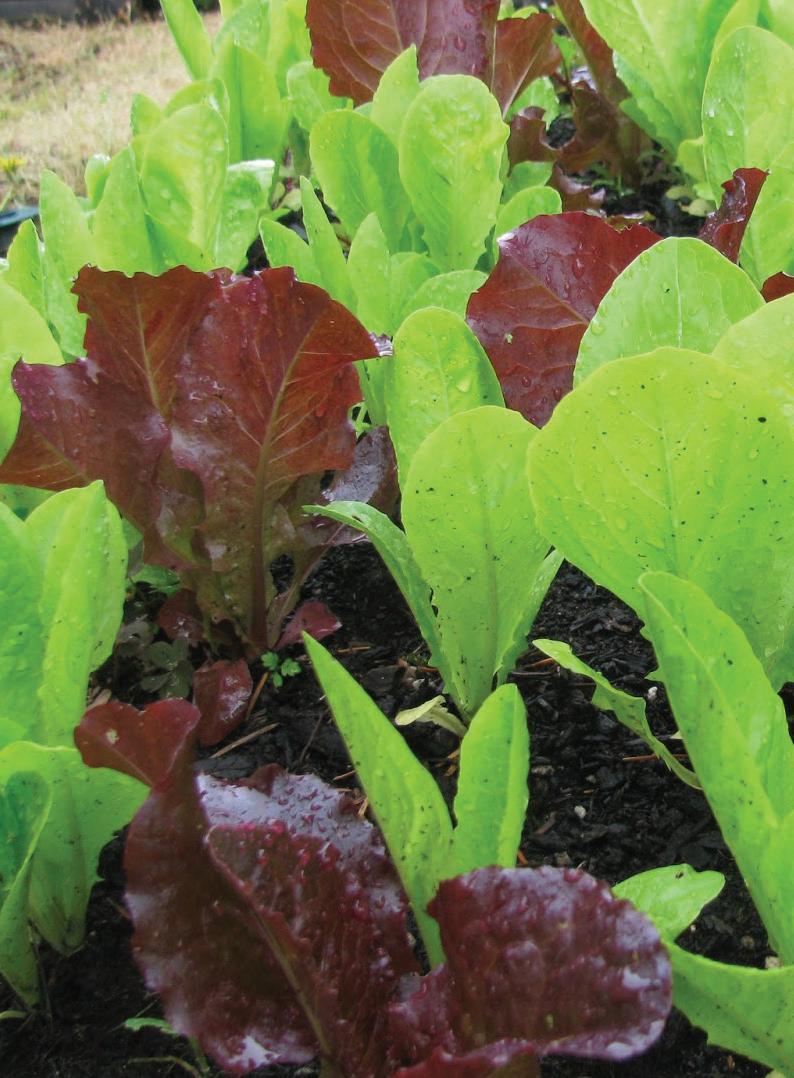
To dehydrate leafy greens, remove any thick stems and, if desired, slice as above. Place them in a single layer onto dehydrator trays and dry at 135 degrees Fahrenheit until the leaves are crisp and no moisture escapes when you tear them. Store them in an airtight container in a cool, dry, dark location. You can add dehydrated leafy greens to soups and stews, or powder them and add to any dish
for a boost of nutrition. Use dehydrated leafy greens within one year.






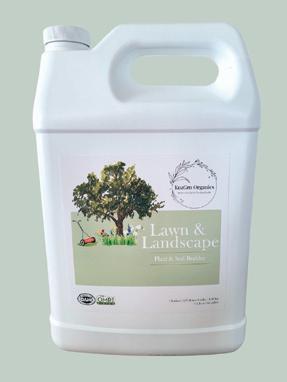
To can leafy greens, the National Center for Home Food Preservation says you’ll need about 4 pounds per nished quart jar. Use only freshly harvested leafy greens, and trim away tough stems. Place the greens in a steamer basket and steam 3 to 5 minutes, or until well-wilted. Optionally, you can add 1⁄4 teaspoon of noniodized salt to each pint jar, or 1⁄2 teaspoon to each quart jar. Fill the jars loosely with steamed greens and cover

Sow Hoe KozGro Treated Untreated B O O S T W O R M P O P U L A T I O N I M P R O V E G E R M I N A T I O N I N C R E A S E N U T R I E N T U P T A K E I M P R O V E S O I L F E R T I L I T Y B O O S T S T A L K & L E A F Q U A L I T Y B R E A K D O W N R E S I D U E w w w . K o z G r o O r g a n i c s . c o m P L A N T & S O I L B U I L D E R GardenGro Lawn & Landscape House Plant Elixir Agricultural Field Blend See #10 on page 63 www.Grit.com 19
From top: Roll a stack of leaves into a cigar shape, slice into thin strips, and then sauté the sliced greens in oil or drippings. You can harvest many greens as soon as they sport three or four leaves.
them with fresh boiling water, leaving 1 inch headspace. Process pint jars for 70 minutes, or quart jars for 90 minutes, in a pressure canner. Never use a water bath canner for processing leafy greens. If you live more than 1,000 feet above sea level, consult https://NCHFP.UGA.edu for adjusted processing times.


To freeze-dry leafy greens, remove any thick stems, slice if desired, and lay the leaves on trays. You can layer the leaves on top of each other, but don’t overload the trays. Process until the leaves have no cold spots. Powder the freeze-dried leaves and store them in Mylar bags with oxygen absorbers for long-term storage, or vacuum-seal them in canning jars for storage up to a year.
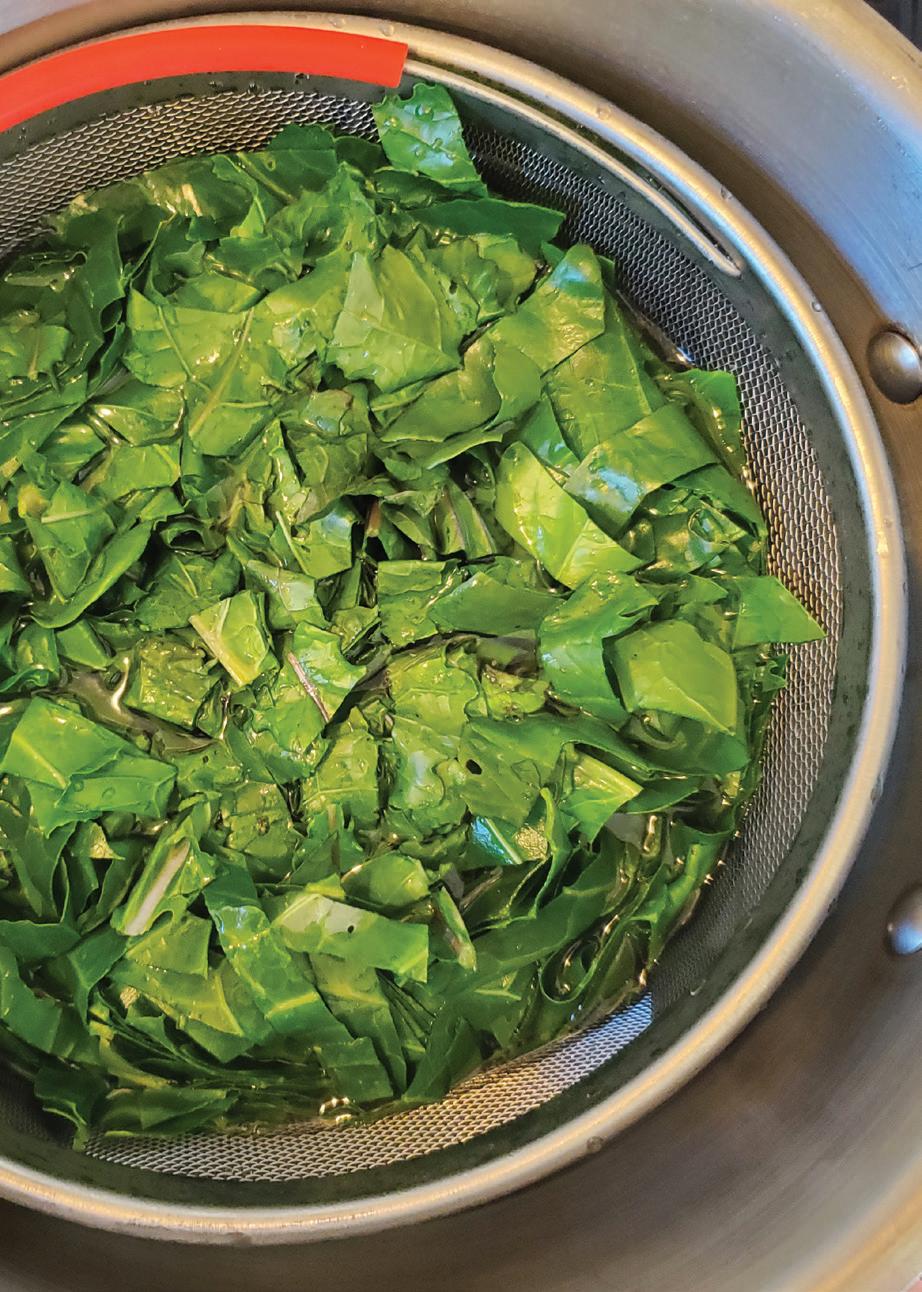
Kristina Seleshanko lives with her family on a mountaintop homestead where she grows plenty of leafy greens. Beet greens and collards are her favorites. She blogs about homesteading at www. Proverbs31Homestead.com.
Growing Leafy Greens
In spring, direct-sow the seeds of leafy greens into the garden once the soil is workable (not frozen and not overly wet). For a fall garden, check the seed packet for the days to harvest and add about four weeks. Count backward from your first frost date and plant on that day.
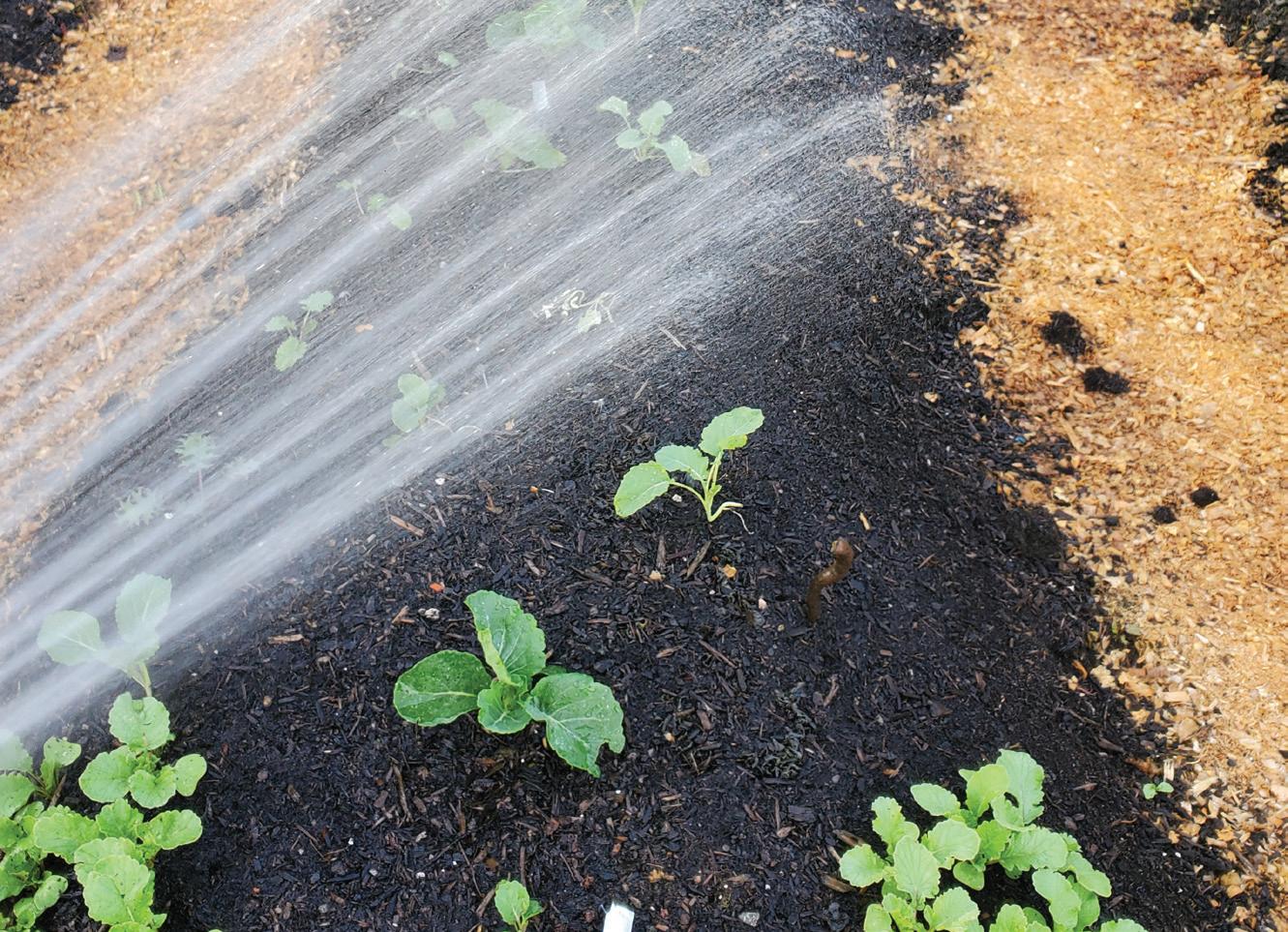
Although you should always consult the seed packet for planting instructions, the seeds of most leafy greens are small and usually should be covered by only 1⁄4 inch of soil. An easy way to sow them is to run your finger across the soil, making a small, shallow furrow. Sprinkle seeds into the furrow, then run your thumb along one side, lightly pushing a small amount of dirt back over the seeds. Pat the soil down firmly.
If your summers are hot, grow leafy greens only in spring and fall, or, if you grow them in summer, plant them in partial shade. Heattolerant leafy greens include Swiss chard, collards, orach, Malabar and New Zealand spinaches, kale, and mustard greens.
Keep newly planted seeds well-watered; don’t let the soil dry out. Seedlings will likely need thinning. The easiest way to do this is to snip off young leaves at the soil level until you have the spacing recommended on the seed packet. These snippings make great additions to salads. I’ve also successfully pulled seedlings from the soil and replanted them elsewhere.
You may also start seeds indoors 2 to 3 weeks before the last expected frost date. If you plant purchased seedlings, you’ll have far fewer cultivars to choose from.
Water leafy greens regularly. Keep the area weeded, remembering that most leafy greens have shallow roots, so take care not to disturb them. I like to use a high-nitrogen fertilizer, such as fish emulsion, every 1 to 2 weeks while plants are small. Later, you may switch to a complete fertilizer applied every other week or so if needed. Organic straw or grass clippings make a good mulch that will keep moisture in the soil and, over time, will break down and feed the soil.
Leafy greens may go to seed when temperatures fluctuate between cool and hot, or as temperatures rise in late spring and early summer. Bolting makes the leaves bitter. Watch your plants closely, and at the first sign of bolting, harvest and preserve the greens. You can also delay bolting (and thus bitterness) by snipping off seed stalks as soon as they appear. If you miss this opportunity, you can try to remove the bitterness by bringing a pot of water to a boil, adding the bitter greens, and boiling them for 1 minute. Drain and repeat until the greens taste better, using fresh water each time.
photos credit here
Water and weed leafy greens regularly. Be cautious when weeding, as most of these plants will have shallow roots.
Sow Hoe
May/June 2023 20
Be sure to wilt greens in a steamer basket before pressure-canning them.
All About CHICKEN EGGS




odd
shapes to production
 By Ashleigh Krispense
By Ashleigh Krispense
The ability

to produce your own food is an appealing skill in today’s society. A garden over owing with fresh vegetables and a coop full of friendly laying hens can bring a sense of peace and security.
While starting a ock of poultry and keeping it healthy does require some work, farm-fresh eggs right outside your back door are a wonderful commodity to have, especially as the cost of eggs uctuates. But
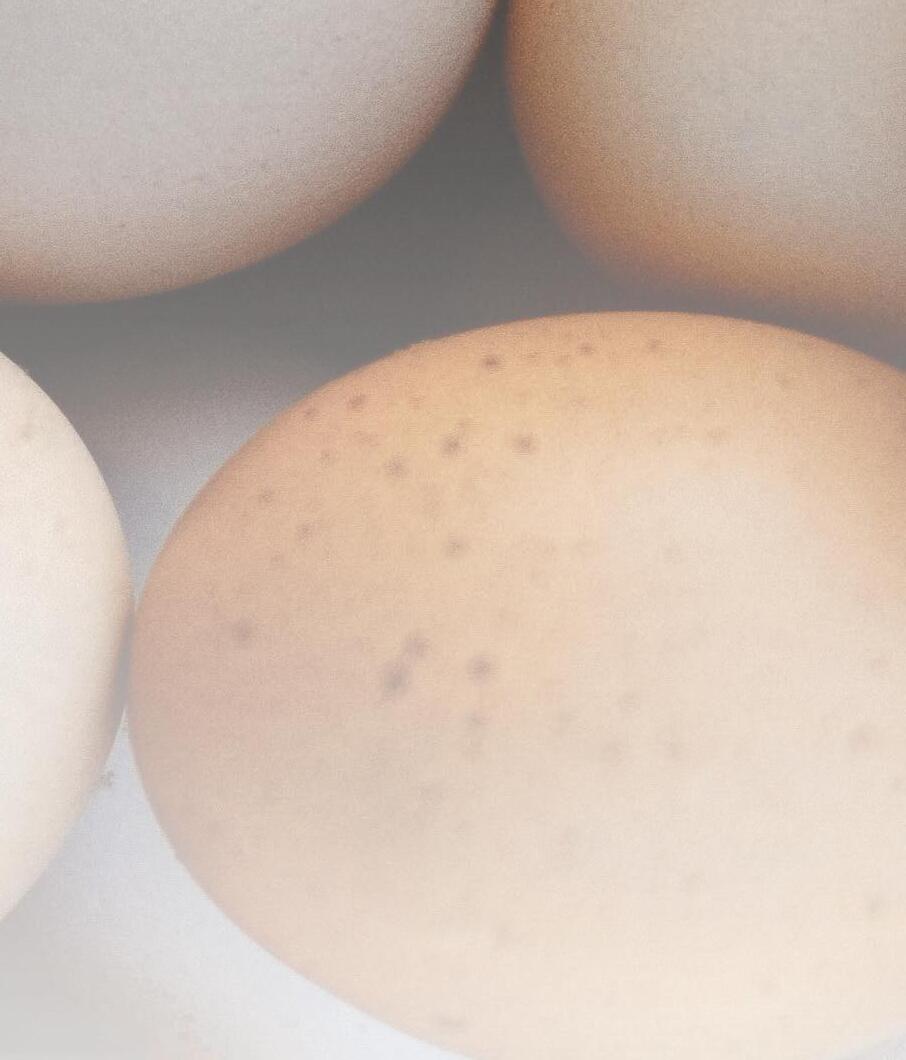


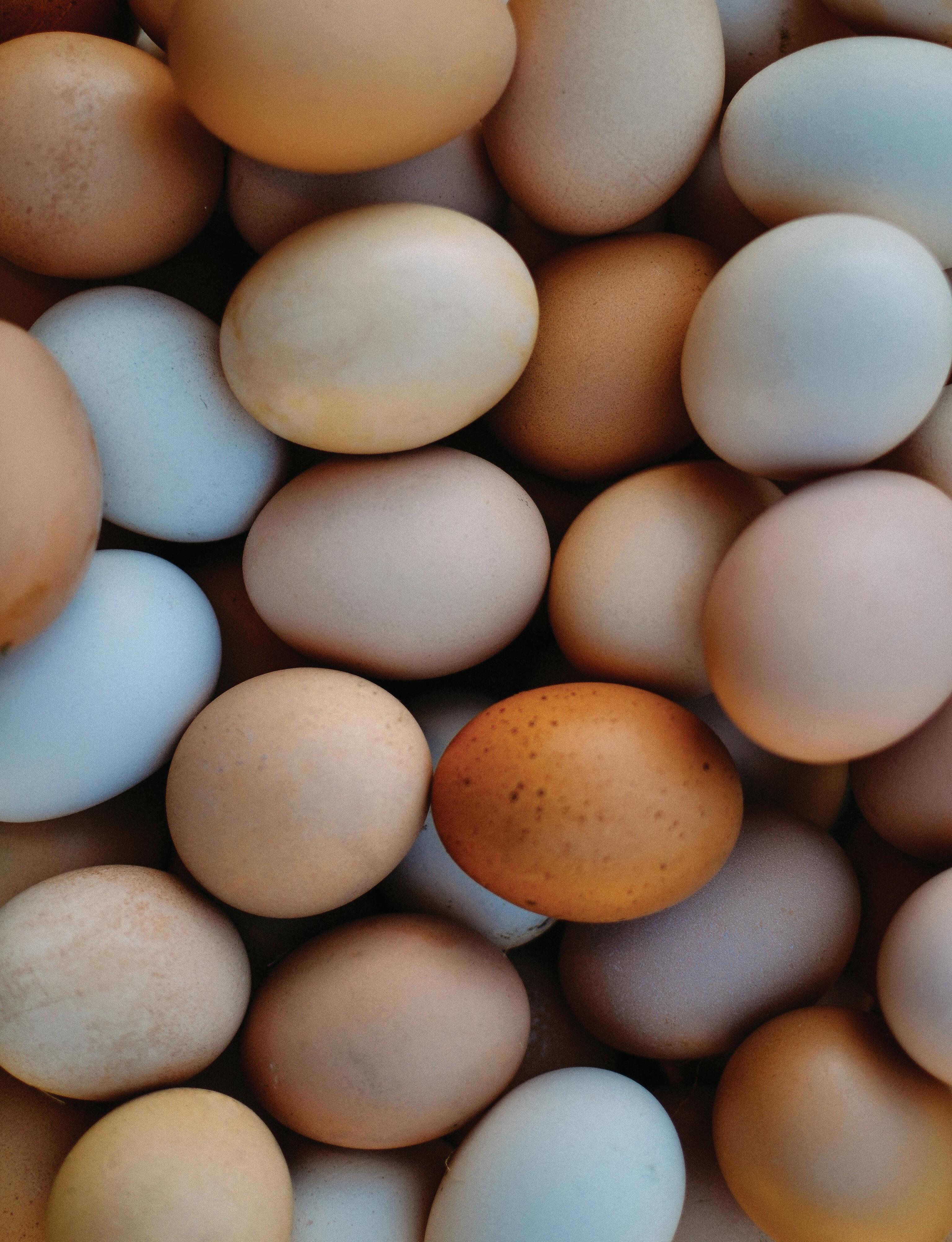
maybe you’re staring at your edgling ock that’s yet to lay a single egg and wondering, “What now?” Or, perhaps you haven’t even tackled the task of choosing your chickens and are feeling overwhelmed by the options. Either way, knowing what to expect from your layers will get you off to a strong start.
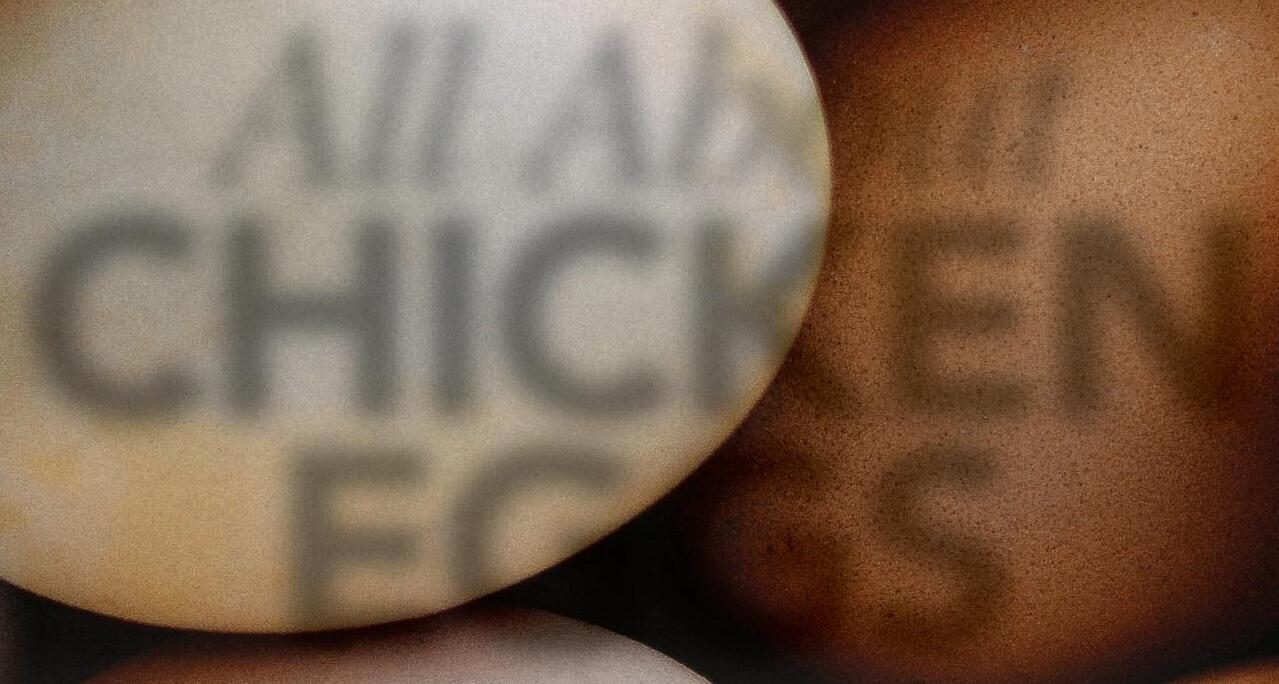



Choosing the Right Chickens
Knowing the intended purpose of your new ock can be helpful when determining

which breeds and characteristics are best for your family. The future of your ock is also something to consider, as not all breeds (such as hybrids) are able to reproduce purebred offspring. If you intend to breed and hatch poultry on your own, do some research and avoid breeds that aren’t capable of this, such as Freedom Rangers or Austra Whites.
You should also consider your environment when choosing chickens.
From
egg
qualms, here’s what to expect when your flock starts laying.
A DOBE S TOCK /V ALENTINE www.Grit.com 21
Cold- and heat-tolerance in birds is important, especially if you live in an extreme climate. If your winters are particularly nasty, choose breeds with rose combs instead of single combs, and with smaller wattles so they have less exposed skin at risk of frostbite. Anconas, Minorcas, Rhode Island Reds, Nankins, and Leghorns are all good choices for cold-tolerant birds. For heat-tolerant breeds, consider New Hampshires,
Brahmas, White Leghorns, Sumatras, Plymouth Rocks, Easter Eggers, and Andalusians. You’ll also need to consider the bird’s age, size, and disposition, and whether you want strictly egg-layers or prefer dual-purpose breeds.

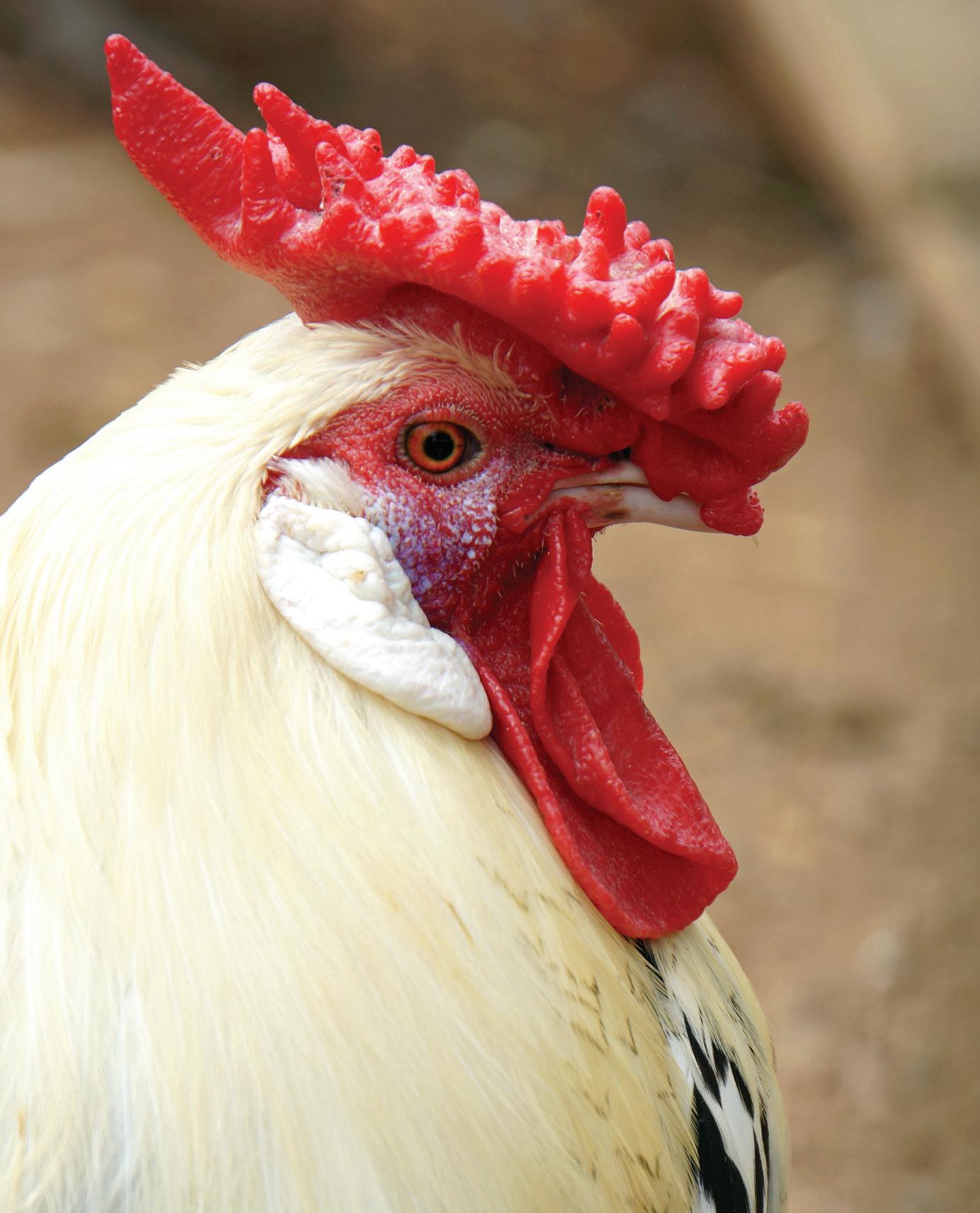
You can purchase chickens as fertile hatching eggs to be hatched in a home incubator, as day-old chicks shipped straight from the hatchery, or as started pullets that are generally at least 15 weeks
Fertility Versus Hatchability
old. For beginning chicken-keepers, day-old chicks are a good option, because they don’t require as much monitoring as an incubator full of eggs, nor will they be nearly as expensive to ship as started pullets. If you can find a few healthy, mature hens locally, you can often purchase them inexpensively, making them a good option to start your flock.
Poultry can produce eggs in a beautiful rainbow of colors, from brown and white to blue and green. And while eggshell color has no effect on the taste or nutritional value of an egg, it can be fun to have a variety of colorful eggs in your basket. Good options for brownegg layers include Rhode Island Reds, Wyandottes, Barred Plymouth Rocks, Dominiques, and Buff Orpingtons. For white eggs, consider White Leghorns. For colored eggs, look into Ameraucanas or Cream Legbars.
When Will My Hens Start Laying?
There’s nothing quite like the excitement of finding that first egg in a nest. Pullets will generally start laying between 16 and 24 weeks of age. If a flock doesn’t begin laying once the birds have reached the appropriate age, look for any signs of stress, such as constant preening, aggressiveness, pacing, or restlessness. Look for molting, which usually happens in fall but can occur at any time of year. Sometimes hens that have gone broody (nest-sitting) stop laying altogether. You’ll also want to check that your birds have the proper feed rations and are getting enough nutrition, that they aren’t sick or injured in any way, and that there are plenty of daylight hours to trigger their reproductive systems. Chickens need at least 14 hours
Fertility and hatchability are two terms that often get confused, but calculating either one can help you determine if you need to make management tweaks to your incubation. The fertility percentage is the number of fertile eggs divided by the total number of eggs set. Hatchability is the number of hatched eggs divided by the number of fertile eggs. If fertility is high, but hatchability low, the problem is likely somewhere in the incubation cycle. On the other hand, if overall fertility is low, the problem may lie somewhere in your breeding flock.
d enn IS J A rv IS F rom H A l IFA x , c A n A d A , cc b Y-SA 2.0 < H ttp S :// cre A t vecommon S org / l cen S e S / b YSA /2.0>, v IA W k med IA c ommon S
Birds that have a rose comb, like this Hamburg rooster, are good choices if you live in a cold climate.
May/June 2023 22
of daylight to produce eggs. During winter, egg production might begin to slow and then eventually stop as the days grow shorter.
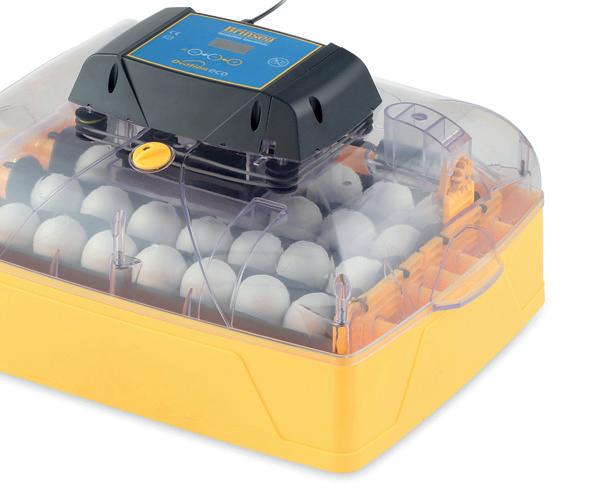










The entire egg-production process starts with a hen ovulating and pushing the yolk (ovum) into the oviduct. The egg is then made from the inside out as the egg white forms around the yolk and then the shell is produced. Production of the shell takes the longest amount of time, about 20 hours of the entire 24-to-26-hour

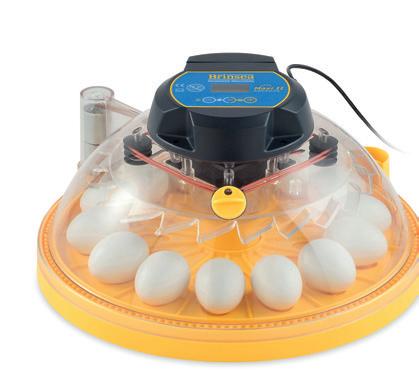
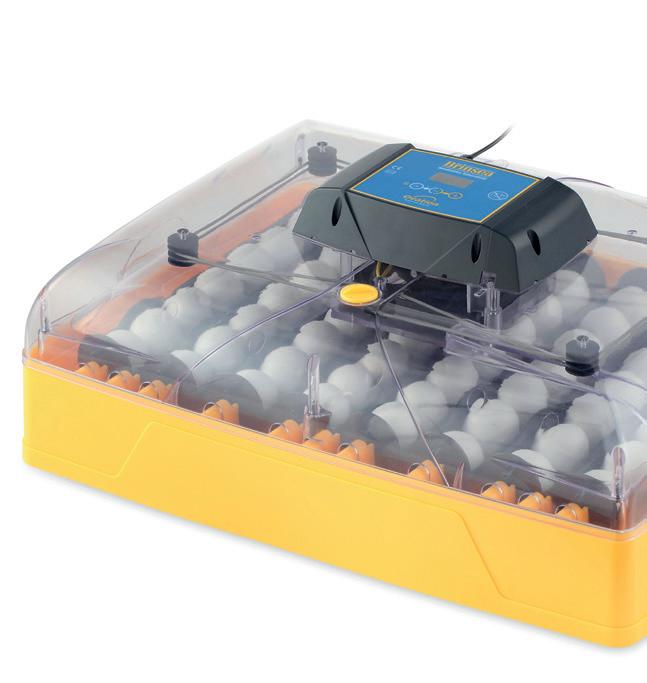





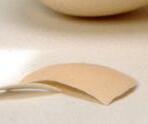










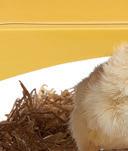






process. Within 30 minutes to an hour or more after an egg is laid, the chicken will release another ovum, starting the whole process over again.




Fertilization by a rooster isn’t needed for egg production, which is why a flock of hens can continue to lay eggs without any rooster present. If you’d like to breed and hatch chicks, though, you’ll need to get a rooster.









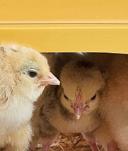

Even if you have a rooster, you can still eat freshly laid eggs without

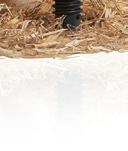
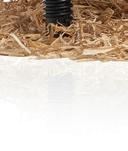
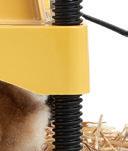 From top: Soft shells can mean a hen is stressed or lacking calcium. Young pullets might lay eggs with double yolks.
From top: Soft shells can mean a hen is stressed or lacking calcium. Young pullets might lay eggs with double yolks.
F rom top : A dobe S tock /I r n A ; A dobe S tock / mur A t A rt Incubation Specialists For more information www.brinsea.com or call 1-888-667-7009 Brinsea the world leading incubator manufacturer has a full line of incubators, brooders, egg candlers, starter kits and much more! All with 3 year warranty. Free Color Catalog Hatching your own chicks is fun, easy and reliable with Brinsea Ifahencould choose… See #4 on page 63 www.Grit.com 23
worrying about finding a developing embryo just don’t wait too long to gather them.
Odd Egg Surprises
In the beginning of their egg-laying days, young pullets can often lay some oddly shaped or sized eggs. For example, some might appear cone-shaped on one end or extremely small in size. You might even find some eggs that have a double yolk on the inside as the pullet is still working the bugs out of her egg-laying process. Oddly shaped eggs are something to be expected with new pullets and nothing to be concerned about. Hens lay eggs for 2 to 4 years (but can live up to 10 years), and then gradually stop.
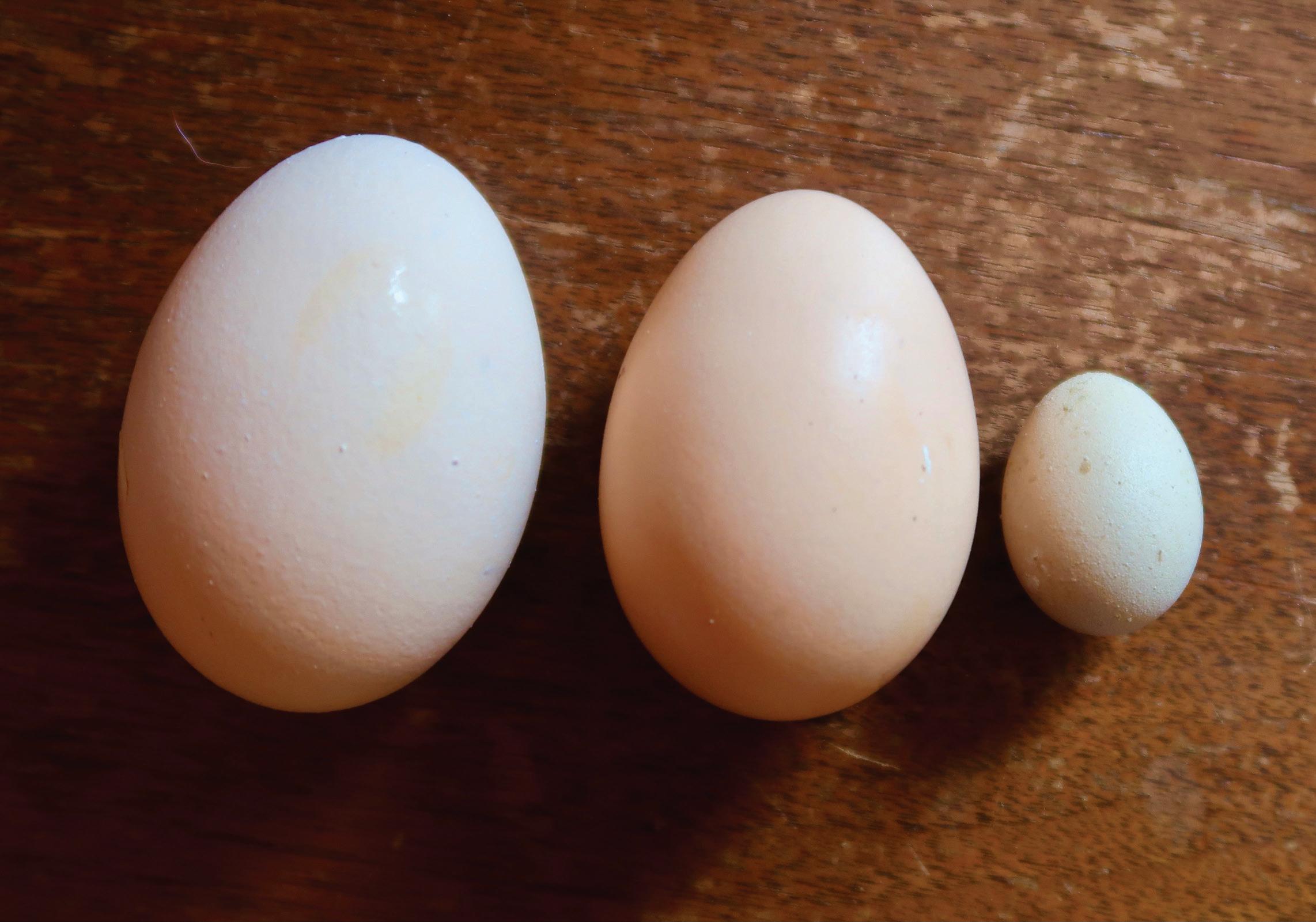
If you come across an egg that seems to have a very thin shell or almost no shell at all (a soft shell), the hen possibly endured some stress before laying and then laid the egg prematurely, or she might be lacking calcium or vitamin D. Laying eggs requires a good deal of
calcium. If a hen isn’t getting enough calcium in her diet, calcium can begin to leach from her bones and other calcium stores. To help prevent this, make sure the feed rations are appropriate for your flock. If you need to add calcium into their existing diet, you can mix crushed oyster shell directly into their regular feed or offer it free-choice in a separate dish.
Why Aren’t My Hens Laying?
At some point in your chicken-keeping journey, there may come a time when your daily egg count begins to dwindle or eventually stop. If you’re near the shortest days of the year, the slowdown in production is likely from the lack of daylight hours. You can let your flock have some time to rest before the birds begin laying again when the days grow long enough, or you can place an artificial light in the coop on a timer. Make sure it’s a warm-tinted light and hung from a safe space so as not to catch any of the litter or straw on fire.
At times, a failure to lay eggs might indicate a physical problem with a hen. If you notice a bird walking around like a penguin (with its bottom near the ground) or acting lethargic with no interest in eating or drinking, she might be egg-bound, meaning an egg is stuck in her oviduct.
If not attended to quickly, egg binding can eventually lead to death. After you’ve determined a hen is egg-bound, apply a water-based lubricant to her vent and very gently massage her abdomen. Be careful not to break the egg. You can also soak the chicken’s bottom in a warm Epsom salt bath. Fill a plastic tote or container with enough warm water to cover the lower body and vent of the bird and then add Epsom salt. (It’s not an exact science, but 1 to 2 cups of Epsom salt per gallon of water should do the trick.) Place the chicken inside and allow it to soak for 10 to 20 minutes. If it’s cool outside, dry off the hen and keep her warm and calm before soaking her again, if the egg
A shleigh K rispense
May/June 2023 24
When your hens start laying, you’ll likely see some odd things, including eggs that are different sizes. Given some time, pullets will work the bugs out of their egg-laying process.
hasn’t passed. If, after a few baths, the egg is still stuck, you’ll need to call a veterinarian.
What to Do with All Those Eggs
If the humorous effects of “chicken math” occur and you suddenly find yourself with more birds and eggs than you know what to do with, you’ll have to find some new ways to use the surplus. Thankfully, there are a ton of ways to use fresh eggs, including classic recipes for deviled eggs, egg salad, quiche, custard, breakfast muffins, and eggs goldenrod. A quick search online or through a recipe book will reveal
The Complete and Essential Guide to the Perfect Food
This isn’t a typical egg cookbook or guide to raising chickens. Epic Eggs takes a deep dive into the eggs themselves and tells you how to raise birds that will produce the best eggs you’ve ever seen. Homesteader and writer Jennifer Sartell looks at the eggs of the most common types of poultry you’d find in your backyard and explains reproductive systems, anatomy, and how and why eggshells are different colors. Illustrated with fantastic color photography, Epic Eggs addresses how to optimize living conditions and diet for the healthiest and most flavorful eggs; the process of grading and storing eggs; and the eternal washing debate. There’s also discussion of nutrition, baking, cooking, preserving, pickling, and dehydrating. The book ends with advice for homesteaders looking to create business plans, as well as a section on troubleshooting.
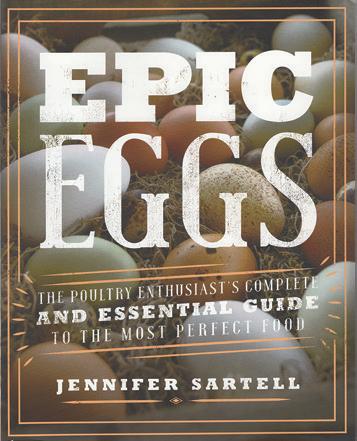
This title is available at Store.Grit.com or by calling 866-803-7096. Mention promo code MGRPANZ5. Item #8612.

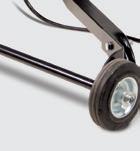






plenty of egg-based recipes to try. One of my favorites is my mother’s overnight breakfast casserole (recipe on Page 26).
If you’d like to save your eggs for later, you can preserve them using a variety of methods, including dehydrating, freezing individual yokes or whites in ice trays, pickling, freezedrying, and water-glassing. (Search for

“How to Preserve Surplus Eggs” on www. Grit.com to get instructions for storing your egg bounty.)

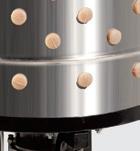
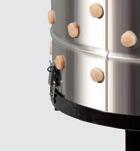




If you find your counters are still completely overrun with eggs, consider sharing with those around you. Friends and neighbors who don’t raise chickens will likely be thrilled to receive some farm-fresh eggs. For a gift-giving
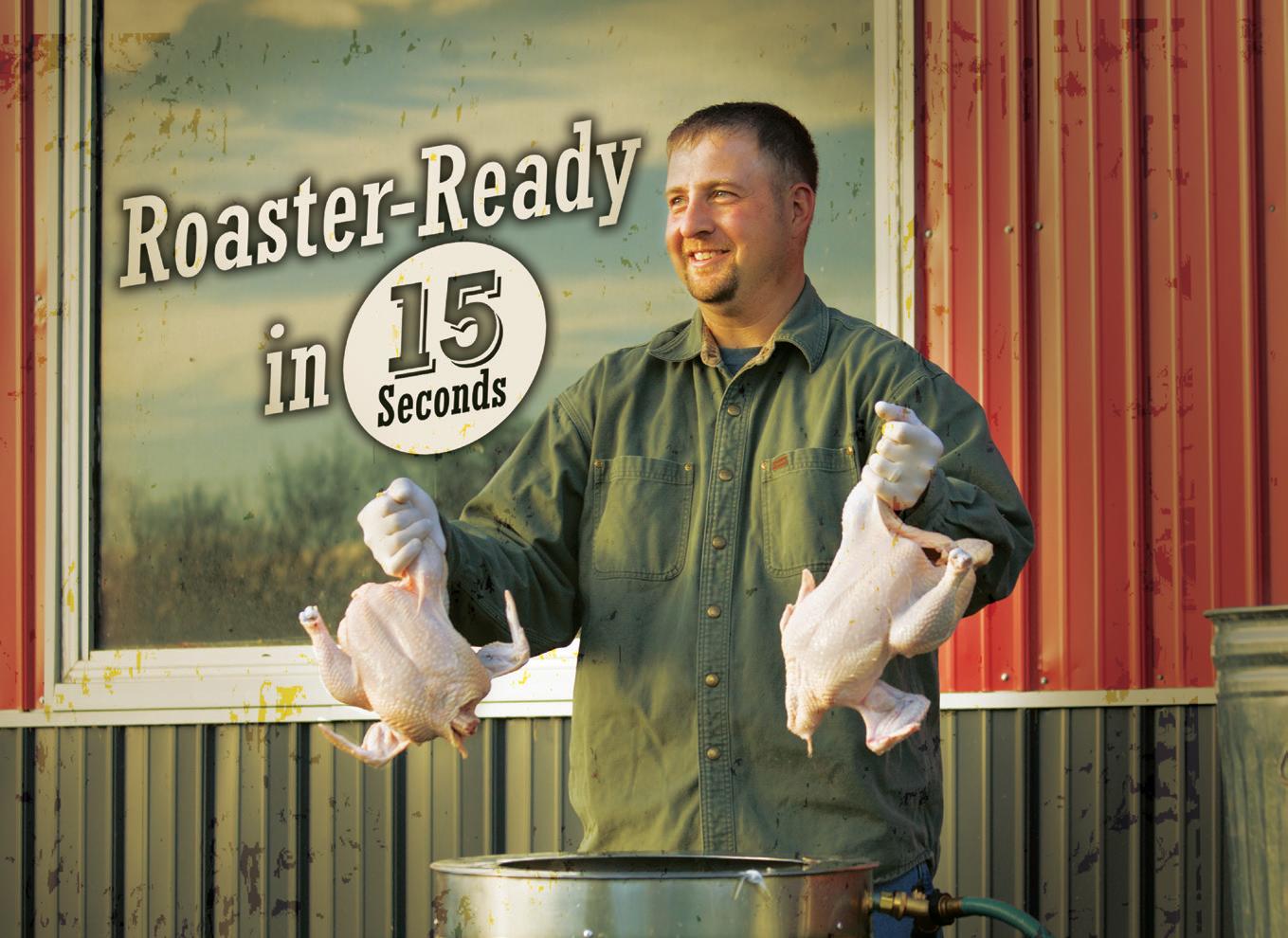
See #3 on page 63 www.Grit.com 25
PLANT A WALL SYSTEM

occasion, a basket of eggs makes a lovely gift, and you can add some extra flair by including homemade egg noodles and other goodies, such as homemade (or locally sourced) sausage, cheese, mustard, bread, and jams and jellies.
Local food banks are another great option for gracing others with your egg abundance. Before dropping them off, call ahead to find out if the food bank has specific directions for delivering fresh eggs.
CHERIE’S OVERNIGHT SAUSAGE EGG CASSEROLE
Originally given to her by a sweet friend at church, my mother’s delicious casserole can be prepared the night before for a quick and easy breakfast the next day. If you want to mix it up, dice up an onion and brown it with the sausage! Yield: 12 servings.
6 eggs
2 cups milk
1 teaspoon salt
1 teaspoon ground mustard
6 slices nutty bread, torn into small pieces
1 cup shredded cheddar cheese
1 pound pork sausage, browned and cooled partway
1. Mix eggs, milk, salt, and mustard in a large bowl. Stir in bread chunks, cheese, and browned sausage. Pour mixture into a greased 9-by-13-inch pan. Cover and refrigerate overnight.
2. The next morning, remove casserole from refrigerator and let sit 30 minutes on the counter. While casserole is sitting, preheat oven to 350 F.

3. Bake casserole uncovered for about 40 minutes, or until eggs are cooked through. Serve and enjoy!
Ashleigh Krispense is a farmer’s wife and freelance writer from central Kansas, where she lives with her husband, Kolton, and their menagerie of critters. You can follow along with her recipes and ramblings on her website, www. PrairieGalCookin.com.
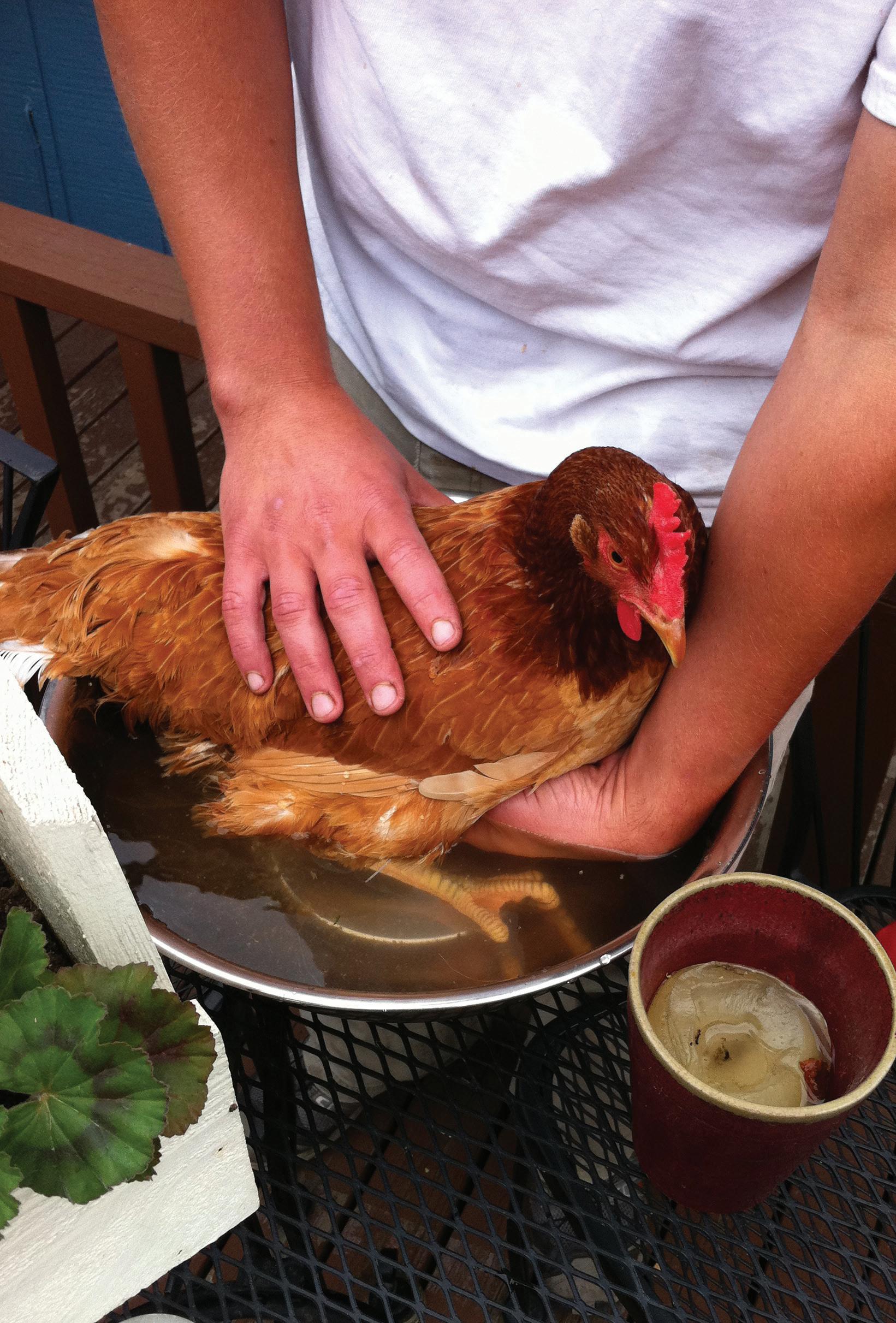
F lickr / mazaletel
Soaking an egg-bound hen in an Epsom salt bath for 10 to 20 minutes can help release the egg.
No tools needed Simply add soil and plants
The first truly modular system for building raised beds or container gardening
May/June 2023 26
Great for growing flowers or vegetables
484-824-3180 PlantAWallSystem.com
TRANSITIONING TO A Certified Organic Farm
If you’re considering organic certification for your farm, this expert advice can help you navigate the daunting process.




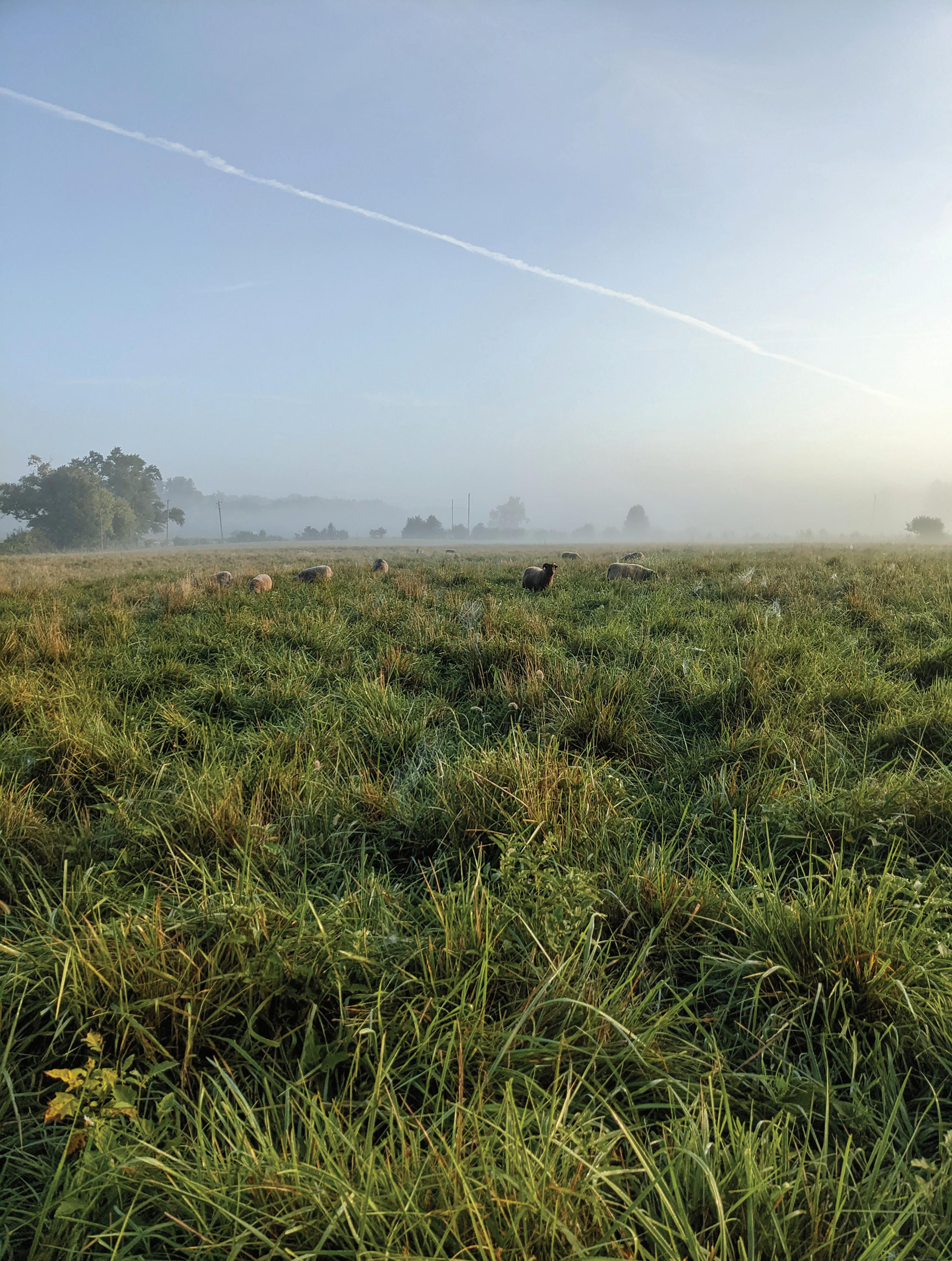
Story and photos by Keba M. Hitzeman



27 www.Grit.com
Our
farm’s
journey to organic certification truly began in 1968. When my parents purchased the land that would become our farm named Innisfree on the Stillwater and began farming, there were only a few trees along the riverbank, and the fields came right up to the driveway. Over the years, they deliberately chose to take acres of crop ground out of production, starting with the field borders along the river, driveway, and creek. Their decision was met with protest from other farmers who saw it as a loss of prime farmland and, therefore, money; however, my parents saw it as an increase in wildlife habitat, areas for walking and bird-watching, and a natural buffer to reduce the effects of seasonal flooding. They didn’t farm organically, although they did try to limit the use of pesticides and herbicides. They told me that if there’d been markets to sell organic crops in this area, they would’ve done so. Now, more than 50 years later, we’re reaping the rewards of their unpopular decision.
Organic Versus Organic Certified
Let’s start by defining “organic” and “Certified Organic.” Merriam-Webster tells us that organic means “of, relating to, yielding, or involving the use of food produced with the use of feed or fertilizer of plant or animal origin without employment of chemically formulated fertilizers, growth stimulants, antibiotics, or pesticides.” Certified Organic products, according to the U.S. Department of Agriculture (USDA) website, are “grown and processed according to federal guidelines addressing, among many factors, soil quality, animal-raising practices, pest and weed control, and use of additives. Organic producers rely on natural substances and physical, mechanical, or biologically based farming methods to the fullest extent possible.”
While many people use organic methods on their farmsteads, USDA organic certification involves paperwork, fees, and yearly inspections. These added requirements may lead some to ask,
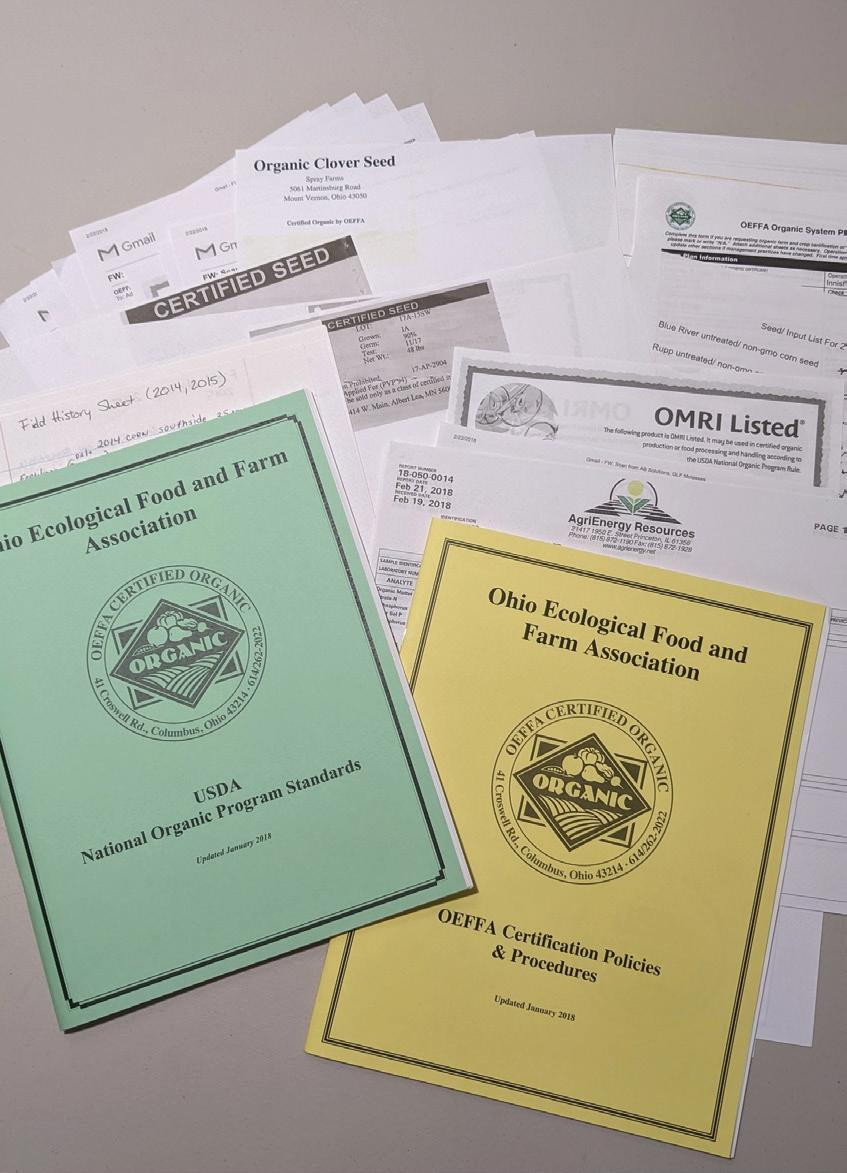

How to Become Certified Organic in Your State
If you’re interested in transitioning your farm to Certified Organic, check out these resources to help you along the way.
• University of Arkansas Division of Agriculture’s Extension Offices Database
www.UAEX.UADA.edu/About-Extension/UnitedStates-Extension-Offices.aspx
• National Organic Program
202-720-3252
www.AMS.USDA.gov/About-AMS/ProgramsOffices/National-Organic-Program
• Organic Farming Research Foundation
831-426-6606
www.OFRF.org
• Organic Materials Review Institute
541-343-7600
www.OMRI.org
• Rodale Institute
610-683-1400
www.RodaleInstitute.org
• Sustainable Agriculture Research and Education
www.SARE.org
• U.S. Department of Agriculture’s “Organic 101: Five Steps to Organic Certification”
www.USDA.gov/Media/Blog/2012/10/10/ Organic-101-Five-Steps-Organic-Certification
“Why become certified, and where do I even begin the certification process?” The answers to those questions are based on what type of farmstead you have, your goals, and whether you’re raising livestock, growing produce, or, as in our case, growing row crops and hay.
Making the Choice
Becoming Certified Organic meant accountability to our goals as land stewards. We believe in improving our corner of the planet from the ground up and the adage of leaving things better than we found them. We’d already implemented rotational grazing for our
From top: The restoration prairie and certification paperwork.
May/June 2023 28
beef cattle, which noticeably improved pasture health and meat quality, and the next step was to look at what we could do with the tillable acreage.
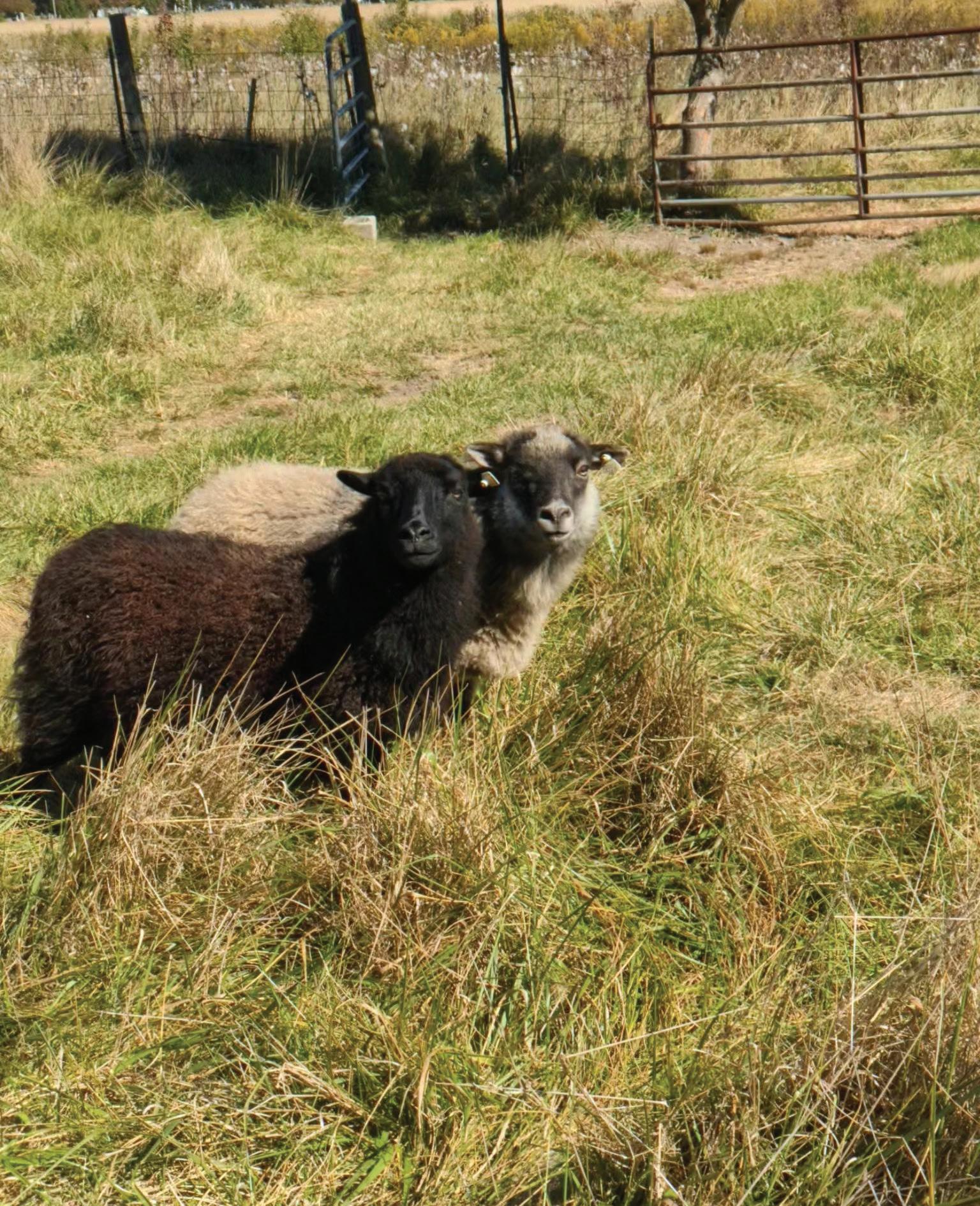























































After my parents retired from farming, they leased the land to a production farmer who grew corn and beans. When my husband and I took over the farm’s daily operations, we discovered how different his methods were from how we wanted to treat the land. He applied various herbicides and pesticides in all stages of crop production. The soil was depleted of naturally occurring organisms, and he seemed to need more inputs to grow those crops every year. This bothered us, and we weren’t getting
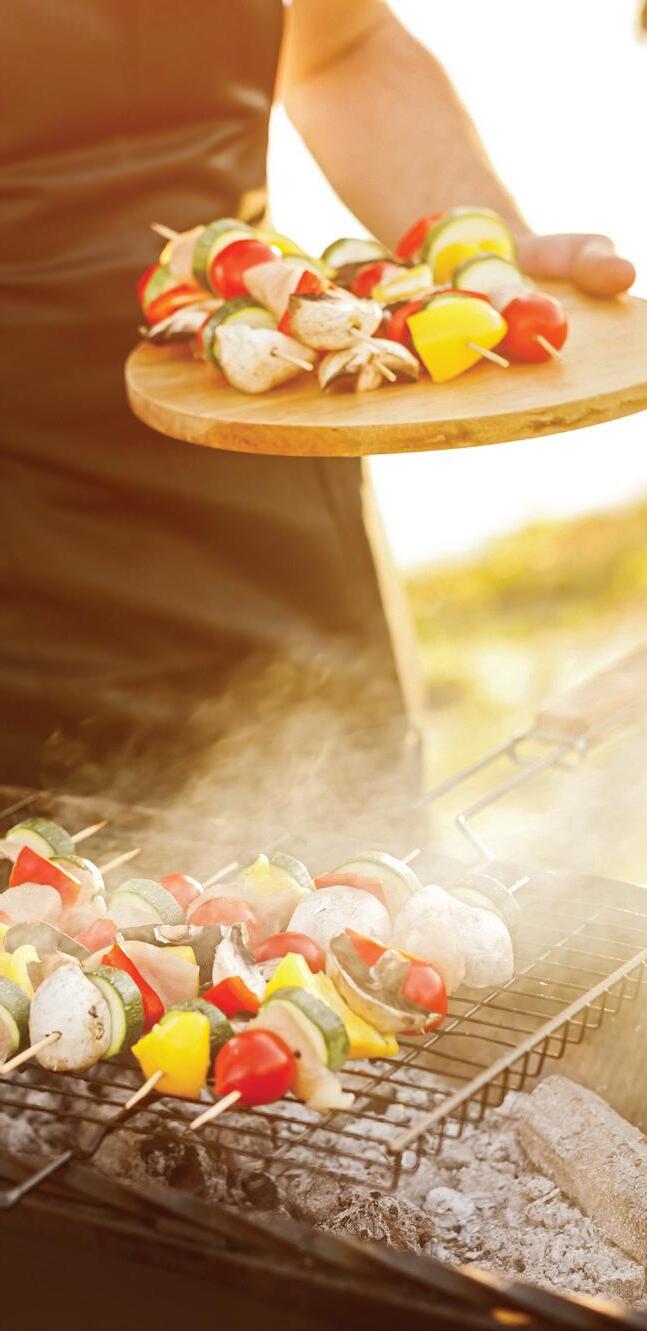
good answers as to why the increase was necessary. The tipping point came when we saw the trees bordering the fields sick and dying from herbicide over-spray. After much discussion, we parted ways with that farmer and considered what to do next.





My parents had already sold most of the farming equipment, and new (or newto-us) equipment was out of our budget, so we chose to fallow the cropland while exploring options. I posted “no spray” signs along the road, which led several farmers to visit and inquire if we were looking for someone to farm the land. We told them our plans, and one farmer seemed to fit well with our goals.

Lehman’s has the tools you need to plant your garden, plate your meals and preserve the harvest in your pantry. Shop anytime at LEHMANS.COM Kidron, OH • 800-438-5346 From Plant to Plate to Pantry See #13 on page 63
www.Grit.com 29
Two Shetland ewes in their pasture, with a restoration prairie in the background.
Choosing a Path
I scoured the internet for ideas and options during this time. By searching the websites of Ohio State University Extension, the USDA, and various organic agriculture organizations, as well as searching “how to become Certi ed Organic in Ohio,” I found several paths we could take. One approach was to use conventional seeds and farm with fewer chemicals, but we ruled this out, because there didn’t seem to be a way to use fewer chemicals with the available seeds.
Another option was to become Certi ed Naturally Grown (CNG), which was described to me as “beyond organic.” CNG was appealing because of the beef cattle we had at the time, but we have more cropland than pasture, and CNG focuses on produce and livestock, not row crops.
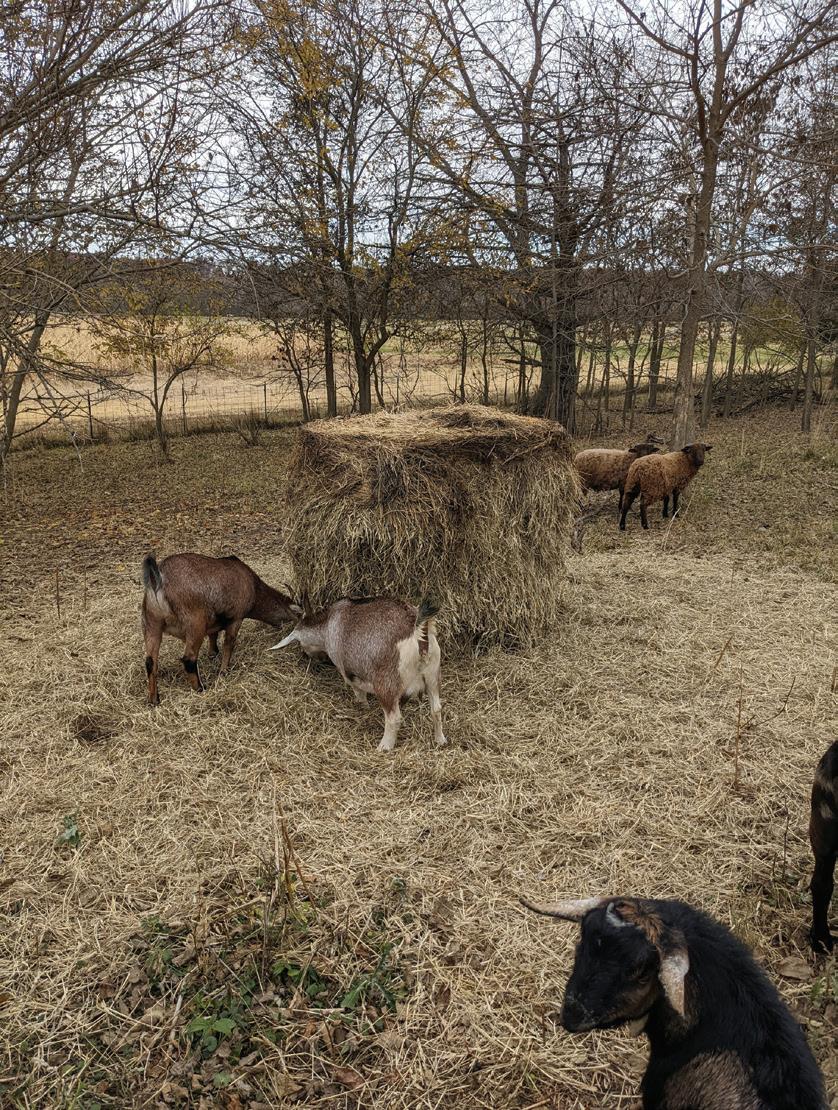
We even thought about planting trees to harvest for lumber until we realized how much physical labor and upfront cost it would entail. Becoming Certi ed Organic looked like the best t for our farm. Of the several organizations covering Ohio, we chose the Ohio Ecological Food and Farm Association (OEFFA) as our certifying partner.
The Process
This wasn’t a quick decision or process — it was more than a year from the end of our production farmer’s tenure to contracting with our organic farmer, and it wasn’t until 2021 that all our elds were Certi ed Organic. A three-year transition period (and, in some cases, ve years) is required before a eld can become certi ed, so while we’ve followed the organic standards since 2017, we couldn’t market the harvest as Certi ed Organic until the transition period was complete. At the time, no transitional certi cation was available, meaning we were paying for organic inputs but receiving conventional pay for the harvest. Now, a Certi ed Transitional Organic certi cate is available for producers, allowing them to receive a higher price for their crops than for a conventional harvest, but not the full organic value.
Having worked for government entities before, we knew there’d be plenty of paperwork for the certi cation process. Still, I was surprised at the amount of detail necessary in our initial application. The OEFFA Organic System Plan (OSP) for producers was more than 20 pages long. Although some sections didn’t apply to our certi cation, it took several weeks for us to be satis ed that we had all the required information. There were several email exchanges with OEFFA, along with texts and emails to our farmer to doublecheck that we had the information correct.
Everything relating to the crops involved documentation, including a eld history for the previous three years, inputs for the upcoming year (seeds, soil amendments, etc.), equipment, postharvest handling, soil test results, water sources, and buffer zones. Purchasing organic seeds would be ideal, but if we couldn’t obtain organic, we needed a paper trail documenting our search
history, along with veri cation that the seeds we purchased were non-GMO and untreated. To make things even more of a challenge, some of the information needed to be duplicated in two or three different sections.
Looking back, I don’t think there’s been a year that I’ve lled out the OSP 100% correctly the rst time — I always seem to forget to remove an implement from the equipment list, add a new soil amendment, or update the name of a seed variety. These oversights are easily corrected during our annual inspection or through an email with OEFFA to update the OSP.
Each year, OEFFA sends out a list of approved inputs allowed in organic production. There are categories for crops and livestock, and the inputs include fertilizers, pest control, soil amendments, feeds, medical treatments, food contact substances, and cleaners. Whatever goes in or on the ground must be on that list, and we do a lot of verifying names and manufacturers when completing the yearly OSP. These inputs are approved by the Organic Materials Review Institute (OMRI), a third-party organization that tests and approves products suitable for organic use. OMRI works under the USDA National Organic Program (NOP) guidelines and is just one of the several third-party groups in the United States that test and approve inputs. Canada and Mexico also have equivalents to the NOP.
After submitting the OSP and the certi cation fee, we were assigned an inspector to meet us at the farm. I had the OSP and farm information, our farmer had the paperwork for the crop and storage side, and the inspector had a copy of the OSP and their questionnaire. The kitchen table was covered with papers and laptops! For several hours, we discussed our organic goals, veri ed the information in the OSP, corrected any errors or gaps,
Have you transitioned your farm to Certified Organic? What advice can you share on the process? Let us know on Facebook (@GritMagazine) or Instagram (@Grit1882). TRANSITION TO SOCIAL MEDIA
May/June 2023 30
Sheep and goats doing their part.
and answered questions. We had paper copies of all documentation available for the rst few years of inspections. In 2020 and 2021, we were virtually inspected and began using a shared cloud-based folder. We uploaded scans of seed searches and tags, photos of storage areas, and even videos of the elds. The OSP discussions took place via email and Zoom or Google Meet. We’ve since returned to in-person inspections but still use the cloud-based folders to reduce the amount of paper.
Once the inspector was satis ed with the OSP and our documentation, it was time for the eld inspection. We walked to each eld and discussed the crops planted, the buffer zones between our land and adjoining farms, cultivation methods, and whatever else caught the inspector’s eye. At that point, the inspection was technically over, although several inspectors also wanted to see where our farmer stored the harvest, so they drove to that location. Photos of the storage facilities were acceptable to other inspectors.
We have a different inspector every year, and although they all follow the inspection report provided by OEFFA, each brings their unique experience and expertise. One was interested in our various soil types, another focused on our buffer zones, and a third quizzed us on our seed selections. While the report questions were the same, I could expect every inspection to be self-contained. This was jarring the rst time, as I expected the same person and was caught off guard when I needed to explain everything about our farm again to the new inspector. But I’ve enjoyed meeting a new inspector each year and having wide-ranging conversations with them about the different aspects of organic farming.
Worth the Effort

As daunting as the yearly paperwork and physical inspection sound, we were pleased to learn that we didn’t need to complete the entire OSP every year, although the inspector will go through the whole plan during the farm inspection. The paperwork has become even more
streamlined — we only needed to ll out six pages covering the eld data, seeds, and inputs for 2022. If changes need to be made to other items, additional pages must be submitted, but we’ve found it much better than combing through the entire 20-page document every year. Becoming Certi ed Organic may sound like an incredible amount of work, and, yes, the rst few years of transitioning can be challenging as you learn the requirements and how your certifying organization works. Communication with that organization is critical, whether you have questions on how to document information, need to amend or update your OSP after submitting it, or any of a thousand things that can come up when running a farmstead. Carefully read every email and letter from your organic organization for any changes. I missed that we needed to include our gross income for the previous year’s harvest and had to scramble for that number during our last inspection. There’s a great deal of information to absorb, but those folks are there to help you navigate the process, and they want you to succeed.

We’ve found the challenges worth the effort — the soil is lled with life, the perimeter areas are healthy and home to a variety of wildlife and pollinators, and we continue to show other farmers in the area that it’s possible to grow crops without using herbicides and pesticides. Organic certi cation was the right answer for our goals — research your options to see if it’s right for you!
FAST & EASY STUMP REMOVAL
• Efficient PTO powered stump grinder makes stump removal easy.

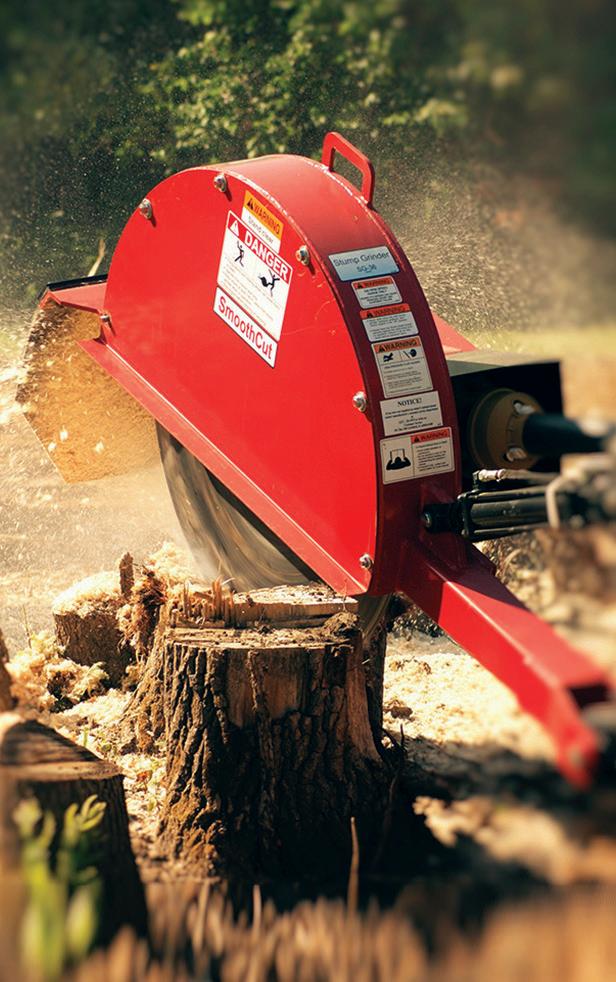
• Easy operation from the seat of the tractor using existing tractor hydraulic controls.
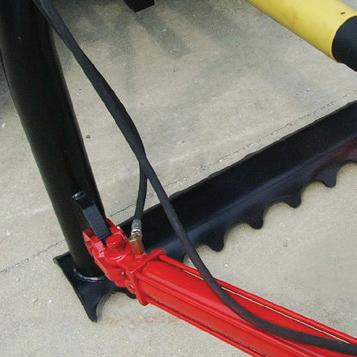

Keba M. Hitzeman (she/her) grew up as a free-range child on the farm she now owns with her husband. They transitioned from modern farming and grass-fed and - nished beef cattle to Certi ed Organic crops and hay, and grassfed and - nished sheep and goats. They’ve continued her parents’ work of adding areas for pollinators and wildlife. You can nd her on Facebook and Instagram (@ InnisfreeOnTheStillwater).
• Cutting wheel design provides a smoother cutting action for higher productivity.




• Models designed for tractors 22 -50 PTO HP and 45- 100 PTO HP.

DESIGNED. ENGINEERED. REMARKABLE VALUE.
Worksaver, Inc. Litchfield, IL Phone: 217.324.5973 WORKSAVER.COM See #29 on page 63 www.Grit.com 31
SmoothCutTM
PTO Powered Stump Grinders









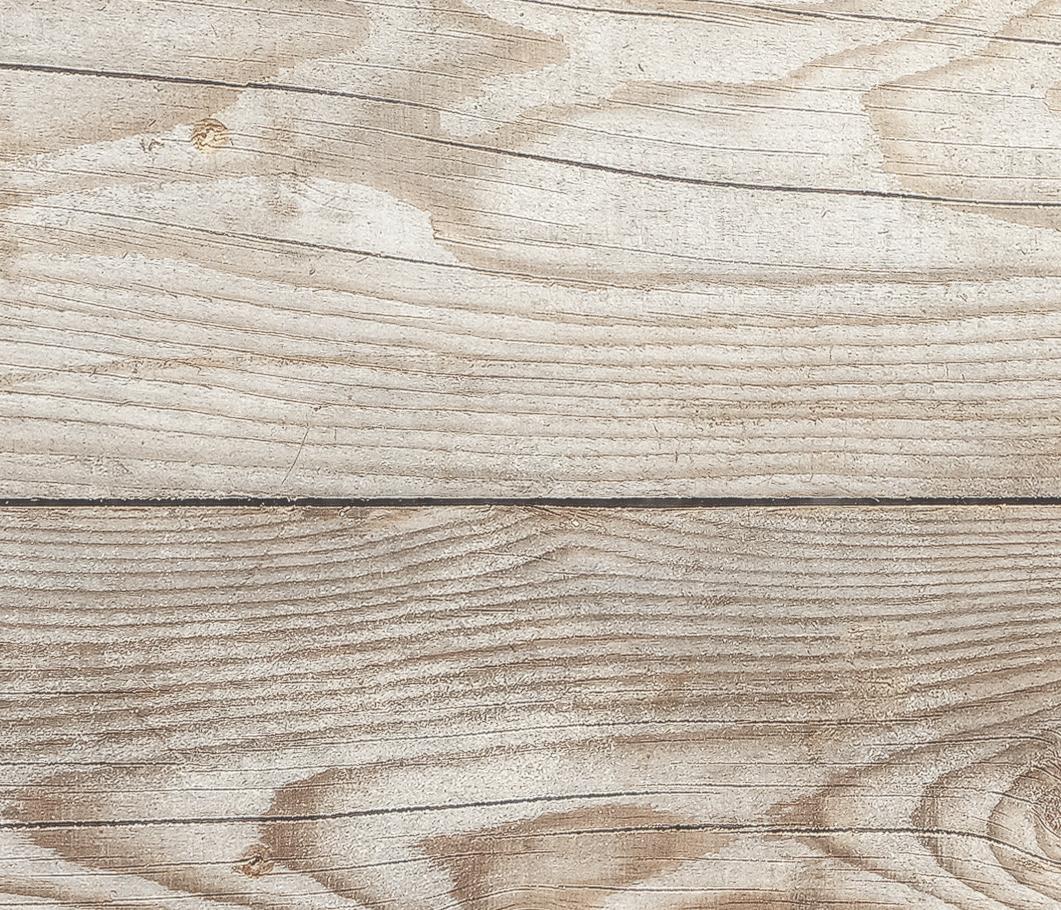
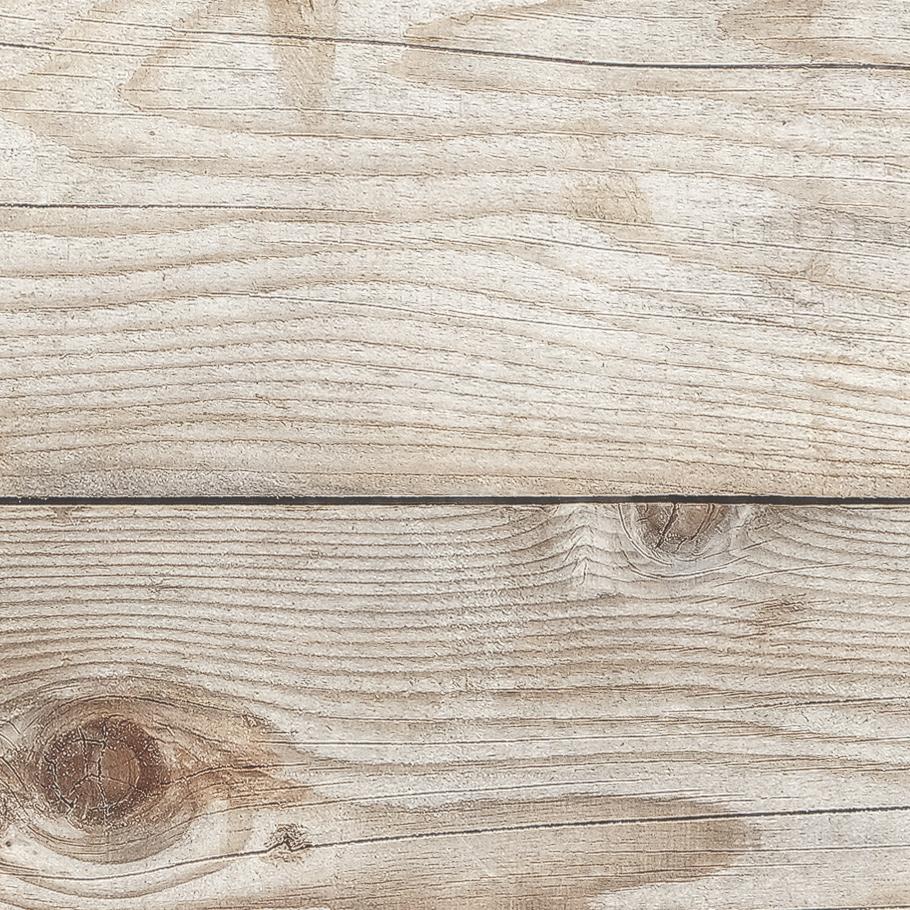


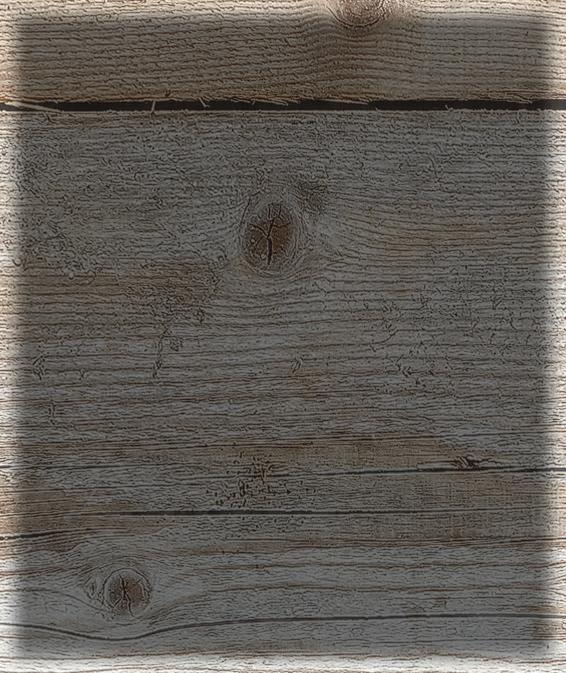
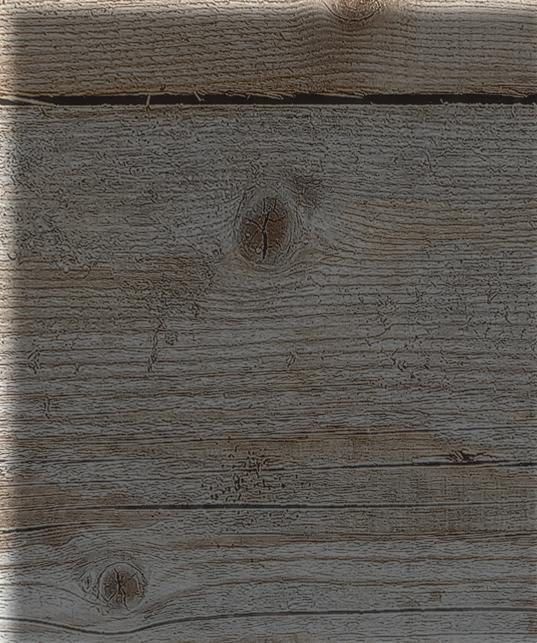
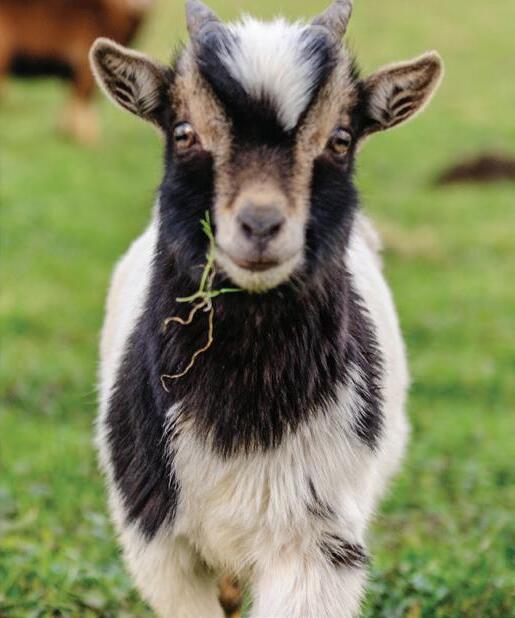


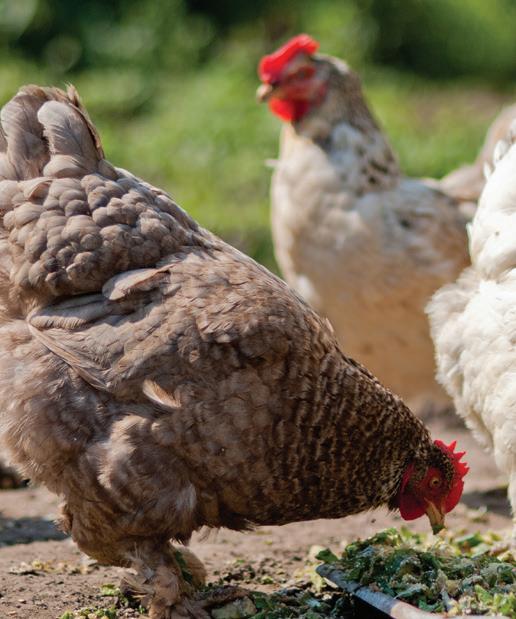


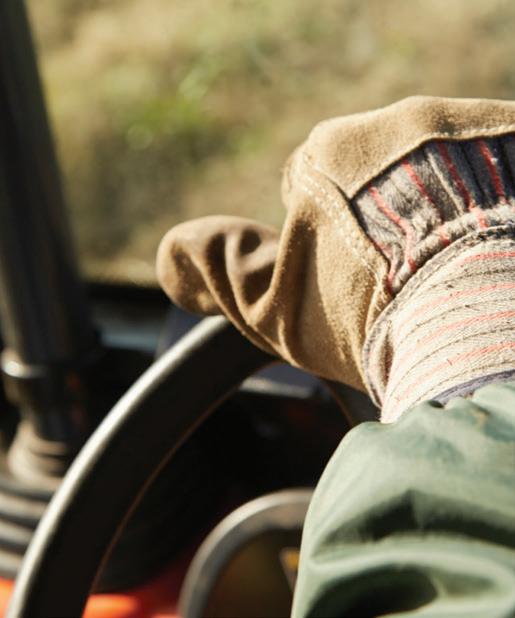

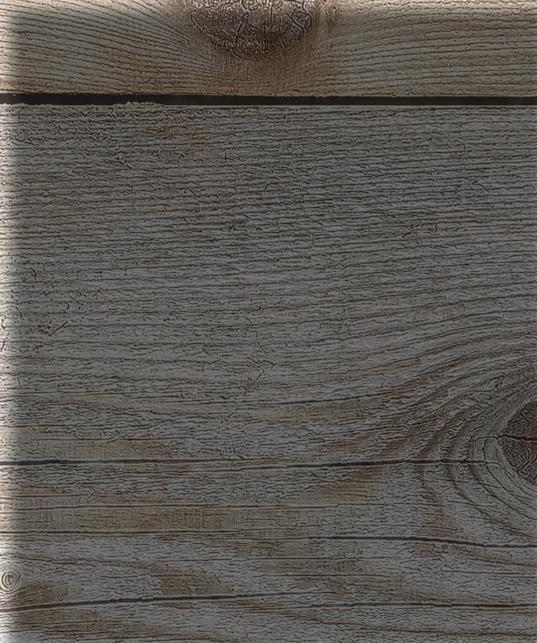
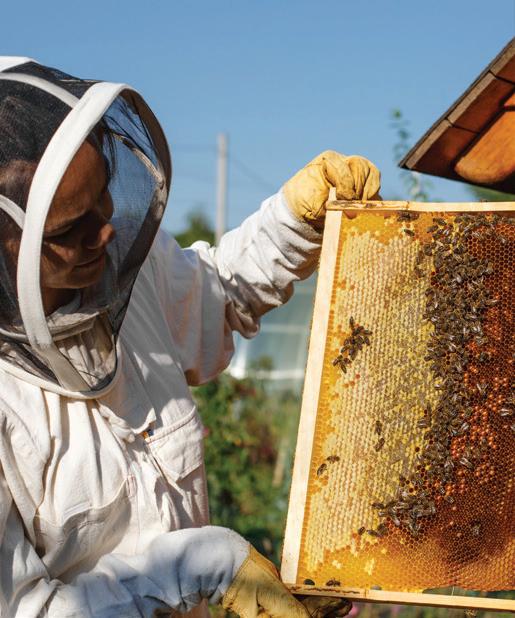










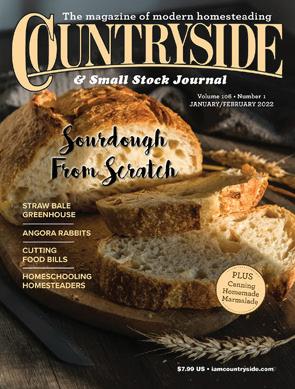

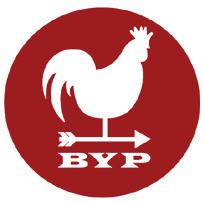



MORE GREAT WAYS TO LIVE THE COUNTRYSIDE LIFE! IAMCOUNTRYSIDE.COM
For more than 100 years, Countryside Publications has inspired, educated, and entertained homesteaders across the nation. WHERE HOMESTEADERS COME TO THRIVE 970-392-4419 Magazines Bookstore Experts on Staff Archived Issues Recipes DIY Projects Email Newsletters And so much more! And now you can expand your Countryside experience online by visiting iamcountryside.com! backyardpoultry. iamcountryside.com backyardgoats. iamcountryside.com backyardbeekeeping. iamcountryside.com iamcountryside.com
BACKYARD POULTRY BACKYARD BEEKEEPING BACKYARD GOATS COUNTRYSIDE
Sew Your Own Clothing
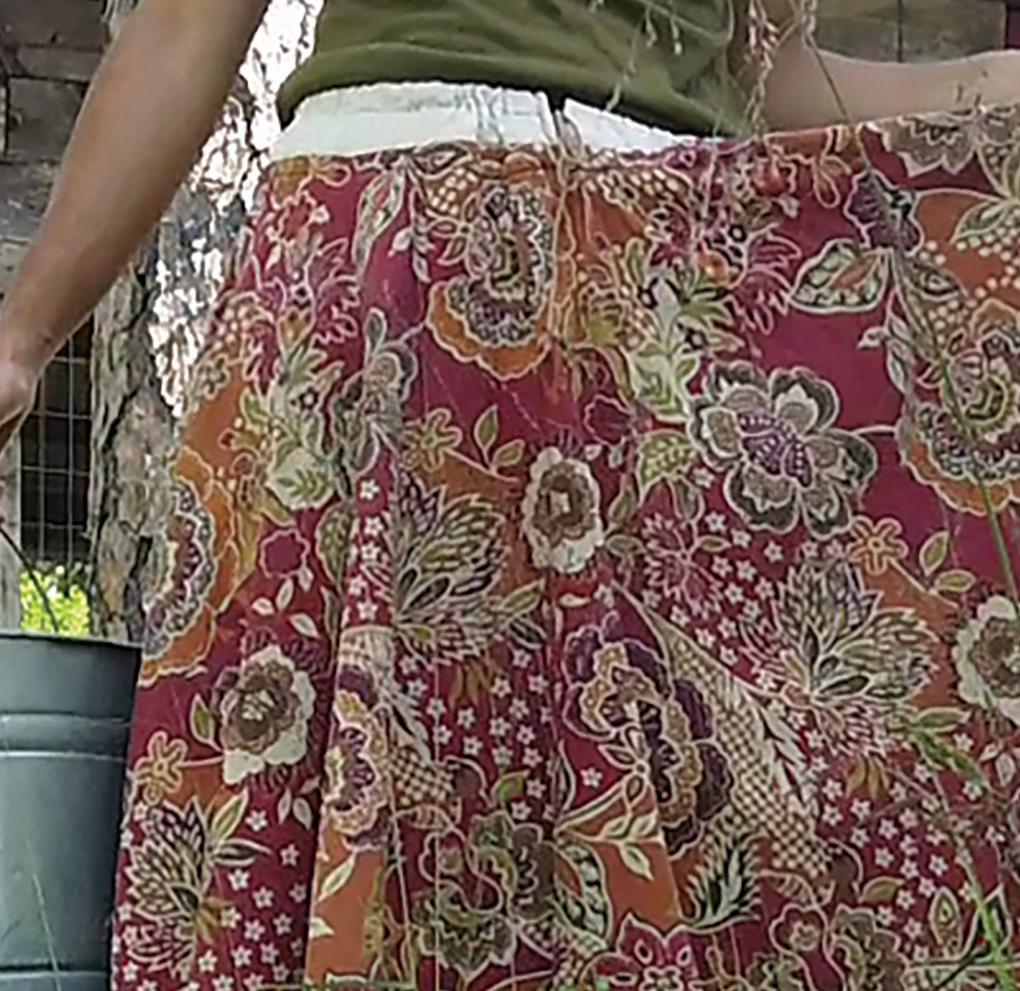
SANS PATTERNS


Outfit your closet with no-fuss, inexpensive garments by picking up the renegade art of patternless sewing.
Story and photos by Wren Everett
the city and moving to rural property, I was confronted with an odd predicament: All my clothing wore out at record speed. Rather than sitting at a computer or commuting to work, I was putting up fencing, foraging in thick brush, and trimming goat hooves — and getting tired of constantly adding patches at night. But tough commercial outdoor wear came with a hefty price tag, and often the frivolous styling didn’t match my needs. Furthermore, the clothing industry in general galls me with the way it exploits sweatshop labor. So, with no knowledge about sewing garments, I took up needle and thread and blundered my way into making my own clothing.






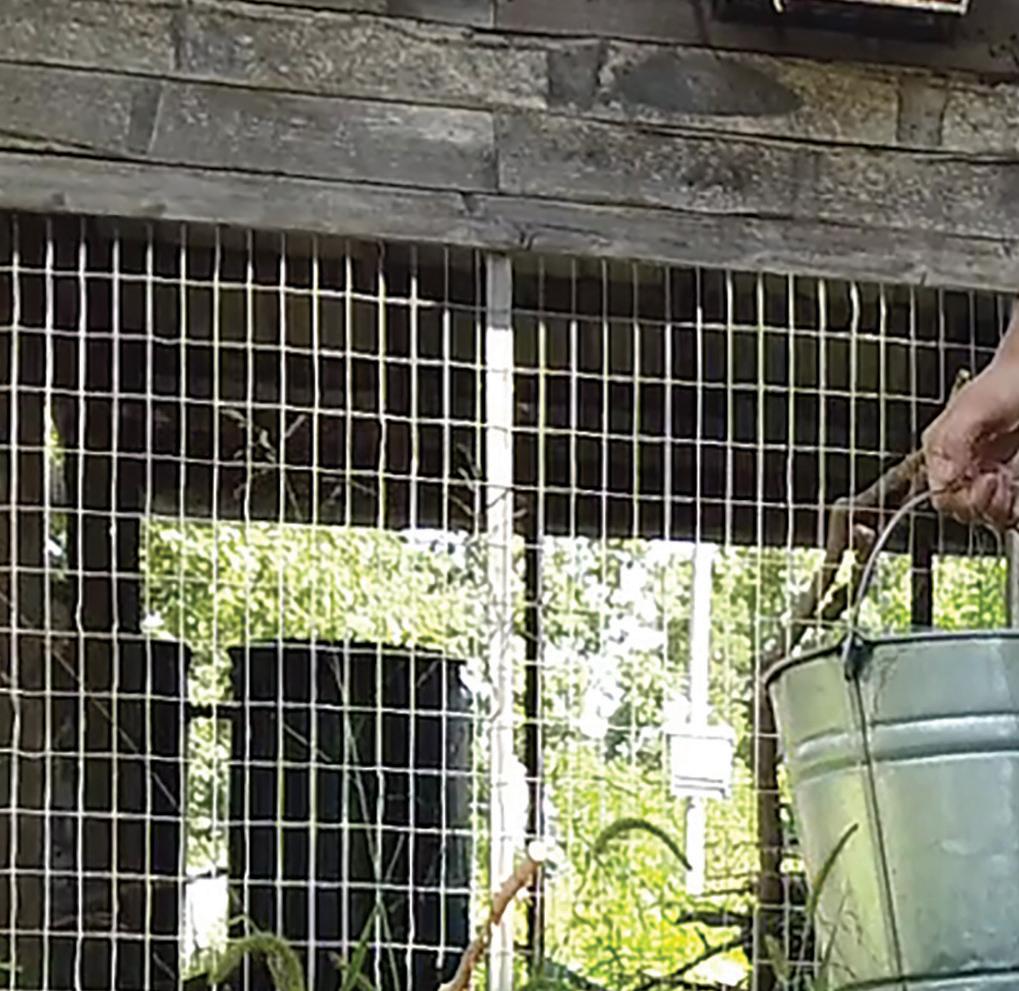
After leavingAlthough my methods are informal at best, I’m able to customize and craft clothing that’s comfortable, ts well, and, best of all, stands up to the rigors of my daily life. For readers also looking to take clothing into their own hands, I’m happy to share my philosophy for piecing together successful attire without patterns, fancy fabric, or sewing experience.
My Basic Sewing Philosophy
Starting a new endeavor can be intimidating, especially when it’s something as personal as your own apparel. The backbone of this method is to lessen anxiety, build con dence, and add basic sewing skills to your repertoire. Once you’ve sewn something you can
actually wear, the next project won’t seem as big a hurdle. Eventually, you’ll be able to add more technical skills to your burgeoning experience.
Now, anyone who does have sewing experience may nd my method borderline heretical. All I can say is this: My goal isn’t to create perfectly tailored haute couture, but to make wearable, easy-to-sew clothing that’s light on the wallet and light on seriousness. Here are some tenets of the philosophy.
Use your favorite clothes as templates. Rather than those imsy paper patterns, tracing your own clothes takes out all the guesswork. You already know they t! Simply add a ¾-inch seam allowance around your traced lines to
PHOTOS CREDIT HERE
Do you sew your own clothes? We’d love to see pictures! Share them with us on Instagram (@Grit1882) or Facebook (@GritMagazine). SEW SIMPLY SOCIAL www.Grit.com 33
make a custom-fit design you can alter and adjust as your creativity dictates.
Upcycle thrifted fabrics. Bedsheets, unwanted curtains, and funky old tablecloths are inexpensive, fun to play around with, and entirely forgiving in terms of risk. If you end up totally messing up the project (unlikely!), you’ll only have wasted a 50-cent tablecloth rather than expensive store-bought fabric. The pressure is off for achieving success, which might relax you enough to help you succeed in the first place!
Don’t fixate on a certain look. Modern clothing, with its ever-changing lines and often impractical designs, doesn’t really fit in with my philosophy. Instead, you can make timeless shapes and silhouettes. Full skirts, comfortable pants, and flowing tunics are feel-good clothes that fit all body types. With a bright smile and a disregard for others’ opinions, you can transcend the fickle trends that’ll be obsolete in a week.
Have fun with the process! Accept that you’re going to make mistakes. You may sew something wrong-side-out. Your seams may not line up perfectly. You may laugh while inspecting your reflection in the mirror (whether in delight or amusement is up to you). You may stab your finger with a needle a few times. You may have unexpected success. You may fall in love with rescuing fabrics and making your own clothing. Embrace it all! Anxiety and perfectionism are your enemies.
TOOLS AND MATERIALS
Thrifted fabrics
Hand sewing needle or sewing machine
(Note: You can sew all of these projects by hand using a backstitch.)
Thread
Tailor’s chalk or marker
Tape measure or yardstick
Fabric scissors or dressmaker’s shears
Straight pins
PROJECT NO. 1: ROUND TABLECLOTH SKIRT
This is one of my favorite sewing projects, because it saves a lot of finicky work. By using a round tablecloth, you’ll eliminate the need to trim and hem the bottom of the
skirt. Furthermore, I’ve found that tough tablecloth fabric will stand up to daily work on a farmstead. The skirt pictured on Page 33 has only needed to be patched once after five years of service.
For this project, you’ll need the following in addition to the tools listed at left:
• String or ribbon long enough to more than encircle your waist
• Round tablecloth (The louder the pattern, the better!)
• Rectangular scrap of fabric at least 1 foot wide and long enough to amply wrap around your waist
• Drawstring
• Elastic (optional, but recommended)
Step 1. Determine the circumference of your waist, or the place on your body where you want the skirt to rest. You can do this easily with a piece of string. Remove the string from your waist, add 3 inches to this measurement, and then cut the string.
Step 2. Find the center of the round tablecloth by folding it into a half-moon, then folding that in half a second time, and then in half a third time. (See diagram below.) The point of the resulting wedge is the center. Mark it with tailor’s chalk.
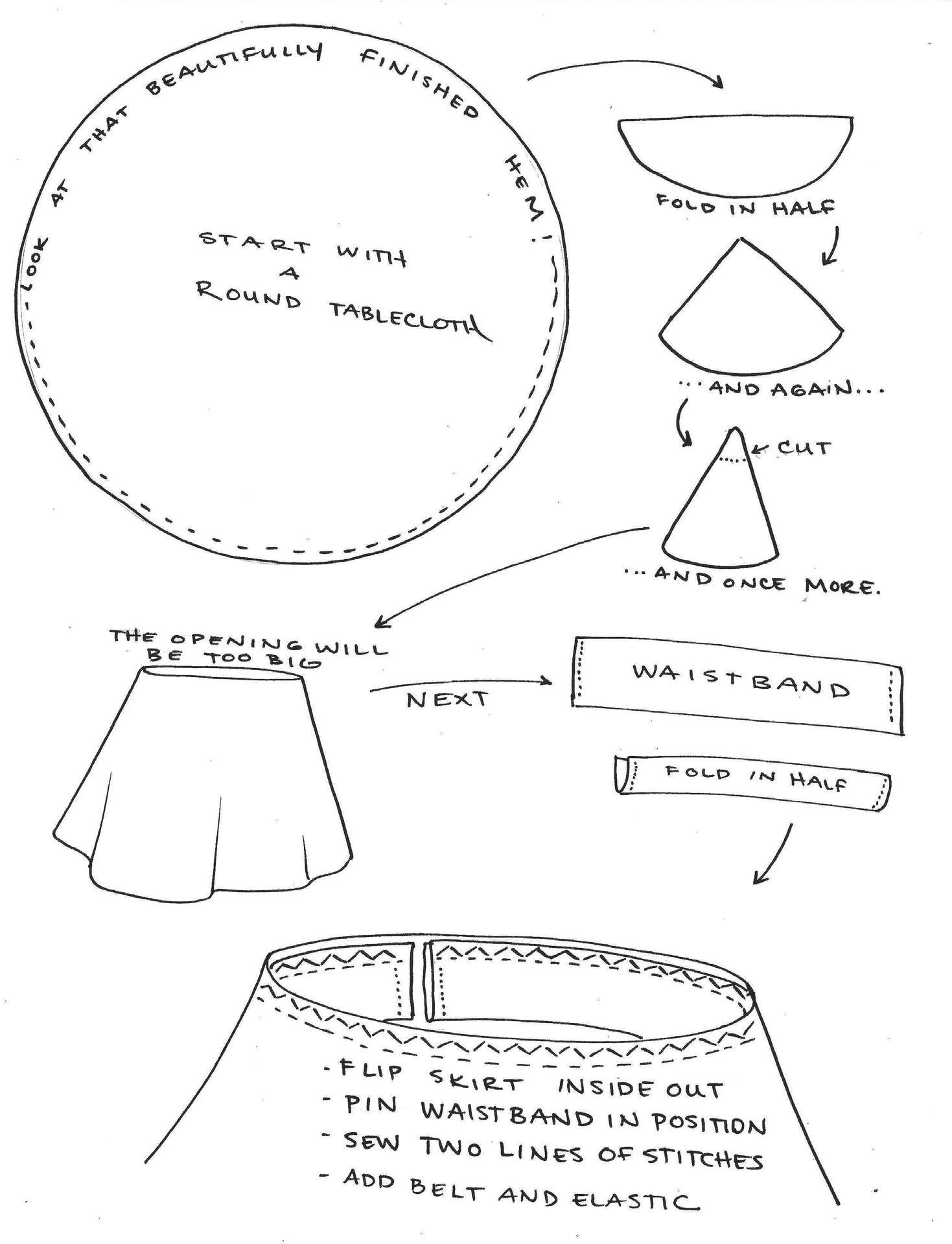
May/June 2023 34
Step 3. Fold the string you cut in Step 1 in half, then in half a second time, and then in half a third time, just as you did with the tablecloth. Place the folded string over the folded tablecloth, and find the place where the string’s length matches the tablecloth’s width. This will become your waist opening. Mark this line with chalk.
Step 4. Cut along the marked line through all layers of the folded tablecloth. When you open up the tablecloth, you should have a circular hole roughly in the middle. For this sewing project, “roughly in the middle” is close enough for us!
Step 5. Pick up the scrap rectangle of fabric. Measure it with the piece of string, and then add 1 inch. Trim the edges neatly, turn under each short side 1⁄2 inch, and then secure the fold by sewing it. Fold the rectangle in half lengthwise. This will be your waistband.


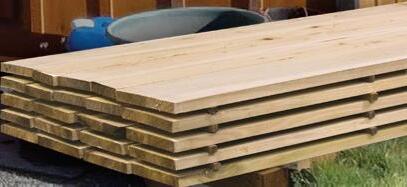

Step 6. Next is the only tricky part. Place the skirt circle’s fabric wrong-side-up. Carefully line up the rough edges of the waistband with the rough edges of the tablecloth’s cutout (referring to the diagram again). Be sure to place the waistband inside the skirt, against the fabric’s outer side, usually called the “right side,” rather than against the “wrong side.” Pin everything together, both edges of the waistband against the patterned side of the skirt. Take your time with pinning, because a little care at this step will make all the difference in the finished product. If the skirt opening is bigger than the waistband, you can make some tiny pleats at regular intervals to compensate. Don’t fret too much over the details; the skirt will look fine in the end.
Step 7. Turn the skirt right-side-out and make sure everything is oriented properly. You can even carefully slip it on to make sure it’s big enough. Don’t worry about the skirt being too big, because you haven’t yet added the elastic or drawstring.
Step 8. Add two lines of stitches around the raw edges where the skirt’s waist opening and waistband meet. Start with a single line of straight stitches at least 3⁄4 inch from the raw edge. Follow up with a second line of zigzag stitches along the raw edge to prevent fraying.
Step 9. All that’s left to do is add a drawstring through the waistband opening.
(I often tie the string onto the clip of a pen and feed it through one end until it comes out the other side). If desired, you can also add a strip of narrow elastic, which I’ve found helps considerably to keep the skirt in place. And with that, you’ve made the easiest skirt in the world — swishy, upcycled, and comfortable to boot.
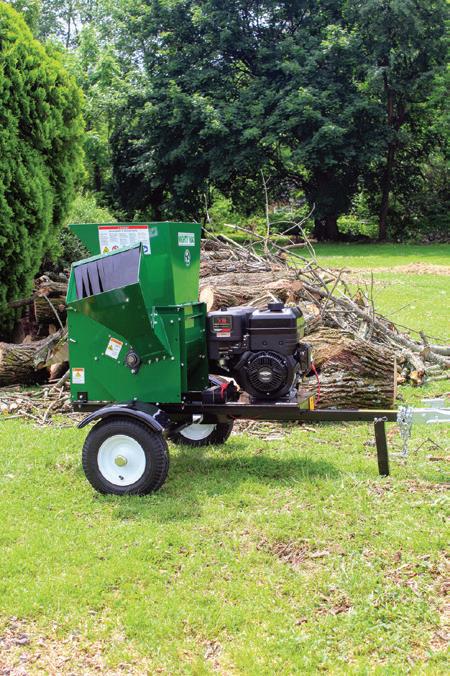


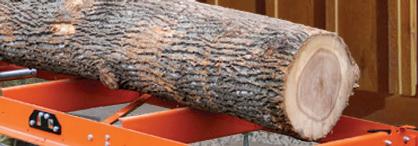

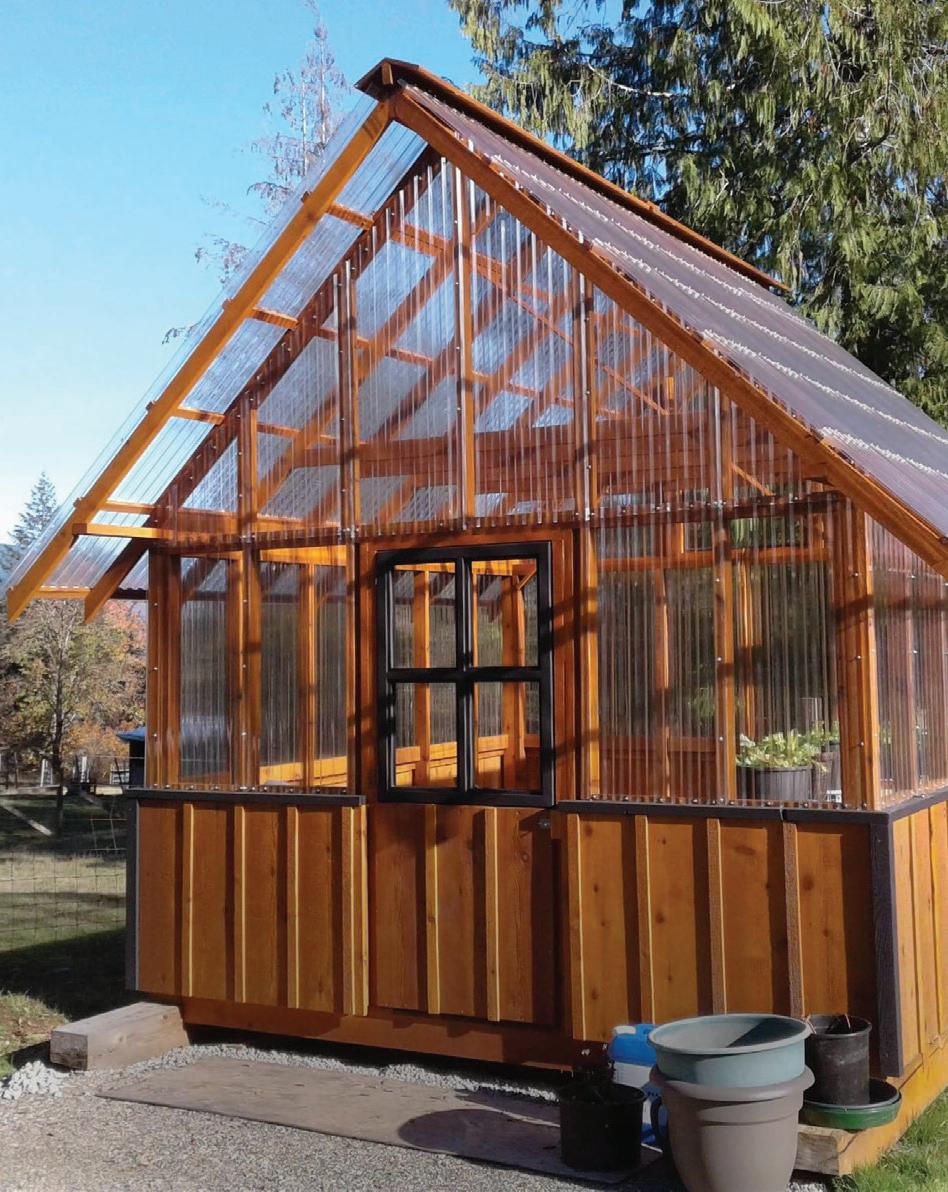
PROJECT NO. 2: TRACE-YOUR-OWN FISHERMAN’S PANTS
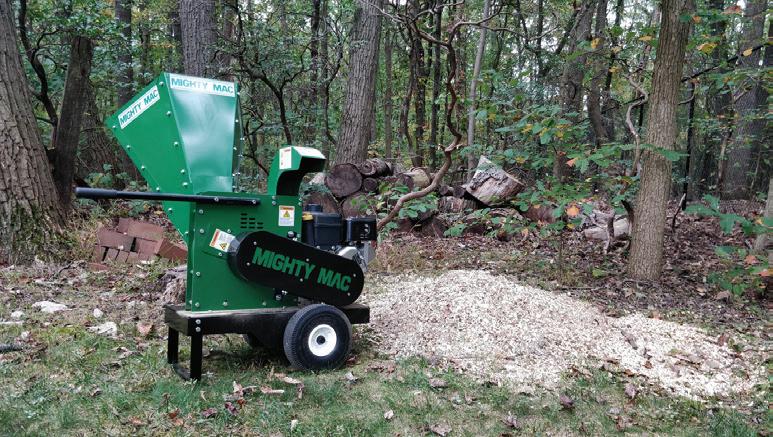


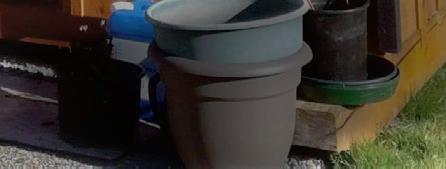
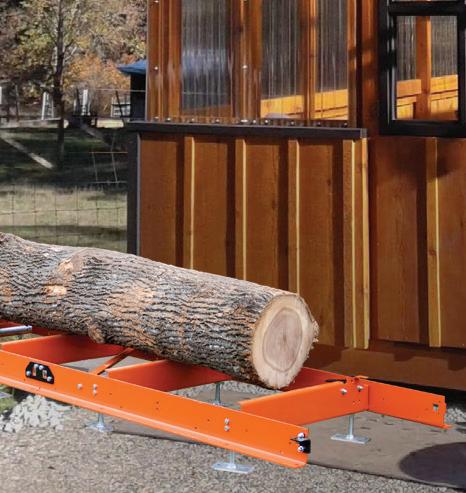
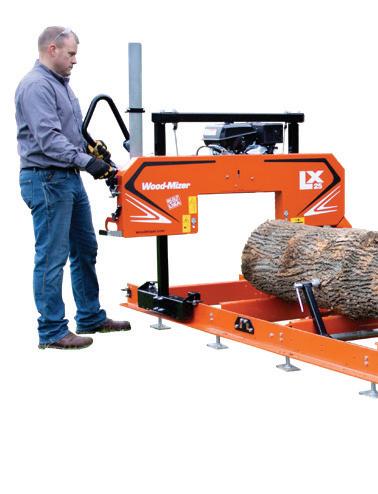
These easy, breezy, one-size-fits-all pants are inspired by the traditional fisherman’s trousers of Thailand. These adjustable pants will stay up without buttons, zippers, clasps, or belts. They’re perfect for wearing under a tunic, or for fluctuating waistlines. These instructions won’t produce the true, extremely loose silhouette of the authentic Thai garment, but I prefer a closer fit. Although you won’t be using a commercial pattern, you’ll need existing pants for a template. You’ll also need the following (in addition to the tools and materials listed on Page 34):








See #28 on page 63 See #15 on page 63 © 2023 Wood-Mizer LLC *Price subject to change. Live the wood life® is a registered trademark. 1 L X25 at $4,395 Financing Available! 855.312.3550 woodmizer.com 5 S MILL DELS X SAW IT. Saw your own logs into lumber. BUILD IT. Build sheds, fences, barns, and more! LIVE IT. Live the Wood Life. SINCE 1982 “I have always wanted to build a greenhouse to extend my growing season. All western red cedar trees were harvested on my property and cut on my Wood-Mizer sawmill. It was very satisfying to build something from lumber I had milled myself.” – Stan Kujala, British Columbia ® www MacKissic com (800) 348-1117 Proudly Made inthe USA Turn Garbage Into Gold wOOD wOOD CCHIPPERS HIPPERS SSHREDDER HREDDER CCHIPPERS HIPPERS www.Grit.com 35
• Pair of non-stretchy sleep pants that fit nicely, to use as template
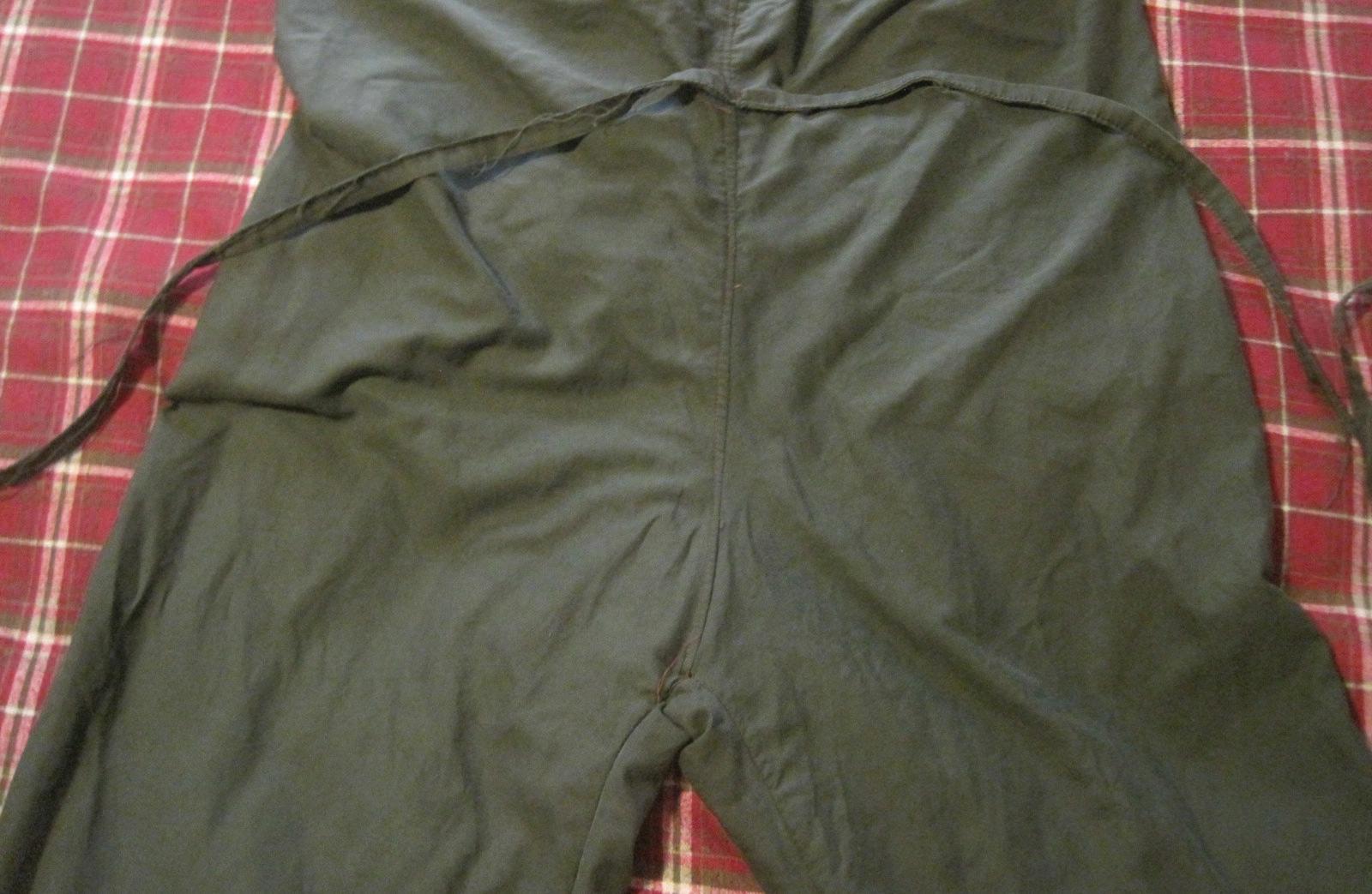
• Flat bedsheet for soft, breezy pants, or cotton curtain for harder-wearing pants
Step 1. Trim the hemmed edge off one long side of the bedsheet. (Refer to the diagram at left.) This will be your waist tie. Set aside. Step 2. The directions that follow will save you from sewing seams down the outside of each pant leg, but they do require some careful planning and tracing. If this seems too complicated, you can cut two separate front panels and two separate back panels and proceed that way.
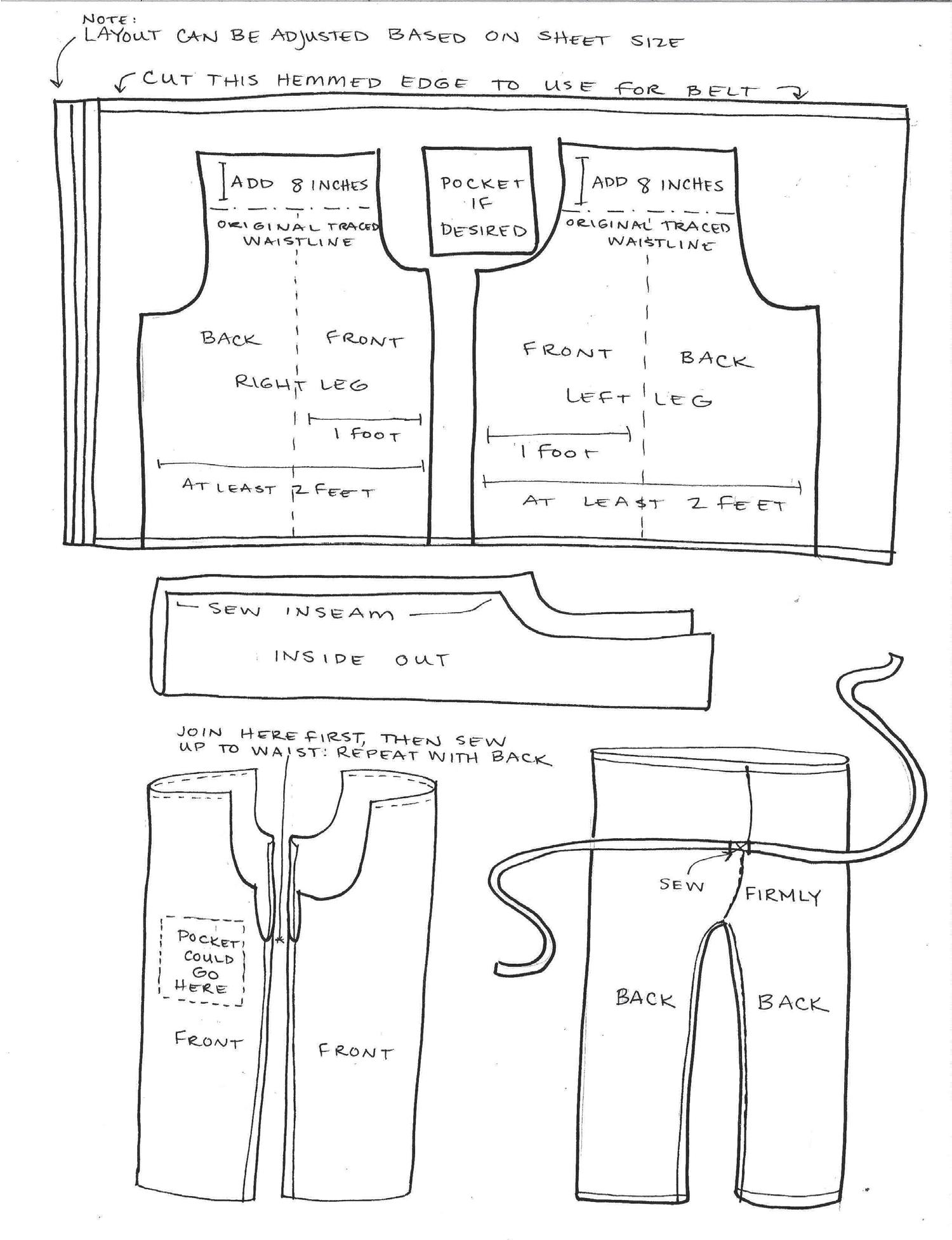
Fold in half the sleep pants you’ve chosen to use as a template, as neatly as you can, with the seams at the perimeter and the tie in the fold. This should give you the rough shape of the back half of the fisherman’s pants. Trace the shape onto the upcycled cloth. Next, reverse the fold of the sleep pants so the tie is on the outside. Line up the straight outer edge with the straight outer edge of your previous tracing, and trace the front half of the leg. Allow an extra 3⁄4 inch for a seam allowance around the perimeter. Label this leg “left” or “right,” as applicable.
Repeat the process in reverse with the other leg, making sure to label that leg too. Step 3. Make adjustments. If the legs on your template are tapered, straighten the lines on your fabric so the leg panels are at least 2 feet wide at the bottom hem (or 1 foot wide, if you’ve cut the front and back separately). Use the yardstick to add 8 inches to the waistline’s vertical measurements on all pieces. This may look a little odd. Refer frequently to the diagram above, at left. Step 4. Cut out the panels. If you lined them up correctly, you should be able to cut out the left leg as a single piece and the right leg as a single piece. Bonus points if you managed to cut the bedsheet so one of its finished hems will be the cuffs of the fisherman’s pants!
Step 5. Assemble the pieces. First, turn the material wrong-side-out, pin carefully, and sew the inseam on each leg. Be sure not to extend the stitches past the crotch area. Then, turn the fabric right-side-out and pin the pants together at the crotch, lining up the front panels and back panels correctly.
May/June 2023 36
Sewing the crotch seam will be less tricky if you begin stitching where the four seams (crotch and leg) meet.
I usually begin stitching the seams, right sides of the fabric facing each other, at the point where the four seams meet, and work my way up from there, as this is a lot less intimidating than trying to sew the whole tricky seam in one fell swoop!



Don’t worry if the waistline or cuffs aren’t perfectly even when you’ve finished stitching; you can fix that with a bit of trimming and hemming in Step 7. Check your pinning, and if you’re satisfied, sew a line of straight stitches along all seams, following up with another line of fray-inhibiting zigzag stitches along the raw edge.



Step 6. Now, you’ve got a ridiculous pair of pants that probably fit fine until the waist, which is encircling the bottom of your ribs. Hoist the pants up, laugh, and trace the seam at your back until you reach where you want the waistline to be. Mark that (awkwardly!) with a piece of tailor’s chalk. This is where you’ll attach the hemmed edge that you set aside as a belt. Fold that strip of cloth in half and attach the midpoint to your chalk line.
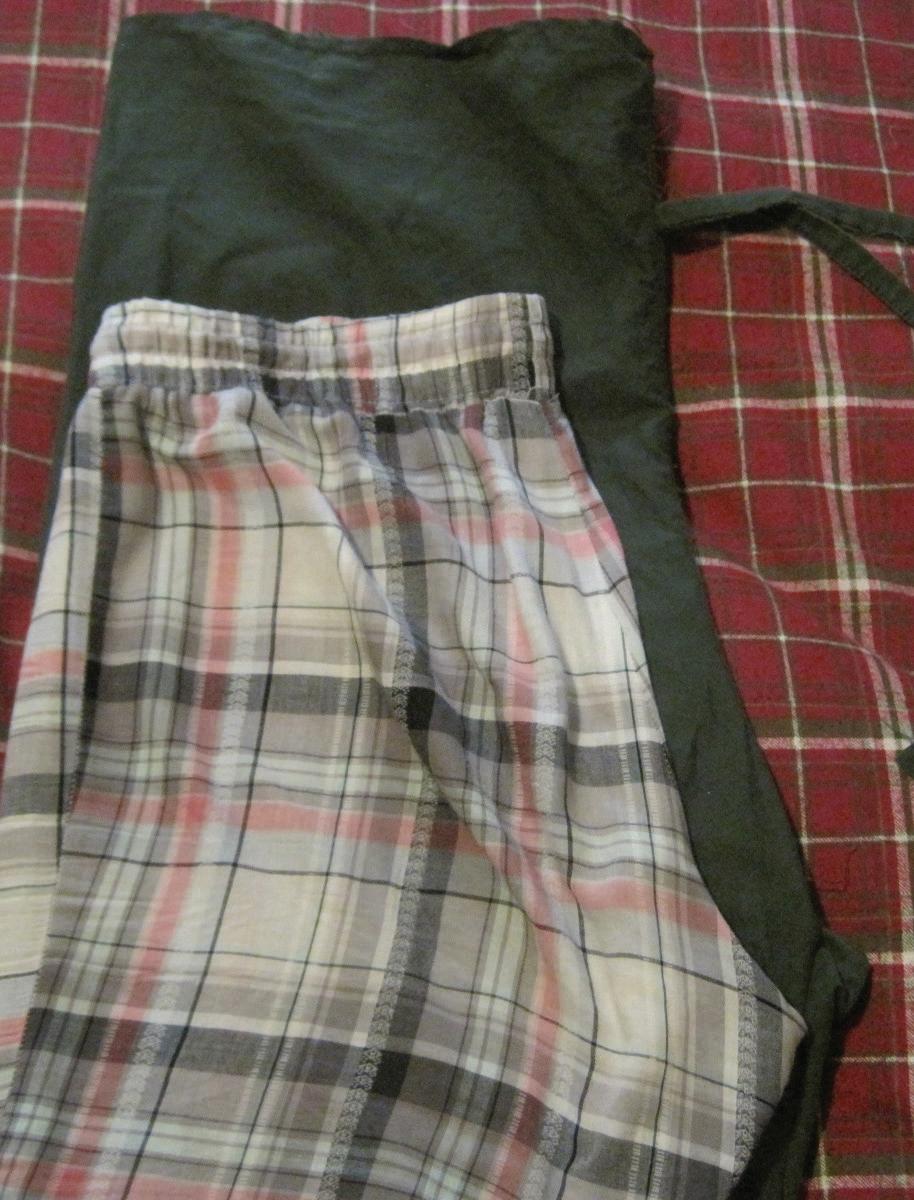
Step 7. All that’s left to do is hem the cuffs and the top edge, trimming them first if necessary. You can also add a pocket, but I recommend first wearing the pants a few times so you can decide where you want to install it.
If you’re unsure how to wear these pants, watch the video tutorial at https://youtu.be/ FqemAPrgcRA. It may take a bit of practice, but you’ll be a pro in no time.
As you learn to transform inexpensive curtains and unwanted tablecloths into






tough-wearing clothing, you’ll experience the satisfaction of donning something you made with your own hands. The more you craft your own clothes, the more you’ll build up confidence for further projects, adding another tool to your self-sufficiency toolkit. After you’ve mastered the basics, you can expand your sartorial experiments to include dresses, shirts, and anything else you might
fancy. So, take up your needle, thread, and an armload of old curtains, and join my Renegade School of Sewing!


Wren Everett is a DIYer and budding seamstress. She and her husband live on an Ozark homestead, where they seek to live as self-sufficiently as possible.
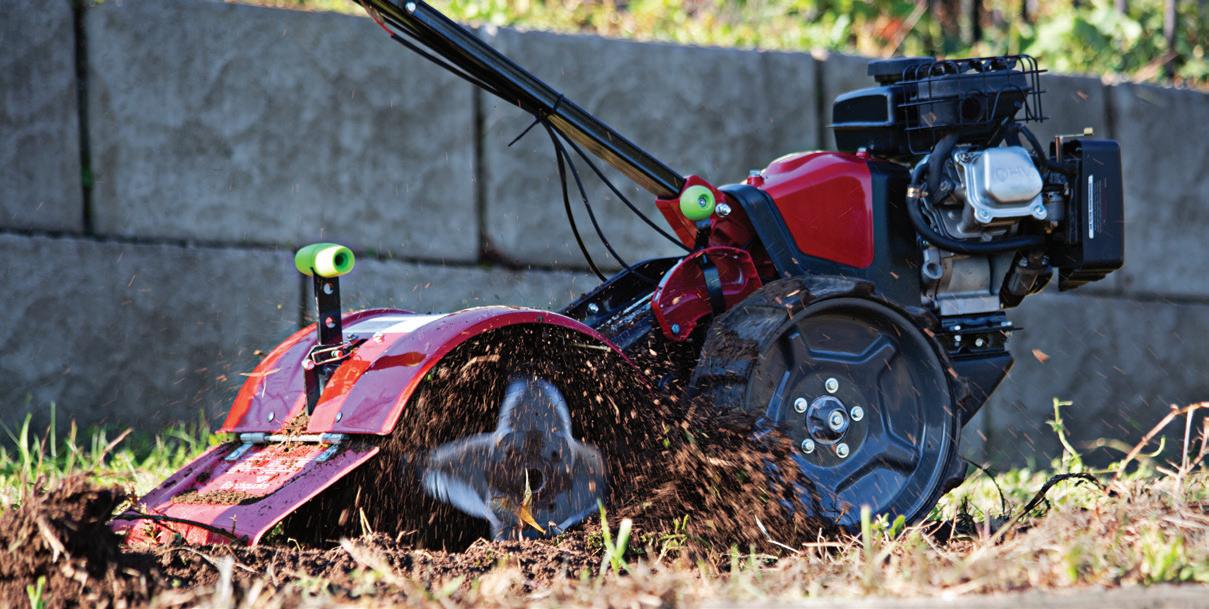








Earthquake-Print-Ad-4500x7000-121422f-ol.indd 1 12/21/22 4:08 PM See #3 on page 63 www.Grit.com 37
Use soft, well-fitting sleep pants as a template.

















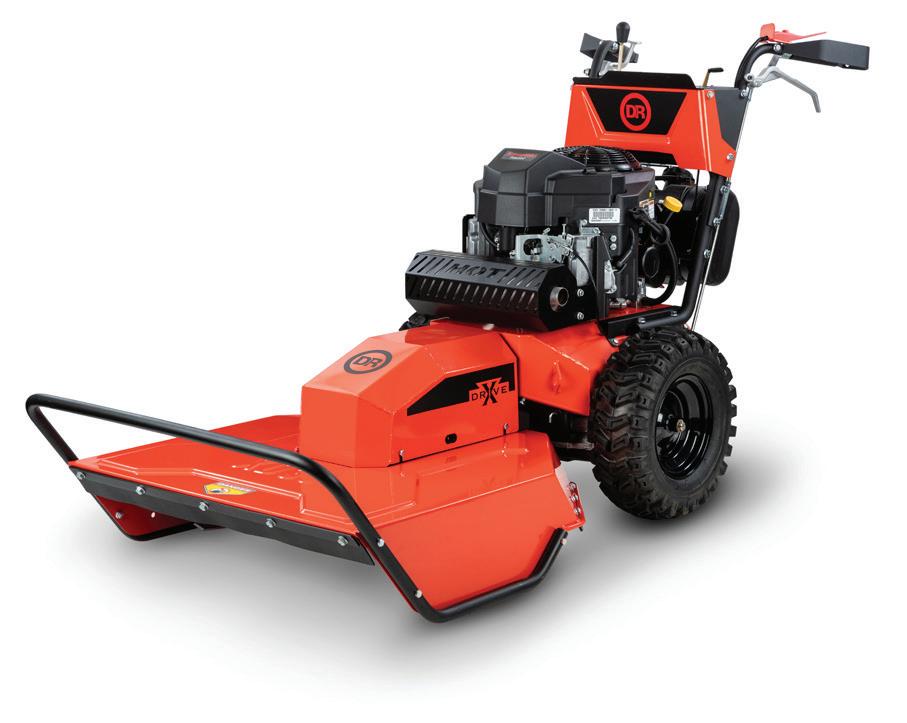
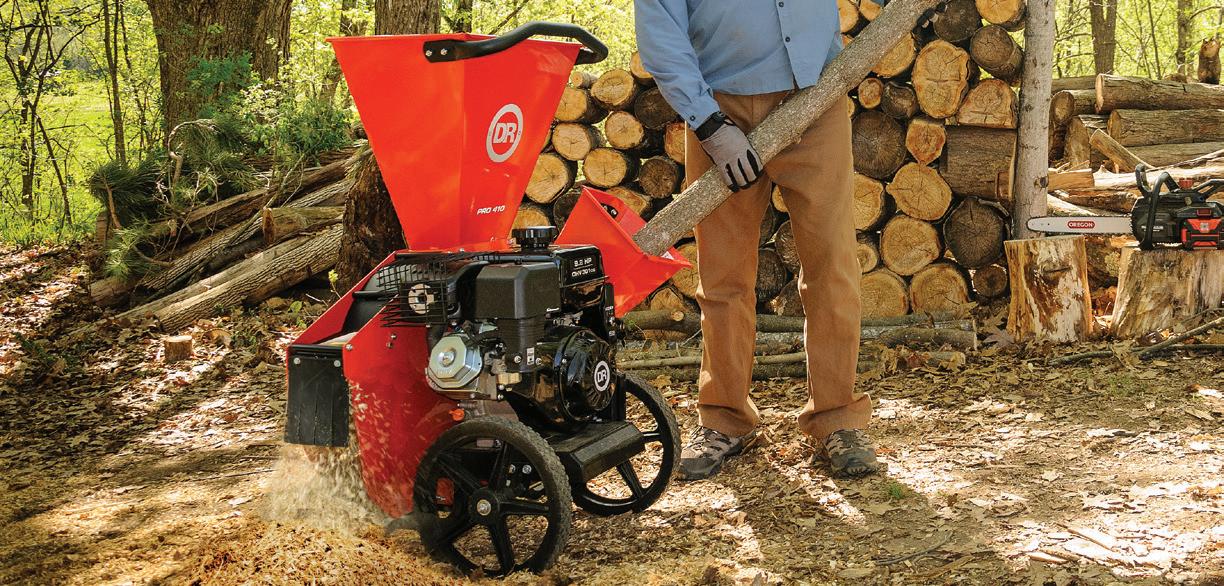
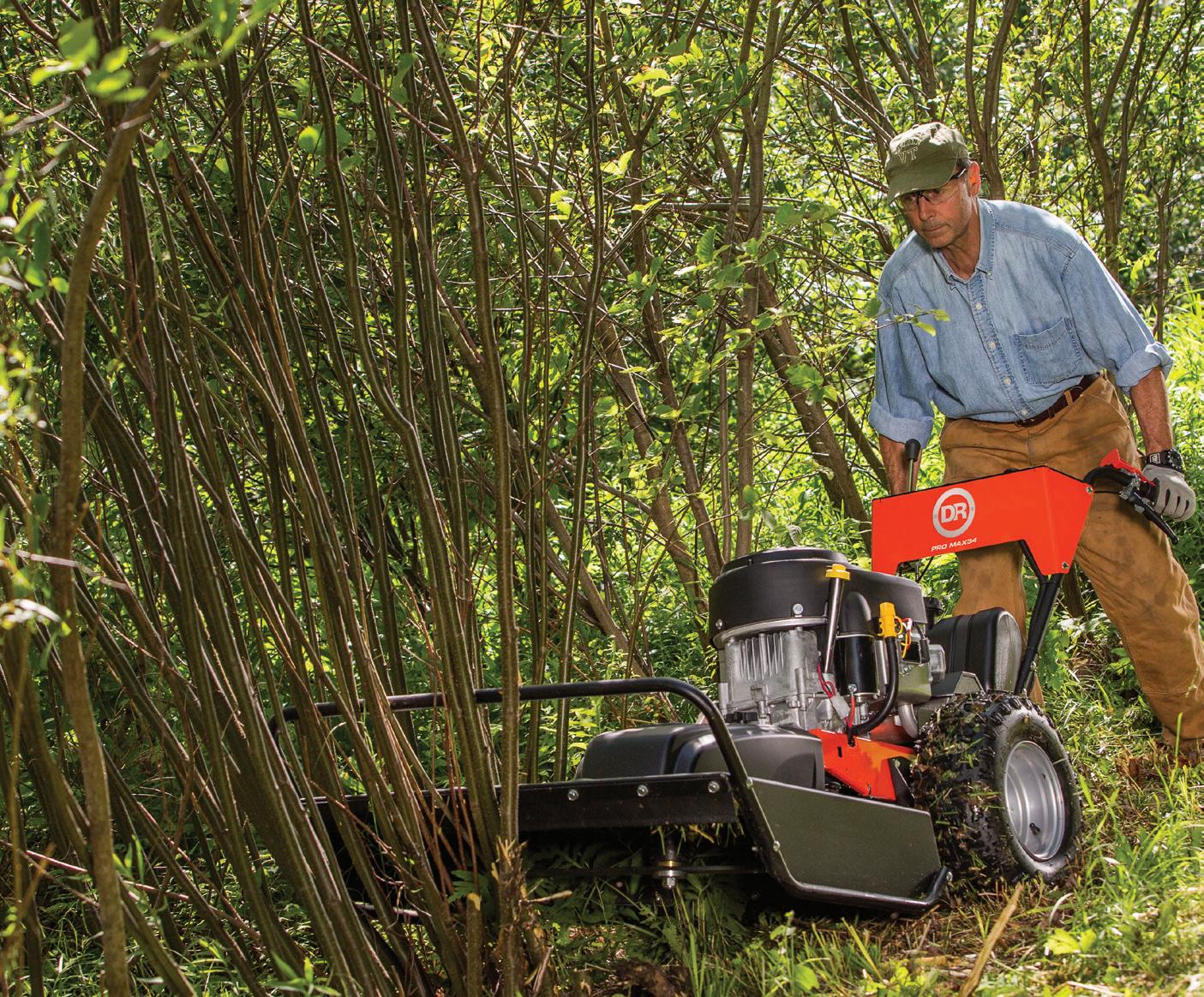







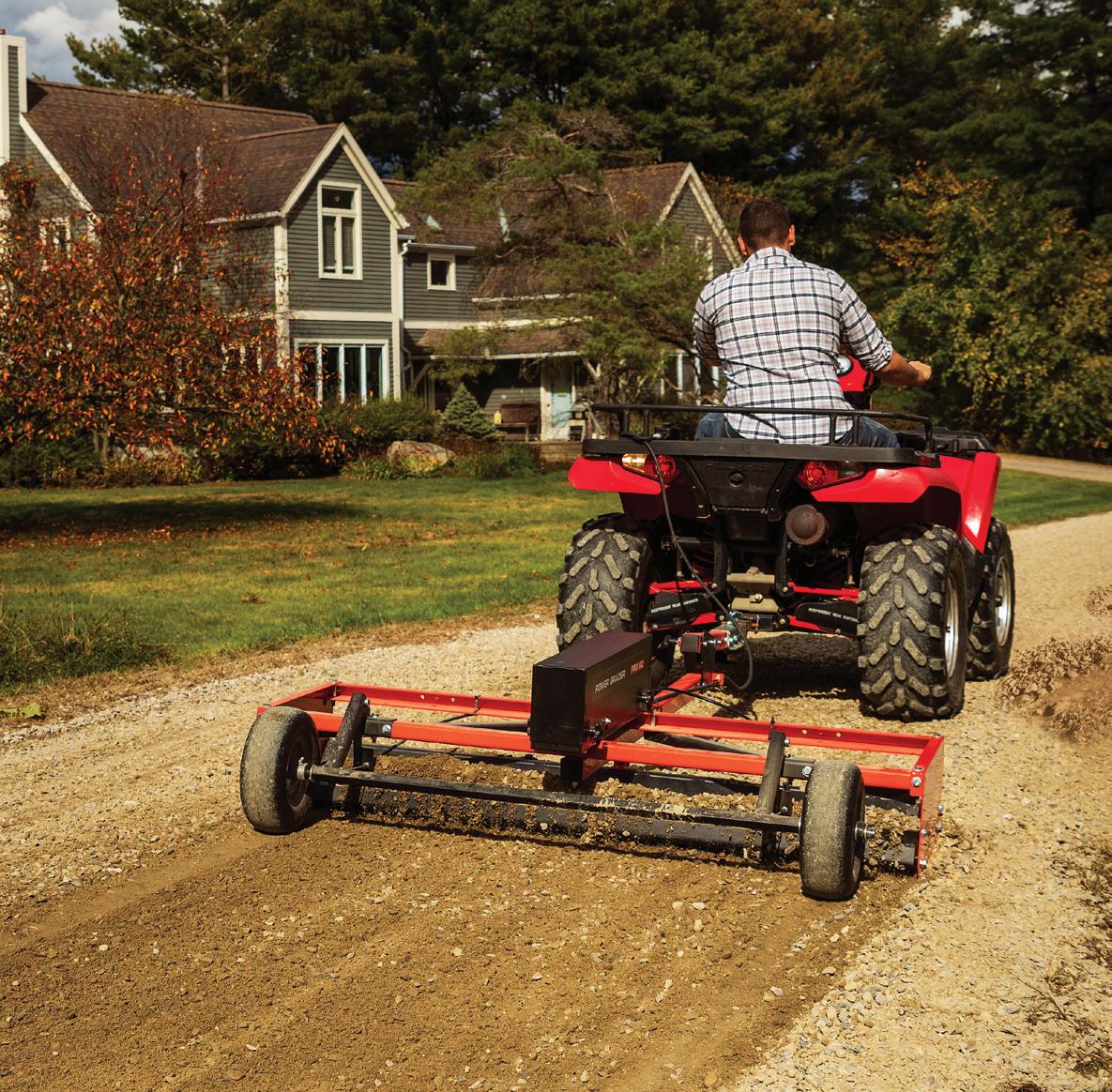




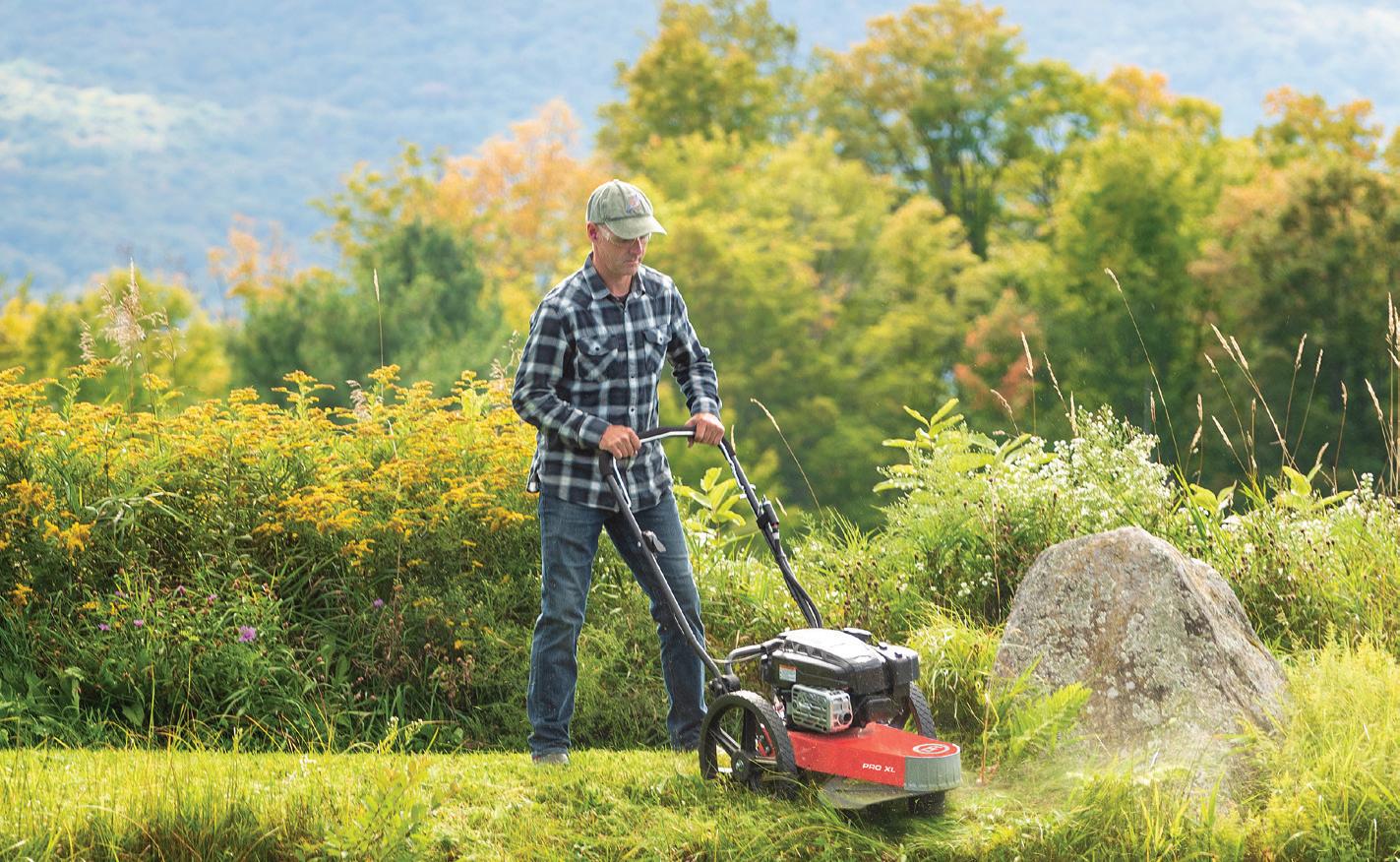

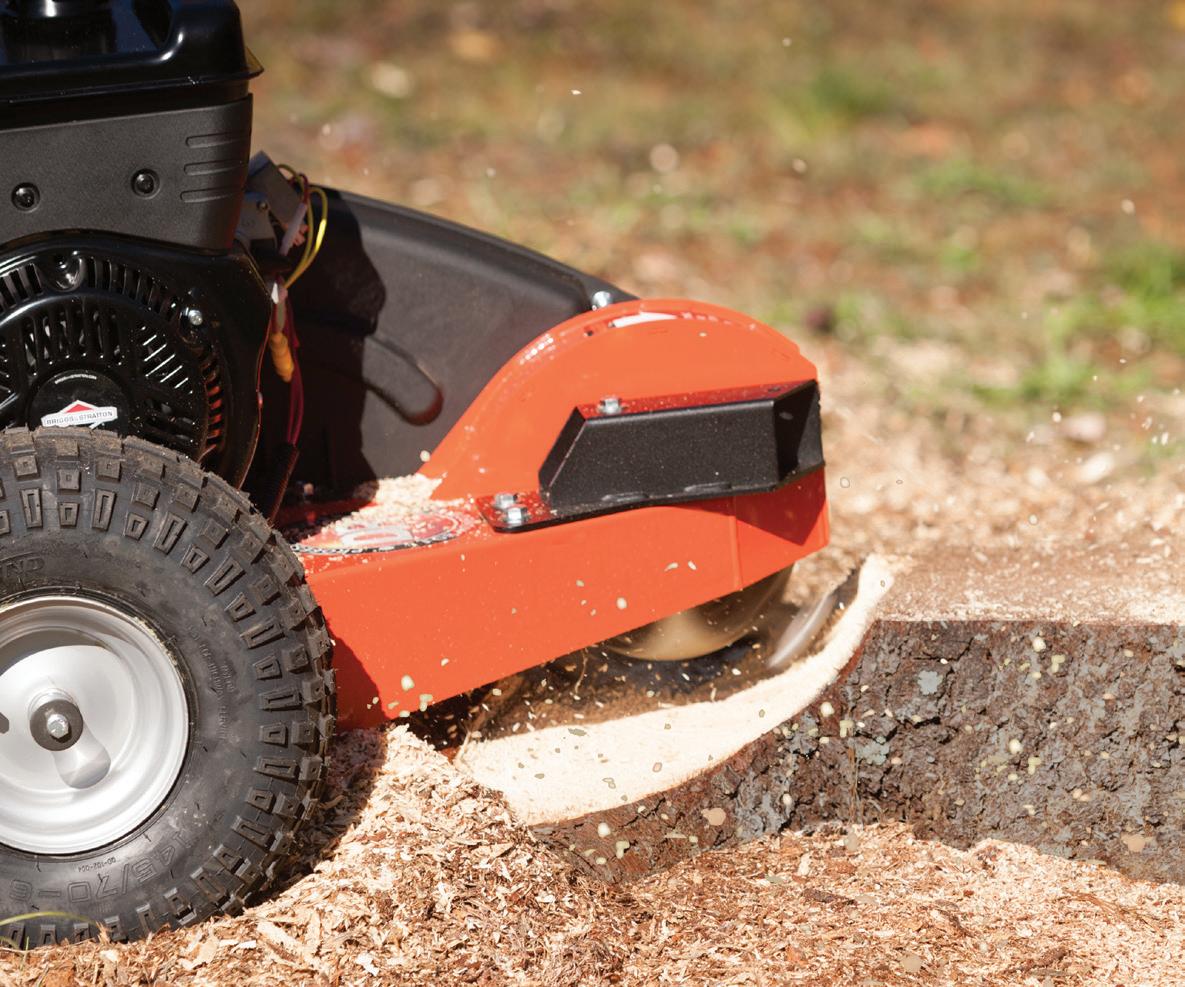









SOME LIMITATIONS APPLY FREE SHIPPING SALE! DR Power Equipment A GENERAC POWER SYSTEMS COMPANY The LEADER in Field & Brush Mowers • Up to 2X THE POWER of the competition • CUT 3" brush & thick eld grass with ease • WIDEST SELECTION of deck sizes and features • GO-ANYWHERE power steering and hydrostatic drive options DRfieldbrush.com PLUS Tow-Behind, Commercial, & NEW ELECTRIC models Stops a DR ® Brush Mower! USA ENGINEERED AND BUILT Assembled in the USA using domestic and foreign parts. • CHIP & SHRED with power to spare • BIGGER ENGINES beat the competition • BUILT USA TOUGH for smooth operation • Easy to maneuver and EASY ON YOU Devour Brush Piles with a DR ® Chipper Shredder! DRchipper.com DRpowergrader.com Make Your Driveway Like NEW with a DR ® Power Grader! USA ENGINEERED AND BUILT Assembled in the USA using domestic and foreign parts. Do it Right with DR® Starting at Just $1999 99 A • Fill in potholes & smooth out washboard • Loosen & redistribute existing material • Tow with your ATV, UTV, or tractor
• Bust sod and churn through the most compacted ground
• Prepare seedbeds or till garden waste back into your soil






• Full line includes walk-behinds, tow-behinds, and cultivators


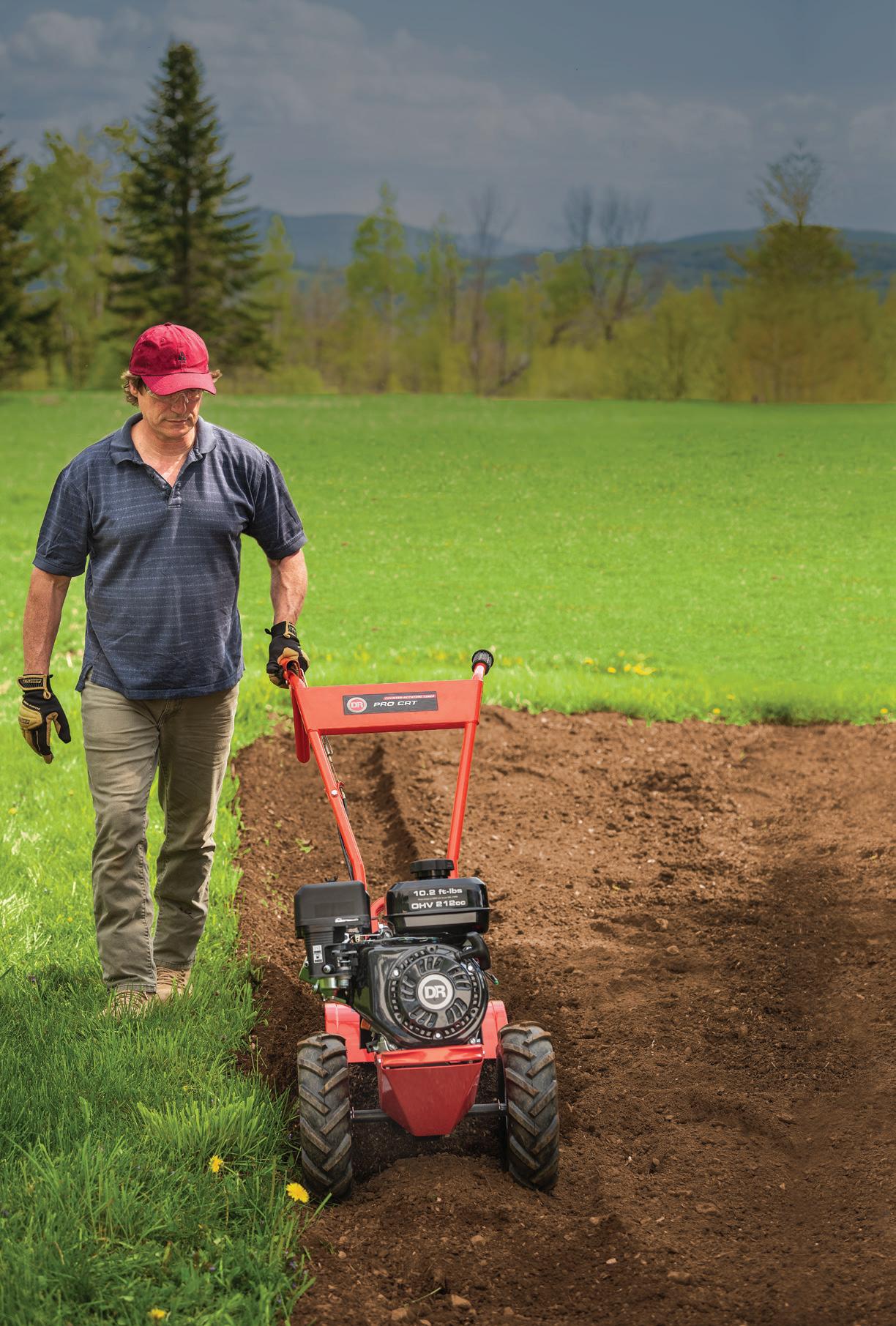




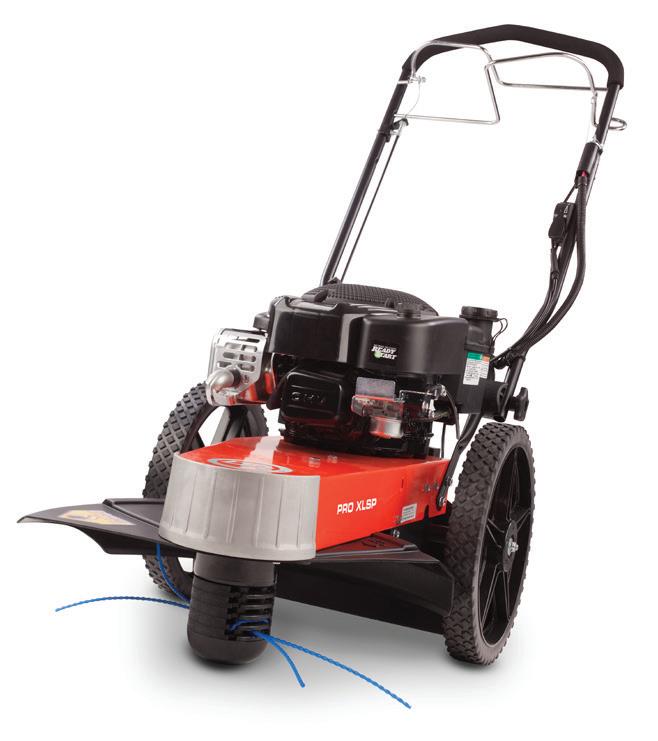


• Grind away stumps fast

• Tungsten carbidetipped teeth





• Rotary head takes 360 “bites” per second





• Self-propelled available

Request your FREE PRODUCT CATALOG Online or Toll-Free at 888-213-1240 GoDRpower.com DRrototiller.com Great Gardens Start with DR ® Rototillers! USA ENGINEERED AND BUILT Assembled in the USA using domestic and foreign parts. DRtrimmer.com • 5X the power of a handheld trimmer
TRIM precisely without arm fatigue
MOW where a bladed mower can’t
TOUGHEST
cord
Discover the POWER and PRECISION of a DR ® Trimmer Mower Make Stumps Disappear! DRstumpgrinder.com USA ENGINEERED AND BUILT Assembled in the USA using domestic and foreign parts. DR® Stump Grinder
•
•
•
trimmer
available
Self-Care with Sage
Try this reliable herb outside the confines of your kitchen to craft natural skin-supporting products.


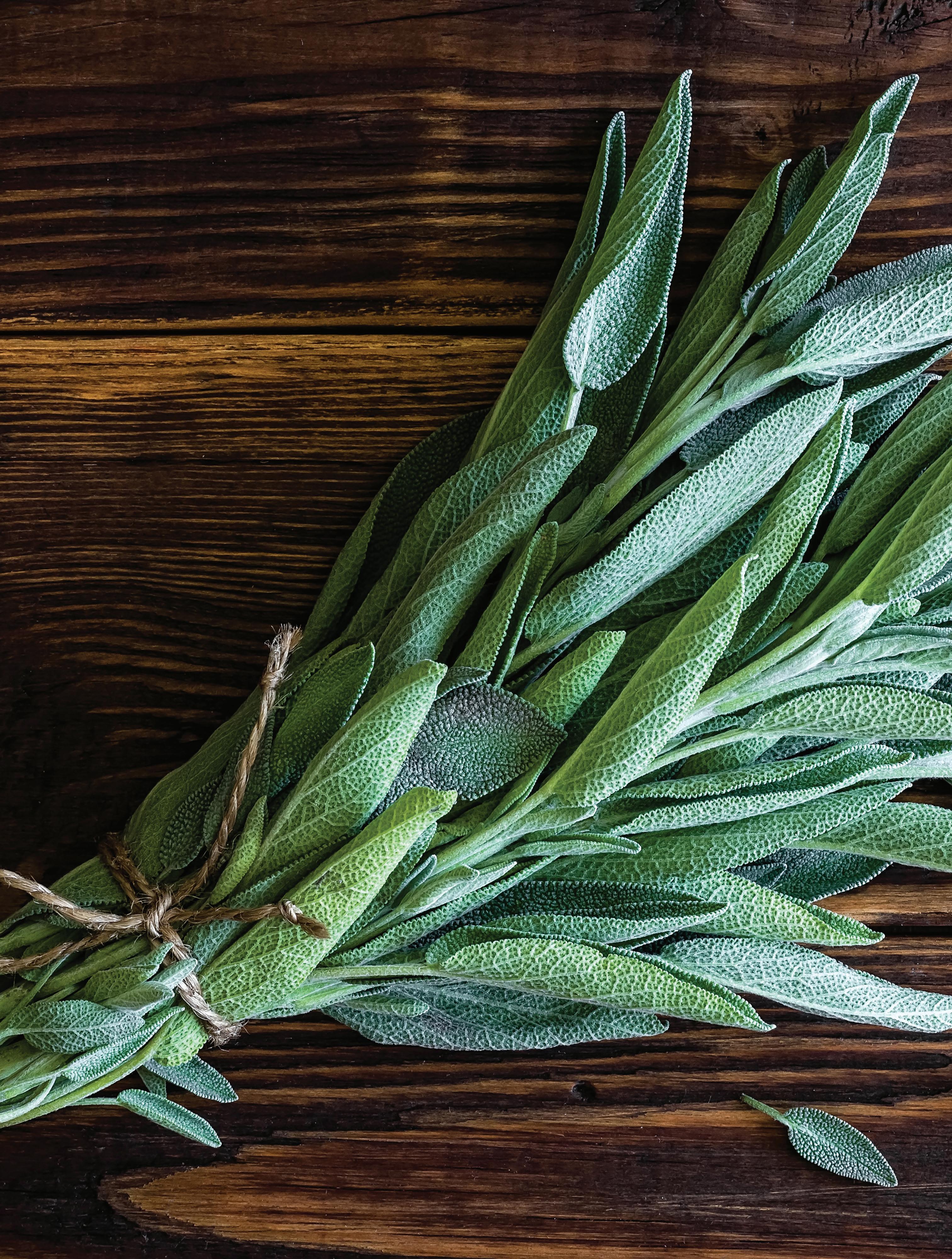 By Kami McBride
By Kami McBride
Commongarden sage, a kitchen herb typically used to season meat and sauces, has many time-tested uses beyond the stovetop. Most people think of sage for adding flavor to stuffing or for pairing with oregano for spaghetti sauce. It’s a central ingredient in Italian cuisine and has a multitude of uses in the culinary world, from making sage-infused cheese, taming the fat in pork chops and sausage, and adding depth to cream-based soups and chowders.
From Culinary to Apothecary
But you can also take sage beyond its culinary uses. Sage is a much more versatile herb than we give it credit for, and its healing applications are notable enough to give this herb the genus name Salvia , which has its roots in the Latin word salvare , meaning health, wellbeing, and “to cure.”
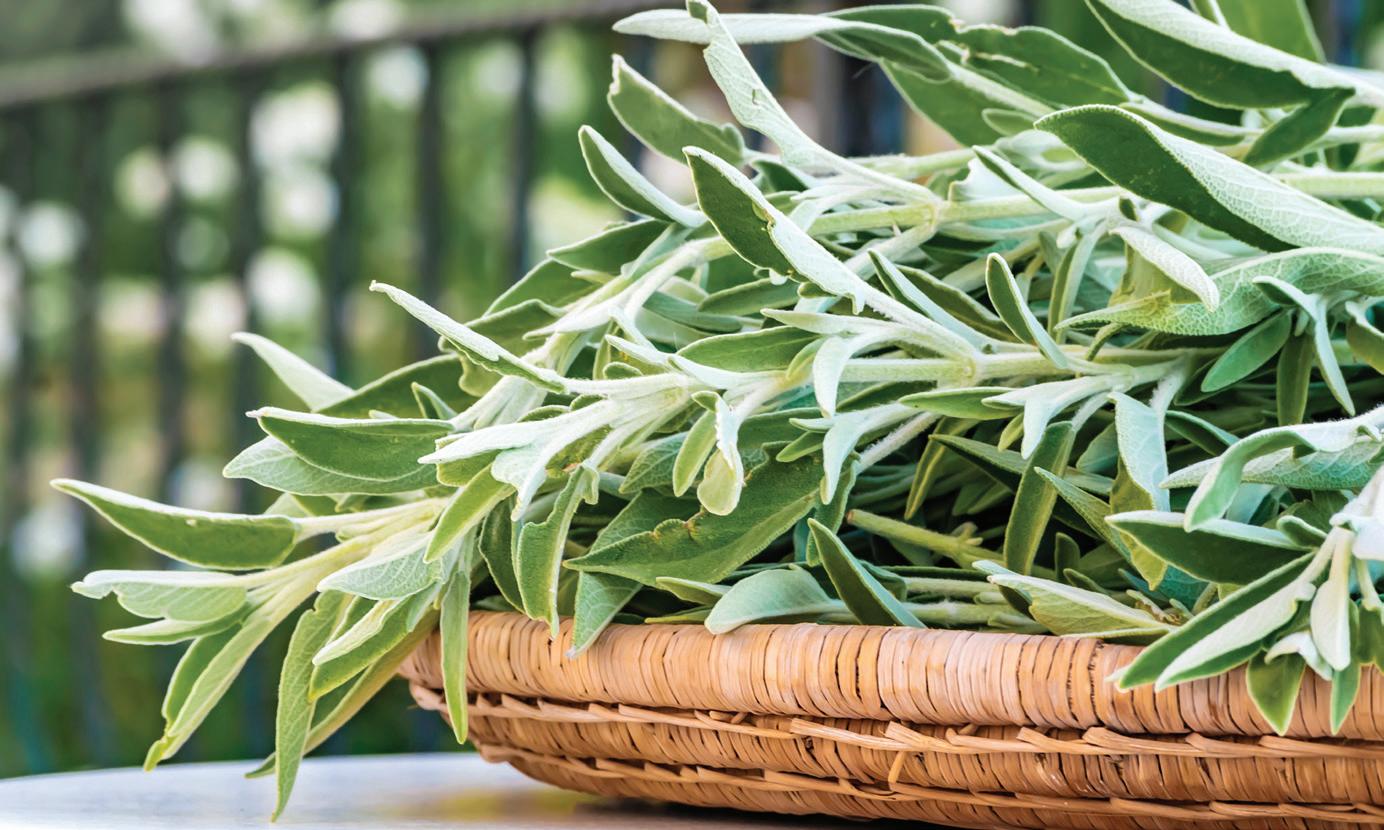
Let’s explore three resourceful ways you can use this wonderfully supportive herb to assist in everyday wellness, including a sage soak for cuts and scrapes, a sage-infused herbal bath scrub to nurture circulation and skin healing, and a lavender-sage antiperspirant powder. These recipes will help you foster long-term wellness by supporting the body’s self-healing mechanisms and avoiding the potentially harmful ingredients that can be found in many body-care products. You probably already know that the FDA allows toxic chemicals in body-care products. The cosmetic and personal-care industry is a self-regulated one so the fox is watching the chicken coop. When it comes to protecting consumers from harmful chemicals
Best Natural Fertilizer On Earth
“Chicken Soup for the Soil® improves your soil by feeding the microbes and supplying all the nutrients most fertilizers neglect.”
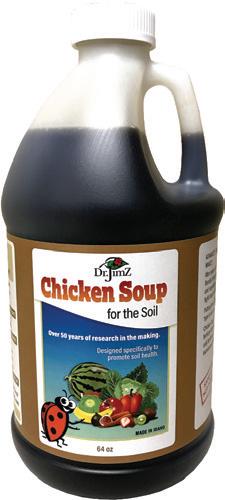
entering their blood through body-care products, nobody is guarding the gate. So making your own body-care products isn’t just a great way to save money, but you’ll also know exactly what you’re putting on your skin. Unfortunately, I’ve been duped more than once by products with “natural” labels.
I love the simplicity of using a familiar herb you probably already have in your spice rack and putting it to work in new and surprising ways. When we practice the herbal healing arts using common kitchen herbs like sage, we’re energizing a home culture that embraces taking care of our bodies with healing herbs. This, in turn, fosters a deeper connection with the Earth and a holistic lifestyle that passes this knowledge on to the next generation.
Sage’s Fortes: Sweat, Snot, and Infections
In my 35 years of teaching herbal medicine, I’ve gotten a few furrowed brows when I tell students that spicerack sage can ease sweat, snot, and infections. Students are less bewildered by the herb’s diverse uses than by having lived their entire lives to that point without hearing about them.
Of the hundreds of species in the Salvia genus, Salvia officinalis is what these recipes call for and is likely the sage you’re most familiar with. A member of the mint family, it’s native to the Mediterranean region and cultivated worldwide, thriving in sunny conditions. In the garden, it’s a dry, fragrant, and coarse-textured herb. In dishes, it brings a distinctive savory flavor, with bitter, pine, and astringent tones.
Grow higher quality fruits & vegetables with more color, better taste, less bug infestations & disease.
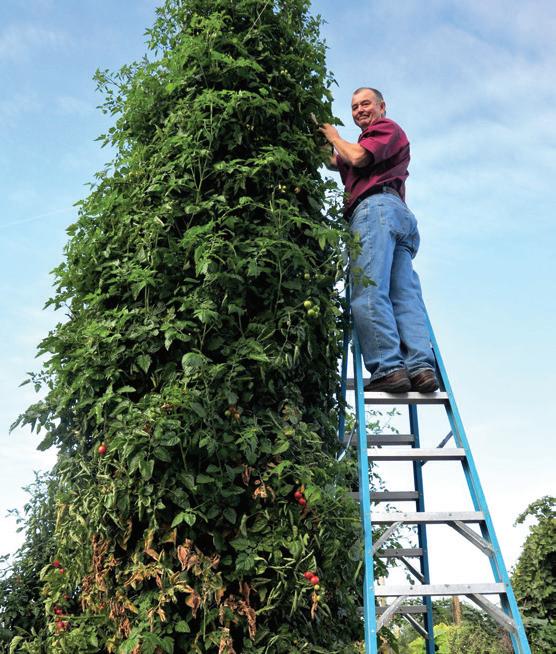
Contains all the elements in the periodic table (sea nutrients, amino acids, humic, fulvic, and other herbal extracts).

All natural, toxin free, & bioavailable.
Non-leaching formula / nutrients accumulate over time.
Perfect for gardeners, growers, and farmers. humic, ranchers and farmers.

64oz Jug

3495
+Free Shipping!!
*Makes up to 128 gallons with 1 tablespoon per gallon. Full Money Back Guarantee!
*Commercial quantities availableWorks On Pastures

888-394-4454
www.DrJimZ.com


www.Grit.com 41
A dobe S tock / t eti A n A ; P A ge 40: A dobe S tock /S unny F ore S t See #5 on page 63
Sage is a versatile herb that can promote skin healing, ease aches, and clear out respiratory passages.
Applied to the skin, sage has vulnerary (wound-healing), antimicrobial, and astringent properties that support the body’s natural healing processes. Sage also has analgesic (pain-relieving) and anti-inflammatory properties that can help ease the body’s aches. Finally, sage helps break up mucus, making it easier for the body to clear respiratory passages of phlegm.
Note: Avoid sage while pregnant or breastfeeding, as sage may slow breastmilk production, though you could potentially use this knowledge to your advantage if you’re trying to wean.
SAGE SOAK FOR CUTS AND SCRAPES
In this potent soak, sage’s vulnerary, antimicrobial, astringent, and analgesic properties offer assistance for minor cuts and irritated skin.
This is the perfect remedy for all the nicks and scratches that appear after working in the garden. I live in an area where blackberries are invasive, so I use this remedy for my perpetual blackberrybush scratches! After you’ve cleaned the wound well, use this soak to help neutralize lingering pathogens and reduce inflammation.
As a vulnerary, sage promotes the body’s natural healing process. However, if you have a chronic skin problem, such as eczema, be sure to investigate and resolve the underlying issue.
4 cups water
8 tablespoons fresh sage leaves, chopped (4 tablespoons dried)
1. Pour water into a pot.
2. Cut away stems of sage, and then chop finely.
3. Put sage into water and bring to a boil with the lid on.
4. Once boiling, turn off the heat, and then let water sit for a couple of hours to infuse.
5. Strain sage and warm the soak again before using.
6. Pour the soak into a foot basin or container large enough to accommodate whatever body part you’d like to soak.
7. To use, soak the affected area for 10 to 20 minutes.
8. If you’d like to submerge your entire body, triple the recipe and pour the sage soak into your bathwater.
SAGE SALT GLOW
Sage’s analgesic and vulnerary properties shine here. Because the skin is replete with nerve endings, applying sage topically can tame pain-related tension. Additionally, massaging the skin increases lymph flow, contributing to the immune system’s ability to respond to threats. Used over time, this salt glow may help the body remain resilient in the face of tension.
As mentioned previously, sage’s vulnerary properties can help resolve skin issues more quickly. The salt will sting any cuts or scratches you have, but ultimately, if that doesn’t bother you too much, this salt glow can help heal nicks and scrapes.
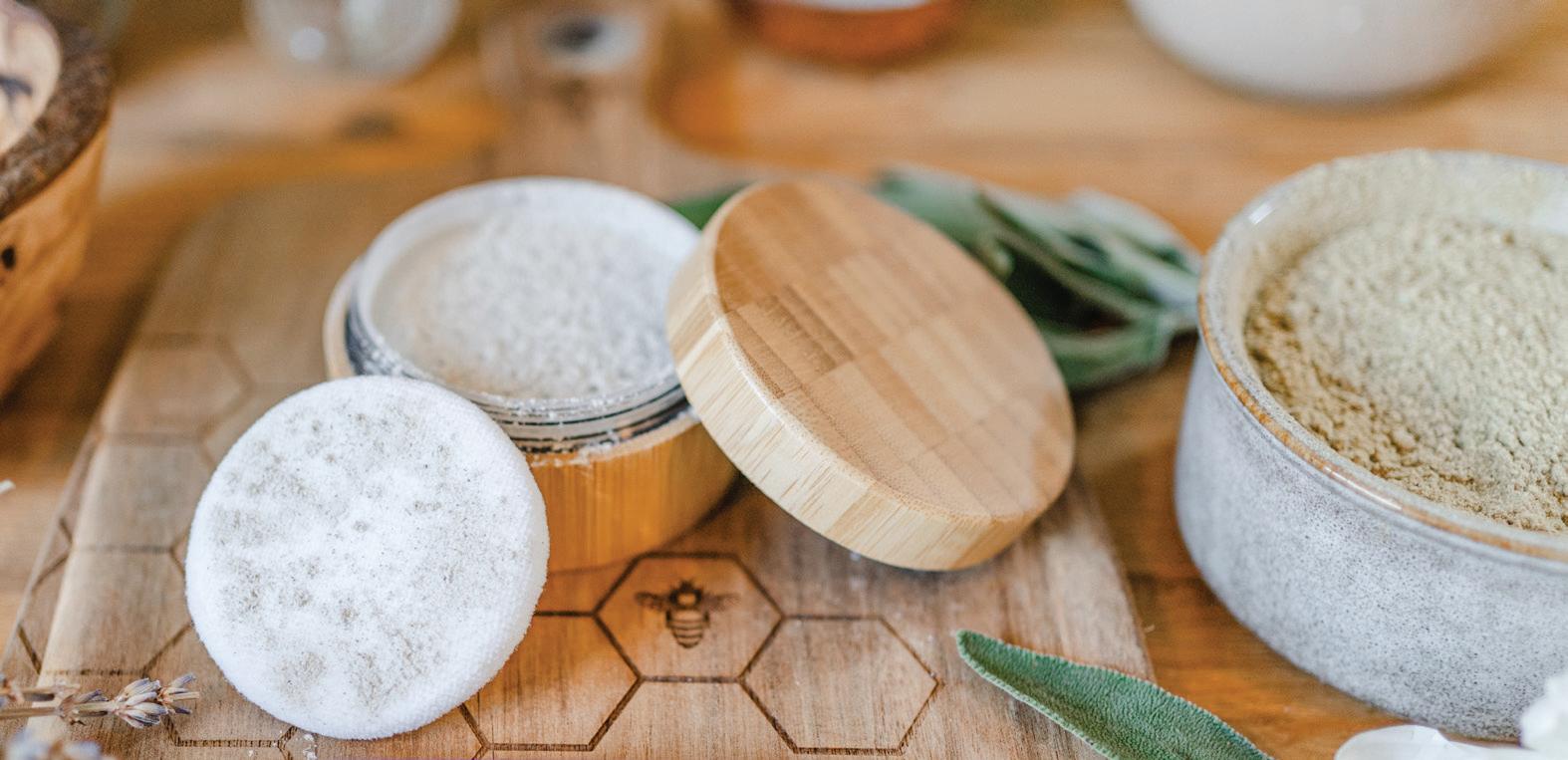
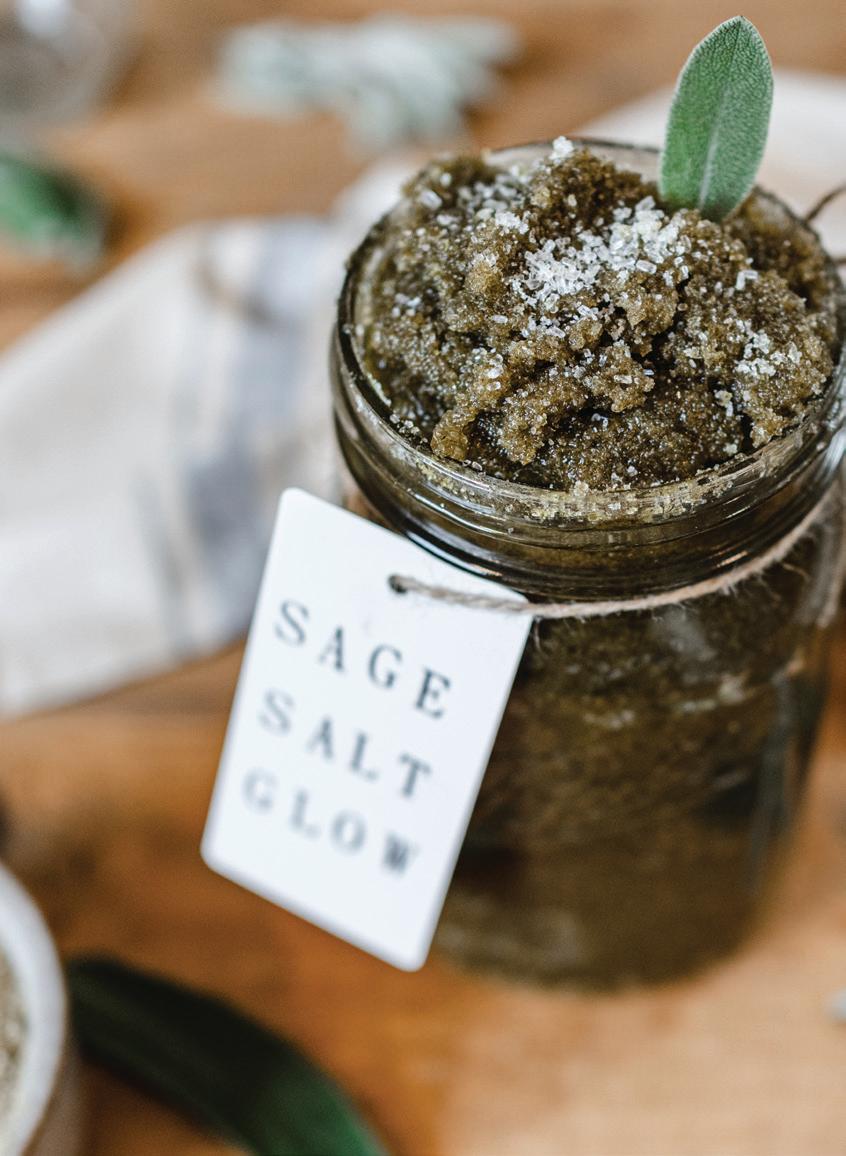
4 cups sea salt
1 cup dried, powdered sage leaves
2 cups olive oil
1. Mix sea salt, sage, and olive oil.
2. Store in an airtight container.
50HerbsEasy-to-Find and Over 250 Recipes
Using plants as medicine is an ancient and powerful tradition that connects you to the Earth; helps treat common ailments; and promotes restful sleep, relaxation, and more. The Herbal Kitchen will help you recognize the extraordinary pharmacy that probably already exists in your own kitchen. With 50 easy-to-find herbs and spices; information and tips for preparing, storing, and using them; and more than 250 simple, flavorful recipes, this book will empower you to care for your health. Whether you’re already familiar with herbs or are just starting out on the herbal path, Kami McBride offers recipes and knowledge that everyone can find beneficial.
This title is available at Store.Grit.com or by calling 866-803-7096. Mention promo code MGRPANZ5. Item #11343.
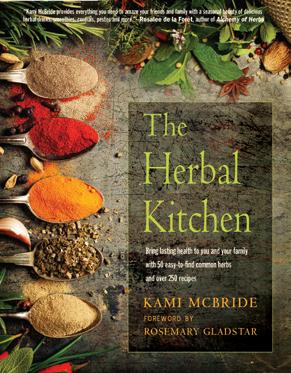
K ami m c B ride (2); P age 43: a do B e S toc K /S unny F ore S t
Sage Salt Glow
Lavender Sage Antiperspirant Powder
May/June 2023 42
3. To use, get in the shower and get wet, and then turn off the water, scrub your body, and lay on a towel for 5 to 10 minutes. If at any time you begin to feel lightheaded or your skin feels uncomfortable because of the salt, return to the shower and rinse well. Salt is dehydrating, so make sure to stay well-hydrated during this process. You can also use this as a foot or hand scrub by following the same steps.
4. You can apply the salt glow 1 to 3 times per week.

Note: If you don’t have powdered sage on hand, put dried sage leaves into a coffee blender reserved for herbs and powder them yourself.
LAVENDER SAGE ANTIPERSPIRANT POWDER
Sage’s astringent, drying tannins reduce excess sweat, making it an appropriate addition to this homemade antiperspirant powder. Toxins can be found in most store-bought antiperspirants. I’m emphatic about getting the chemicals out of our body-care products; it’s one of the reasons I’ve been using this powder for decades and teaching others to make it for years. My students love the results and are often surprised by how effective this powder is.
1⁄ 2 cup corn starch
1⁄ 2 cup bentonite clay
1⁄4 cup dried, powdered sage leaves
1⁄ 8 cup dried, powdered lavender fl owers
1. Mix all ingredients together for a subtly scented antiperspirant powder.
2. Store in a powder bottle, lidded jar, or small bowl with a lid.
3. To use antiperspirant, apply as needed to underarms.


Sage and the Herbal Healing Arts: The Future of Wellness

Can you see why sage’s diverse properties make it an herb I always have growing in the garden? And this is just a glimpse into sage’s many uses, as students in my herb courses know.
Sage can also be used in a decongesting steam, a calming tea for hot ashes, a healing rinse for gums, and a digestionpromoting herbal butter.
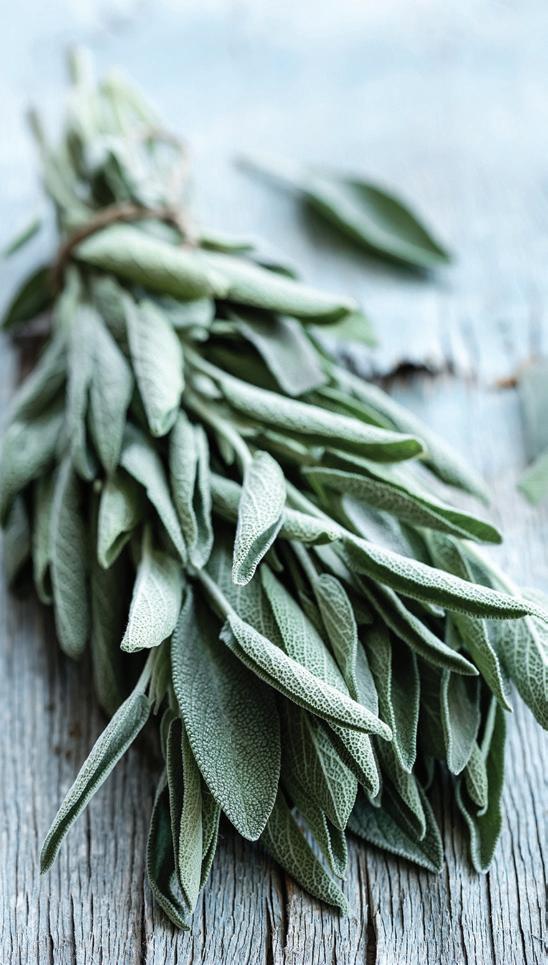
When we learn that we can depend on herbs to support our health and tend to minor ailments at home, we also awaken our innate connection to plants. The rst step on this path starts wherever you are, by trying a single herbal kitchen remedy. Every day, it seems more of us are taking this path, shifting the cultural compass so coming generations will be raised knowing how to work with the gifts of the Earth for the wellness of both people
and the planet. When we work with healing plants, it becomes an embodied model of living sustainably that can help guide us into the future.

Kami McBride has taught herbal medicine for 35 years, and she is the author of The Herbal Kitchen. Her online herb classes demystify natural remedies and help empower people with simple, proactive health-care routines to care for common ailments and to prevent illness. Find Kami on social media @KamiMcBride or online at www.KamiMcBride.com.

April Jones and Carolyn Jones featured on our podcast. DON’T MISS IT
Learn how herbs can help assist in healing physical and emotional trauma. Herbs
#11 on page 63 www.Grit.com 43
www.MotherEarthNews.com/Podcast/Healing-Herbs
for Health and Healing See
Choosing the AnimalRightFeed

Keep your animals healthy by understanding the different kinds of feeds available.

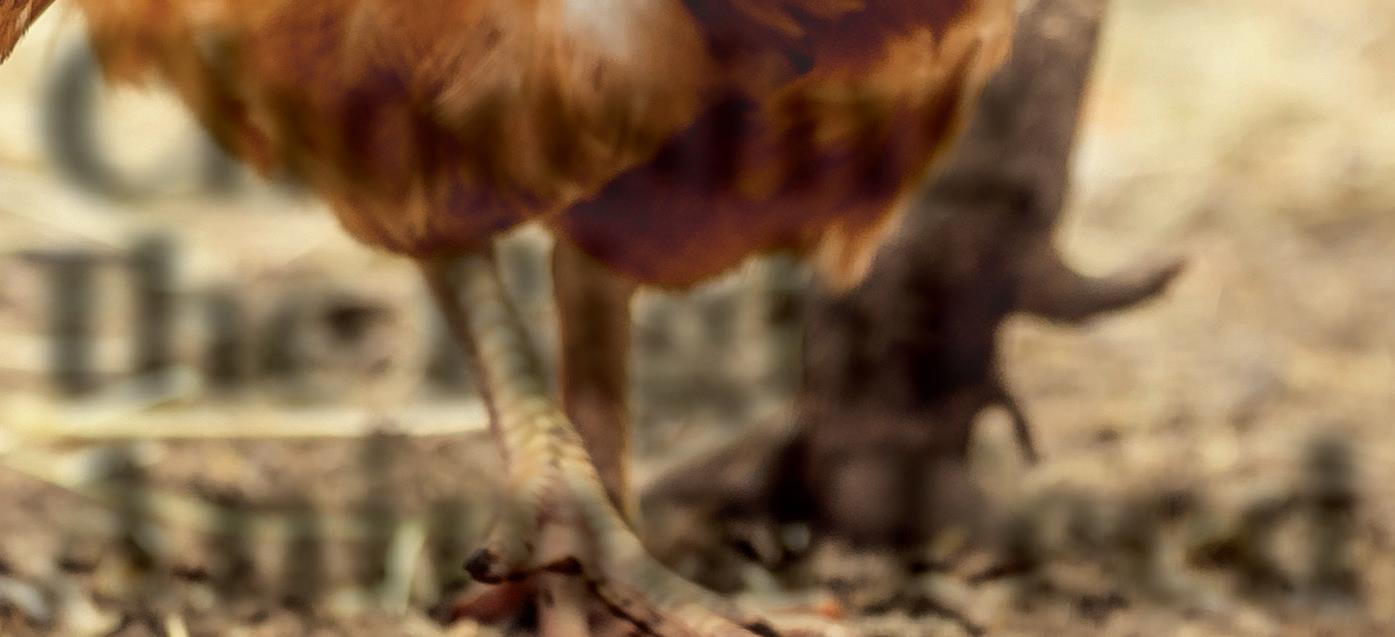


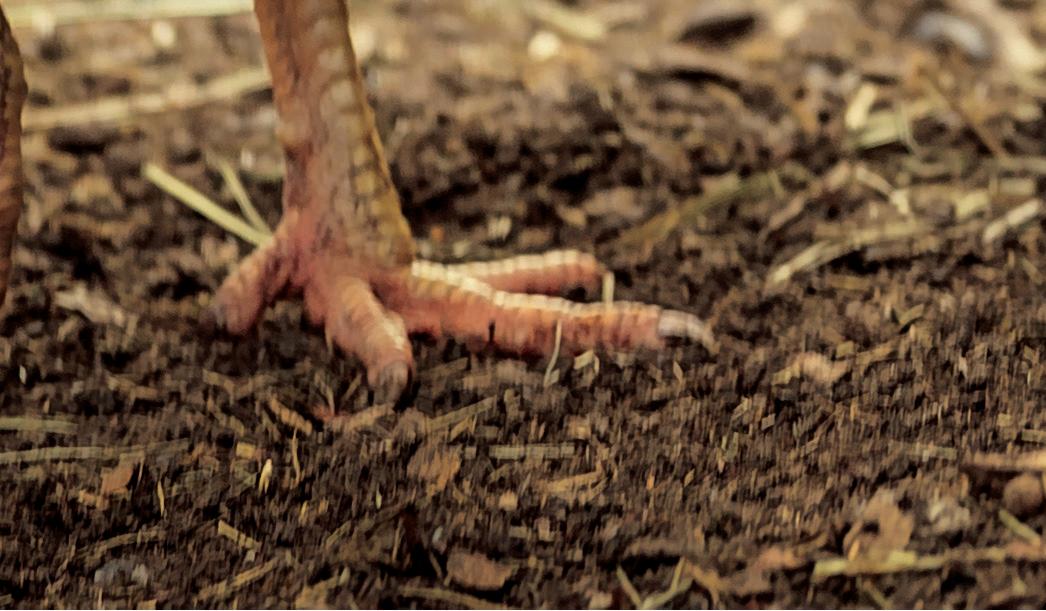

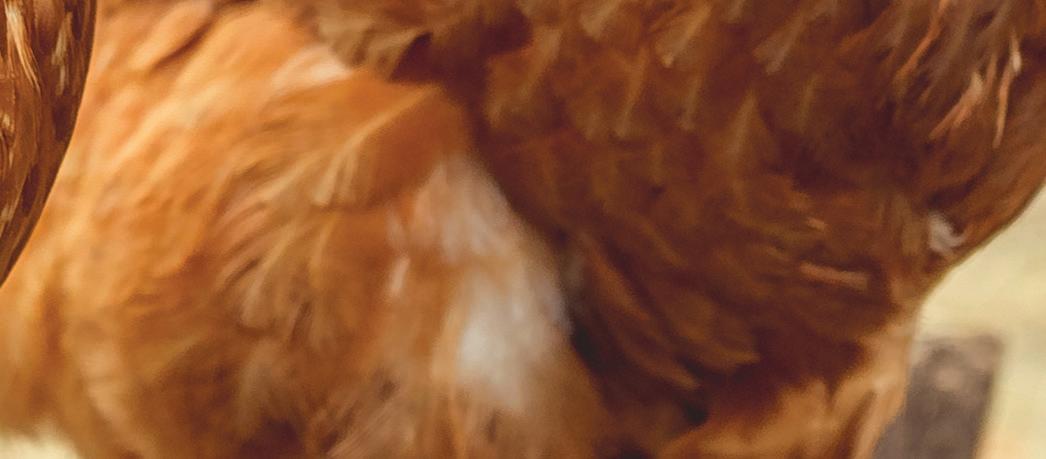
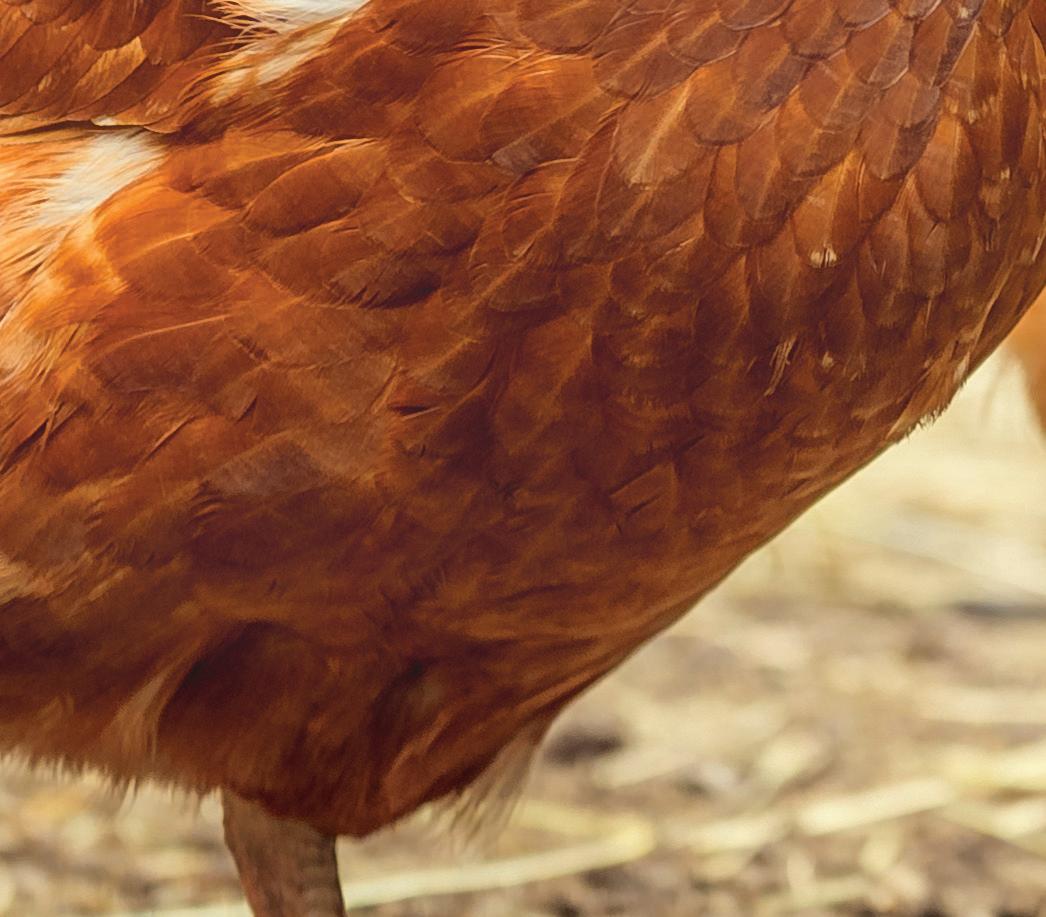
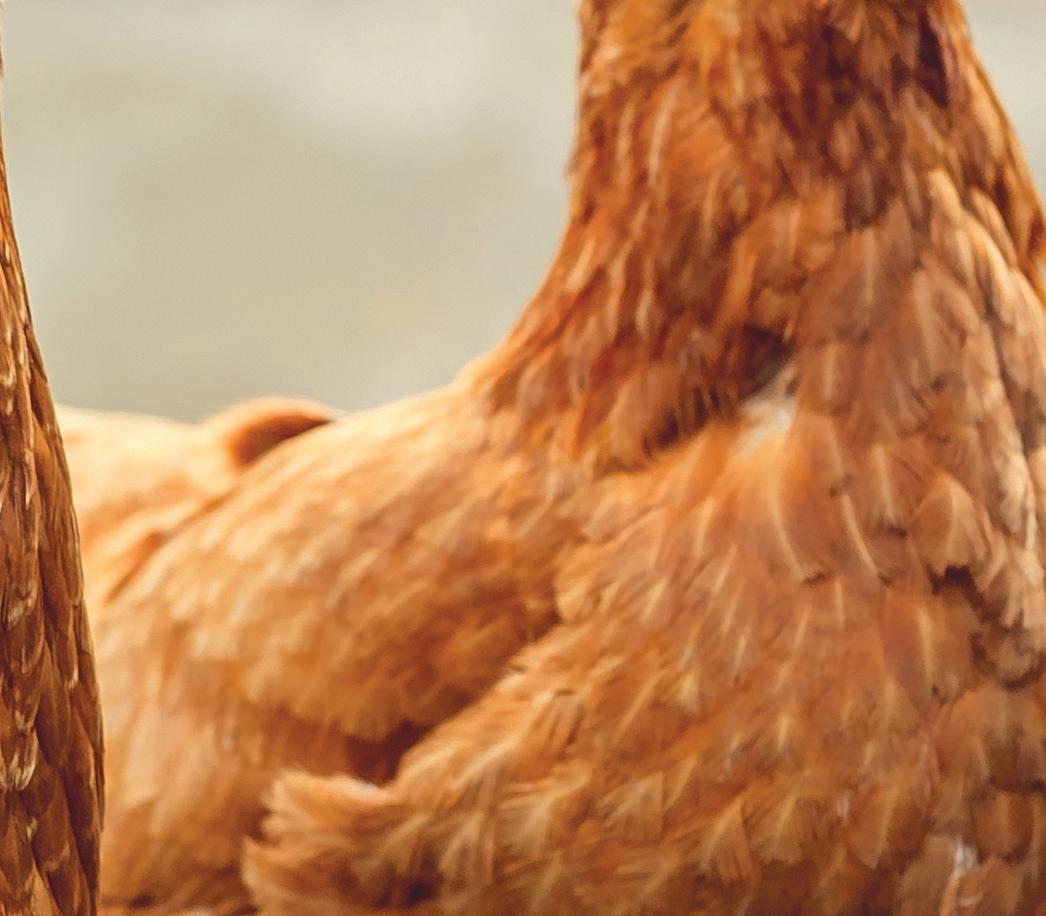
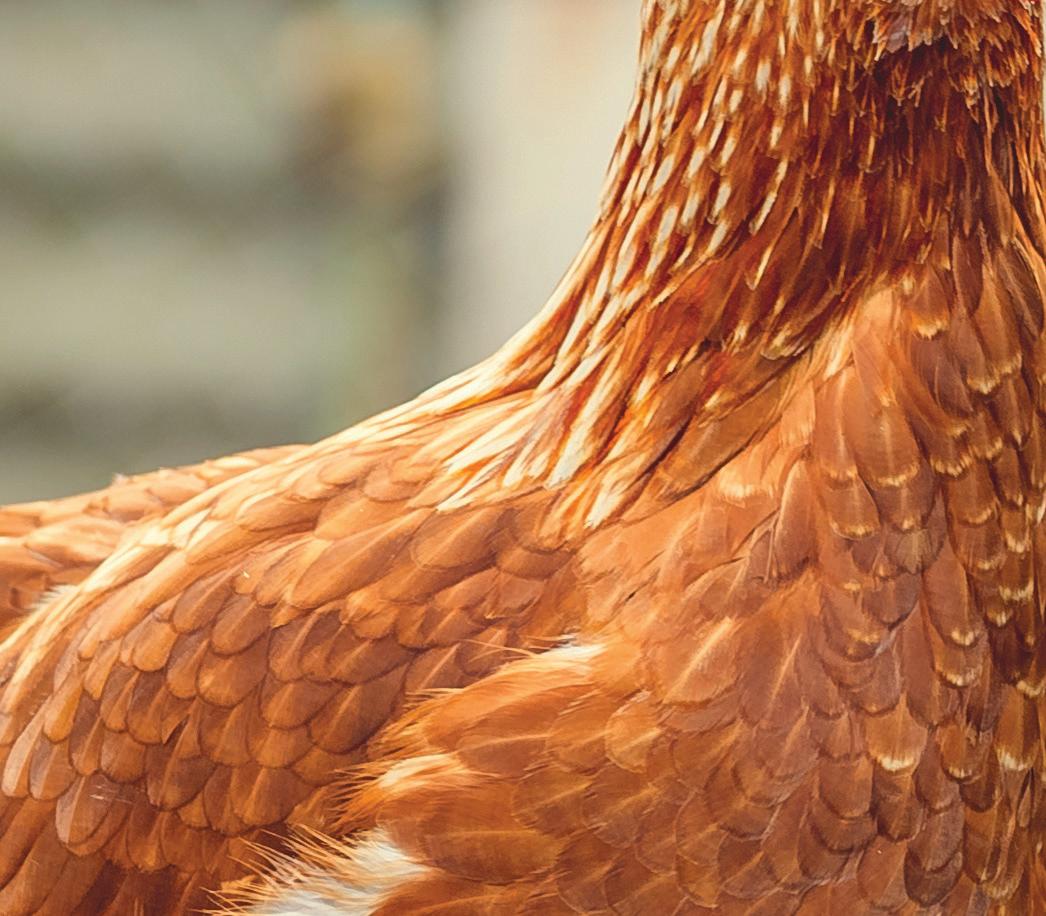

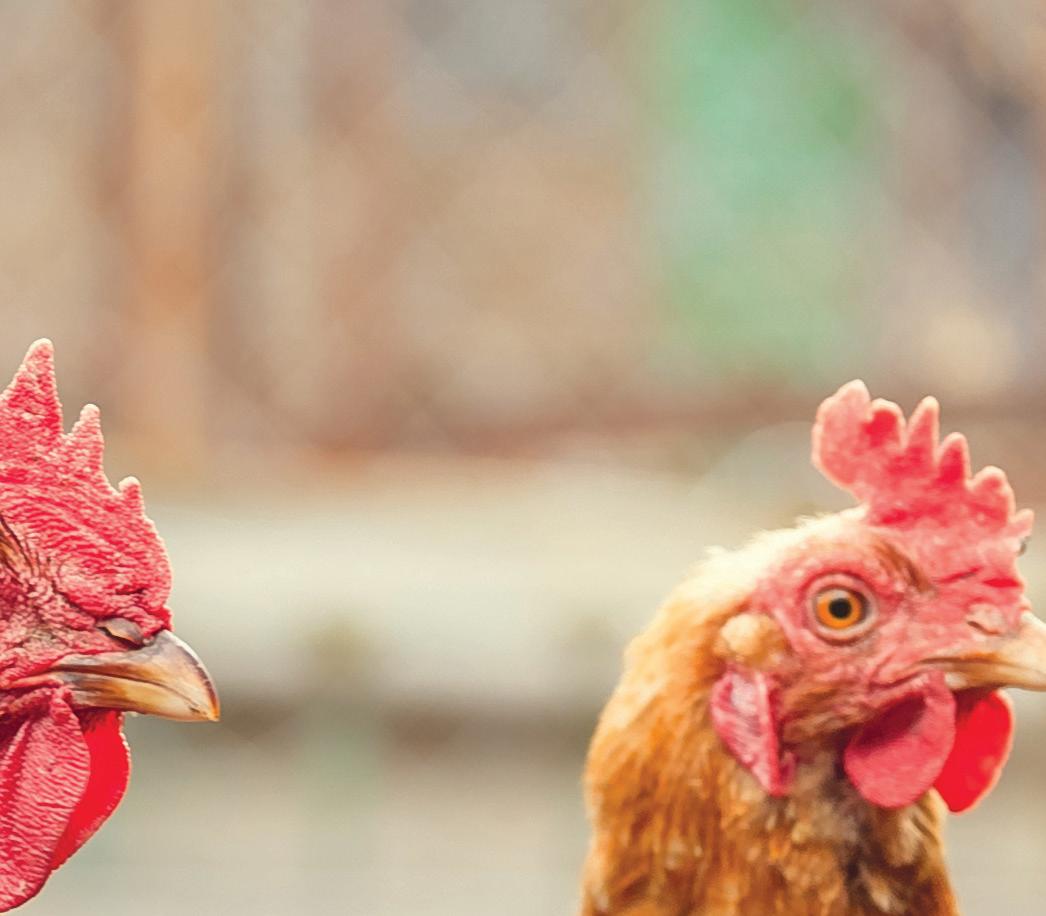
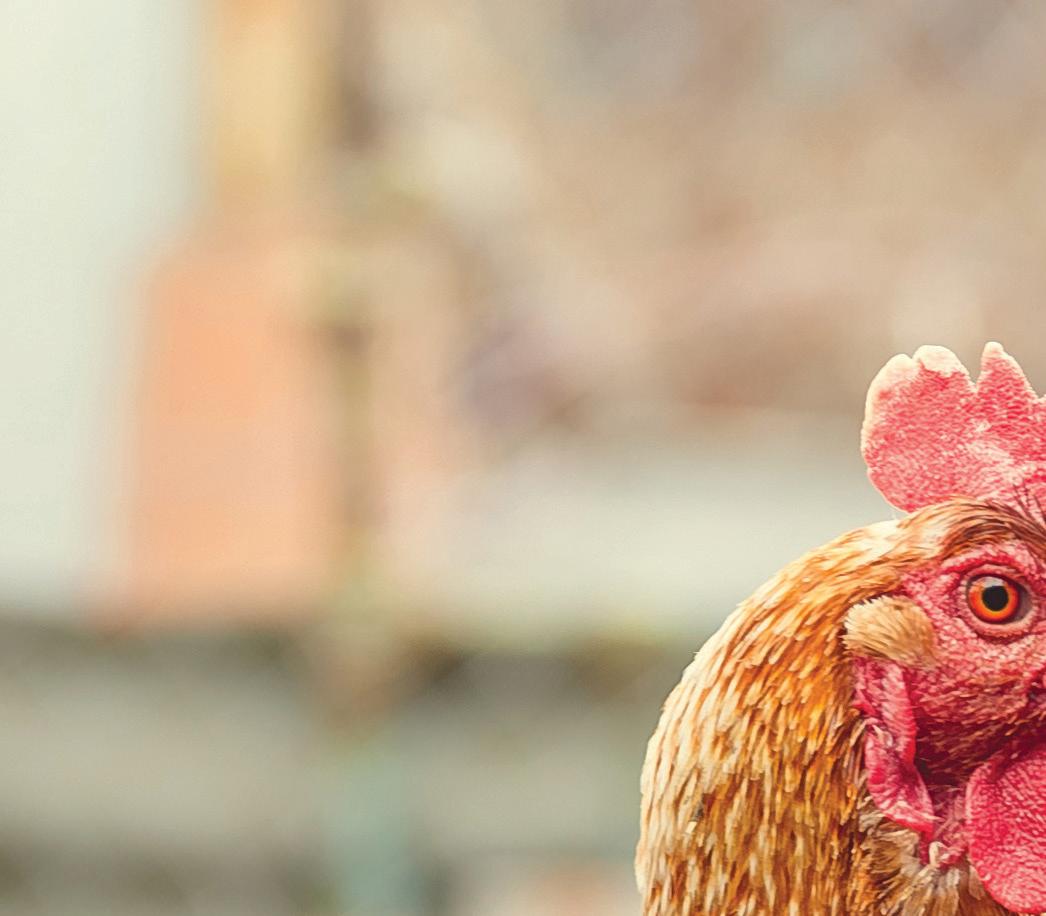 By Virginia Montgomery
By Virginia Montgomery
at my local feed store, I was often asked questions about the various feeds we carried. As someone raised around livestock, I usually had the answers, and when I didn’t, I researched them.
Like us, animals have speci c nutritional requirements to thrive. While we try our hardest to cut costs where we can, giving our livestock high-quality feed is important. When an animal’s diet doesn’t provide all its nutritional requirements, the animal suffers, as does its production. What you feed your animals in terms of nutrition is what you’ll get from them in the form of meat, milk, or eggs.
If you educate yourself on the different types of feed, your shopping experience will be much easier, and you can con dently purchase the correct thing each time. That type of thorough education goes beyond what can be covered in one article, but here are some guidelines to get you started.

Concentrates
Concentrated feed, or concentrates, is a high-protein and low- ber feed that

When I workedcontains vitamins and minerals. This feed is most commonly made of cereal grains, soybean meal, molasses, and some byproducts, such as rice bran. These ingredients are also found in sweet feed, which is a great feed for meat animals. Pigs grow especially well on concentrates, because it helps them gain weight.
Take care, though, because large amounts of concentrates can cause issues with ruminants, including rumen acidosis (commonly known as “grain overload”), a metabolic disease that can lead to death.

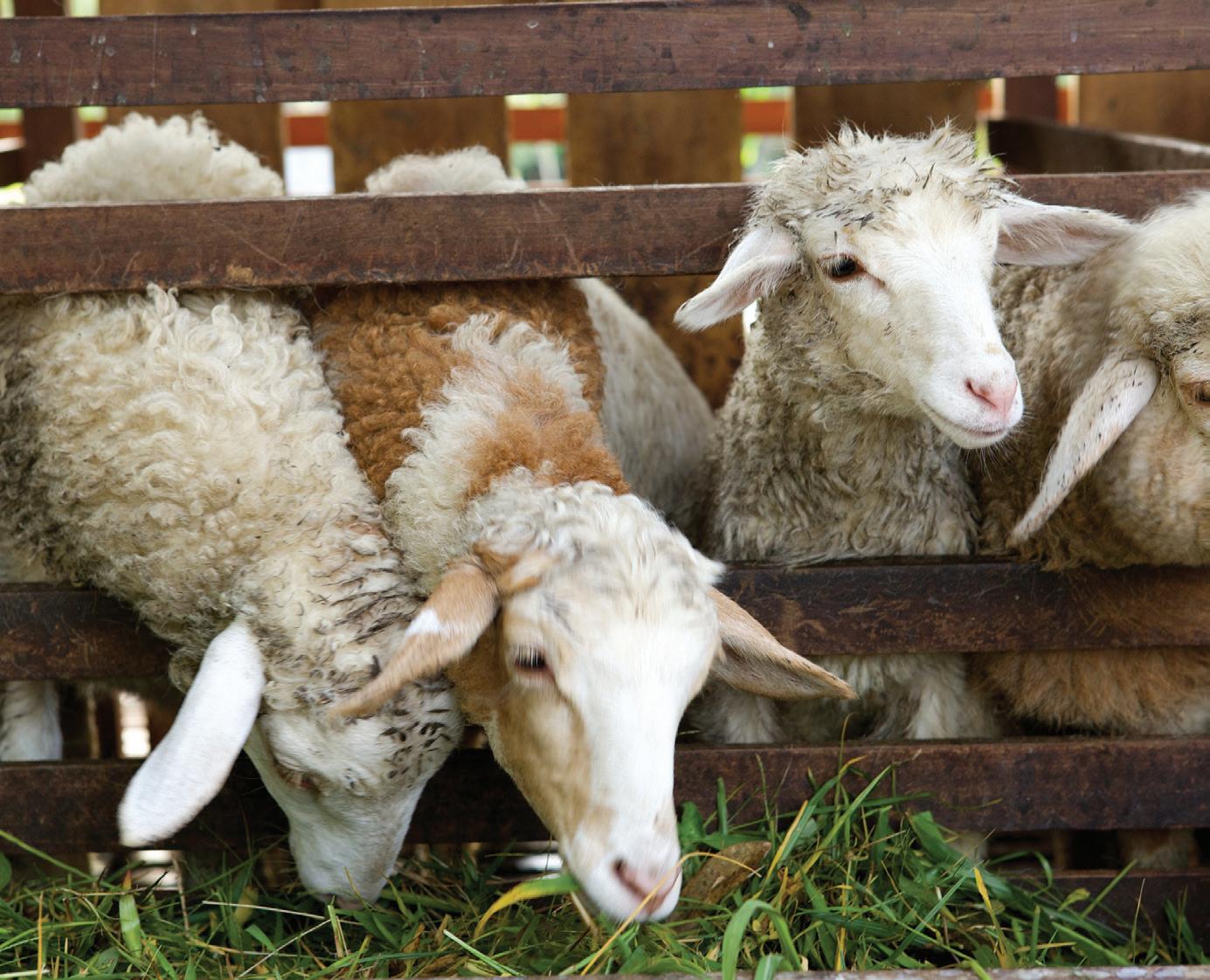
Roughages
Roughages are high in ber and include hay, pasture grasses, silage (fermented pasture grass), and root crops. Many farm animals already have access to pasture grass, and commercially produced silages, hay, and root crops come in a variety of options.
When considering bales of hay or silage, always look for ones that are dry and mold-free. Check for poisonous plants in the mix, which can happen if the eld had poisonous plants growing in it when it was cut. Hay and silage should have
www.Grit.com 45
A DOBE S TOCK /I VAN ; O PPOSITE : A DOBE S TOCK /A NTON D IOS See #19 on page 63
New coop lights!
For bales of hay or silage, select those that are dry and mold-free with minimal amounts of seeds and dust.
minimal amounts of dust, stems, and seeds. Your animals may pick out any seeds, but dust can cause respiratory issues. Look for green hay, which indicates high protein and vitamin levels and suggests the hay didn’t undergo any harsh conditions during cutting and storing, which can cause mold to develop.
There are many different types of hay including grass, legume, mixed, and cereal grain all of which vary in price and nutrients. Availability might depend on your region.
Grass hay is a good option for most animals, because its fiber content helps aid
digestion. Rabbits, for example, should be freely given grass hay. Examples of grass hay are orchardgrass, timothy, fescue, and bluegrass.
Legume-based hay is high in protein, and includes alfalfa hay, birdsfoot trefoil, white clover, and red clover. It’s good for dairy animals and young animals, but can often be too rich for most other animals, including rabbits. Rabbits fed alfalfa hay are at risk for kidney issues.
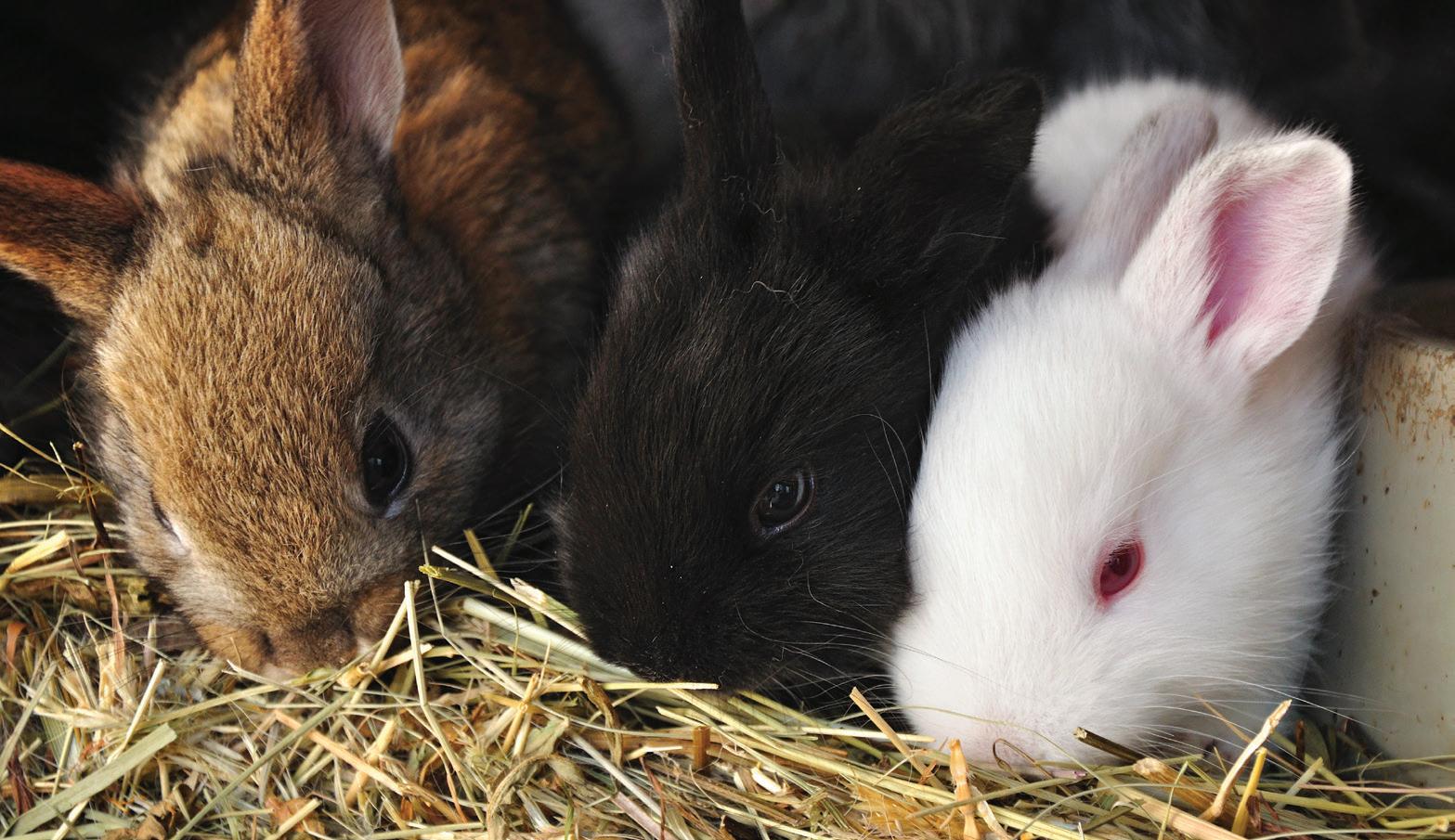
Mixed hay is usually a blend of grass and legume hay. This helps provide a balanced diet and can offer great roughage for mothers and babies.
Cereal hay is similar to legume-based hay. Examples of cereal hay include barley, oats, and rye.
This hay is high in sugars, so it should be given sparingly. It can sometimes be cheaper than other types of hay, but if it’s cut too late, it becomes similar to straw and most animals won’t eat it. It also has fewer nutrients than other types of hay.
Mixed Feeds
Mixed feeds are a combination of various grains, roughages, and concentrates that help balance animals’ diets. Mixed feeds come in the form of sweet feed, scratch, and pellets.
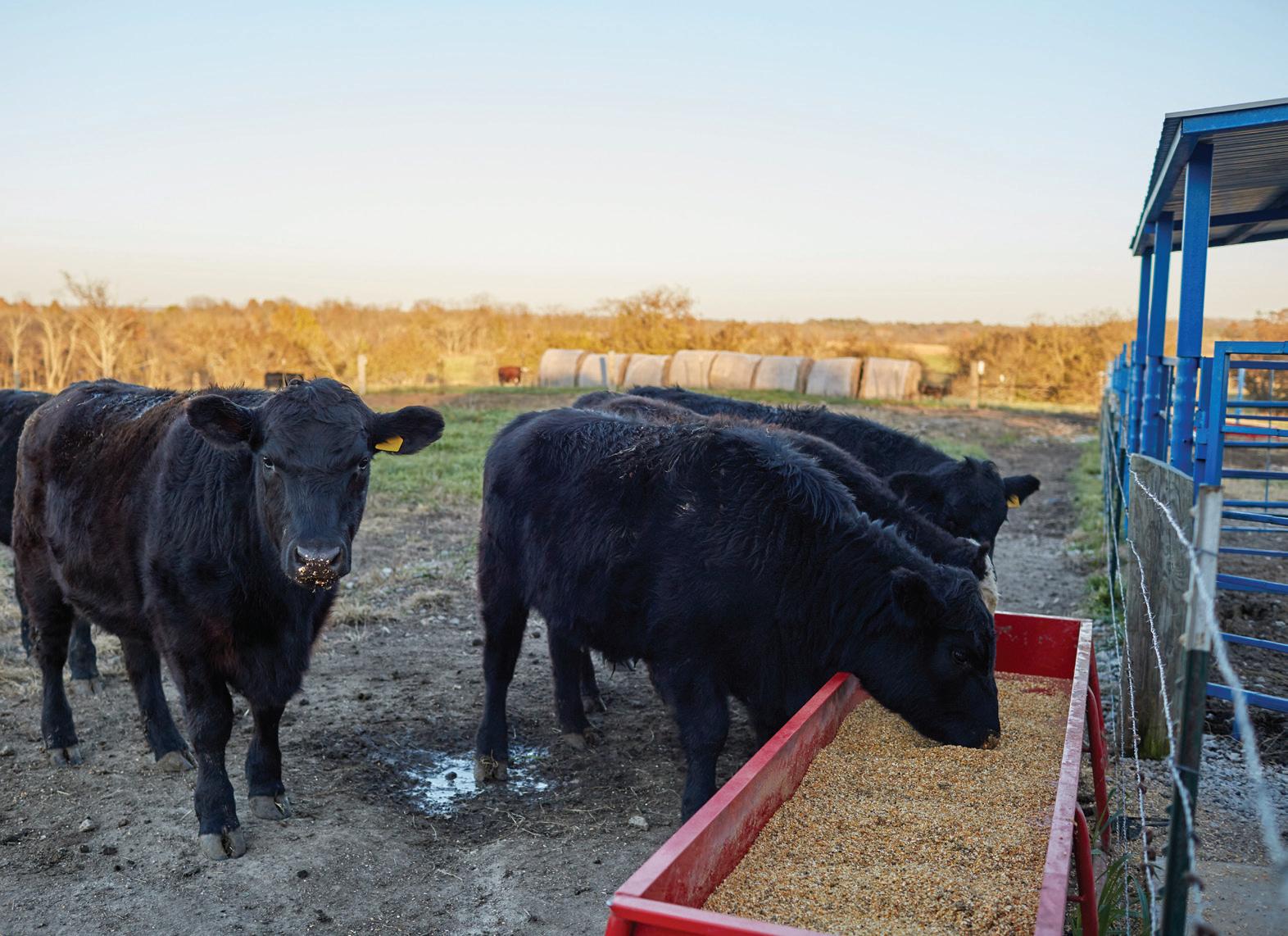
Pellets will generally contain all the nutrients your animals need. They’re tailored to each type of animal, since different species have different nutritional needs. For example, goats need copper, but copper can be deadly to sheep, so your average sheep-and-goat feed will omit it. If you choose this type of combination feed for your goats, you’ll need to give them a copper supplement.
Mixed feeds include show feed, grower feed, complete feed, and those feeds made especially for chickens. Show feed helps keep the coat and body of a show animal in peak condition. Grower feed is excellent for young animals that have been weaned, while complete feed is a maintenance feed. Layer feed has a higher calcium content for helping laying chickens create strong eggshells.
I use mixed feeds in winter, since they provide more calories than other feeds. They can also be a great topper or supplement if your animals need more calories.
Chicken Feed
Chickens eat a varied diet that includes both meat and vegetation. They’re opportunistic eaters and can often be seen indulging on mice and other small animals around the farm. As you’re shopping for chicken feed, you’ll see these common types on the shelves.
Starter and grower. Starter feed is vital for chicks. It comes in smaller pieces, which are easier for them to eat, and it’s high in protein to help them grow. Starter feed
F rom top A dobe S tock / c olby ; A dobe S tock / meryll
When feeding ruminants concentrates, be careful not to give them too much, which can result in rumen acidosis.
May/June 2023 46
Grass hay is a vital part of a rabbit’s diet, since the fiber in hay helps its unique digestive system.
can be either medicated or unmedicated. Medicated feed contains the antiprotozoal coccidiostat to help prevent coccidia parasite infection, which is common in young birds.
Grower feed is similar to and often interchangeable with starter feed. Grower feed is perfect for Cornish Crosses, which need lots of protein to help them grow as quickly as they do. They require a feed that’s at least 20% protein.
Layer. As the name implies, layer feed is ideal for egg-producing chickens. It contains around 18% protein and comes in both pellets and crumbles. I prefer pellets for my flock, as I find less feed is wasted that way.
Layer feed can have a variety of ingredients that’ll improve egg nutrition. Some contain omega-3 fatty acid, which produces brighter yolks and more nutrientdense eggs.
Scratch. Chicken scratch consists of several types of seeds and grains, but it isn’t considered a full-blown feed. It’s more of a “treat” to be given in addition to a regular
Starter feed is crucial for getting chicks off to a good start. It’s high in protein and comes in smaller pieces than other chicken feed, making it easier for chicks to eat.

diet. It can’t be the sole source of nutrition for a flock, because there just isn’t enough to it, especially for laying hens. I love using it in the winter to give my birds a little boost in the cold.
Other Considerations

Beyond specific types of feed, there are a few other things to consider when purchasing food for your farm animals.
Poultry. Most poultry have nutritional requirements that can’t be met with just chicken feed. Ducks, for example, need far more niacin than chickens and can develop problems from a lack of it. I have a duck who hobbles now, because she wasn’t fed correctly. Turkeys and other game birds, such as quails and pheasants, require more protein than chicken feed provides.
See #14 on page 63 A dobe S tock /G A lyn A
www.Grit.com 47
If you own multiple types of poultry, an “all-flock” feed can provide a good middle ground, but you’ll likely need to provide supplements to ensure all your birds get what they need. When I feed my birds allflock, I give the laying hens supplemental calcium and the ducks free-choice brewer’s yeast. I’ve even seen some game-bird breeders add catfish pellets or cat food to their feed to boost the protein percentage. Dairy animals versus meat animals. Dairy animals need more calories than the average meat animal does. If we consider the milk production of an Angus cow compared with that of a Holstein, the Holstein produces far more to both feed her calf and have extra for human consumption. This requires more caloric intake in the form of grain and caloriedense roughage. Meat animals will require less feed overall, since they’re butchered once they reach the desired weight.
Alfalfa-based feeds are common for dairy animals. Where I worked, we sold a lot of alfalfa pellets to dairy goat farmers. We also had a lot of beef farmers buy
grower feed. Personally, I’d suggest a commercially blended feed for steers.
Corn-free rabbit feed. Corn is too high in starches and sugar for rabbits, which have delicate digestive systems and can easily experience gastrointestinal issues. Excess sugar is detrimental to their digestive systems, particularly to the cecum where their food is fermented to extract nutrients, and can result in a dysregulation of the digestive system called “cecal dysbiosis.”
Does the Feed Store Matter?
Now that you have an idea of what to shop for, you might be wondering, “Does it matter where I get my feed?” Any local or chain feed store should be able to provide what you need, but there are some things to consider when deciding where to shop.
First, ask how the feed is stored. Ideally, it’ll be stored in an airconditioned space, which helps prevent moisture from condensing inside the bags and keeps the feed fresher. This can

help preserve nutrients that would be otherwise lost, especially in warmer areas of the country.
Second, consider pricing. Bigger chain stores may be able to offer better deals, since they can order larger quantities and have access to more brands. However, you’ll lose the benefits of shopping locally and supporting small businesses. Most local feed stores can offer a wide range of products at competitive pricing. Don’t feel like you need to stick to one or the other; shop around to find the best products for your animals.
Third, talk with the staff and determine how comfortable you are asking questions and how confident you are in their ability to answer those questions or research the answers when necessary. Your animals’ nutrition is important, and your experience at the feed store should reflect that.
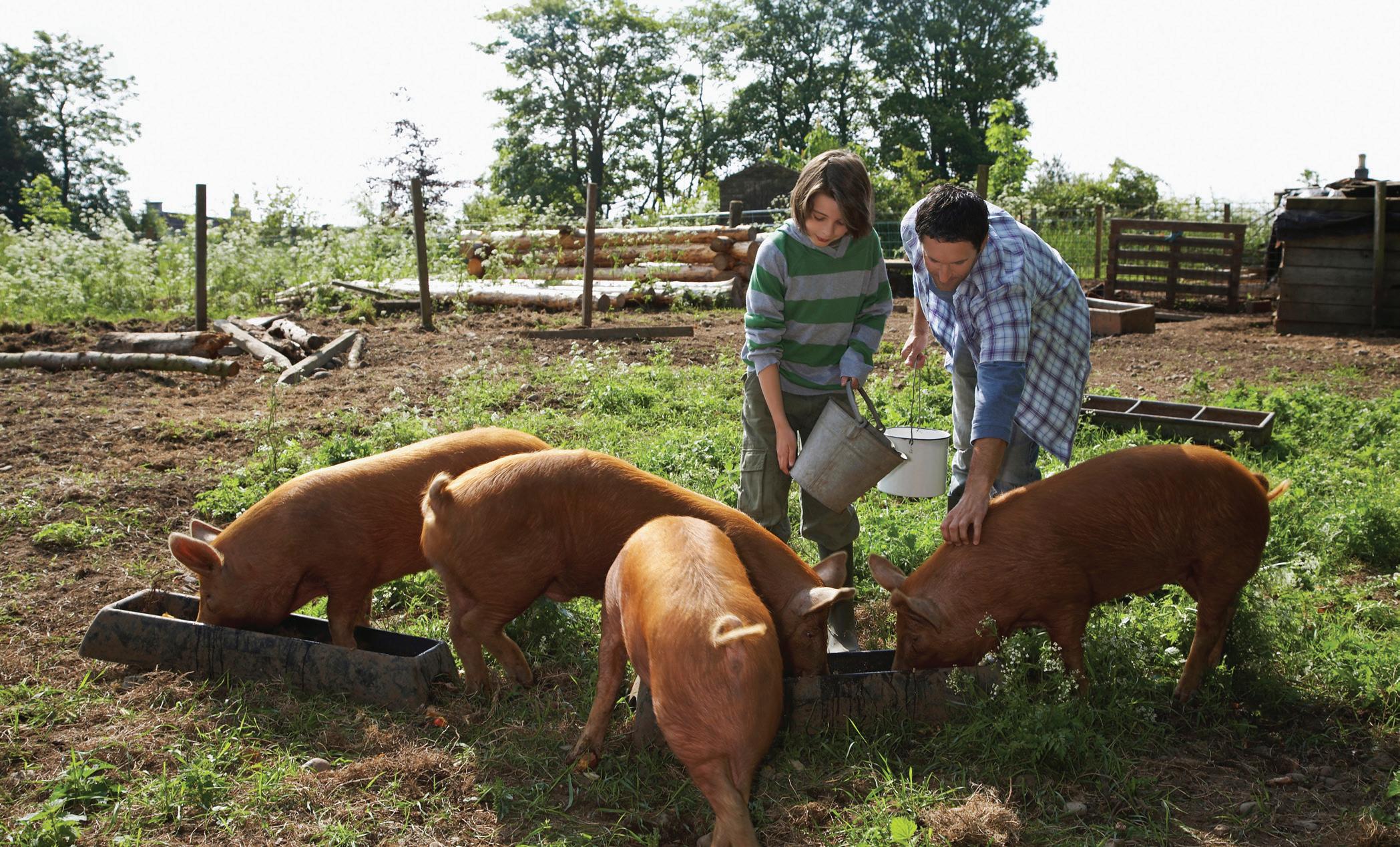
A dobe S tock / moodbo A rd
Virginia Montgomery is a full-time writer and beginning homesteader who runs a small backyard farm with her family.
May/June 2023 48
When feeding pigs concentrates, be sure to select a feed that contains the amino acid lysine, or supplement their feed with it, since it’s vital for their health and growth.
2006 - 2022 GRIT ARCHIVE







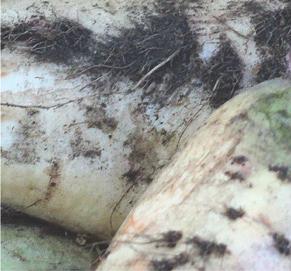
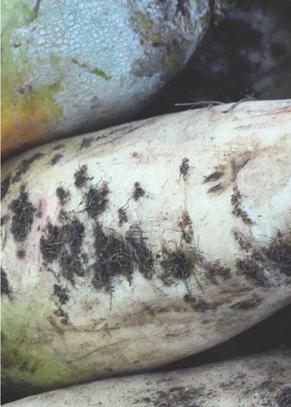






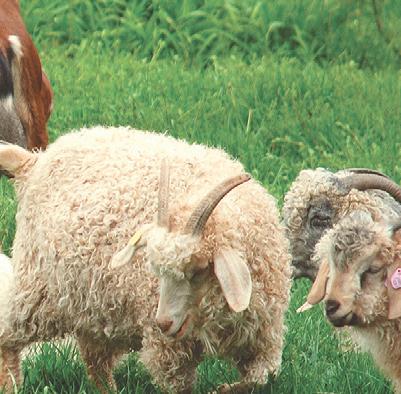















Access more than 11,000 articles: 17 years of tips, recipes and project ideas!















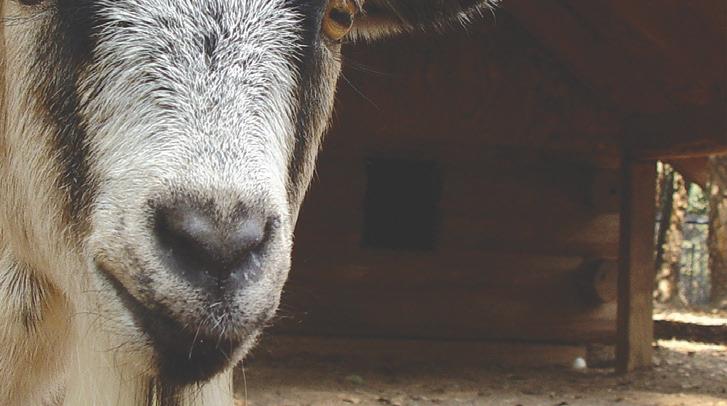




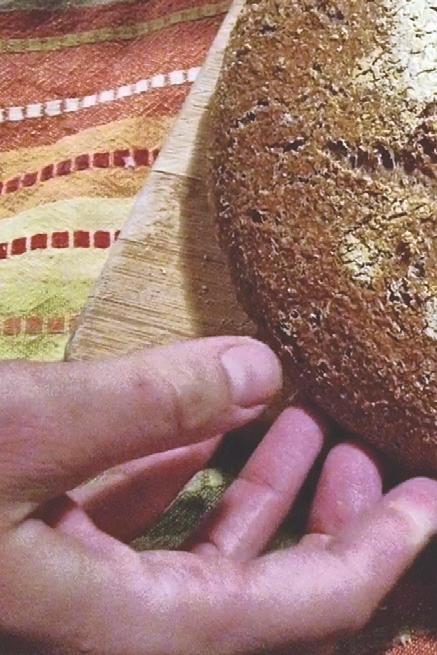
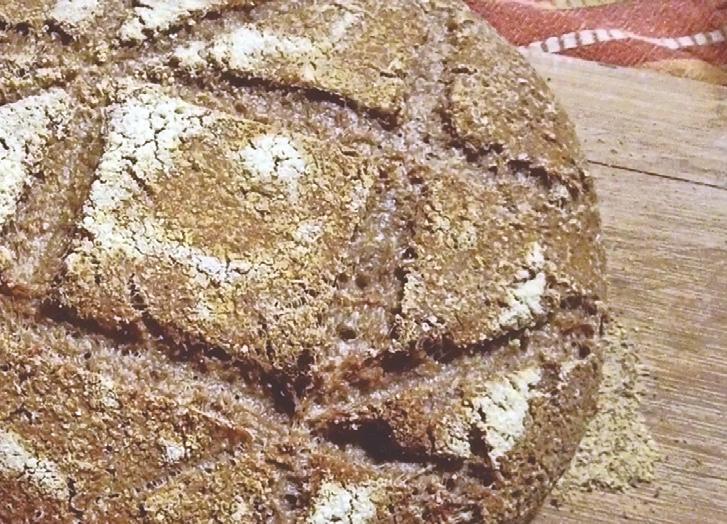

,




We have compiled 17 years of Grit, bringing you all the best information to help you get the most from living out where the pavement ends, or utilize your urban backyard—delivered on a ash drive that plugs into the USB port on your favorite electronic device. Our archives include articles with expert advice on growing the best heirloom tomatoes, which types of chickens are best for your place, choosing and maintaining your machinery, how to select and build the best fences, and so much more—you’ll nd it all here!




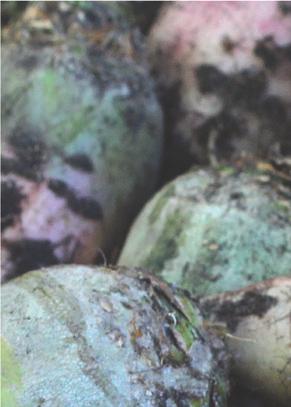
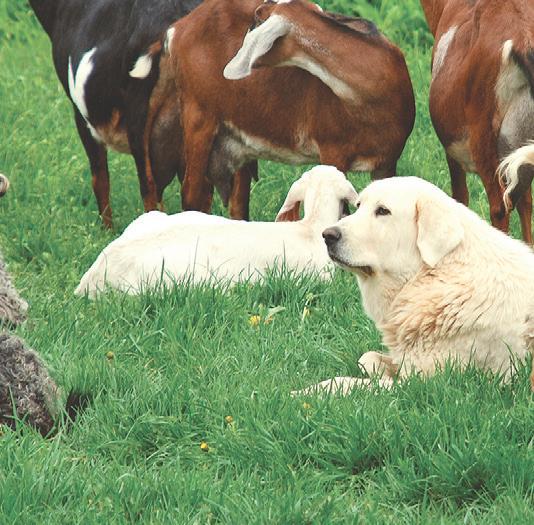

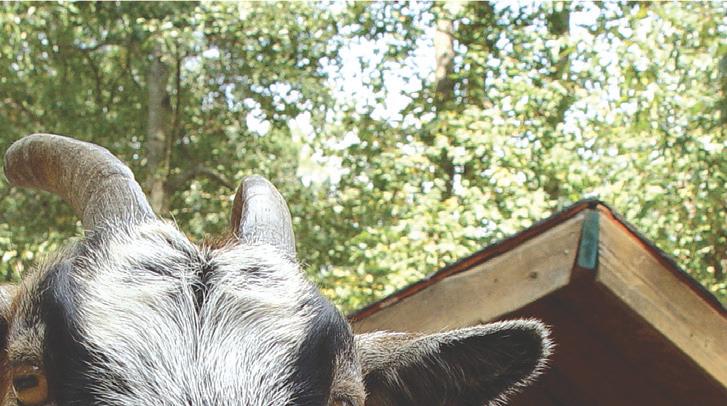


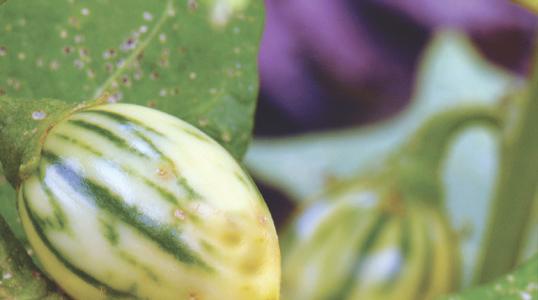

With the ability to search the entire archive or browse by each month and year, the interface contains enhanced search features that allow you to search by date range, exact phrases and word combinations, headline only, popular categories, and more!

$39.95 | ITEM #11852
Does not include shipping and handling.


Promo code: MGRPANZ1














DELIVERED ON USB DRIVE.

Order today by calling 866-803-7096 or visiting Store.Grit.com
Raspberry patches offer a sumptuous summer bounty year after year with minimal upkeep.



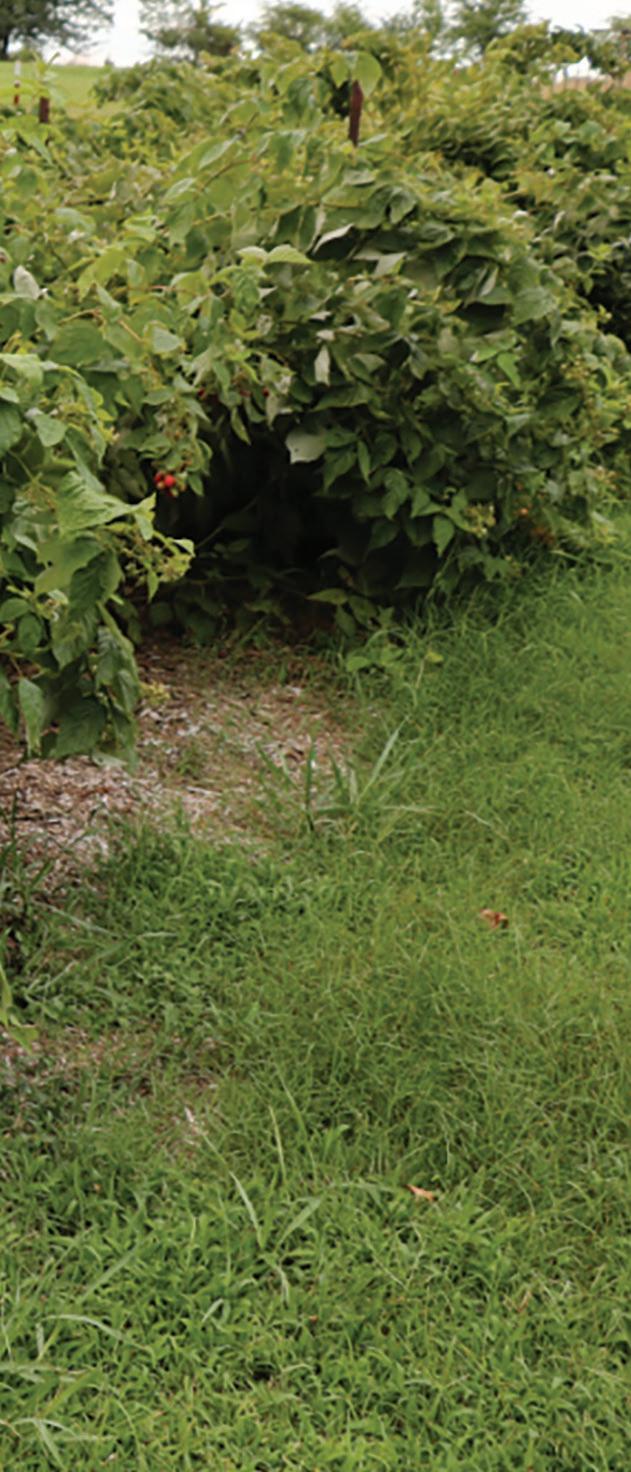

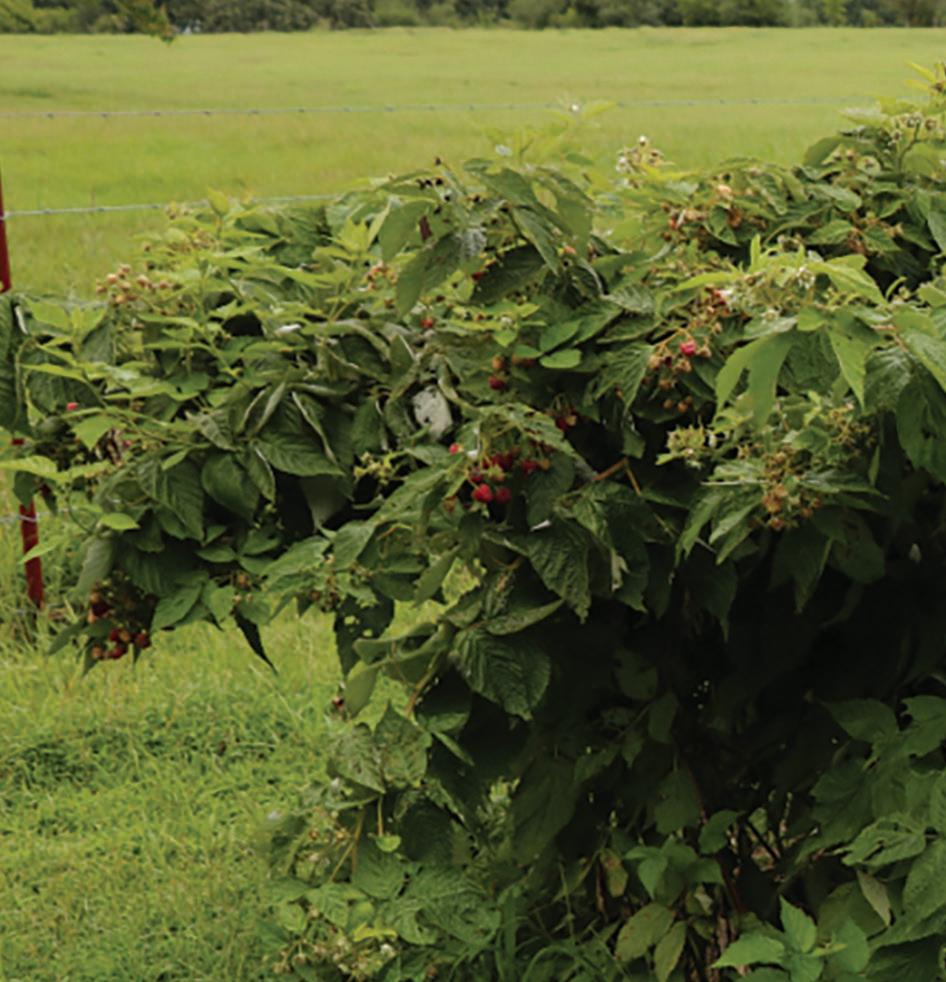 Story and photos by Maggie Bullington
Story and photos by Maggie Bullington
“Mmmmm.” A sigh of delight escapes me as I savor the giant red raspberry I just popped into my mouth. Perfectly ripened, warm, and bursting with the juicy sweetness of summer sunshine, this berry tastes like jam! Standing kneedeep in berry bushes, I’m convinced this is what summer should taste like. Berries like that one keep me going back for another and another … and another. This is a great thing in our garden, because during the peak fruiting season for these berries, there are a lot to pick!
My family has grown red raspberries on a small scale for years. Red raspberries grow wild and are quite nostalgic for those who live in the northern United States. I’ve heard tales from folks who’d go out as young’uns to pick buckets and buckets of these tasty berries, which their mothers would bake into juicy pies. Around our area, though, wild blackberries definitely rule the fencerows and fields. Not a wild raspberry in sight.
While red raspberries don’t grow wild here in northern Alabama, we’ve found them to be a valuable addition to our Zone 7b garden plot. We’ve had successes and failures and learned a lot. But I know one thing for sure: I’m a big fan! They’re a bit delicate for the fresh-berry market, but to me, they’re the most valuable berry crop on our homestead. They yield a considerable bounty for our personal enjoyment. They’re quick to produce and have a long growing season in our garden, and their upkeep is minimal among the small fruits.
Establishing a Raspberry Patch


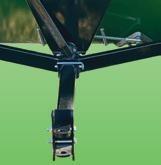






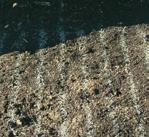



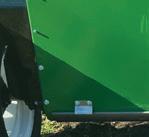
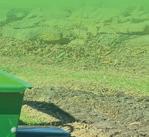
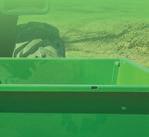

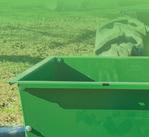

Our two favorite cultivars through the years have been ‘Caroline’ and ‘Heritage.’ They’re both everbearing types. ‘Caroline’ generally gets started a little earlier in the season than ‘Heritage.’ Our picking lasts from June to the first frost, which in our area is generally in October.
Setting up a red raspberry patch is a simple project, especially if you already have a cultivated area. We’ve had excellent success starting with bare-root plants from online suppliers, but you may be able to source them locally, depending on your
area. The day your bare-root plants arrive will be a happy one!


Plant them in fall in a garden bed that’s been prepared by first forking the soil and then hoeing and raking. Add fertilizer according to your soil’s needs. Raspberries thrive in rich, well-drained soil and full sun. Plant them up to the crown of the plant (roughly where they were previously planted at the nursery), about 12 to 18 inches apart. Compact the soil around each plant and give it a deep drink of water. Giving your new plants a nice layer of mulch will help keep weeds at bay while the raspberry canes get established.
Now is also the perfect time to set your trellis or support system in place. As the plants grow, the blooms and developing berries at the top will begin to weigh the canes down and, without support, they’ll flop over on the ground. This isn’t the end of the world. I’ve picked a lot of berries from collapsed canes, but it does require more effort. A simple “corral” of rope or wire, held
Homegrown Berries
The Complete Guide to Growing and Enjoying Your Own Berries
Enjoy delicious, nutritious berries from your own backyard! Why buy expensive berries from the supermarket when you can grow a bumper crop right outside your door?
Homegrown Berries covers the entire process, from planting to picking that first nutritious, luscious fruit. You’ll learn the best varieties for your region, how to fit them into your landscape, and how to maintain them for peak harvest year after year. With tips on growing strawberries, raspberries, blackberries, gooseberries, currants, and elderberries, this book will lead you down the path to a bountiful, berry-filled garden.
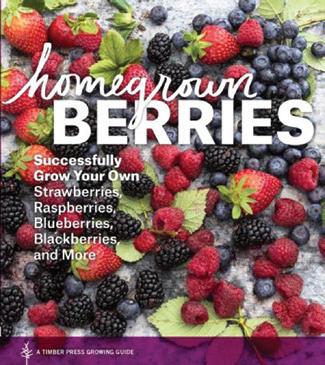
This title is available at Store.Grit.com or by calling 866-803-7096. Mention promo code MGRPANZ5. Item #7613.






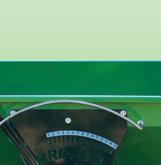

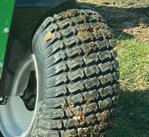
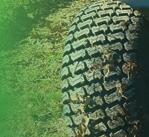

www.Grit.com 51
See #7 on page 63
in place by T-posts at the four corners, will help keep your patch tidy and much easier to pick, saving you time in the long run.
You’ll probably be able to harvest a few berries the first year, and your yield will increase in time. At the end of the season, cut the canes down to the ground and dispose of them to help prevent the spread of disease. Blanket the patch with a covering of mulch, and it’ll be ready for winter. In spring, I’m amazed at how much the plants have spread underground: You’ll probably need to thin them back to keep your patch manageable and to give the plants room to thrive.
It’s quite refreshing to watch raspberries come up and mature, growing without much assistance of any kind. We simply wait and watch, working with our more labor-intensive garden plants until the raspberries redden.
Time to Harvest
Once the berries begin to ripen, they become part of my routine. For me, morning is the best time to collect them for peak ripeness. For the highest-quality berries, I like to pick daily or every other day, depending on the yield. If the berries come off the plant easily, they’re perfectly ripe. If a berry is really squishy, it’s past its prime. With a little practice, you’ll be a pro!
Then, it’s time to bring these juicy, red berries to the kitchen. We eat them fresh by the handful and also over vanilla yogurt,
atop buttered pancakes, spilled over freshly baked brownies, in tasty pies, and on layer cakes. The possibilities are endless! We also freeze gallons and gallons to use for stocking the pantry with delectable jam and baking our favorite treats through winter months. I hope you’ll tuck some red raspberries into your homestead’s garden and enjoy trying these time-tested recipes in your own kitchen.
FRESH RASPBERRY PIE
A special dessert at our table, this pie is bursting with fresh raspberries. Top it with freshly whipped cream for an extra-delicious treat. Yield: 1 pie.
4 cups fresh raspberries, divided ¾ cup water, divided ¼ to ½ cup sugar
Pinch of salt
2 tablespoons cornstarch
1 tablespoon lemon juice (optional)
3 ounces cream cheese, softened
1 pre-baked 9-inch pastry crust
Freshly whipped cream
1. In a medium saucepan, combine 1 cup raspberries and ½ cup water. Cook over medium heat until berries are soft. Strain mixture through a fine sieve to remove seeds. Return raspberry mixture to pan.
2. Add sugar and salt to raspberry mixture. In a small cup, stir together cornstarch and remaining ¼ cup water until blended. Stir into raspberry mixture, and heat over medium heat until thickened and bubbly, stirring constantly. Remove from heat. Stir in lemon juice, if desired. Set aside to cool.

3. Spread softened cream cheese evenly over bottom of pastry crust. Arrange 3 cups fresh raspberries on top of cream cheese. Pour cooled berry mixture over fresh berries.
4. Chill pie. Serve with the freshly whipped cream.
MILE-HIGH RASPBERRY PIE

This frozen treat will have your taste buds doing a happy dance! You can substitute a baked pie shell or a cookie-crumb crust for the nut crust in this recipe. Yield: 1 pie.
Crust
½ cup butter
¼ cup brown sugar
1 cup flour
½ cup chopped nuts
Filling
10 ounces frozen raspberries
1 cup whipping cream
1 cup sugar
3 egg whites
Fresh raspberries, for garnish (optional)
1. Set frozen raspberries out to thaw.
2. Combine crust ingredients until evenly mixed. Spread mixture on a cookie sheet and bake at 400 F for 12 to 15 minutes. Let mixture cool, and then spread crumbs in a 9- or 10-inch pie pan.

3. Whip cream until stiff peaks form; set aside. In a stand mixer bowl, beat thawed berries, sugar, and egg whites for 15 minutes at high speed. The mixture will be similar in consistency to meringue. Fold in cream.
4. Add mixture into prepared pie pan and freeze for 6 to 8 hours, or until firm. Serve frozen wedges garnished with fresh berries, if desired.
RASPBERRY BREAKFAST BRAID
This is one of my favorite ways to use raspberries. It’s a treat for the eyes and the palate! Yield: 6 servings.
Dough
2 cups self-rising flour
1 tablespoon sugar
½ cup cold butter, cubed
3 ounces cream cheese, cubed
1⁄3 cup milk
Filling
1¼ cups fresh raspberries
3 tablespoons raw sugar
Vanilla Glaze
¼ cup powdered sugar
¼ teaspoon vanilla extract
1 tablespoon milk
1. To make the dough, mix flour and sugar together in a large bowl. Cut in cold
Mile-High Raspberry Pie
May/June 2023 52
Fresh Raspberry Pie
butter and cream cheese with a pastry blender until mixture resembles coarse crumbs. Stir in milk until just blended.
2. Turn dough onto a lightly floured surface. Knead lightly 8 to 10 times.
3. On a greased baking sheet, roll dough into an 18-by-12-inch rectangle. Spoon fresh raspberries down the center third of dough. Sprinkle berries with raw sugar.

4. On each long side, cut 1-inch-wide strips about 2½ inches in toward the center. Starting at one end, fold alternating strips at an angle across the berries. Seal the ends.
5. Bake at 450 F for 15 to 20 minutes, or until golden-brown. Remove and let cool slightly.
6. Mix the ingredients for the glaze together and drizzle over the braid. Enjoy right away for a special breakfast treat!
OUTSTANDING RED RASPBERRY JAM
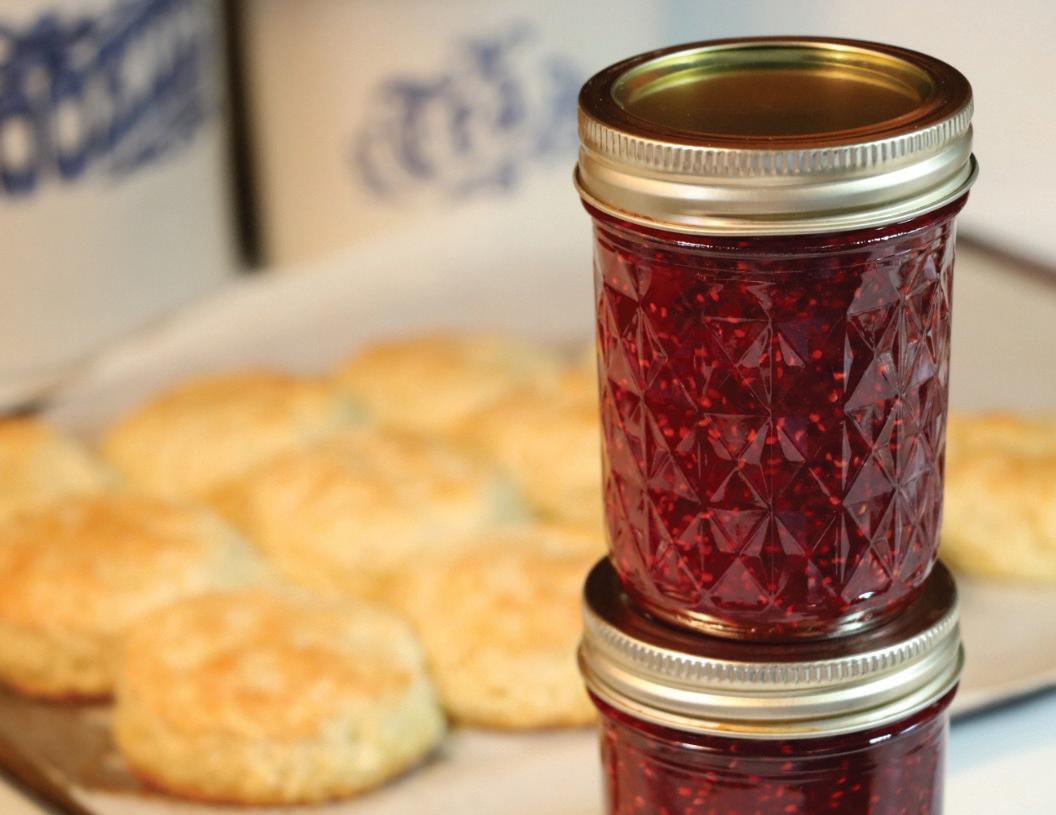
A summer would hardly be complete without making raspberry jam! I’ve found that a potato masher works to crush the berries. To remove excess seeds, run some of the crushed berries through a fine strainer. Yield: 9 cups.
8 cups fresh red raspberries
1 (1.75-ounce) package fruit pectin ½ teaspoon butter (optional) 7 cups sugar
1. Sterilize canning jars and keep them warm. Prepare the needed lids and rings.
2. Crush berries. Measure to ensure you have 5 cups crushed berries.
3. Add berries to a large stockpot. Stir in fruit pectin. Add ½ teaspoon butter to reduce foaming, if desired. Bring mixture to a full rolling boil, stirring

constantly. Add sugar. Return to a rolling boil, then boil for another minute while stirring constantly.

4. Remove berry mixture from heat. Using a metal spoon, skim off foam. Ladle the mixture into warmed, prepared jars. Wipe jar rims, add lids, and screw rings securely in place.
5. Process in a hot water bath for 10 minutes. Set out to seal and cool.
Maggie Bullington enjoys living on her family’s homestead in rural Alabama. When she’s not writing, you may find her gardening, cooking with farm-fresh ingredients, or working with her brother at www.LucasForge.com
See #17 on page 63
www.Grit.com 53
Outstanding Red Raspberry Jam Raspberry Breakfast Braid
Critters and Cars



Avoid Costly Collisions



What kinds of animal encounters can happen on the road? Some are more common — and more hazardous than others.

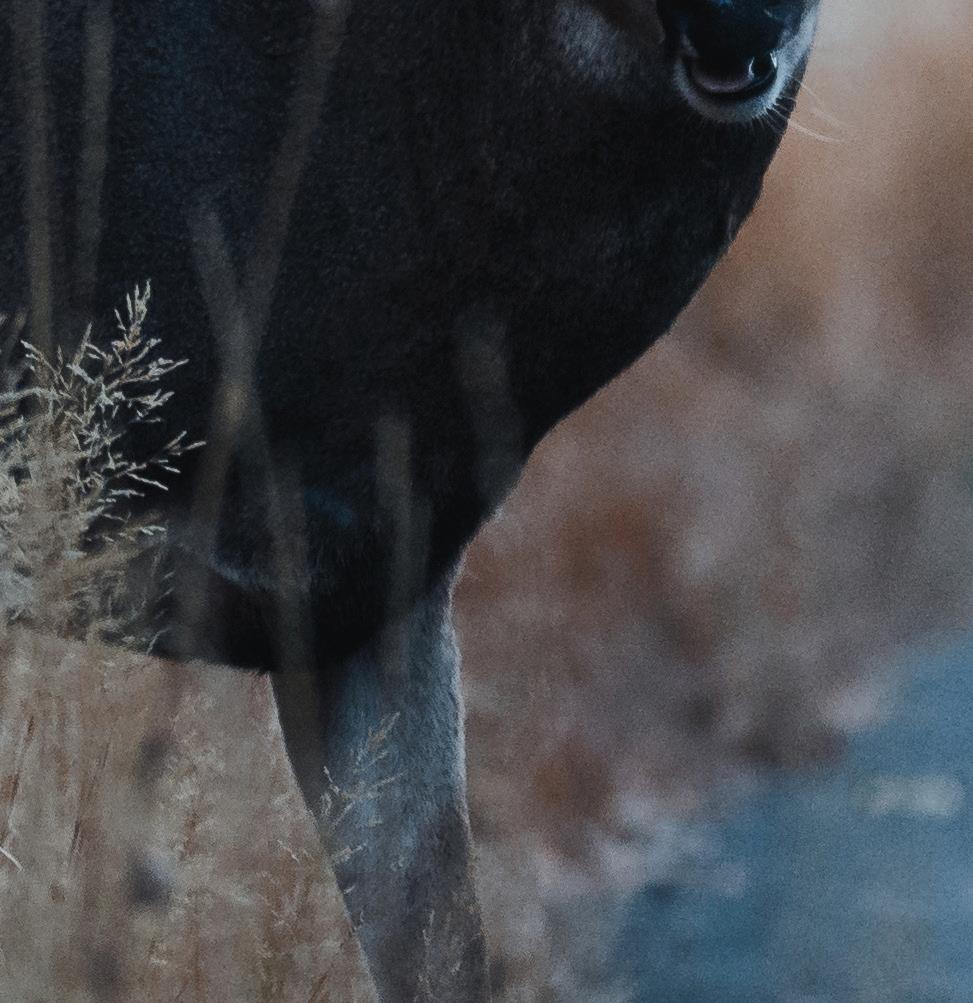





 By Ed Brotak
By Ed Brotak

Anyone who drives has likely had the misfortune of running over a squirrel. Terrible for the squirrel, and it can upset the driver, but that’s usually the extent of the harm. However, when a larger animal is involved in a vehicular collision, there can be major damage to the vehicle, and the driver and passengers can be injured, sometimes even fatally.
In the United States, an estimated 2 million collisions occur between vehicles and large animals every year, and according to a 2008 U.S. Department of Transportation report to Congress, about 4% to 10% of these collisions result in injuries. In fact, animal-vehicle collisions account for some 200 fatalities and between 10,000 and 20,000 injuries each year. As for vehicle damage, this can range from no damage to a complete total. The average damage per collision can reach $4,000, and in all, these collisions rack up billions of dollars in medical expenses and vehicle damage. Let’s look at the common factors involving animal-vehicle crashes, common animals encountered on the road, how these collisions affect drivers and wildlife, and what you can do to avoid them.
The When, Where, and How

How bad a collision with an animal is depends on the speed of the vehicle, the size of the animal, and whether it was a direct or glancing blow. Many times, directly hitting an animal doesn’t cause the worst of the accident; it’s after impact or swerving, when your car could hit another vehicle or a tree, that could cause more damage and injury.
Most of these accidents occur between dusk and dawn, and most collisions occur from October through December. In State Farm’s annual list, it ranked Pennsylvania as having the most auto insurance claims for animal-vehicle collisions, followed by Michigan, Texas, California, and North Carolina. Factoring in the number of drivers in each state, West Virginia drivers have the greatest risk of hitting an animal (a 1 in 37 chance). Montana is a close second, followed by South Dakota, Michigan, and Pennsylvania, respectively.
Common Creatures in Vehicular Crashes
Deer lead the list as the most common animal involved in significant vehicleanimal collisions. According to the 2008 U.S. Department of Transportation study, the majority of reported wildlife-vehicle
collisions involve deer, up to 90% in certain states. This isn’t surprising, considering there are an estimated 36 million deer across the U.S., with 30 million of them being the ubiquitous white-tailed deer. Deer can stand 3 to 4 feet tall at the shoulder and weigh an average of 150 to 200 pounds.

www.Grit.com 55
A dobe S tock /L ind A P hotogr AP hy o PP o S ite : A dobe S tock / t A bor c hich A k L y See #26 on page 63
Most wildlife-vehicle collisions occur between dusk and dawn, when many animals tend to be more active.
For those living in northern states, there’s an even larger problem: moose. The largest member of the deer family, a moose can stand up to 7 feet tall at the shoulder and weigh over 1,500 pounds. Hitting a moose will do significant damage to your vehicle and quite possibly to you. Per mile driven, the Alaska Department of Fish and Game reports that Alaska has one of the highest rates of moose-vehicle collisions in the world; estimates range from 500 to 800 accidents a year. In Maine, studies indicate that about 500
moose-vehicle collisions happen every year, and they’re 13 times more deadly than deer-vehicle collisions.

Bears are another common animal found across the continent and, inevitably, on roads. Black bear populations exist in Alaska, Canada, some northern tier states, mountainous areas across the U.S., and even along the Gulf Coast into Florida. Estimates of the North American black bear population range from 500,000 to 1 million. Bears can travel tens of miles each day foraging for food,
often crossing roads. Weighing up to 500 pounds, they pose a significant threat for accidents. Bear-vehicle collisions number in the thousands each year, according to a State Farm collision report, with California having the most.

Another animal that’s become a recurring road risk in recent years, primarily in southern states, is the feral hog. From California to North Carolina, the feral hog population has exploded to as many as 6 million. Feral hogs are large animals, sometimes weighing over 200
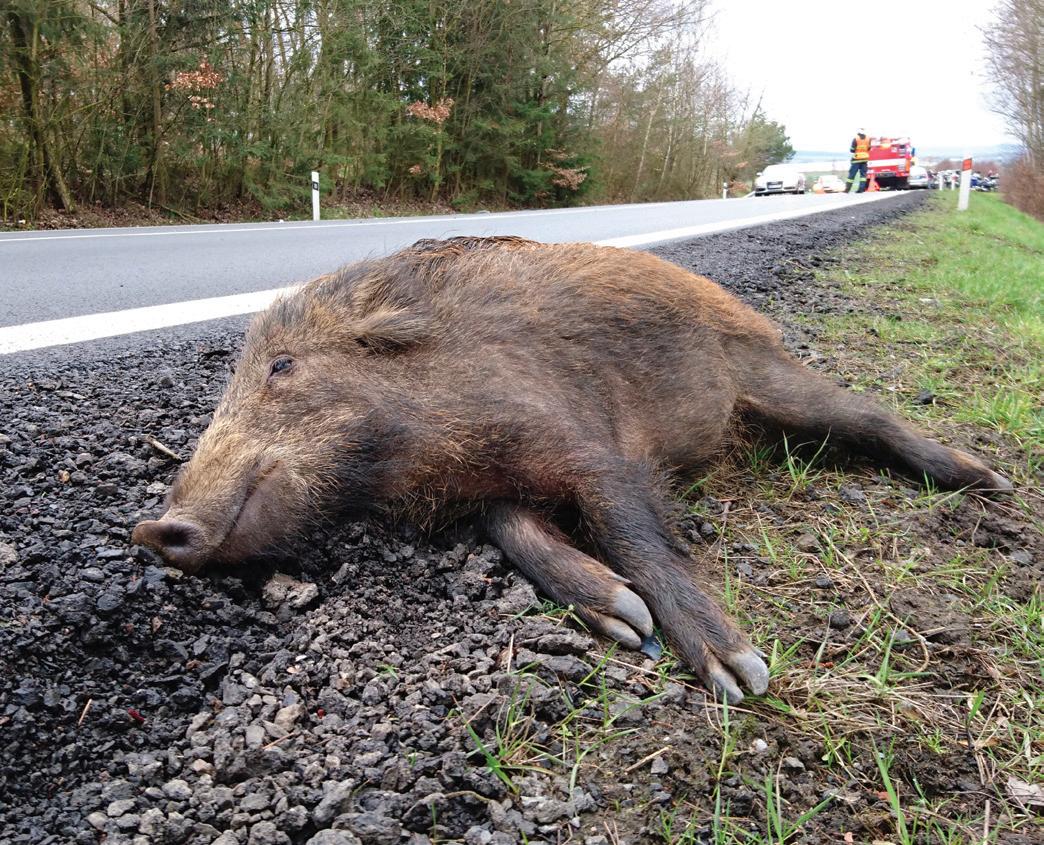
C lo C kwise from top A dobe s to C k / v AA AA A dobe s to C k / peteri A dobe s to C k t A d A i m A ges
Birds aren’t just in danger of getting hit by automobiles. Each year in the U.S., planes and helicopters strike thousands of birds.
May/June 2023 56
From left: Deer are one of the most commonly hit animals, while the feral hog has more recently exploded in population and has become a road risk in certain states.
pounds. They’ve been responsible for vehicular damage, injuries, and even fatal accidents, amounting to tens of millions of dollars of damage each year in the U.S. In Hawaii, hogs and pigs are involved in more traffic accidents than any other animal.
Finally, alligators do occasionally get hit by cars. They can be found from the coastal areas of Texas through Florida and up the Atlantic coast to North Carolina. In Florida, about a million alligators live all over the state. With large gators measuring over 10 feet long and weighing 500 pounds or more, hitting one can result in a serious accident. A Florida man was killed on March 24, 2022, when his car struck a large alligator in the road and veered off into a ditch. Both the man and the alligator were dead when authorities arrived.
How Collisions Harm Animals

The flip side of the vehicle-wildlife collision issue is the effect on some animal populations. With the massive number of deer in the U.S., their population isn’t threatened. But in Florida, both the black bear and the already endangered Florida panther are at risk for local extinction. According to the Florida Fish and Wildlife Conservation Commission, 92% of recorded panther deaths in 2022 and 90% of known bear deaths are due to vehicular collision. In California, both the black bear and mountain lion populations are significantly affected by fatal collisions with vehicles. I recently wrote about coyotes (“Wily Coyotes,” September/ October 2021), particularly coyotes in urban areas. Vehicular collisions are the No. 1 cause of death for urban coyotes.
Birds are often struck by motorists. In fact, hundreds of millions of birds die this way each year in the U.S. Most were on the ground in the road, but some were flying close to the ground when struck. Some, such as owls and pelicans, are large enough to damage a car. And it’s not just vehicles on the ground that have problems with wildlife. In the past 30 years, there have been around 250,000 reported bird strikes on planes and helicopters in the U.S., resulting in a total economic loss of around $871 million. Although the famed
“Miracle on the Hudson” disaster was averted by the great work of the pilots and their crew, people have been killed in some bird-strike incidents.
Snakes are often run over on roads. The eastern indigo, the longest snake in North America, is often a roadkill victim, so much so that local populations are adversely affected. Some studies indicate that a small


portion of drivers deliberately try to run over snakes and other small animals. On the flip side, some drivers actually stop and cautiously help the snakes cross.
Besides wild animals, vehicular accidents take a great toll on pets. Cats and dogs are often killed on the road. Larger dogs could do damage to a car and, again, swerving to avoid the collision can be risky.
Woman’sWork Digger Gloves

These best-selling garden gloves are doubly reinforced at the fingertips, so they hold up to lots of digging in the garden and look good even after repeated washings. Palm is lightly padded for extra comfort. A more extended cuff with Velcro wrist closure gives the gloves a snug fit and keeps soil from getting inside. These multipurpose “Digger” gloves offer agility and protection for all your chores. Available in sizes small, medium, and large.









Green: S 11653; M 11654; L 11655


Magenta: S 11656; M 11657; L 11658















Purple: S 11659; M 11660; L 11661



Teal Blue: S 11662; M 11663; L 11664
$19.95
Call 866-803-7096 or visit www.Store.Grit.com Promo code: MGRPANZ2 www.Grit.com 57
As for farm animals, about 20 people are killed due to vehicular accidents with cows every year.

Watching Out for Wildlife
What’s being done to reduce the number of vehicle-wildlife accidents? Educating the public about the risks is a good start; insurance companies, wildlife agencies, and local governments do this to different degrees. Wildlife information along travel routes, such as at rest stops and tourist information areas, is also standard.
In places along the road where wildlife crossings or accidents are common, there may be road signs in place that warn you of the specific animal that’s common to the area and require you to reduce your speed. In locations where accidents are particularly frequent or dangerous, wildlife crossings can be constructed. These can be underpasses beneath the road or overpasses above it. Out west, they’re used along established seasonal wildlife migration routes. There are
about 1,000 wildlife crossings in the U.S. Their cost, typically in the millions of dollars, has hindered their development. However, besides helping animals and preventing human injuries in accidents, the savings in accident costs can make a crossing “pay for itself” in a few years. And the infrastructure bill (Infrastructure Investment and Jobs Act) recently passed in Washington in late 2021 allots $350 million for animal crossings.
Wherever you may drive, animals are bound to be nearby. Knowing what wildlife is in the area and understanding how to respond (see “Stay Safe on the Road,” right) can help protect the creatures we share this world with, and help you safely arrive at your destination.
For more than 30 years, Ed Brotak taught thousands of college students about weather, and he’s helped many of them pursue careers in meteorology. He lives in Asheville, North Carolina, with his wife, Liz.
Stay Safe on the Road
How can you try to avoid colliding with an animal in the road? AAA offers some safety tips.
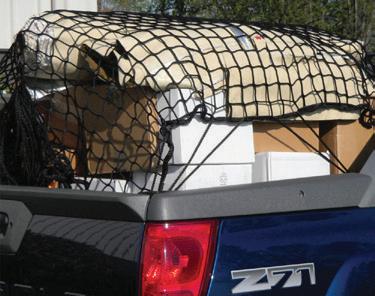
• Scan the road and shoulders ahead of you. This will give you more time to react.
• Stay focused on the road.
• If you see one animal, especially a deer, assume more are behind it.
• Use high-beam headlights if there’s no oncoming traffic. You’ll see wildlife sooner, and their eyes will often reflect the light.
• If an animal is in the road in front of you, honk your horn. Only swerve to avoid it if you’re sure you won’t hit another car or a tree or lose control of your vehicle. Apply your brakes firmly to lessen the impact.
• Be most cautious at dawn and dusk. Many animals, especially deer, are most active then.
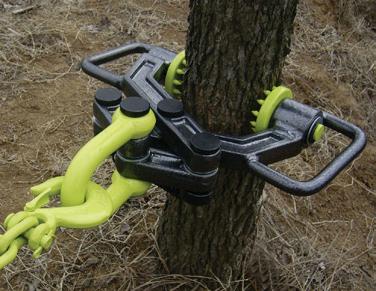
• Slow down in areas where wildlife is known to be active. Look for animal crossing signs, and allow for more room following another vehicle. This is especially true during hunting and mating seasons.
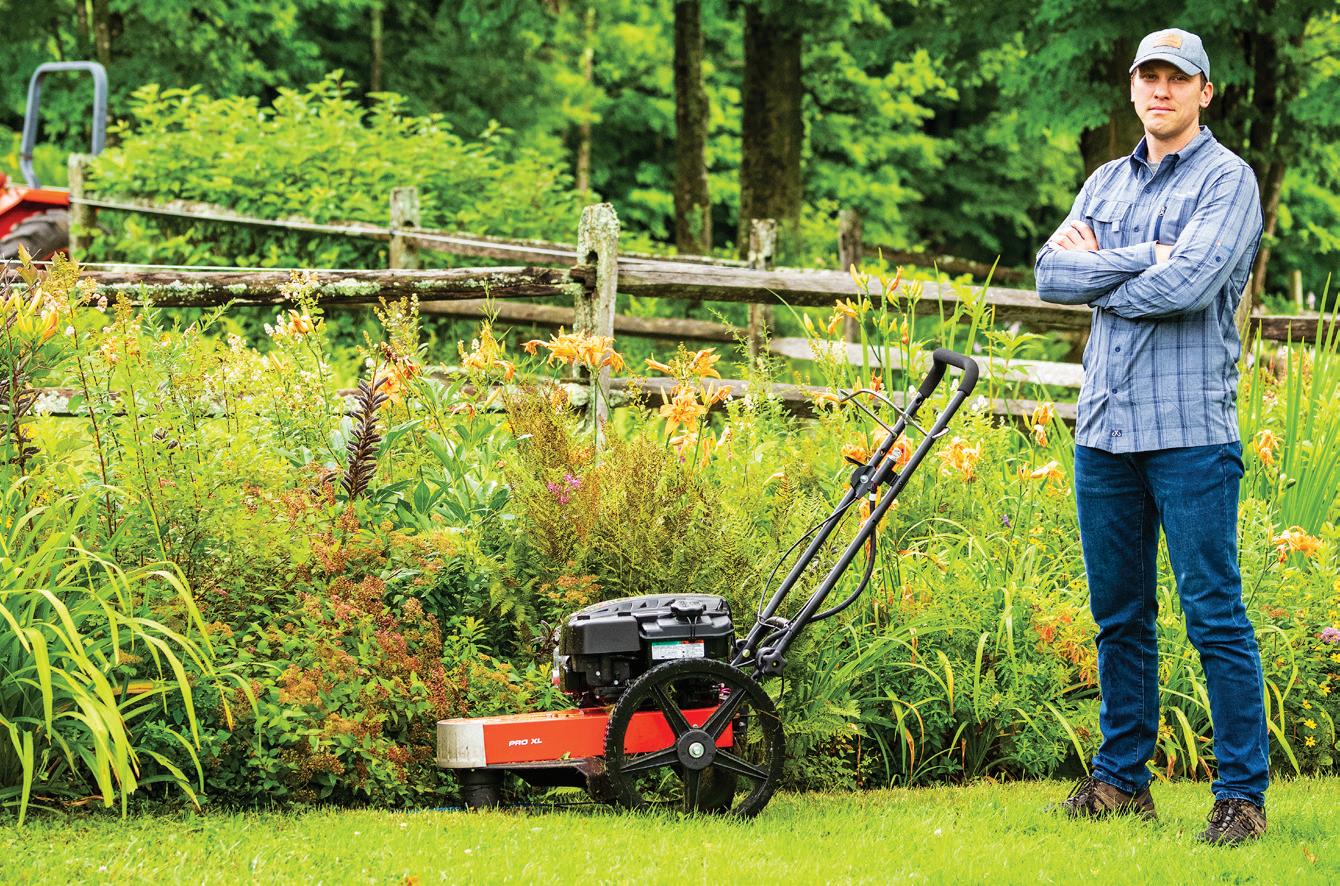
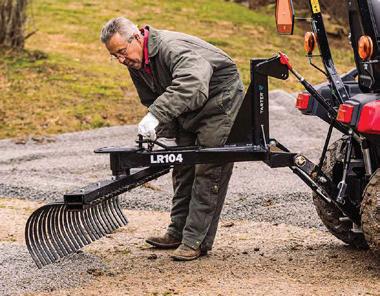
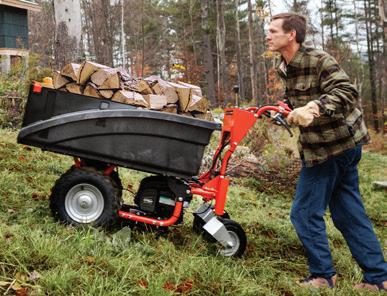
• If your vehicle does hit an animal, don’t touch it. A frightened, wounded animal can be dangerous, or it could further injure itself. Get your vehicle off the road, if possible, and call 911.
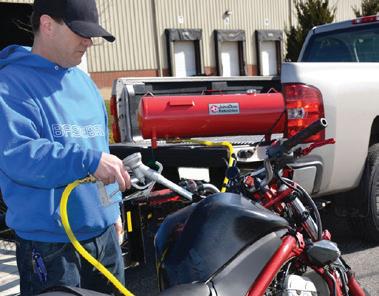
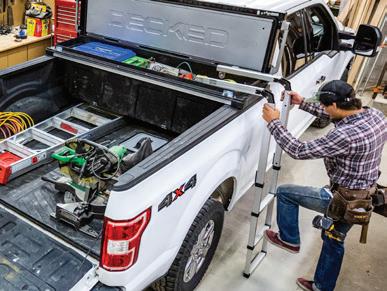
TAKE 10% OFF YOUR 1ST ORDER! Use CODE: Welcome10 CHP.com Products for property care & outdoor life SHIPPING FREE Limitations Apply
May/June 2023 58
Plan a Garden as Unique as You Are
Our Garden Planner makes it easy to map out your vegetable beds, and add and move plants around for the perfect layout. You’ll also receive a personalized plan�ng calendar for your loca�on.
Flexible Design

Whether you use tradi�onal row plan�ng, containers, raised beds, or square foot gardening, the Garden Planner adapts to suit your gardening style.



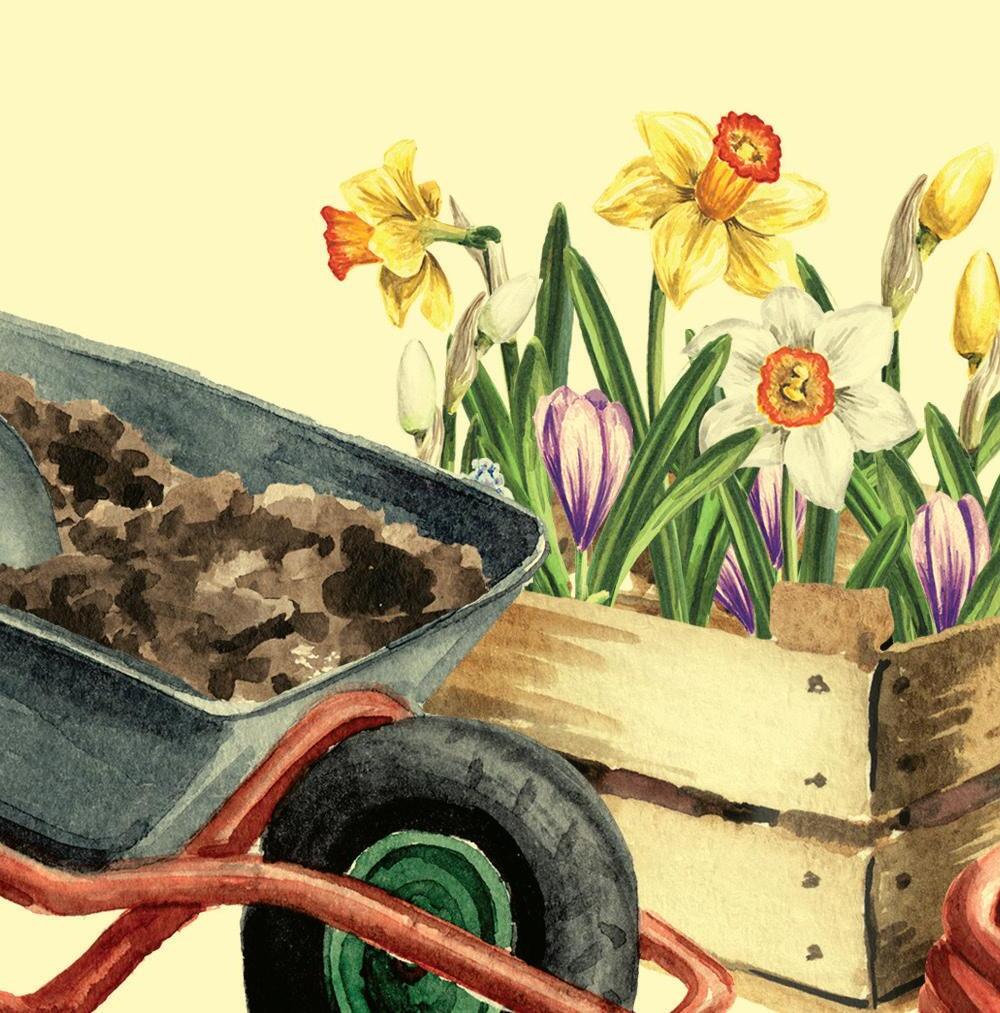
A Journal that Understands Your Garden
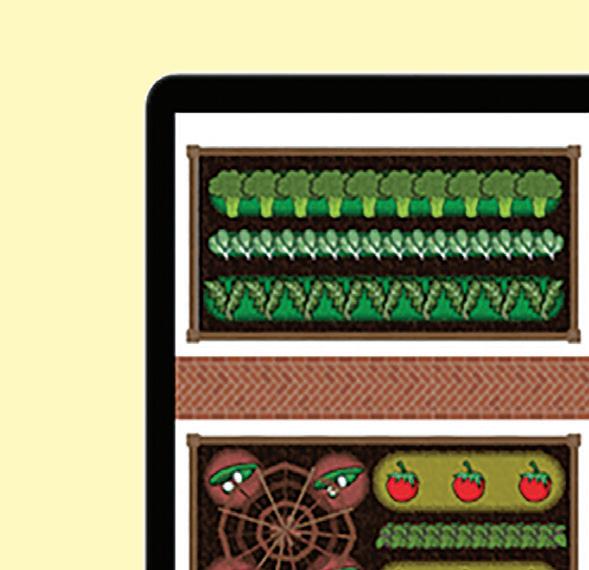


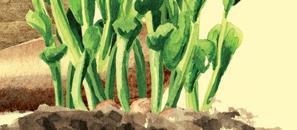
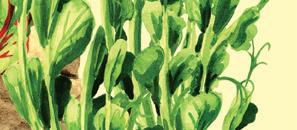













With our unique local weather and pest informa�on, you can stay one step ahead of problems and keep your plants healthy and produc�ve.

Gardening Tips & Personalized Advice
Whether you need advice on the best layout for your garden, what to grow next, or how to protect your plants from disease, you’ll find hundreds of in-depth ar�cles and videos. There’s no be�er place to receive the support you need.


Intelligently Tailored to Your Climate


Print your own personalized plan�ng chart showing how many of each plant you require and when to sow, plant, and harvest them.

gardenplanner.motherearthnews.com
Order by visiting
See #3 on page 60






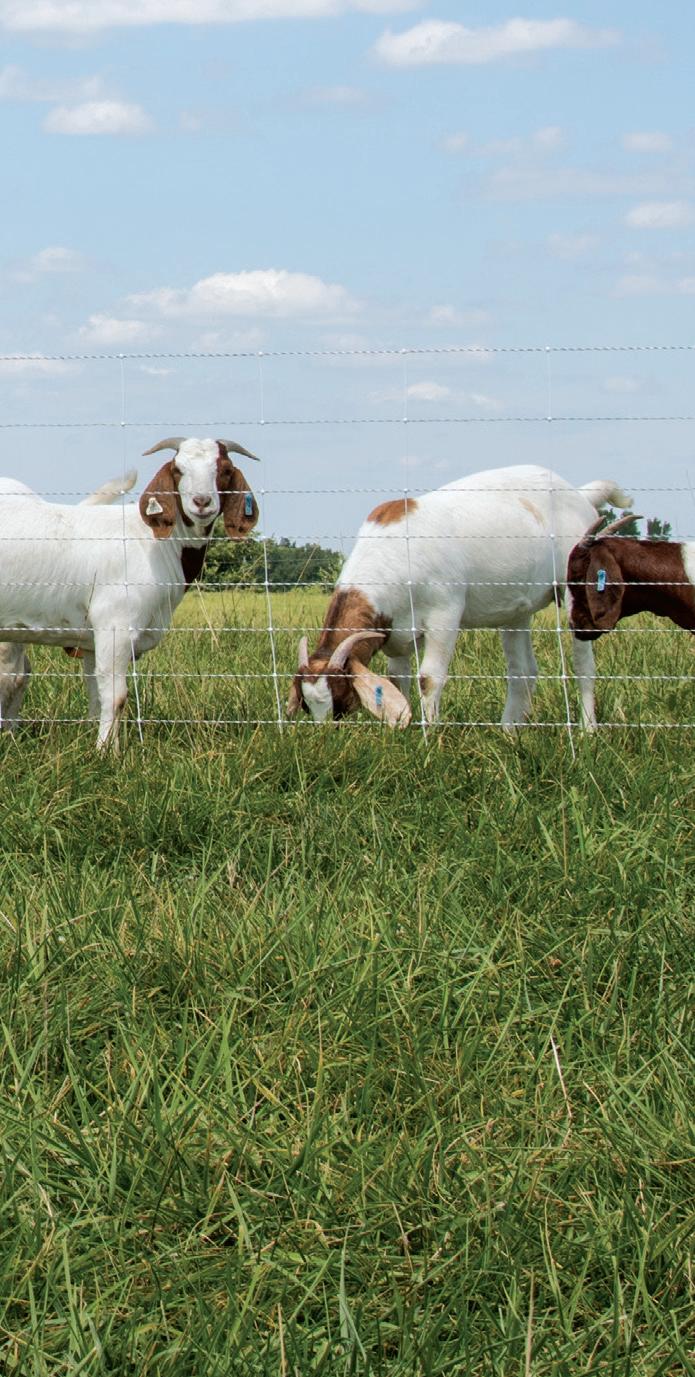

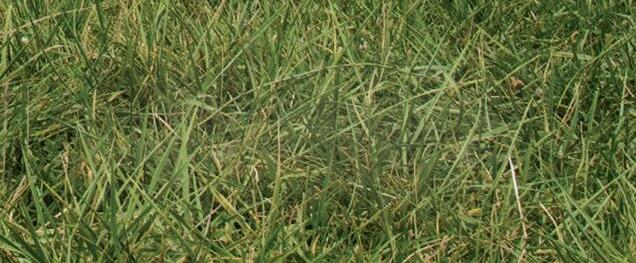

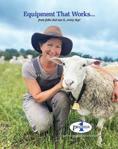

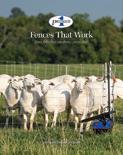







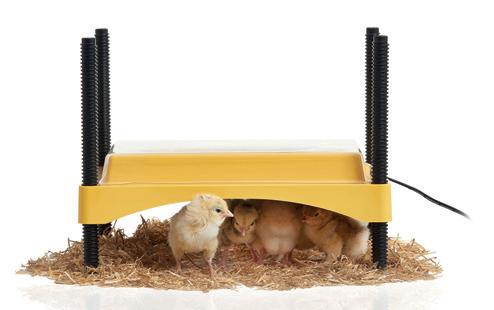

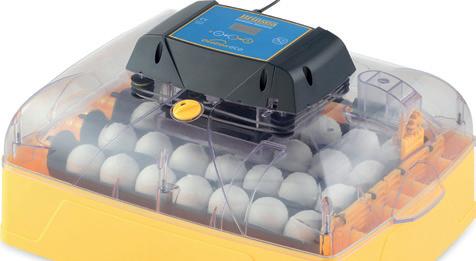






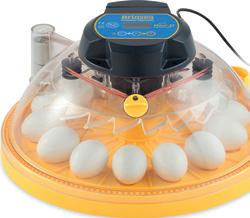
























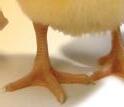

























May/June 2023 60 Turkey Chicken Mini Call or Order Online Made in USA AdorStore.com Automatic Doors for Chickens Guineas, Ducks, Peacocks & Turkeys 832-444-0192 info@adorstore.com www.adorstore.com Rugged Galvanized Steel 1 year warranty Free USA shipping* Free Battery Included Ideal for remote location LED status indicator Mount inside or outside Compatible with wifi Door Locks Shut Built in RedScare *Excluding Turkey Door) I adore my ADOR STARTER KITS! PORTABLE ELECTRIC FENCE Everything in one package to start fencing your livestock! Contact us for FREE catalogs! FREE shipping on qualified orders! Premier1Supplies.com 800-282-6631 Order the 3 DVD set for $95.00 plus $7 Shipping and get both The $50 and Up Underground House Book and The Earth-Sheltered Solar Greenhouse Book each for less than 1⁄2 price. Both books ship free. Special orders now available on our website: www.undergroundhousing.com 800-328-8790 SPECIAL #3 build underground houses/shelters/greenhouses dirt cheap! Free Catalog For more information www.brinsea.com or call 1-888-667-7009 Brinsea the world leading incubator manufacturer has a full line of incubators, brooders, egg candlers, starter kits and much more! Color Incubation Specialists Hatching your own chicks is fun, easy reliableandwith Brinsea Ifahencould choose… 21 MARKETPLACE 6 4 2 16

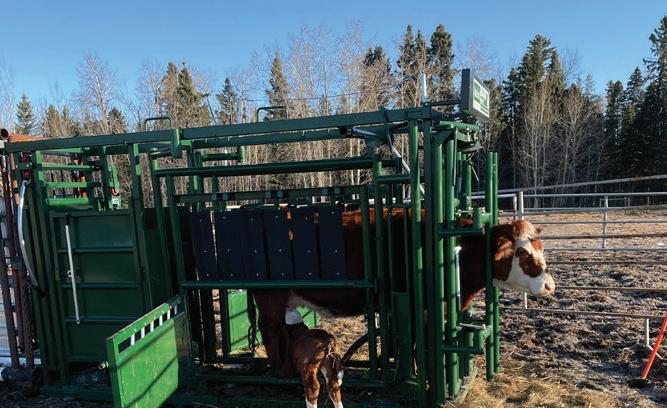
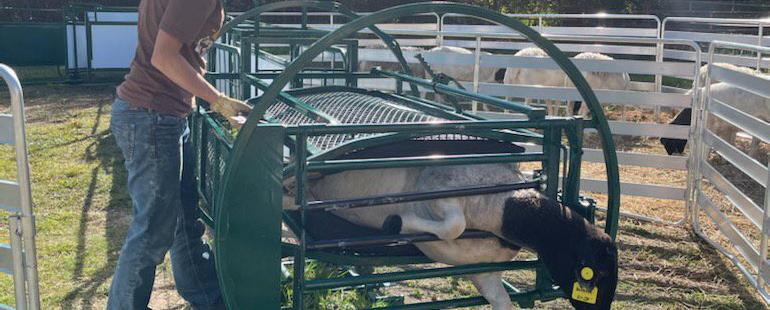








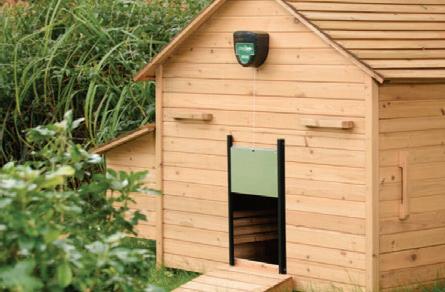
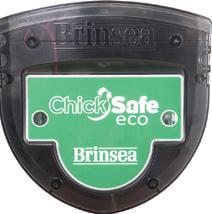



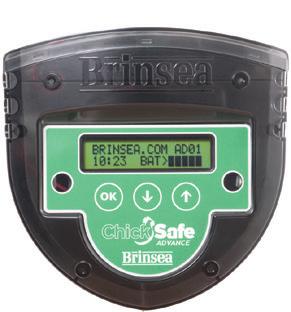










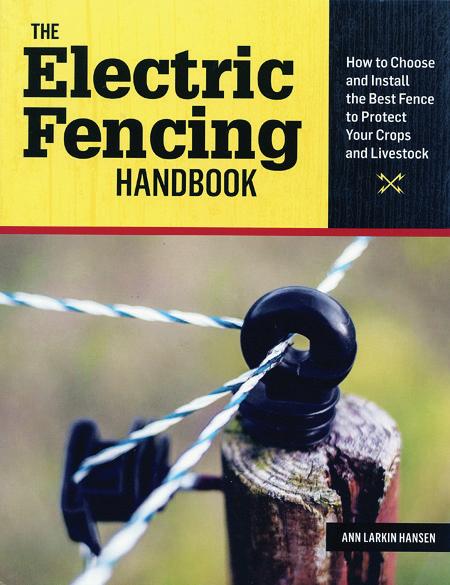














































MARKETPLACE Get your Livestock Handling Packages delivered direct to your door with our FREE SHIPPING 1-866-443-7444 LakelandFarmAndRanch.com www.GRIT.com/shopping How To Choose & Install The Best Fence Protect Your Livestock, Poultry, Beehives, and Garden $14.95 | Item #10634 To Order Visit: Store.Grit.com Or Call: 866-803-7096 Promo code: MGRPANZ2. Price does not include shipping and handling. MARKETPLACE (928) 348-965 2 www.sunpumps.com We Offer a Full Line of Solar Pumping Products for All Your Water Needs Where do YOU need water? • Irrgation • Livestock • DIY Projects • Garden Projects 4 25 12
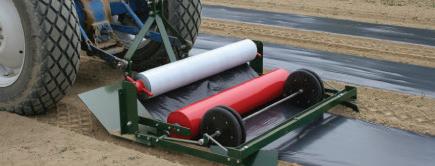



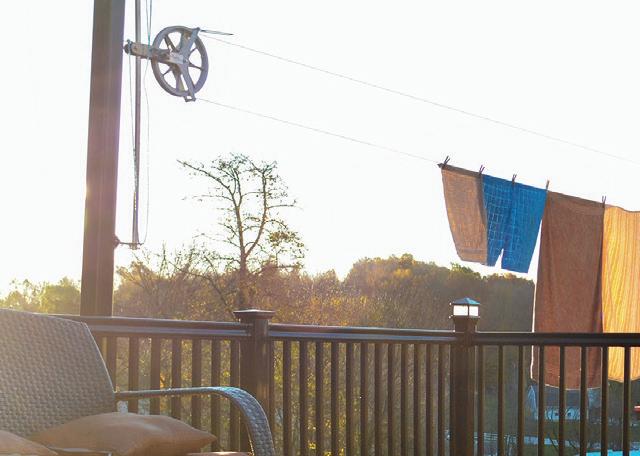





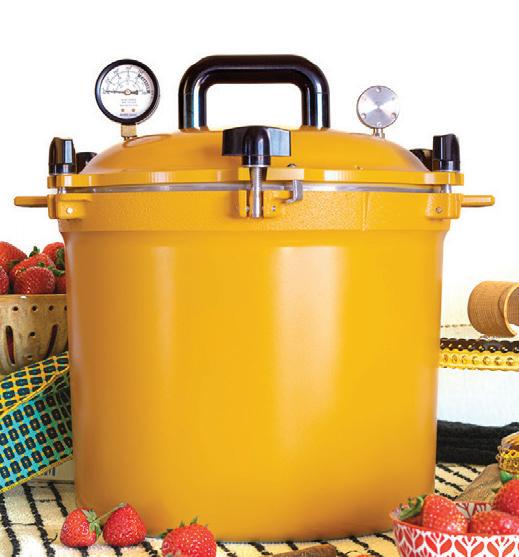














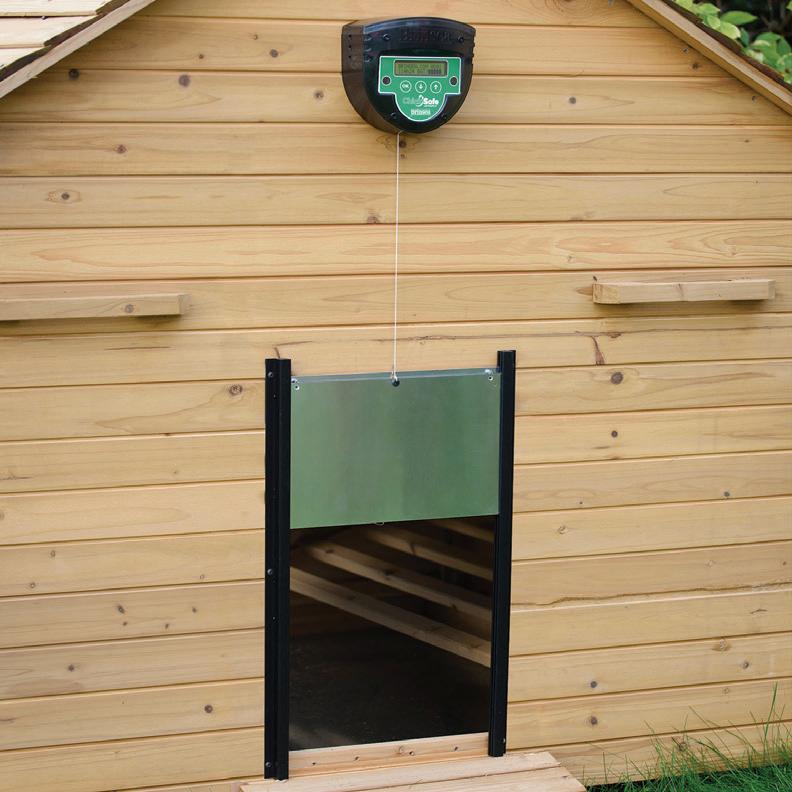

May/June 2023 62 Mechanical Transplanter Company, LLC 1150 Central Avenue * Holland, MI 49423 Phone: 616-396-8738 or Fax: 616-396-3619 www.mechanicaltransplanter.com MODEL 85 - Mulch Layer * Lays 3’ or 4’ plastic mulch * Optional DRIP attachment available 330.403.3010 skylinenter@gmail.com 5452 Township Rd. 377 Millersburg, OH 44654 • 8”, 12”, & 16” poly or aluminum pulleys • Powdercoat finish on metal components • Spring lock mechanism to lock pulley • Cable guides to prevent derailing • 4 foot galvanized elevator pole FEATURES INCLUDE: OUR UNIQUE DESIGN MAKES HANGING LAUNDRY A www.skylineclotheslines.com PRESSURE CANNERS / COOKERS Made with pride in the U.S.A. with heirloom quality that can be handed down for generations. MARKETPLACE No purchase necessary. A purchase will not increase your chances of winning. Open to legal residents of the continental United States (excluding Hawaii). Entrants must be 18 years of age or older. Sweepstakes begins 05/30/2023 and ends 09/26/2023. See official rules online at www.motherearthnews.com/sweepstakes/brinsea-summer-2023 I Sponsor: Mother Earth News, 1503 SW 42nd St., Topeka, KS 66609. www.MotherEarthNews.com/Sweepstakes/Brinsea-Summer-2023 Enter the Brinsea and MOTHER EARTH NEWS Giveaway! Enter for your chance to win this prize valued at $265! The ChickSafe Advance automatic chicken coop door opener is a tough and reliable system for automatically opening your coop door in the morning and closing it in the evening as light levels fall, keeping your birds safe and giving you peace of mind. Enter for your chance to win! Value: $265 Moreonline!details $265 value! SWP_ME01 Brinsea_half.indd 1 2/8/23 10:41 AM 23 27
*If you have recently requested information using our reader service reply card and have not received a response, please reach out to the advertiser directly at the above link.

May/June2023 63
IFC = Inside Front Cover IBC = Inside Back Cover OBC = Outside Back Cover
AD # ACCOUNT NAME PAGE URL PHONE NUMBER 1 Allivet 73 www.allivet.com 877-500-9944 2 ALLOGIC, Inc/Adstore.com 60 www.adorstore.com 832-444-0192 3 Ardisam 25,37 www.yardbirdpluckers.com 800-345-6007 4 Brinsea Products Inc. 23, 60, 61 https://www.brinsea.com/catalog.aspx 888-667-7009 5 Dr. Jimz 41 www.DrJimZ.com 888-394-4454 6 Earth & Turf Attachments 60 www.earthandturfattachments.com 877-800-6625 7 Earth & Turf Products 51 www.earthandturf.com 888-693-2638 8 Innovacyn Inc. 71 vetericyn.com 866-318-3116 9 John C. Campbell Folk School 69 www.folkschool.org 800-365-5724 10 KozGro Organics 19 www.kozgroorganics.com 208-718-8771 11 Kunz Engineering 43 www.kunzeng.com 815-539-6954 12 Lakeland Farm and Ranch 61 https://www.lakelandfarmandranch.com 866-443-7444 13 Lehman’s 29 www.lehmans.com/?menews 800-438-5346 14 Long Creek Herbs 47 www.longcreekherbs.com 417-779-5450 15 MacKissic 35 www.mackissic.com 800-348-1117 16 Mole Publishing Co. 60 www.undergroundhousing.com 800-328-8790 17 Mt. Healthy Hatcheries 53 www.mthealthy.com 800-451-5603 18 MUSSER FORESTS 15 www.musserforests.com 800-643-8319 19 Nopec 45 www.chickendoors.com 512-995-0058 20 Pacific Yurts IBC www.yurts.com 800-944-0240 21 Premier 1 Supplies 60 premier1supplies.com/pages/catalog 800-282-6631 22 Progressive Insurance 7 www.progressive.com 800-PROGRESSIVE 23 Skyline Enterprises 62 www.skylineclotheslines.com 330-403-3010 24 Summit Responsible Solutions IFC www.SummitResponsibleSolutions.com 800-227-8664 25 Sun Pumps, Inc. 61 http://sunpumps.com 923-348-9652 26 Sun Mar 55 www.sun-mar.com 888-341-0782 27 Wisconsin Aluminum 62 www.allamerican1930.com 920-682-8627 28 Wood-Mizer Products, Inc. 35 www.woodmizer.com 317-271-1542 29 Worksaver, Inc. 31 www.worksaver.com 217-324-5973 PLEASE VISIT www.grit.com/advertiser-directory to connect with our advertisers for further product information. Free Information From Our Advertisers
BLUE RIBBON VEGETABLE GARDENING
Win the blue ribbon every time! Master Gardener Jodi Torpey offers all the information you need to grow champion vegetables. She covers everything from choosing the right varieties and scheduling planting dates to harvesting, preparing, and transporting your produce. She also walks you through every aspect of competitive showing, with useful tips for thinking like a judge.

#7976 $16.95 Member: $7.99
BEAUTIFUL FLOWERS
GROW YOUR SOIL

Certified permaculture designer and lifelong gardener Diane Miessler presents the science of soil health in an engaging, entertaining voice geared for the backyard grower. She shares the techniques she has used — including cover crops, constant mulching, and a simple-butsupercharged recipe for compost tea — to transform her own landscape from a roadside dump for broken asphalt to a garden that stops traffic, starting from the ground up.
#10654 $16.95 Member: $14.95
COBRAHEAD 12" SHORT HANDLE WEEDER & CULTIVATOR



Whether you need to cultivate, scalp, edge, dig, furrow, plant, or harvest, the Cobrahead Weeder & Cultivator can help you do it all! Made in the USA, this tool comes with a 1 year warranty and weighs less than a pound!
#6551 $29.95
BUTTON MUSHROOM FRUITING KIT

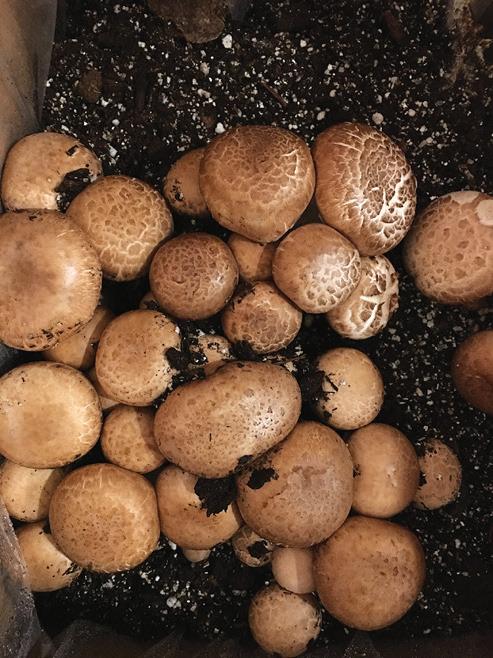
Anyone can grow some amazing white button mushrooms at home with this “just add water” countertop kit that comes complete with casing soil and easy to follow directions. White buttons grow on a composted straw media and fruit when covered with soil (included), so all you need to do is add the soil, water, and watch... It only takes a few weeks for the mushrooms to spring forth and merely days to mature before you are harvesting from your kit! Expect to harvest about 3-4 pounds of mushrooms!
#8652 $25.00 Member: $23.99

In Beautiful Flowers, author Janice Cox has created a one-of-a-kind guide to find a healthier, happier, less-stressed you, all by simply adding flowers into your daily routines. Cox walks you through the use of flowers in your natural beauty practices, how to safely make flowers a staple in your kitchen, and how to create floral crafts that will impress anyone who enters your home. With stunning images and sections dedicated for your own writing, you will find yourself returning to this special guide time and time again.

#11283 $17.99 Member: $14.99

NO DIG ORGANIC HOME & GARDEN
Inside No Dig Organic Home & Garden you’ll learn everything you need to know about the no dig method. From making compost and enriching soil to harvesting and preparing food year round, the skills taught in this book will show you how beneficial no dig gardening is by saving time and work!

#8434 $29.95 Member: $25.99
PLANT PARTNERS
Plant Partners delivers a research-based rationale for companion planting, offering dozens of ways you can use scientifically tested plant partnerships to benefit your whole garden. Through an enhanced understanding of how plants interact with and influence each other, this guide suggests specific plant combinations that improve soil health and weed control, decrease pest damage, and increase biodiversity.

#10572 $24.95 Member: $21.95

HOW TO FORAGE FOR MUSHROOMS WITHOUT DYING
With the surging interest in foraging for mushrooms, those new to the art need a reliable guide to distinguishing the safe fungi from the toxic. But for beginner foragers who just want to answer the question “Can I eat it?” most of the books on the subject are dry, dense, and written by mycologists for other mycologists. With Frank Hyman’s expert advice and easy-tofollow guidelines, readers will be confident in identifying which mushrooms they can safely eat and which ones they should definitely avoid.

#11313 $16.95 Member: $14.95
TO ORDER, CALL TOLL-FREE: 866-803-7096 (OUTSIDE U.S. AND FOR CUSTOMER SERVICE: CALL 785-274-4365)


May/June2023 64
BEST SELLER BEST SELLER
#5 BIG BITE MEAT GRINDER
Get a premium grind in half the time with the .35-horsepower #5 Big Bite Meat Grinder! With a large meat pan (measuring 11-1/4 by 9-1/8 by 2-1/4 inches deep), a rifled head (for easier second grind), all metal gears, and the ability to grind 4 pounds per minute, this will be the only grinder you need in your kitchen! Please allow two weeks for delivery. Available for shipment to continental U.S. addresses only.

#10082 $349.99 Member: $329.99




HOME SAUSAGE MAKING, 4TH EDITION
Home Sausage Making is packed with recipes from breakfast sausage to global favorites like mortadella, salami, bratwurst, and more that will help you master the techniques of dry curing and smoking. Plus, with the new recipes added in this 4th edition, you’ll have something new to master!

#8442 $24.95 Member: $19.95


SMOKEHOUSE HANDBOOK


In Smokehouse Handbook, author Jake Levin demystifies the process of selecting the right combination of meat, temperature, and wood to achieve the ultimate flavor and texture.
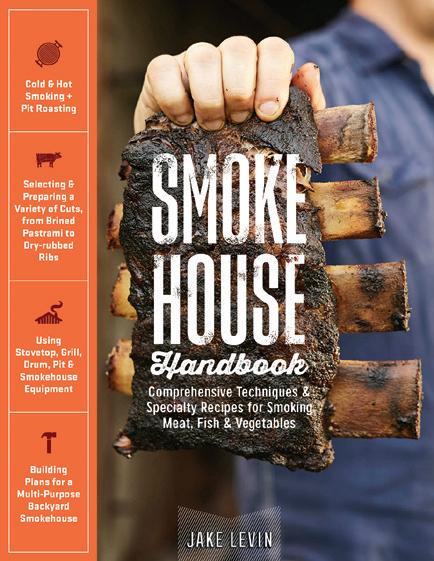
Detailed step-by-step photos show the various techniques, including cold smoking, hot smoking, and pit roasting.


#9360 $24.95 Member: $21.95
FIERY FERMENTS
The authors of the bestselling Fermented Vegetables are back, and this time they’ve brought the heat with them. Get more than 60 recipes for hot sauces, mustards, pickles, and more from around the globe.
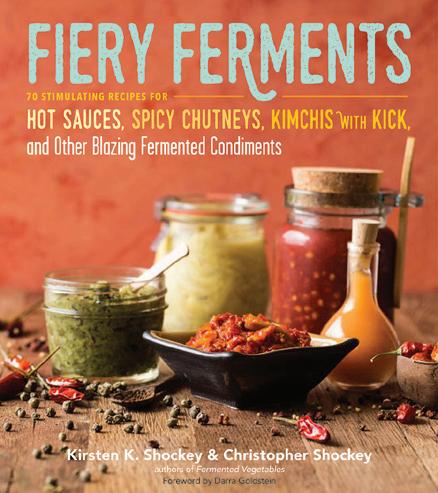
#8274 $24.95 Member: $21.95
CAST-IRON COOKING
Get the most from your cast-iron cookware with the 40 fabulous recipes found inside CastIron Cooking. From a full English breakfast to chilaquiles, pan pizza, cheesy beer fondue, and more, these gourmet recipes are specifically designed for your cast iron. You’ll also learn how to buy the cast-iron pots and pans that are right for you and how to care for them successfully.
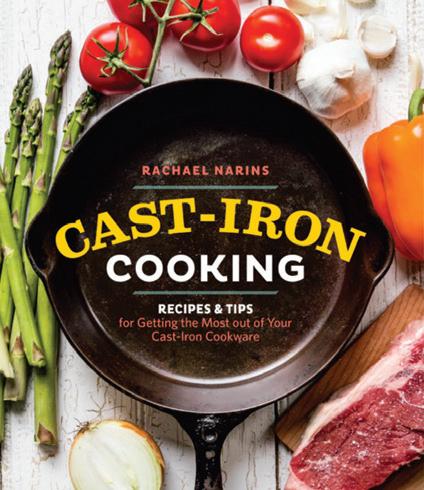
#7994 $12.95 Member: $11.95
THE GRAIN-FREE, SUGAR-FREE, DAIRY-FREE FAMILY COOKBOOK

The Grain-Free, Sugar-Free, Dairy-Free Family Cookbook offers a new system for preparing food and approaching the kitchen that gets kids involved in cooking and encourages excitement around food. The recipes are rich in healthy fats, nutrient-dense vegetables, ferments, and grass-fed meats and include snacks, school lunches, and delicious sweet treats that rival the flavors of sugar-dense desserts. With Webb’s cookbook, this diet plan is not only possible but also manageable and fulfilling.

#9448 $34.95 Member: $29.95
MEALS IN A JAR

Meals in a Jar provides the step-by-step, detailed instructions needed to create all-natural breakfast, lunch, and dinner options that you can keep on a shelf and enjoy at any time. These scrumptious recipes allow even the most inexperienced chefs to serve gourmet dishes. Not only are these meals perfect for everyday events like camping trips, after-school study sessions and rushed evenings, but they can also be lifesavers in times of disasters like fires, blackouts, or hurricanes.
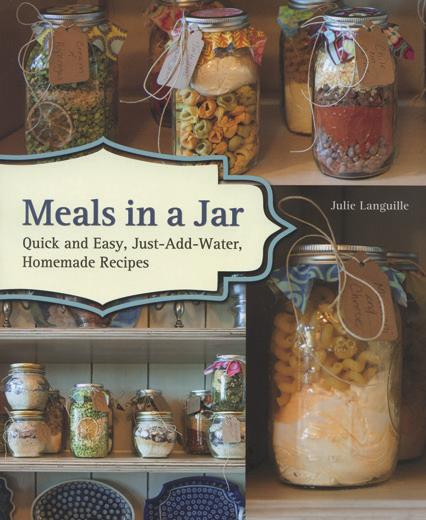
#6657 $15.95 Member: $14.95
HAPPY HENS & FRESH EGGS
In Happy Hens & Fresh Eggs, author Signe Langford provides practical advice on keeping the garden both gorgeous and productive, and hens happy and healthy. In addition to answering questions about coop construction, year-round egg production, and whether or not a rooster is really needed, Langford covers the best breeds for backyards. Also included are dozens of simple and elegant recipes from her own kitchen, as well as contributions from celebrated chefs.
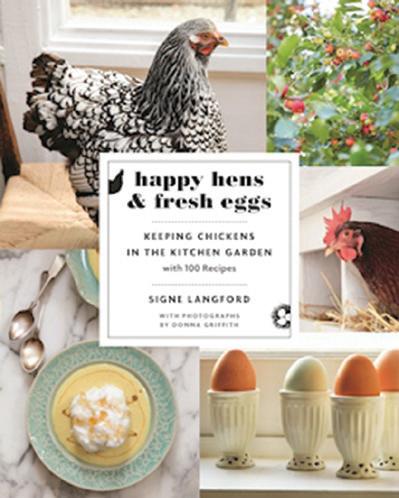
#7978 $22.95 Member: $19.95
WET & DRY VACUUM SEALER WITH DATE CODE STAMP & STARTER KIT

The Wet & Dry Vacuum Sealer features an innovative dual-stage design that seals liquids like stews, sauces, and fruit purees quickly and consistently. The integrated date coder heat-stamps dates onto the bag. The built-in storage compartment neatly stores two different sizes of rolls. Cut bags to size quickly with the built-in cutter. Starter kit includes an 8” by 22’ roll, 11” x 18’ roll, six Stand-Up Quart Bags, and an accessory hose. Available for shipment to continental US addresses only.

#11775 $159.99 Member: $149.99

www.Grit.com 65 OR VISIT: Store.Grit.com Mention Promo Code: MGRPANZC SALES ENDS 6/19/23
NEW ITEM! BEST SELLER
BEST
BEST
BEST SELLER BEST SELLER
SELLER
SELLER
COUNTRY WISDOM & KNOW-HOW
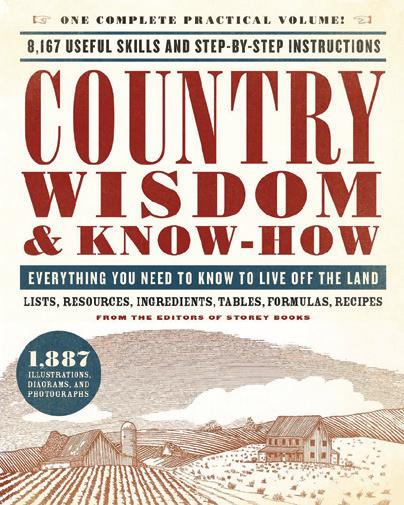
Country Wisdom & Know-How is an unprecedented collection of information on nearly 200 individual topics of country and self-sustainable living. Compiled from the information in Storey Publishing’s landmark series of “Country Wisdom Bulletins,” this book is the most thorough and reliable volume of its kind. Nearly 1,000 black-andwhite illustrations and photographs run throughout, and fascinating projects and trusted advice crowd every page.
#8219 $25.99 Member: $21.99
BEST SELLER BEST SELLER
LIVING OFF THE GRID SET
COUNTRY WISDOM & KNOW-HOW: FOR GARDEN AND TRAIL
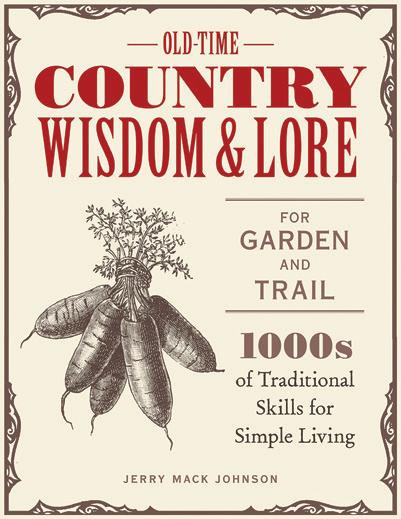
Achieve your goal of a self-sufficient, sustainable lifestyle with instruction on a range of basic garden and trail techniques inspired by old time country living, no matter where you live. Whether you are a country dweller, urbanite, or somewhere in between, you can respond by learning to garden more simply, use what you have, and be more sustainable.
#11285 $22.99 Member: $19.99
THE PREPPER’S GUIDE TO FORAGING
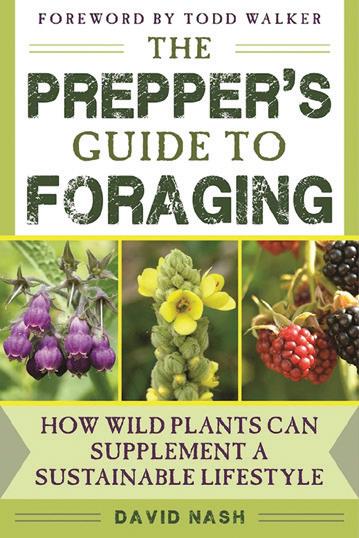
In this unique guide, 25 plants common to the United States are described and illustrated with notations for their common usage. Each plant in this book comes with one recipe for food and detailed instructions for at least one alternative use. Additional instructions for the preparation of standard medicinal items like tinctures, creams, and infusions are included, as well as botanical guides to help identify other plants. Particular emphasis has been added to North American trees.
#11643 $17.99 Member: $15.99

10-FRAME BEEKEEPING STARTER
Do you want to try beekeeping on a budget? This 10-Frame Basic Beekeeping Starter Kit is perfect for you! The fully assembled kit includes a hive body, 10 frames, gloves, a veil, a smoker, and more. Please allow two weeks for delivery. Available for shipment to continental U.S. addresses only.

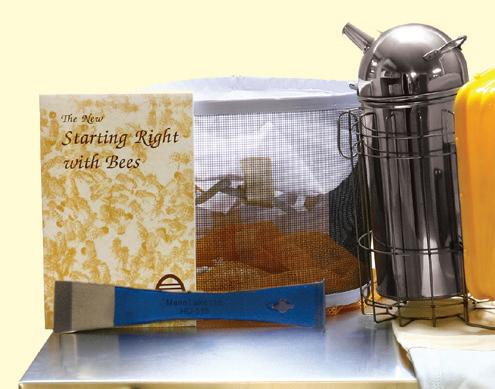
#9513 $249.95 Member: $239.95

If you have been wondering if the offgrid lifestyle is for you, or want to make the leap but don’t know where to start, then the Living Off the Grid Set is the perfect resource for you! In Living Off the Grid, Gary Collins talks you through the different options that come with the lifestyle, and he provides tips and advice to make the transition easier for you. The Beginner’s Guide to Living Off the Grid offers you the chance to put your newfound knowledge to the test. Whether you’re completely on board or still thinking about moving off the grid, these resources will help you further your knowledge and live a simpler life.


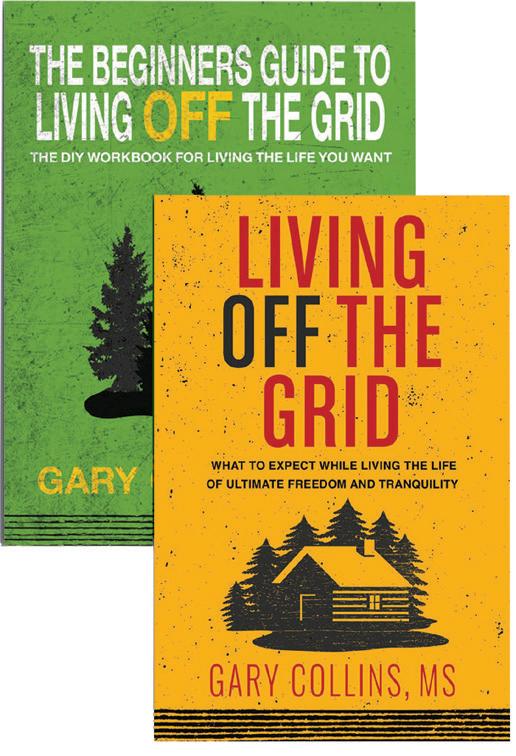
#10118 $32.94 Member: $29.99
E-CLOTH WINDOW CLEANING KIT


The E-Cloth Window Pack quickly and easily cleans all types of windows, including frames and sills, leaving a perfect streak-free, lint-free, finish. Removes 99% of bacteria, all using just water. Just wet the waffle-weave Window Cloth with warm water and wring out to remove excess water. Once clean, follow with the dry Glass & Polishing Cloth while the surface is still damp for a crystal clear finish.
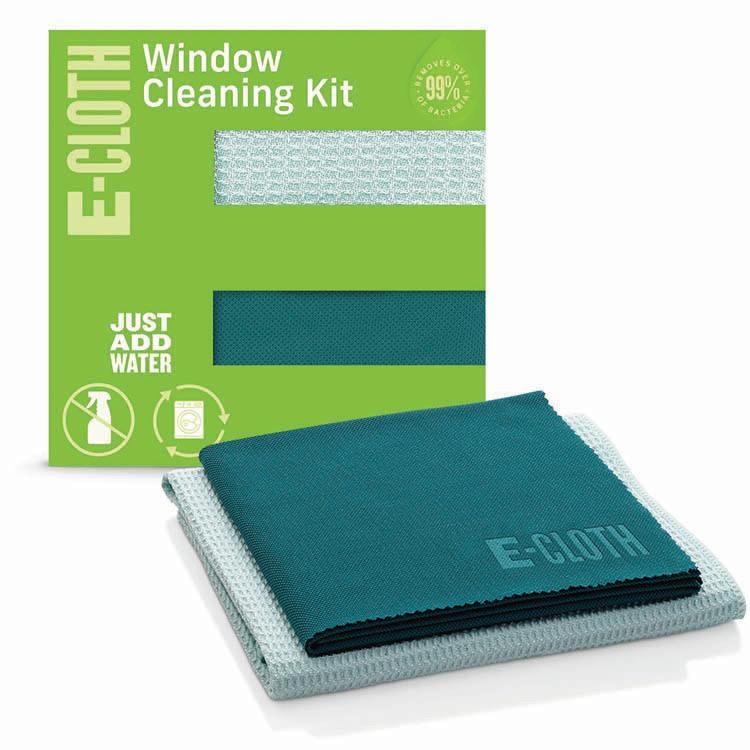
#10663 $14.99 Member: $13.99

E-CLOTH KITCHEN DYNAMO SCRUBBER
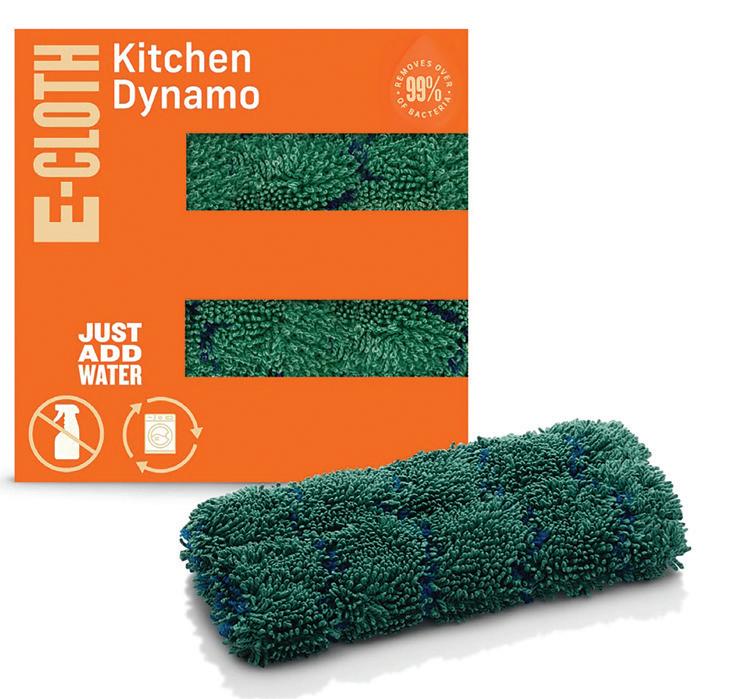
The E-Cloth Kitchen Dynamo minimizes the toughest challenges, soaking up spills and trapping grease and grime in and around sinks, small appliances, and even stainless steel and cast iron cookware. There’s no need to add additional cleaners — or even dish soap. Just dampen with water and wipe. Masses of extra-long, ultra-absorbent microfibers reach into nooks sponges miss, and unlike sponges, the Kitchen Dynamo won’t reintroduce grease and grime to the places you’re trying to clean.
#11634 $7.99 Member: $6.99
TO ORDER, CALL TOLL-FREE: 866-803-7096 (OUTSIDE U.S. AND FOR CUSTOMER SERVICE: CALL 785-274-4365)
May/June2023 66
THE COMPLETE ROOT CELLAR BOOK



This book takes a fresh look at the art, science and romance of building and stocking a root cellar. There are detailed, illustrated construction guides for making four different kinds of root cellars that are functional and attractive. These include neverbefore-seen models for apartment and condo dwellers and home owners without a basement. The Complete Root Cellar Book provides technical information on using photovoltaics (solar cells) and other energy technologies to enhance a root cellar’s performance and ecological sustainability.
#5252 $24.95 Member: $21.95
BEST SELLER
FARMING ON THE WILD SIDE
With practical tips and techniques, Farming on the Wild Side is both an expert guide and an inspiring story of how and why the Haydens turned a former conventional dairy farm into a biodiversity-based regenerative farm. It’s a story about their farming practices and how they built a relationship with the land and all its inhabitants by working to heal and restore as co-creators with nature.
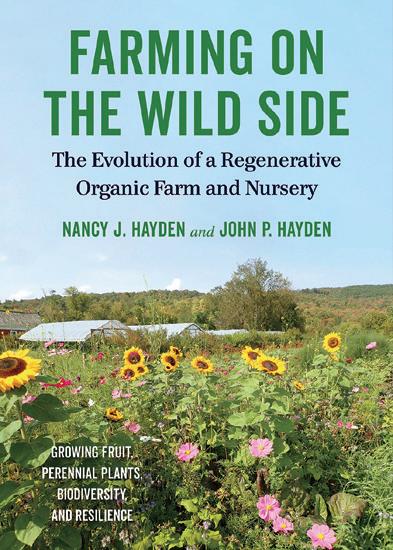
#9807 $29.95 Member: $25.95
THE PERMACULTURE HANDBOOK
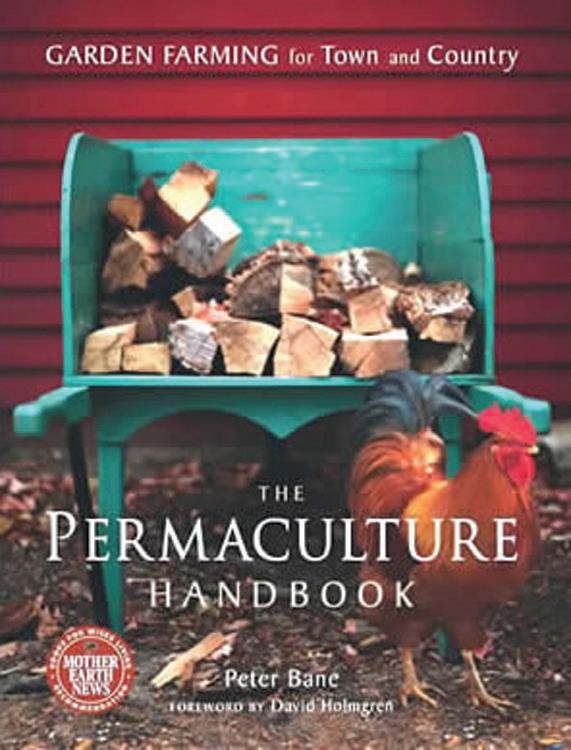
The Permaculture Handbook is a stepby-step guide to creating resilient and prosperous households and neighborhoods, complemented by extensive case studies of successful farmsteads and market gardens. This comprehensive manual demonstrates how garden farming can be both an economic opportunity and a way to spend less. It shows how, by mimicking the intelligence of nature and applying appropriate technologies, permaculture can create food security, resilience, and a legacy of abundance.


#6017 $44.95 Member: $23.50
THE HALF-ACRE HOMESTEAD
The Half-Acre Homestead is a record, with over 500 color photos, of author Lloyd Kahn’s and his wife Lesley’s owner-built home and garden. They show you what the house and garden look like, how various functions operate, and tools they use in the kitchen, garden, and shop. You will also find recipes and sections on fishing and foraging, descriptions of raised beds, raising chickens, collecting rainwater, and more.

#10154 $19.95 Member: $16.95
THE LEAN FARM GUIDE TO GROWING VEGETABLES
The Lean Farm Guide to Growing Vegetables offers strategies for farmers to stay flexible and profitable even in the face of changing weather and markets. Much more than a simple exercise in cost-cutting, lean farming is about growing better, not cheaper, food—the food your customers want.
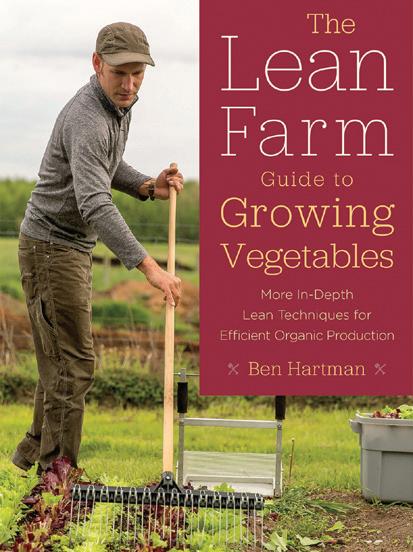
#8429 $29.95 Member: $25.99
BEST SELLER
EMERGENCY WATER COLLECTION KIT
The Emergency Water Collection Kit is specifically engineered to aid in the safe collection, pre-treatment, and testing of raw water from a variety of available sources, prior to the filtration process. Included is a 5-gallon water collection pail with lid pitcher scoop, a washable 1-micron pre-filter bag, water pretreatment sterilizer with micro-scoop, mixing spoon, and test strips, and gloves, safety glasses and face masks with charcoal filters.

#10489 $99.99 Member: $89.99
THE BACKYARD HOMESTEAD AND SEASONAL PLANNER KIT
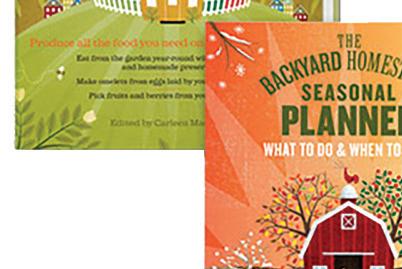

The Backyard Homestead is a comprehensive guide to self-sufficiency that gives you all the information you need to produce your own food on just a quarter acre of land. Its companion planner, The Backyard Homestead Seasonal Planner, offers expert advice on what tasks to do around your farm and when to do them — no matter where on the planet you call home. Together, these two books combine to make one of the most practical guides to self-sufficiency on the market.

#10097 $37.90 Member: $32.99
THE SELF-SUFFICIENT LIFE AND HOW TO LIVE IT
The Self-Sufficient Life and How to Live It offers step-by-step instructions on everything from chopping trees to harnessing solar power; from growing your own vegetables and fruit, and preserving and pickling your harvest, to baking bread, brewing beer, and making cheese. Seymour shows you how to live off the land, running your own smallholding or homestead, keeping chickens, and raising (and butchering) livestock.
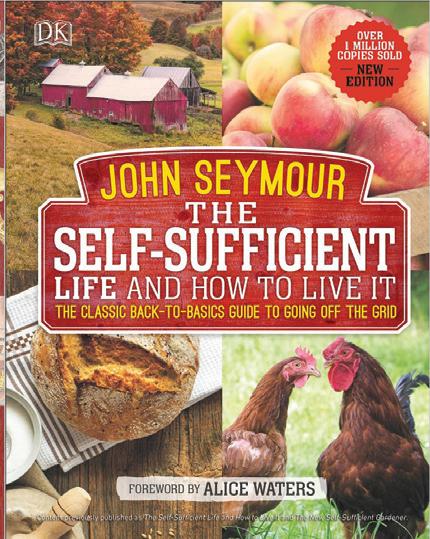
#11335 $35.00 Member: $29.99

HOMEGROWN & HANDMADE, 2ND EDITION
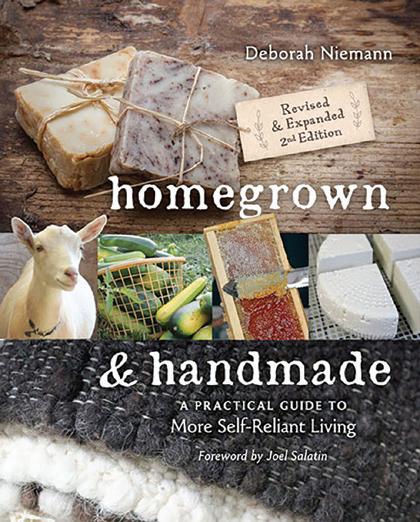
Homegrown & Handmade shows us how making things from scratch and growing some of our own food can help you eliminate artificial ingredients from your diet, reduce your carbon footprint, and create a more authentic life. Whether your goal is increasing your self-reliance or becoming a full-fledged homesteader, it’s packed with answers and solutions to help you rediscover traditional skills, take control of your food from seed to plate, and much more. Also available as an E-Book!
#8443 $29.95 Member: $25.95
www.Grit.com 67 OR VISIT: Store.Grit.com Mention Promo Code: MGRPANZC SALES ENDS 6/19/23
Draft Horses on the Homestead
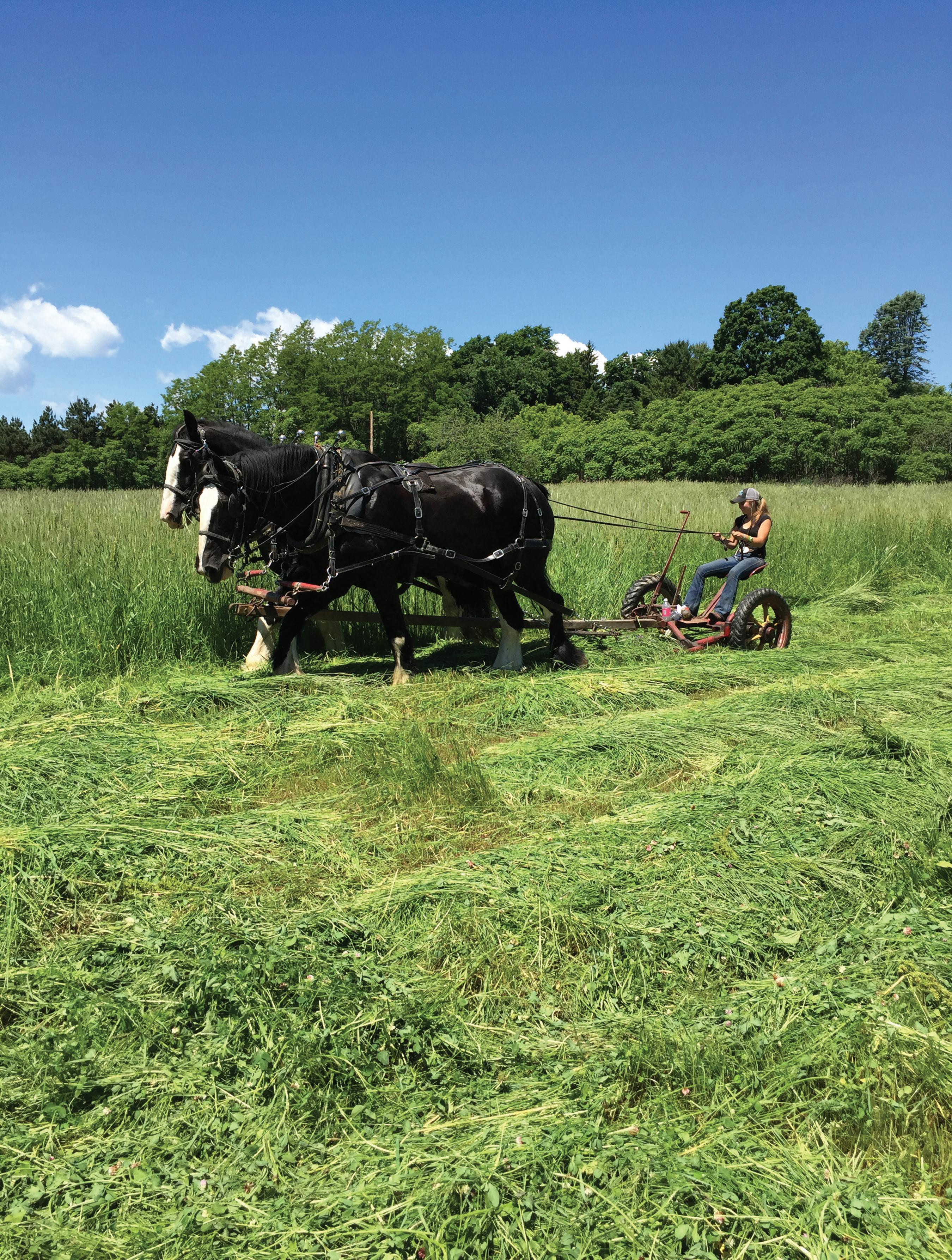
Historical Skills In Use Today
These powerful animals can provide modern farmers a fuel-efficient way to work the land.
 By Dana Benner
By Dana Benner

Atone time, most farms had at least one team of draft horses. They were used to pull lumber from forests and stumps from fields. They plowed cleared fields to raise crops, delivered goods to market, and returned with needed supplies. (Try to do that with your tractor.) Horses fertilized the fields and forests in which they worked, and they did it all with minimal environmental impact. If you consider that some of the land they plowed was used to grow hay and grain, then you can safely say these horses helped produce some of the “fuel” that kept them going.
With the arrival of the combustion engine, these once-indispensable members of the farm team became obsolete. According to Steve Bjerklie of Sanborn Mills Farm in Loudon, New Hampshire, “By the second half of the 20th century, the efficiency of gas- and diesel-powered machinery had pushed draft-animal logging [and farming] largely to the fringes.” With today’s
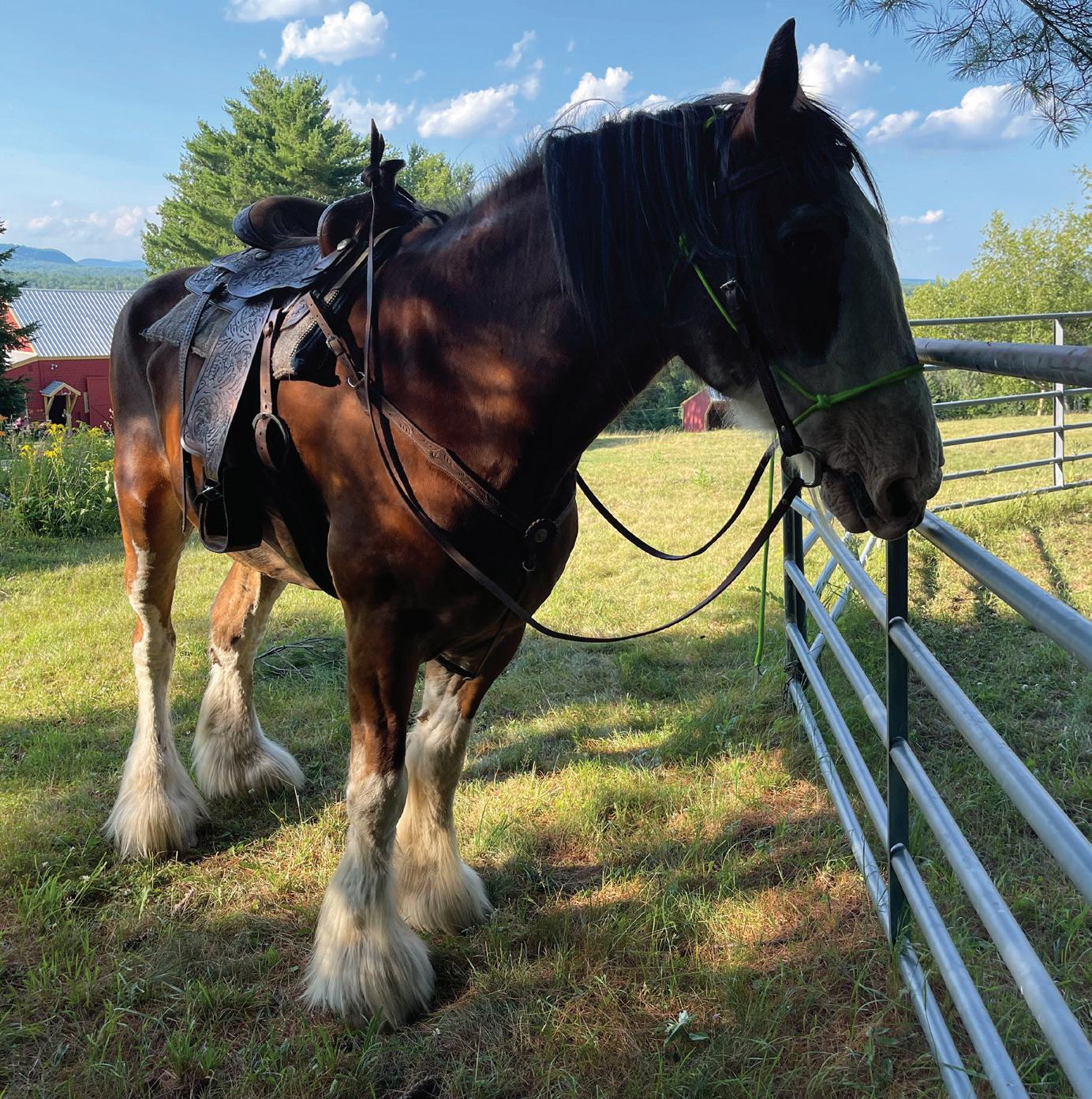
• Professional quality, 3-blade mowing deck (48" or 60" cutting width)
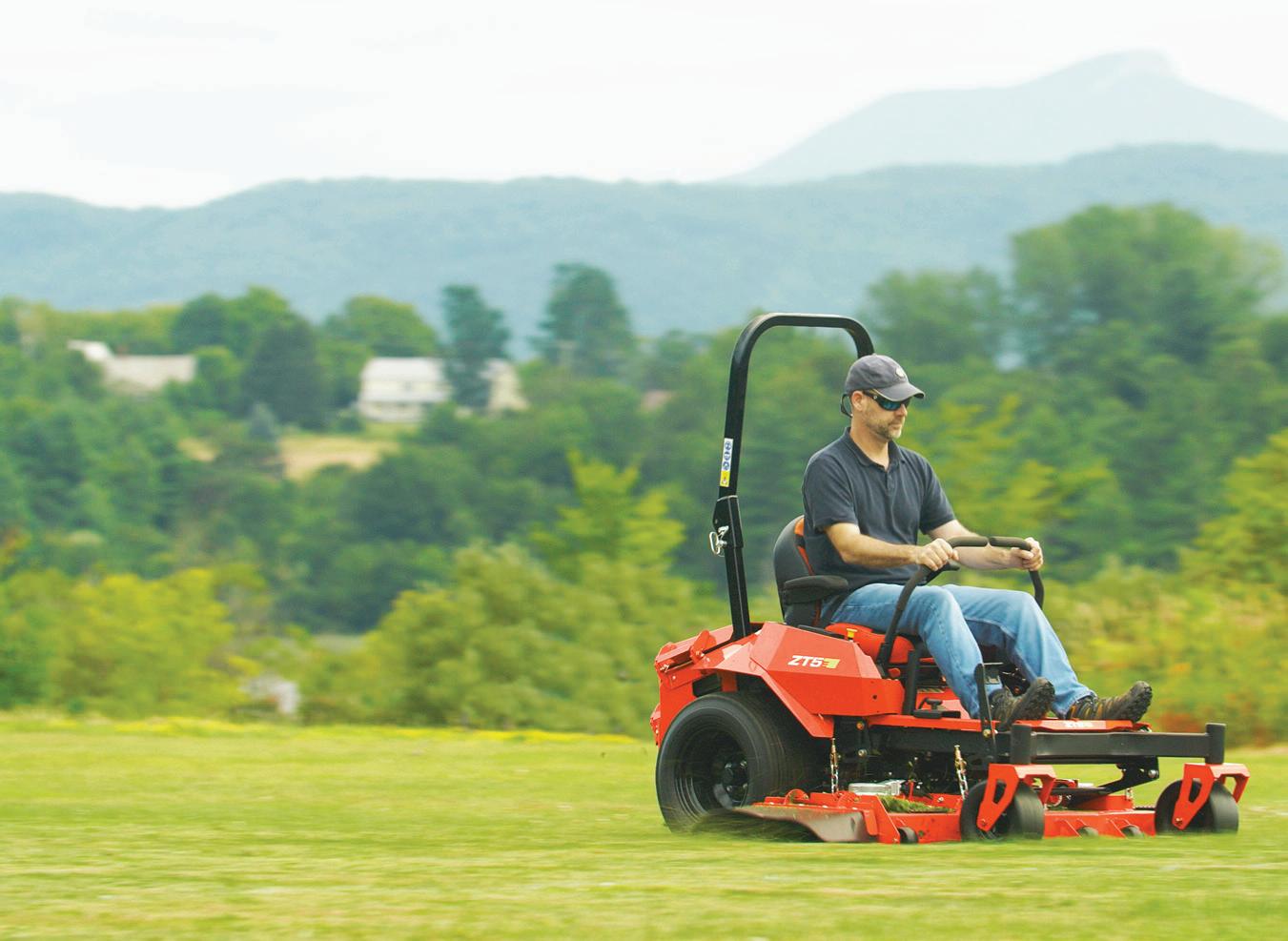

• No gas, no oil, no emissions, less noise, and virtually maintenance free
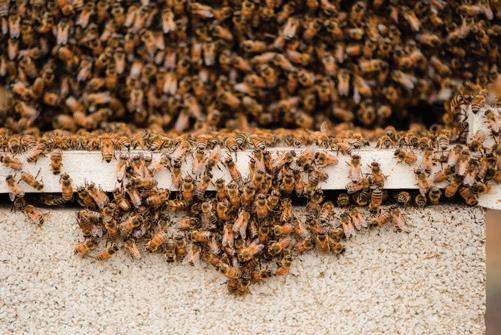
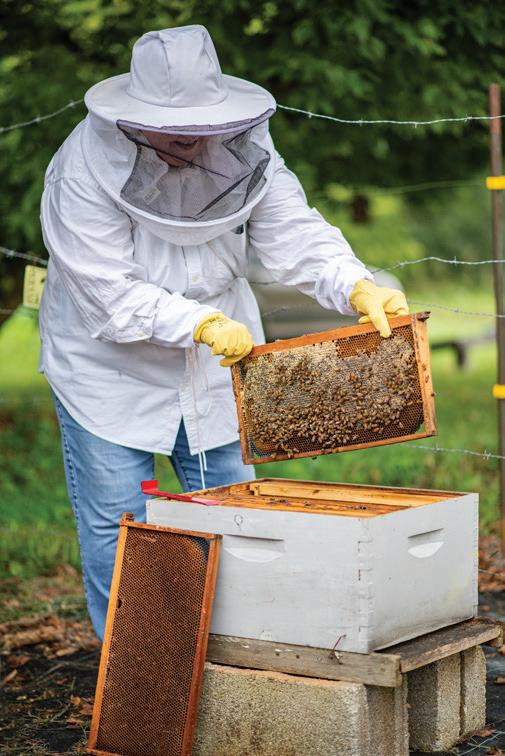
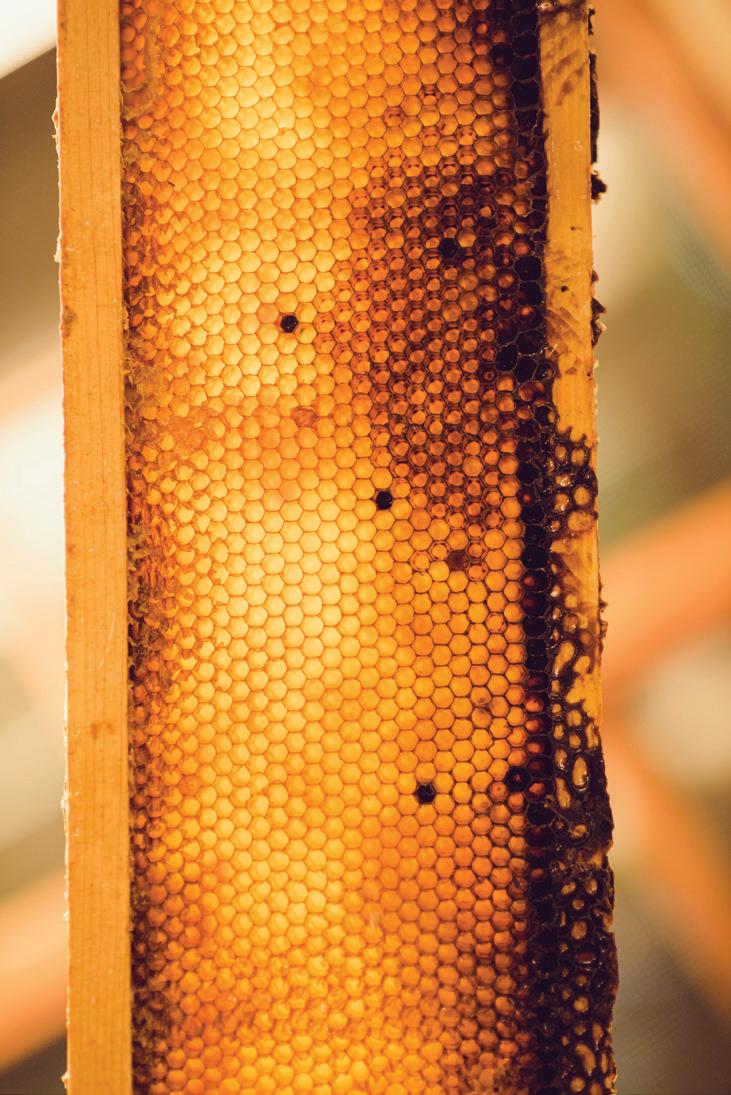
• Accepts up to 3 E-Series Battery Packs (2.5 kWh each), so user can customize runtime to property size



www.Grit.com
B rian ones ; opposite C athy W ells See #9 on page 63
ALL-NEW! DR® ELECTRIC ZERO-TURN LAWN MOWERS SOME LIMITATIONS APPLY FREE SHIPPING SALE! DRmowers.com Request your FREE Product Catalog! Toll Free: 877-330-9753 Mow up to 5 ACRES on a single charge! USA ENGINEERED AND BUILT Assembled in the USA using domestic and foreign parts.
Clydesdales were originally bred for heavy field work.
1-800-FOLK-SCH BRASSTOWN, NORTH CAROLINA folkschool.org/grit
growing concerns about climate change and rising fuel costs, many people are taking a second look at horses on the homestead.
Decoding Draft Breed Classes
Popular draft breeds in North America include Morgan, American Cream Draft, Belgian Draft, Clydesdale, Percheron, and Shire. Of these breeds, the Belgian and the Percheron are most popular. The Shire is the largest, the Morgan is the smallest, and the American Cream is the most endangered.
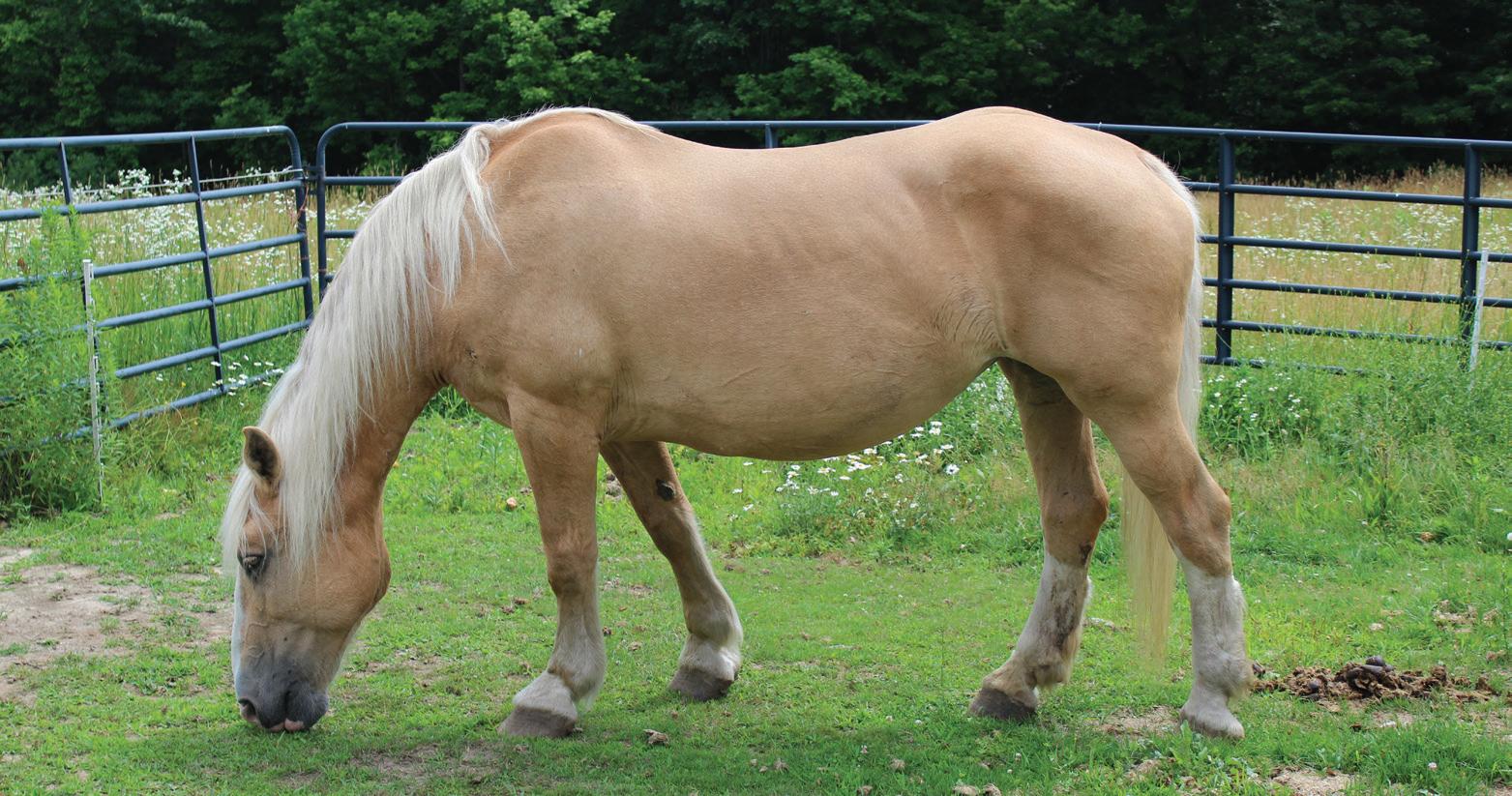

Draft horse breeds are categorized into light, medium, and heavy classes. The designations have less to do with the actual size of the horses and more to do with the work each breed is designed to do. For example, the American Cream and the Percheron are roughly the same size, but the American Cream is considered a medium draft breed and the Percheron is in the heavy draft class.
Historically, the type of draft horses used depended on the area where they were developed and how and where they were worked. Smaller properties with hilly and rocky terrain often required light and medium draft horses, such as the Morgan and the American Cream. On larger properties, farmers used heavy draft breeds, such as the Percheron, the Belgium, and the Shire. The timber industry relied on the heavy draft breeds to haul logs out of the woods.
Finding the Right Fit for Your Farm
If you’re considering adding draft horses to your farm, you’ll first need to ask a few questions.
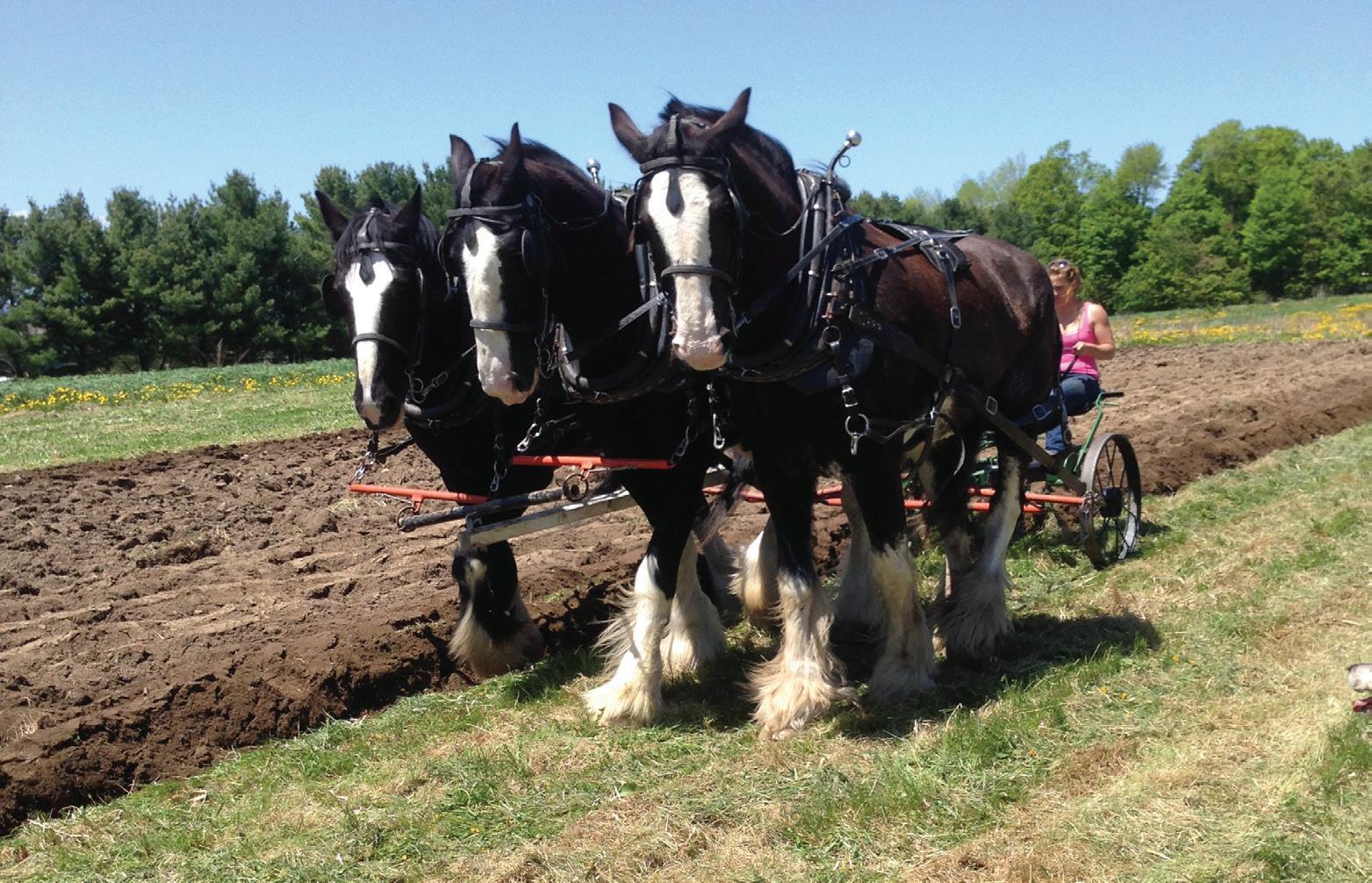
1. How large is the property being worked?
2. What type of terrain is it?
3. What type of work do you intend to do? Would you use the horses for logging, farming, clearing land, or a little of everything?
Cathy Wells, who runs a team of Shires at Unity Farm in Vermont, says,
From top: A Morgan horse; a team of Shires plowing a field; an American Cream at MerEquus.
D ana B renner (3) May/June 2023 70
“I think working horses are best on small farms. If you’re farming large elds, you don’t have a lot of time to spend getting the horses ready and putting them away.”
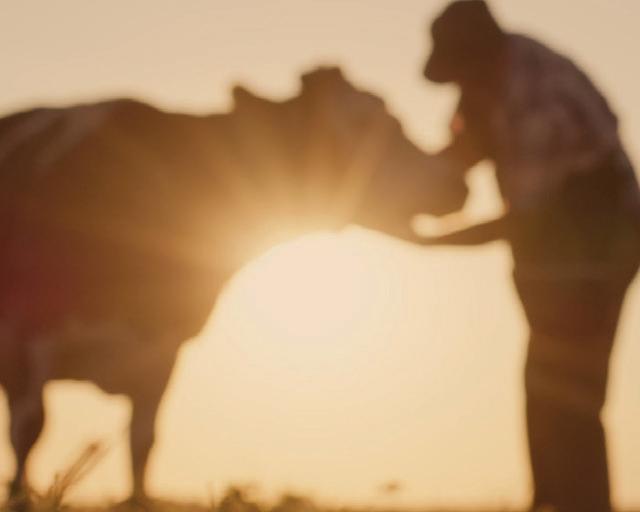
Ray Ramsey, farm manager at Sanborn Mills Farm, states, “It all depends on what you want to do. It also depends on the property size and terrain. The horses and how they’re used will be different on property in New Hampshire, where plots tend to be smaller, than on a larger spread in the Midwest.”
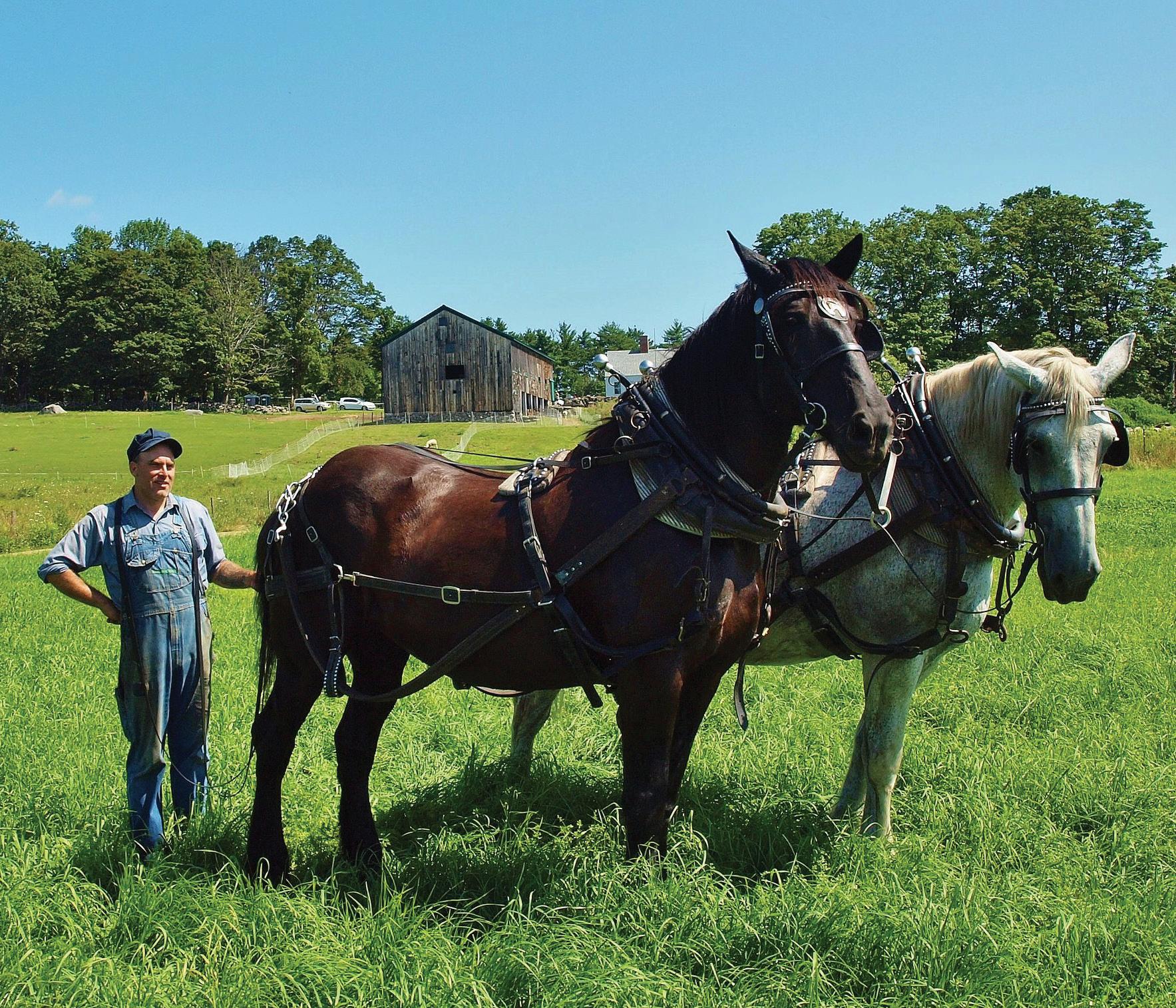
Light draft breeds are perfect for working smaller properties. The Morgan falls into this category, weighing between 900 and 1,000 pounds and measuring 14.2 to 15.2 hands. In the hilly and rocky New England countryside, where the Morgan came into being, this horse was used to plow elds and pull rewood out of the surrounding forests. In winter, it was used to pull sleighs and maple sap to the sugar shack. As a medium-sized horse, the Morgan was also immensely popular as a riding horse.
Another choice for small-to-medium properties is the American Cream Draft . The American Cream is one of North America’s most critically threatened draft horse breeds. I traveled to MerEquus Equine Rescue and










Sanctuary in Poland, Maine, to speak to Kerrie Beckett to nd out just how remarkable this horse is.
The American Cream is a mediumsized draft horse weighing between 1,800 and 2,000 pounds and standing between 15.1 and 16.3 hands tall. According to Beckett, the American Cream is the only draft horse developed in America that’s still in its genetically pure form. These horses are powerful, perfect for pulling stumps, plowing elds, hauling logs, pulling a wagon, or even riding. Beckett says American Creams are calm, docile, intelligent, adaptable, and love to work. This makes them perfect for work on small farms and with novice drivers.
Larger properties and heavier work require horses that fall into the heavy class of draft breeds, including Percherons, Belgians, Clydesdales, and Shires.
The Percheron has its origins in the Le Perche region of northwestern France. Percherons weigh about 1,500 pounds and measure between 15.2 and 17 hands tall. Percherons are goodnatured and intelligent. They’re also energetic, so they aren’t the best choice for a novice driver.
You work hard on your homestead and we work just as hard to help you keep the animals in your herd or flock healthy. See our full line of award-winning products at vetericyn.com or your local animal supply store.



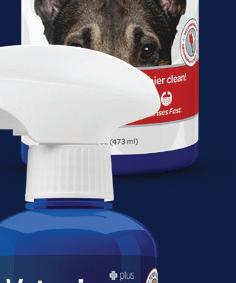


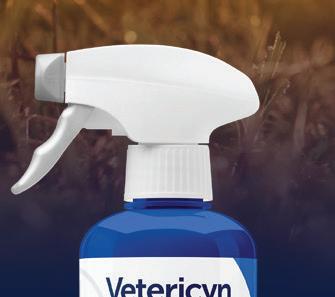

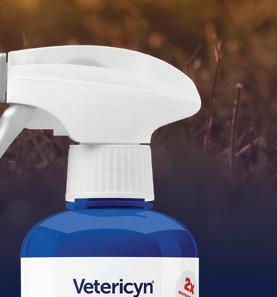



in the USA | vetericyn.com
Teamster Lars Prillaman stands with a team of Percherons at Sanborn Mills Farm.
Made
NEW LOOK! VETERICYN® WORKS AS HARD AS YOU DO. See #8 on page 63 S ANBORN M ILLS F ARM www.Grit.com 71
Storey’s Guide to Training Horses, 3rd Edition
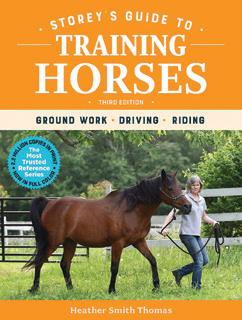
Decades of Equestrian Experience Packed Into One Book
Storey’s Guide to Training
Horses is a one-stop reference for every aspect of horse training, including a complete program for turning a shy and gangly foal into a calm, confident, well-balanced equine partner. Now with full-color photography, the third edition includes stepby-step guidance on all the essential training procedures for both English- and Western-style riding, including haltering, leading, saddling, and mounting, and addresses the finer points of gaits, lightness, and collection.
This title is available at Store.Grit.com or by calling 866-803-7096. Mention promo code MGRPANZ5. Item #10333.
Percherons have long been the most common draft horse. Powerfully built, Percherons were used to pull stumps and logs, turn stones in grist mills, plow, pull wagons, and for riding.
Belgian Drafts weigh in between 1,400 and 1,500 pounds and stand 16 to 17 hands tall. They’re wide horses and heavily muscled. Above all, they’re eager to work. Belgians are popular among loggers who need heavy loads pulled out of the woods.
Clydesdales are probably best known for pulling beer wagons, but the horses were originally bred for heavy field work. Originating in the River Clyde valley of Scotland, this breed was used to plow the steep, rocky hills of the Highlands and pull freight wagons. The breed’s high head and trademark feathering of its feet make these horses easily distinguishable.
Clydesdales weigh between 1,700 and 2,200 pounds and stand 16.2 to
18.2 hands tall. They’re large horses that, despite their size, are gentle and responsive. That being said, unless you have a great deal of property to care for, Clydesdales probably aren’t for you.
The largest of the draft horse breeds is the Shire , with horses weighing between 1,700 to 2,000-plus pounds and standing 17.1 hands tall. It’s the tallest of all horse breeds, and the animals have extremely muscled bodies. They were bred to work in teams to plow the massive fields of the old English shires, hence the breed’s name. Unless you’ve come face to face with these horses, it’s hard to appreciate just how large they are.
Pros and Cons of Owning Draft Horses
Everything we do has pros and cons, and working with draft horses is no exception. “Horses don’t burn gasoline, and, in many cases, they’re easier on the land,” Wells says. “The bond of trust and respect [between horse and driver] can’t be replaced with any kind of mechanization.”
Ramsey showed me an area that had been logged using draft oxen and horses. In less than a year, the area showed no obvious sign of the animals ever being there. He told me if a mechanized skidder had been used, the impact would’ve been visible for many years.
According to Wells, one major drawback to using draft horses is finding farriers that will work on the animals, especially Shires, which have exceptionally large feet. Then there’s the cost of buying and maintaining equipment, such as harnesses and bits. She adds hay and feed costs (if you don’t grow your own) and vet bills to the list. Ramsey also emphasized the expenses associated with horses. They eat more than other draft animals, and their initial cost is more.
Although the cons to owning a draft horse may sound daunting, comparing the costs to those of owning machinery can put things into perspective. Farriers bills are comparable to replacing tires
on a tractor, loader, or other piece of equipment. When a horse is hurt or sick, it’s the same as your machinery breaking down. If you don’t pay the money to fix it, you don’t work. Hay and feed to a horse are the same as fuel for a machine, but unlike a machine, hay and feed turn into fertilizer.

Before You Get Started
Whether operating one horse or a team of horses, it’s serious business. If you plan to use draft horses, you must give it your all. Before investing in a draft horse, consider that they’ll need to be properly trained. “I highly recommend a mentor to anyone who wants to use drafts to work or farm and isn’t familiar with it,” Wells says.
Another consideration is the amount of time you’ll have to invest. Unlike machines that you can return to the barn, turn off, and be done with, horses require a great deal of work, both before and after a job. “I’ve seen a lot of people enthusiastically get started and then fail to continue because there’s so much to handle,” Wells says. Ramsey adds, “Owning horses is a full-time job. Even when they aren’t working, they need care. You can’t just park them at the end of the day. This is something everyone needs to consider.”
Having a draft horse may not be the best option for you they require a great deal of work but they’re worth considering. Draft animals offer a solution to the growing costs of fuel, high interest rates, and environmental concerns associated with heavy machinery. If you decide to make the leap, do your research to find the best breed for your farm, and take the time to ensure both you and the animal are welltrained. Then, take a step back in time and enjoy working your land alongside these beautiful animals.
Dana Benner has been writing about all aspects of the outdoors and selfsufficiency for over 30 years. His work has appeared in numerous publications.
May/June 2023 72
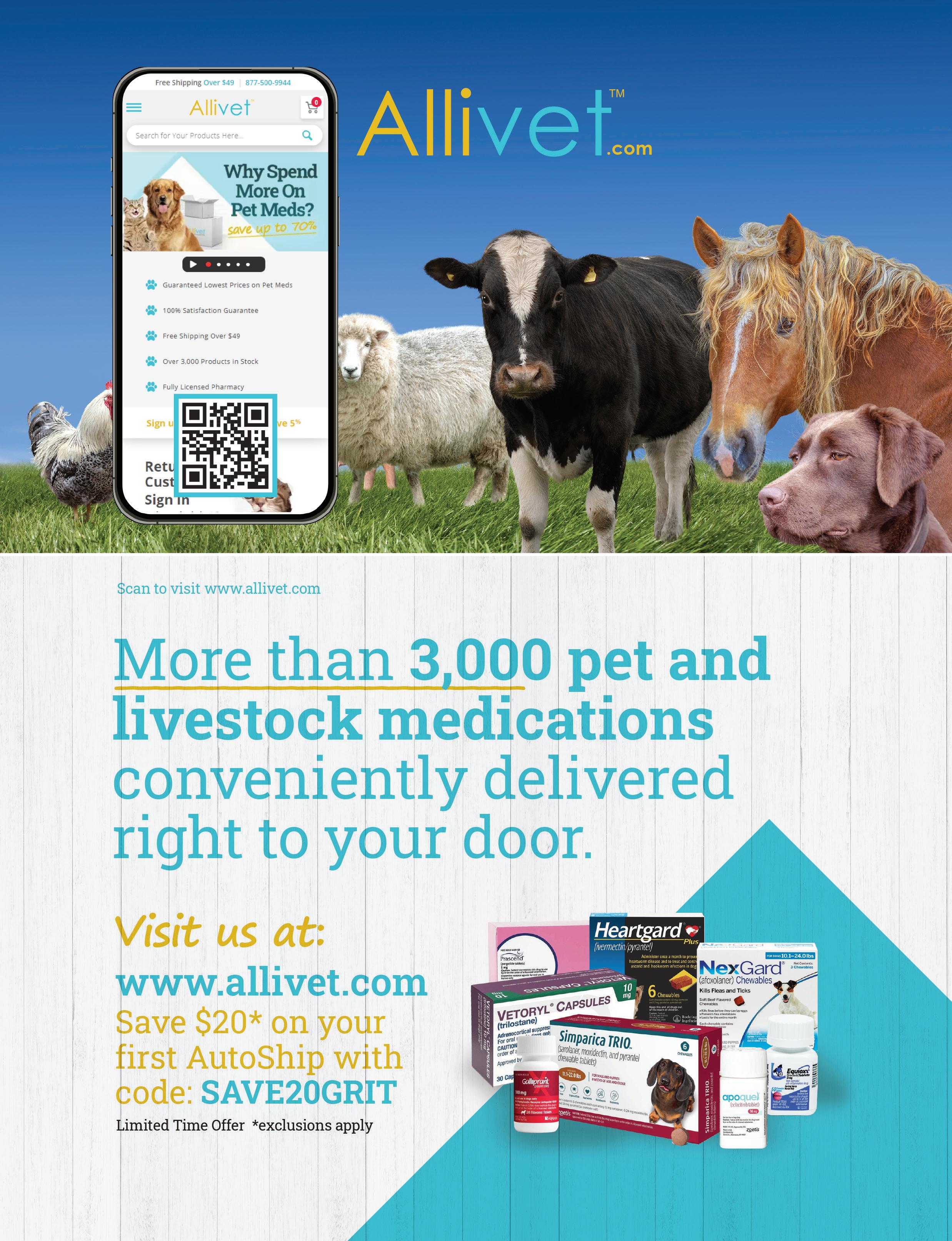
See #1 on page 63




















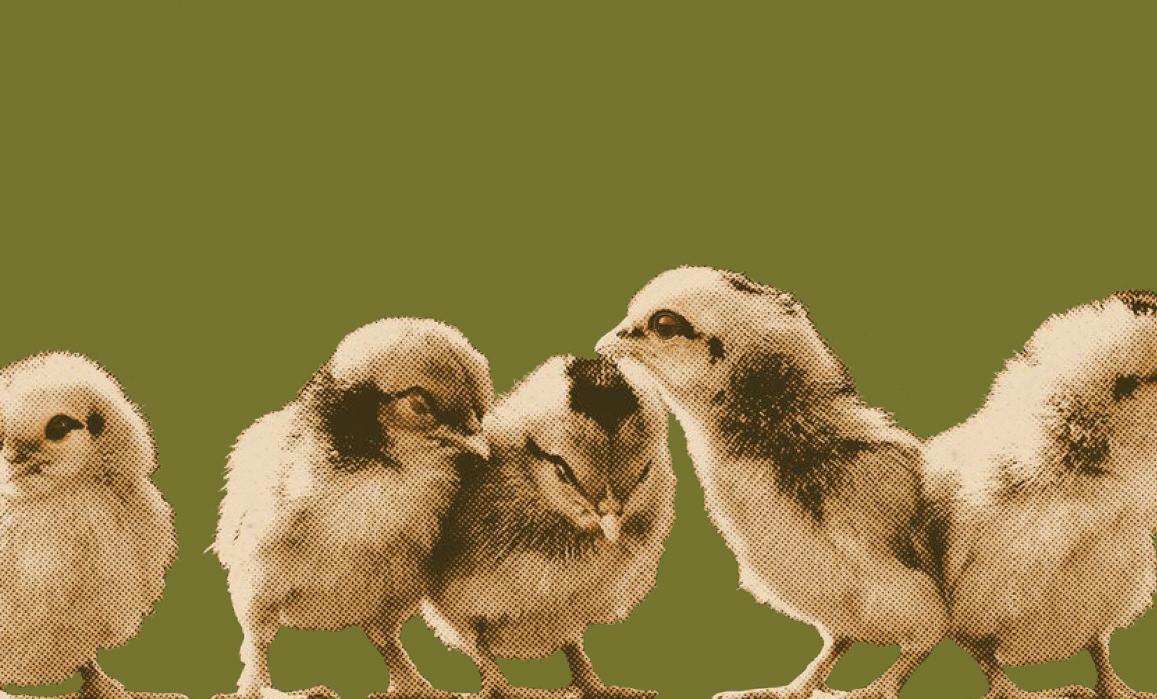






























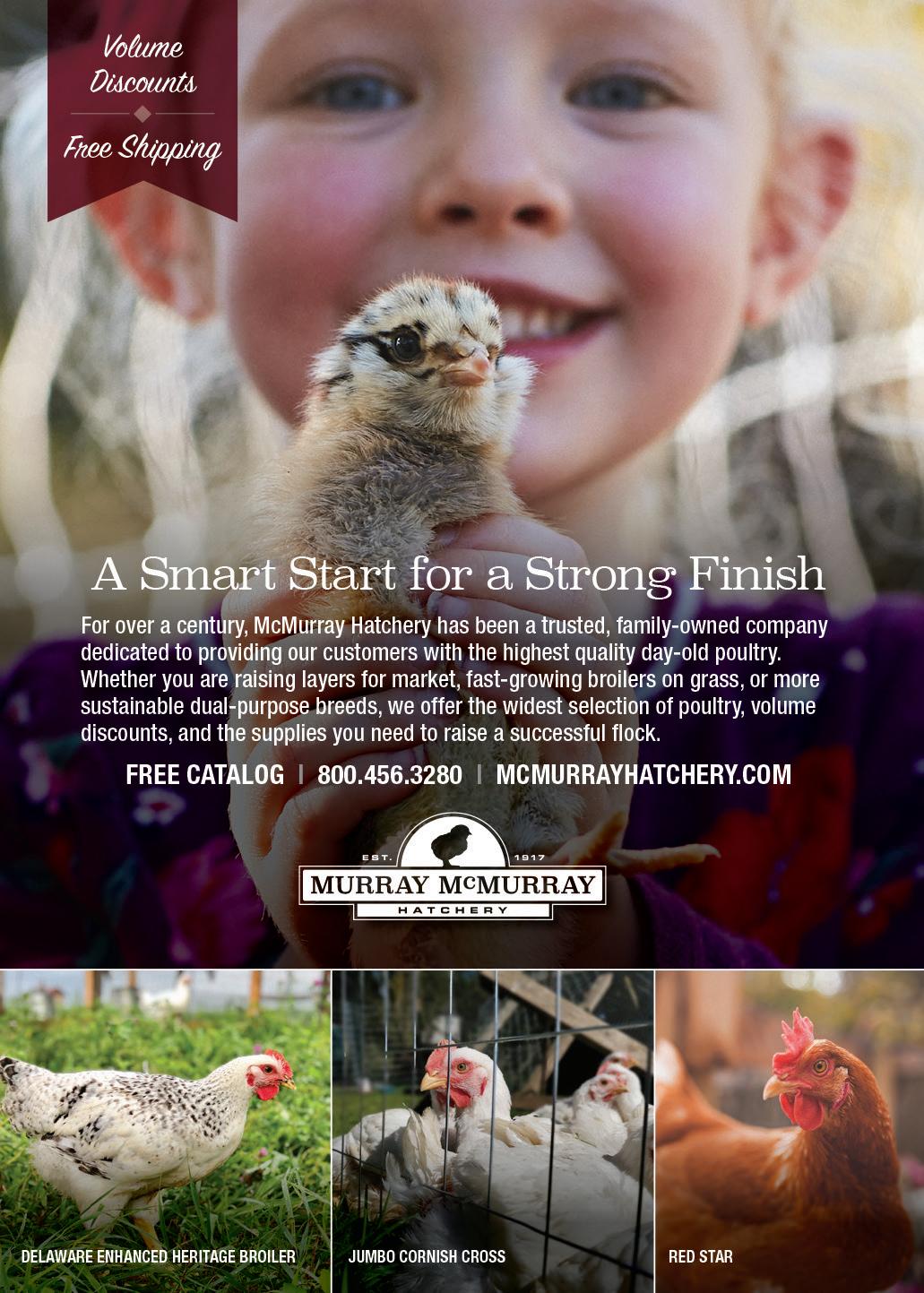
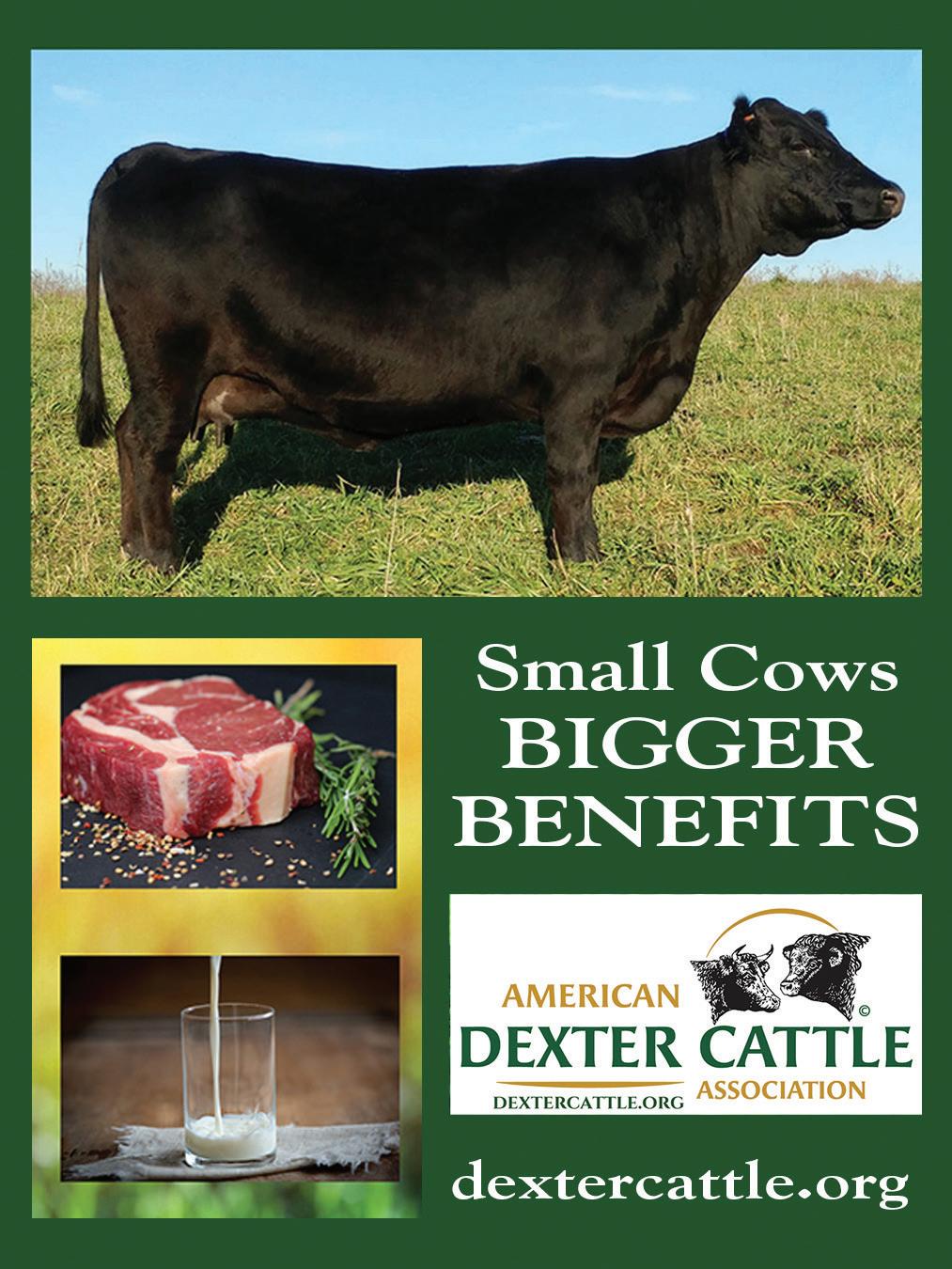
THOUSANDS of products EXCLUSIVE online sales SIX RETAIL locations CUSTOMER SERVICE for all your needs 800-720-1134 STROMBERGSCHICKENS.COM chick days Pre-Order Your Chicks Now! Pickup on location at Mann Lake stores Sign up on our site for alerts on pre-orders and special deals on your next flock! COLORED EGG LAYERS 20 BREED VARIETIES Request a Free CATALOG! BY MAIL, PHONE, EMAIL, OR ONLINE Follow us on Instagram Like us on Facebook Scan to download our app on Android or iOS today • Friendly Service • Four Generations of Experience • WHITE EGG LAYERS • MEAT BIRD • DUCKS • TURKEYS • GUINEAS • P.O. Box 108, Zeeland, MI 49464 (888) 685-0040 Office@Townlinehatchery.com WWW.TOWNLINEHATCHERY.COM OFFER A MOBILE APP FOR YOU TO SHOP BABY CHICKS, GET DEALS, AND STAY CONNECTED WITH OUR COMMUNITY! and get 10% of your next order! ANDROID For IOS
ALPACAS
ALPACAS- FIBER, YARN, FINISHED alpaca garments. Pet/breeding stock available. Maureen, Turlock, CA 209-648-2384; www.macedosminiacres.com
CATTLE

MINIATURE TEXAS LONGHORNS For sale in Texas. TLBAA registered Miniature and small framed Texas Longhorns. Great for pet or show. 941-374-1856 www.Mini-TexasLonghorns.com
POULTRY
HARPER’S GAMEFARM, Bobwhite Quail and Ringneck Pheasant, Eggs, Day Old Chicks and Flight Birds. Call 806-435-3495 or 0528 or check out www.harpersgamefarm.com
GOATS
D&E DAIRY GOATS ALPINES, Saanens. Selling 200 plus head annually, breeding bucks and does available. 319-350-5819. Facebook D & E Dairy Goats.
POULTRY


Free shipping 1-day shipping (to most states) metzerfarms.com

FREE COLOR CATALOG 203 varieties shipped to your local post office, chickens, rare breeds, bantams, ducks, geese, turkeys, guineas, pheasants, quail, supplies and videos. Since “1936” Cackle Hatchery® PO Box 529, Lebanon, MO 65536, 417-532-4581. cacklehatchery.com


JOHNSON’S WATERFOWL 36882 160th Ave. NE Middle River, Minnesota 56737. 218-222-3556. www.johnsonswaterfowl.com
Breeds: Call Ducklings. White, Snowy, Pastel, Grey, Penciled and Black or Blue Bibbed.















CHICKEN SCRATCH POULTRY: Maline, Crested Cream Leg bar, Ayam Cemani, Chocolate, Jubilee, Lavender, and Black Orpingtons, Black Copper Marans, Blue Copper and Splash Marans, Ameraucana, Rumpless Araucana, Light Sussex, Coronations Sussex, Welsummer, Olive Egger, Blue Laced Red Wyandotte, Silkies and Heritage Rhode Island Reds. Larry & Angie McEwen 14025 County Rd 975E McLeansboro IL, 62859. 618-643-5602 www.chickenscratchpoultry.com
TURKEYS, RED PULLETS, Cornish Rocks, Schlecht Hatchery, 9749 500th Ave., Miles, IA 52064 563-682-7865 www.schlechthatchery.com
COUNTYLINEHATCHERY.COM Best assortments available. Chicks, ducklings, goslings, turkeys, guineas, peafowl, and hatching eggs. Coggon, IA. 319-350-9130.
717.336.4878

www.freedomrangerhatchery.com sales@freedomrangerhatchery.com
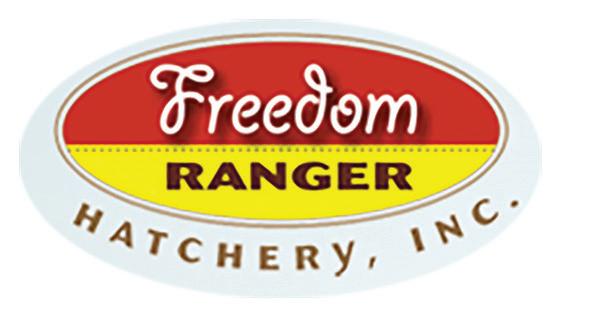
WE SPECIALIZE IN FREEDOM RANGER CHICKS; these TriColored & Red feathered chickens grow to 5-6 lbs in 9-11 weeks. We also offer Novogen Brown egg layers, French Guinea Keets, Silkies, Khaki Campbell Ducklings, and White Muscovy Ducks.
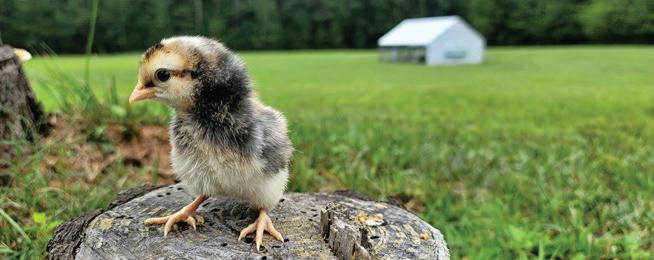
FREE CATALOG. Chicks, Turkeys, Ducklings, Goslings, Guineas, Gamebirds, Bantams, Equipment. Hoffman Hatchery, Box 129L, Gratz, PA 17030; 717-365-3694; www.hoffmanhatchery.com
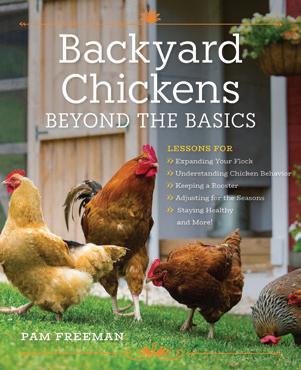
SHEEP
NATIONAL ROMELDALE CVM CONSERVANCY Dedicated to preserving this critically endangered sheep breed. An excellent dualpurpose sheep for any size farm. For more information visit www.nationalcvmconservancy.org.
MARUSHKA FARM’S YOUR SOURCE for CVM/Romeldale breeding sheep, raw fleece, roving, yarn and sheepskins. 570-490-4759; visit www.marushkafarms.com
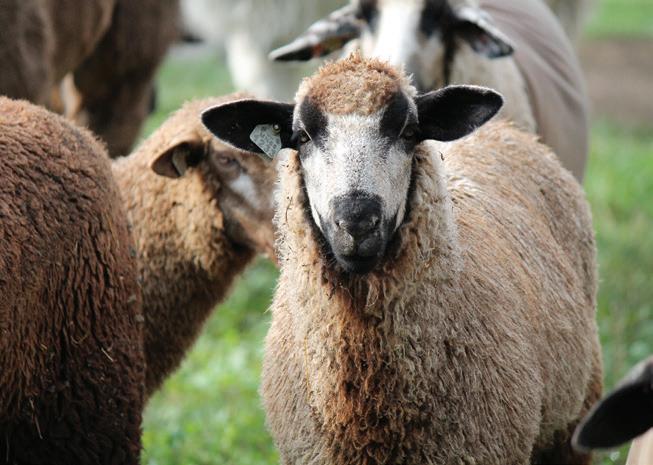
SHEEP
UNITED HORNED HAIR SHEEP ASSOCIATION, INC. Non-profit organization representing and registering Black Hawaiian, Corsican, Desert Sand, Mouflon, Multi-horned Hair, New Mexico Dahl,

www.Grit.com 75
LIVESTOCK EXCHANGE
Painted Desert, American Heavy Horned and Texas Dall Sheep. www.unitedhornedhairsheepassociation.org uhhsa@yahoo.com 937-430-1768.OPEN REGISTRY FOR HIGHLAND CATTLE Contact for a free informational packet. www.heartlandhighlandcattleassociation.org www.highlandauction.com heartlandhighlandcattle@gmail.com 417.345.0575 or text 417.733.3201 www.heartlandhighlandcattleassociation.org Order Online or Call Today! stumphousefarms.com 864.940.9871 More Than A Hatchery. BETTER KNOW YOUR flock! Expanding Your Flock Understanding Chicken Behavior Keeping a Rooster Adjusting for the Seasons Staying Healthy and More! Find out more at www.Store.Grit.com or call 866-803-7096 Please mention code MGRPANZ2. $21.99 Item #8313
CLASSIFIEDS
ALTERNATIVE ENERGY
OUTDOOR WOOD FURNACE
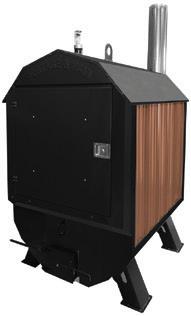
The industry leader in proven clean burn technology
• All Fire no smoke.
• Combustion efficiency 99.5%
• Burns up to 60% less wood
• 7 industry firsts
• Carbon neutral
• Oldest renewable energy.
• Compatible with off-grid use
COINS
www.TreasureChestMint.com
(844) 577-5388
Gold & Silver: Bullion & Coin

Lowest retail prices in the USA!
Send SASE for product list. 209 W 3rd Street Roswell, NM 88201
CRAFTS
SEATWEAVING SUPPLIES, chair cane, reed splint, Shaker Tape, fiber & natural rush. Complete line of basketmaking supplies. Waxed linen cord. Royalwood Ltd., 517-MEL Woodville Rd., Mansfield, Ohio 44907. 800526-1630. www.RoyalwoodLtd.com
CONTACT
Ultimate Outdoor Furnace LLC
Les Radcliffe 507-254-0622
Polar Furnace Factory Rep Dealer/ Agent opportunities
www.ultimateoutdoorfurnace.com

PUMP WATER UPHILL. No gas or electricity with Ram or Solar Pump.
Free Energy-Sun or Gravity. 800-227-8511. www.theramcompany.com

FOOD PRESERVATION
FEED
NATURE’S BEST provides premium ingredients and customer service manufacturing organic, non-GMO feed across North America. Nature’s Best knows what is important to their customers and continually strives to provide trusted products and healthy, innovative options from poultry to livestock feeds. FREE

FREE BIBLE STUDY COURSE Write: Know Your Bible, Box 157, McEwen, TN 37101.
SOON Church/Government uniting,suppressing RELIGIOUS LIBERTY enforcing NATIONAL SUNDAY LAW. Be informed! TBSM, Box 374 , Ellijay, GA 30540 tbsmads@yahoo.com 1-888-211-1715.
GARDENING/RELATED PRODUCT
SCYTHESUPPLY.COM European scythes. Mow where your tractor can’t go. Custommade handles(snaths). 496 Shore Road Perry, Maine 04667 207-853-4750, Free Catalog. www.scythesupply.com, FREE hat with scythe outfit: use code GRT at checkout.
GIFTS MADE IN THE
USA
Old Fashion Hand Made CLOTH DOLLS, Sunbonnets, Doll Clothes, American Made in Kansas. Free Catalog. Shipped only by US Postal Service. 913-856-6757

GREENHOUSES
BUILD WITH PVC

CALL 866-848-5416
TO ADVERTISE IN THE NEXT ISSUE OF GRIT
MAKE JAM & JELLY with low amounts of any sweetener. No Sugar, Preservatives, or GMOs At natural food stores or www.pomonapectin.com 559-760-0910 Get Inspired! 80 + healthy low-sugar recipes At Bookstores & Online
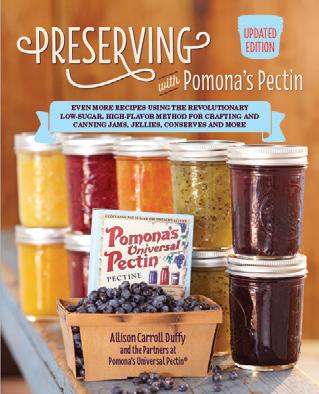

GARDENING/RELATED PRODUCT
SAVE YOUR SOLES DIG-RIG Shovel Attachment Makes digging easy Made in USA $17.24 Shipping Included. Order Now 256-718-0676. 4140 Helton Dr., Florence, AL. 35630. www.digrigshovel.com
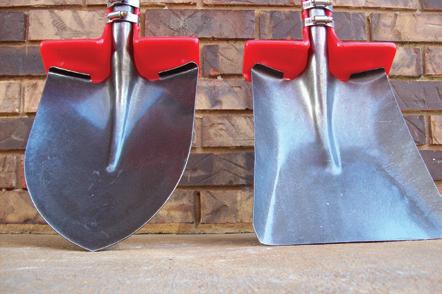
-Specialized Fittings-Free Plans -
-Snap Clamps & PVC KitsCirco Innovations, Inc. 877-762-7782

www.circoinnovations.com
HAND PUMPS
HAND PUMPS: All stainless steel for your water. Well or cistern. 5 models to choose from. No electric needed. For more information write to Jonas & Mattie's Stainless Hand pumps, 564 Clyde Marengo Rd. Clyde, NY 14433.
HEALTH
100% ORGANIC BLACK SALVE Tablets and Salve HERBAL PLUS PRODUCTS
1-800-996-3203
herbalplusnv@gmail.com
CLASSIFIEDS May/June 2023 76
POLAR G-Class Best
PORTAGE and MAIN Best
Downdraft
Updraft
HOUSEHOLD PRODUCTS
COOKIE CUTTERS Order our catalog now for only $10 (Refundable via credit voucher when your total orders for the 2023 calendar year reach $25.00) Over 700 shapes, designs, & sets covering all holidays & many subjects. Mail check, money order to: Cape Cookie Cutter Company, PO Box 424, Cape Girardeau, MO 63702.
LIVESTOCK
FISH & POND SUPPLIES: Large selection of lake, pond and watergarden supplies. Free catalog! Stoney Creek, Inc., Grant, MI. Since 1970 (800) 448-3873. www.stoneycreekequip.com

LIVESTOCK EQUIPMENT
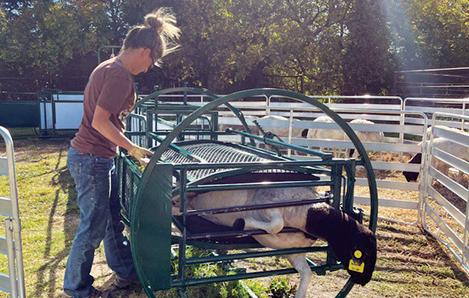
MUSIC
GOSPEL PIANO CDS Hymns, gospel songs from days gone by! All instrumental (no singing). Great for retirees, housewives, quilters, farmers, travelers, everyone! Free brochure. Jacky Campbell, 216 Spokane Rd, Natchez, MS 39120. bennycampbell495@yahoo.com
PERSONALS
CHRISTIAN SINGLES CATALOG. Photos. Penpals. Sample $1. Singles, Box 310-GT , Allardt, TN 38504. 931879-4625. www.nicesingles.com
PLANTS, SEEDS, FLOWERS
TURTLE TREE BIODYNAMIC SEED
INITIATIVE Pioneer of seed transparency offering Organic and Heirloom Openpollinated Vegetable, Herb and Flower seed. Located in Camphill Village since 1998. Free Catalog: turtle@turtletreeseed.org 1 (800) 930-7009. www.turtletreeseed.org
POULTRY
IDEAL POULTRY BREEDING FARMS, INC.

Supplying quality backyard poultry since 1937. www.idealpoultry.com

1-800-243-3257.
MYERS POULTRY FARM - FREE CATALOG. Chicks (9 meat varieties), Ducklings, Goslings, Turkeys, Guineas, more. 966 Ragers Hill Road, South Fork, PA 15956, 814-539-7026. www.myerspoultry.com
TURKEYS, RED PULLETS, CORNISH ROCKS. SCHLECHT HATCHERY, 9749 500TH AVE., MILES, IA 52064. 563-682-7865 www.schlechthatchery.com
POULTRY
HATCHING YOUR OWN CHICKS
is fun, easy and affordable with Brinsea. Forget Styrofoam incubators and watch your eggs hatch every time. Quality incubators since 1976durable, easy to clean, user friendly digital controls and 3-year warranty. Free color catalog. www.Brinsea.com
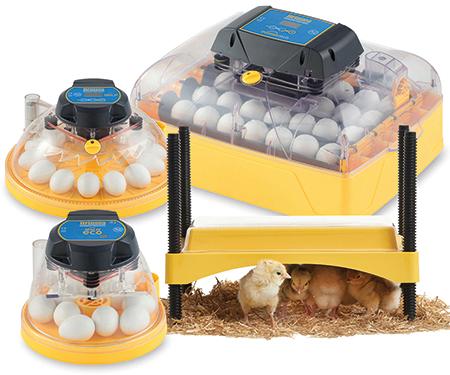
1-888-667-7009.
1-866-443-7444
LakelandFarmAndRanch.com

MACHINERY, TOOLS, SUPPLIES
PACKETS AND BULK
Vegetables Herbs Flowers Fast Shipping Order online TOLL FREE 844-254-7333. www.burrellseeds.com

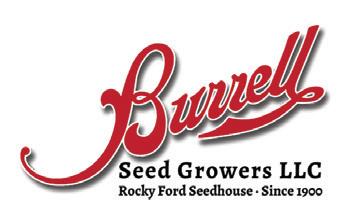
THE EGG CARTON STORE Best Prices, selection, high quality. 40 years of egg packaging and marketing expertise! Egg Cartons, Filler Flats, Stamps, Egg Cases, Nesting Boxes, Supplies, Poultry Care, Custom Cartons and Labels Call for GREAT wholesale/pallet quantity pricing! 866-333-1132. FREE SHIPPING on all cartons and filler flats. WWW.EGGCARTONSTORE.COM
FOR SALE 2 Jamesway 252 incubators, 2 side panels, 48 incubator trays, egg turner, time clock. $3000.00 OBO. 815-943-7396.
KEEPING YOUR FLOCK SAFE has never been easier or more reliable. With only one moving part, no mechanical switches and no calibration ChickSafe are the ultimate rugged, fuss-free automatic coop door openers with 3 year warranty.

www.Brinsea.com
1-888-667-7009.
CHECK OUT OUR AD IN THE MARKET PLACE!!
CROSSCUT SAWS: Saw tools, knives, firewood-cutting, people-powered tools. Catalog $1.00. ($3.00 Canada/ Overseas). Crosscut Saw Company, PO Box 7875, Seneca Falls, NY 13148; 315-568-5755; CrossCutSaw.com

SOUTHERN EXPOSURE SEED EXCHANGE
Open-pollinated, Heirloom & Organic Seeds & Garlic selected for flavor and local adaptability. Free Catalog 540-894-9480. www.southernexposure.com
NRR HATCHERY has been a family owned and operated farm in Northeast Oklahoma since 2013. 1 Day Old Chicks, Hatching Eggs, Fresh Eggs, Mealworms and Farm Goods. Local Pickup and Shipping Available. For more information visit our webiste at www.nrrhatchery.com

ALL-NATURAL ODOR CONTROL or #1 Coop Deodorizer on the market www.sweetpdz.com
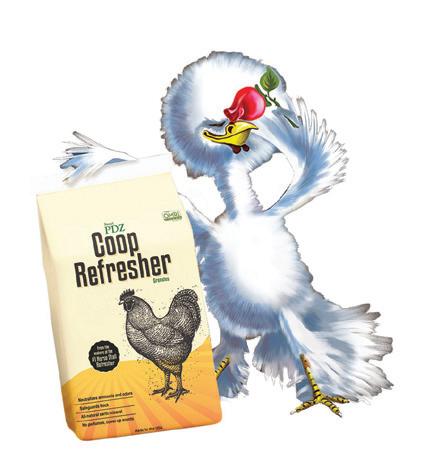
CLASSIFIEDS www.Grit.com 77
GET YOUR LIVESTOCK HANDLING Packages delivered direct to your door with our FREE SHIPPING
POULTRY
POULTRY

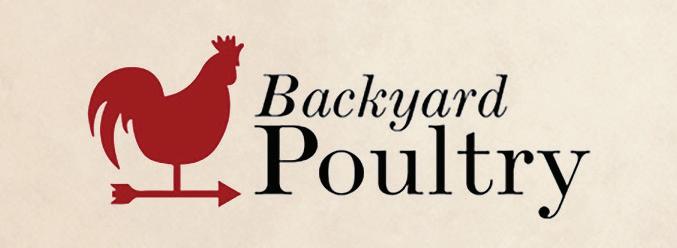






FREE COLOR CATALOG 203 varieties shipped to your local post office, chickens, rare breeds, bantams, ducks, geese, turkeys, guineas, pheasants, quail, supplies and videos. Since “1936” Cackle Hatchery® PO Box 529, Lebanon, MO 65536, 417-532-4581. cacklehatchery.com
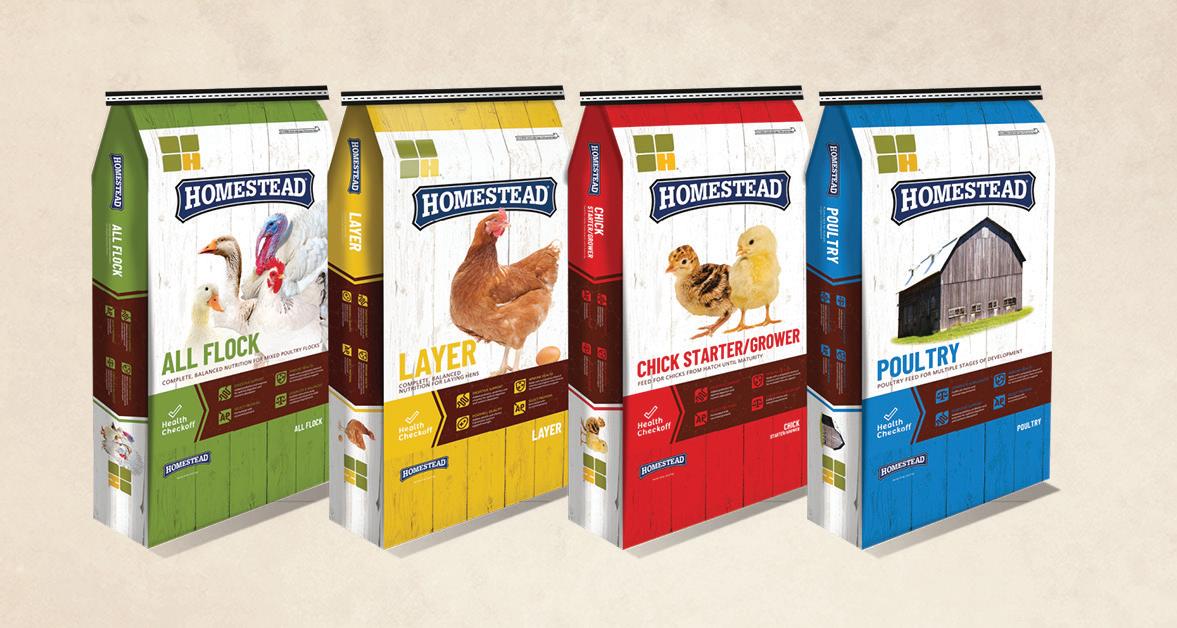

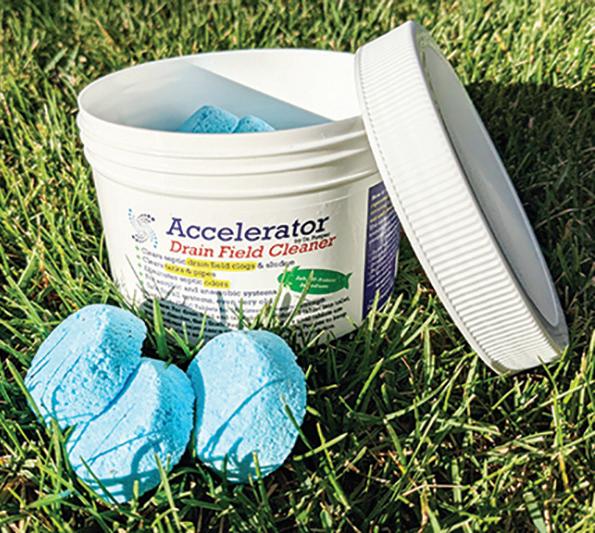
LOCAL
Grown nearby. Join more than 3,000 other farms and connect directly with consumers by listing your farm. Your FREE farm profile can showcase products with farm ph++otos, your farm story, and google map locations where you sell. Made for ALL farms and food types. WWW.LOCALHENS.COM

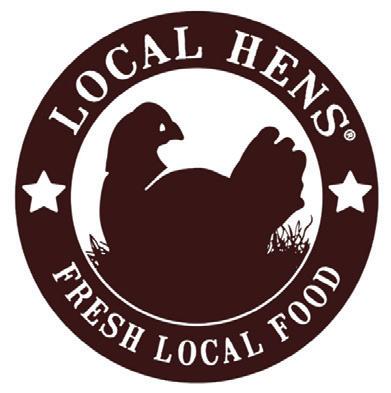
GO TO WWW.CHICKENDOORS.COM for the best automated door on the market or call 512-995-0058




CALL 866-848-5416
SEPTIC

CLASSIC

CLASSIFIEDS May/June 2023 78
SOLUTION
THIS BEFORE PUMPING your septic system or replacing your drain field! Accelerator by Dr. Pooper Drain Field Cleaner is a revolutionary non-toxic commercialstrength septic treatment that clears organic solids from septic tanks and drain fields. Money-back-guarantee! Order at DoctorPooper.com
TRY
HENS FIND GOOD STUFF
TO ADVERTISE IN THE NEXT ISSUE OF Grit SHUTTERS
CHARMING SHUTTERS All Types & Sizes, Real Wood Shutters Make All The Difference! www.shuttercraft.com Madison, CT - Family Owned Free Brochure (203) 245-2608 www.shuttercraft.com No purchase necessary. A purchase will not increase your chances of winning. Open to legal residents of the contiguous United States (excluding Alaska and Hawaii). Entrants must be 18 years of age or older. Sweepstakes begins 03/14/2023 and ends 09/26/2023. See official rules online at backyardpoultry.iamcountryside.com/sweepstakes/hubbard-feeds I Sponsor: Backyard Poultry, 1503 SW 42nd St., Topeka, KS 66609. backyardpoultry.iamcountryside.com/sweepstakes/hubbard-feeds Hubb d Feeds Giveaway Hubbard Poultry Feeds package includes: ~ Chick Starter/Grower: Feed for chicks from hatch until market or maturity. ~ Layer NAB NAP: Complete and balanced nutrition for laying hens. ~ Chick-En-Egg Concentrate NAP/NAB: Poultry feed for multiple stages of development. ~ All Flock Pellet NAB NAP: Complete and balanced nutrition for mixed poultry flocks. $1,000! Enter for your chance to win thisvaluedpackage at SWP_BP15 Hubbard Feeds half.indd 1 3/9/23 11:20 AM Ogden Publications, Inc. cannot be held responsible for unsolicited manuscripts, photographs, illustrations or other materials. Canada Post International Publications Mail Product Sales Agreement No. 40601019; Subscriptions: $24.95 for one year in the United States and its provinces; $31.95 per year in Canada and $35.95 per year foreign, prepaid in US funds. (CANADA GST NBR, 89745 1720 RT0001) Grit does not recommend, approve or endorse the products and/or services offered by companies advertising in the magazine or on the website. Grit classifieds blurb 2.indd 1 3/23/23 10:02 AM
Traditional Artistry

New Black Sesame Oil
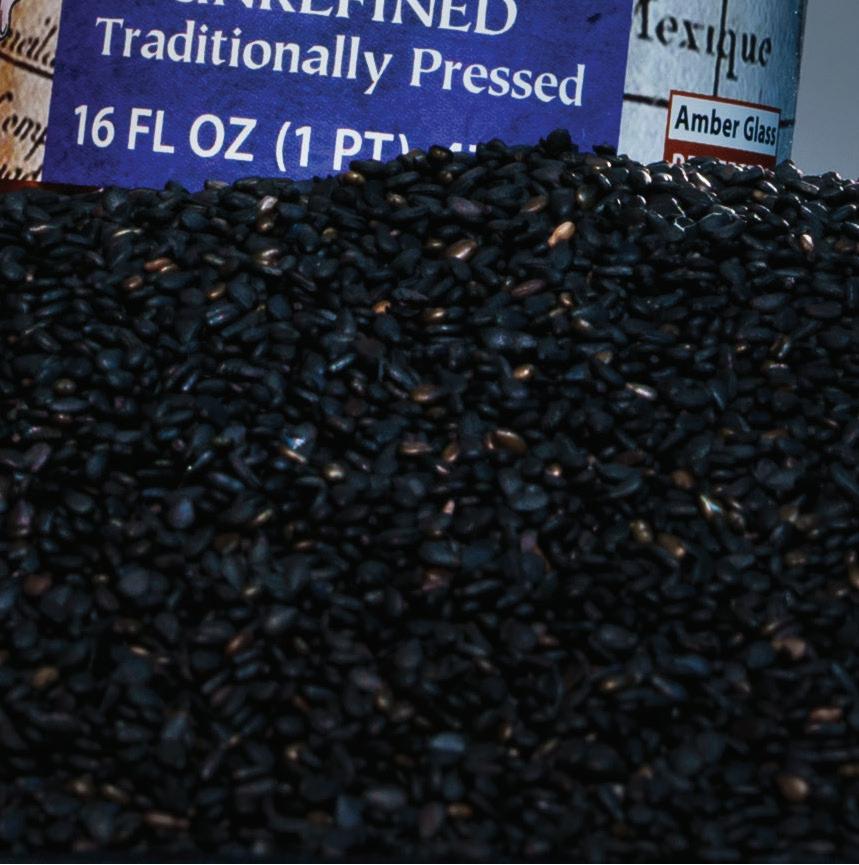
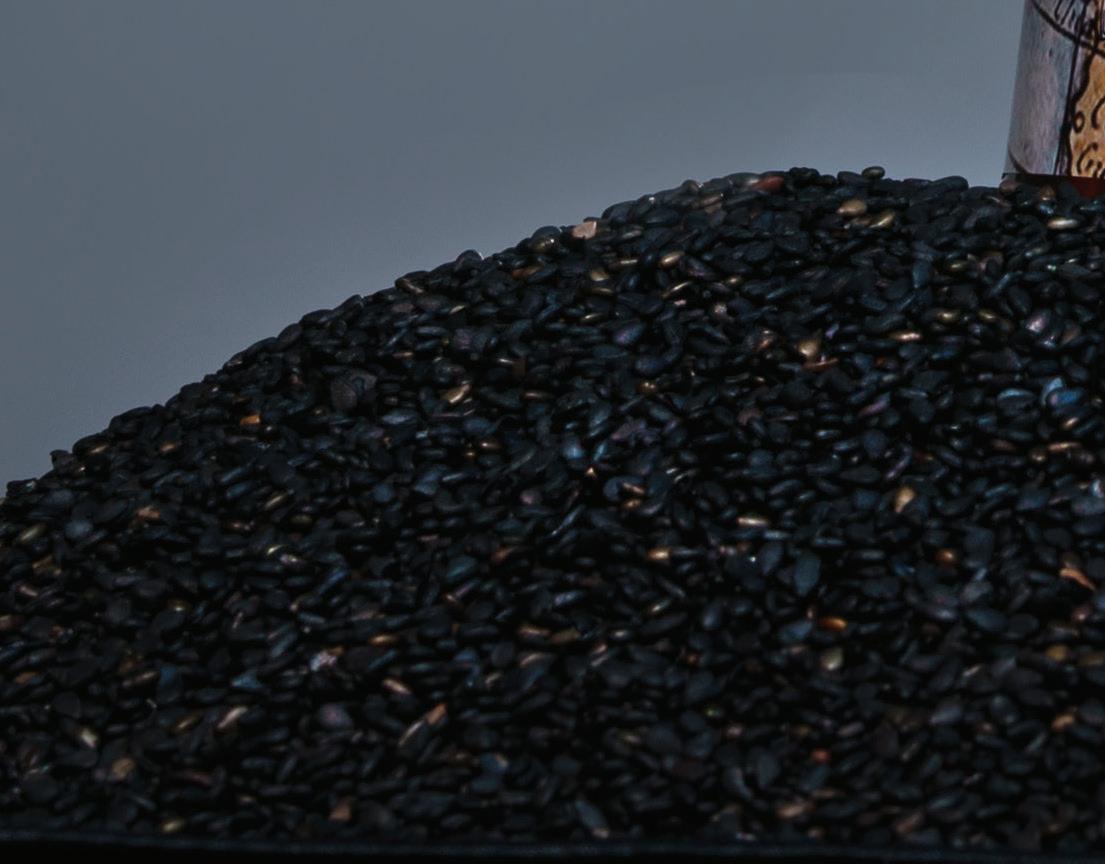


Eden Black Sesame Oil –unrefined, whole, black sesame, cold pressed, no chemicals used. The first pressing oil is bottled after filtering through pure cotton. Amber glass protects its nutrients and taste. Arguably the finest sauté oil. Sesame oil keeps well for extended periods and is excellent for all cooking methods and styles.
Scan to save on your next order.

Clinton, Michigan ◆ 888.424.3336 ◆ cs@edenfoods.com ◆ edenfoods.com
©2023 Eden Foods 12512
“Love it! I’ve got just the thing to go with your delicious cheese-corn quesadillas. My original, made-from-scratch Roo ini.”
“Uh, yeah. Can I have mine shaken, not scratched?

Last time it tasted like the farm.”

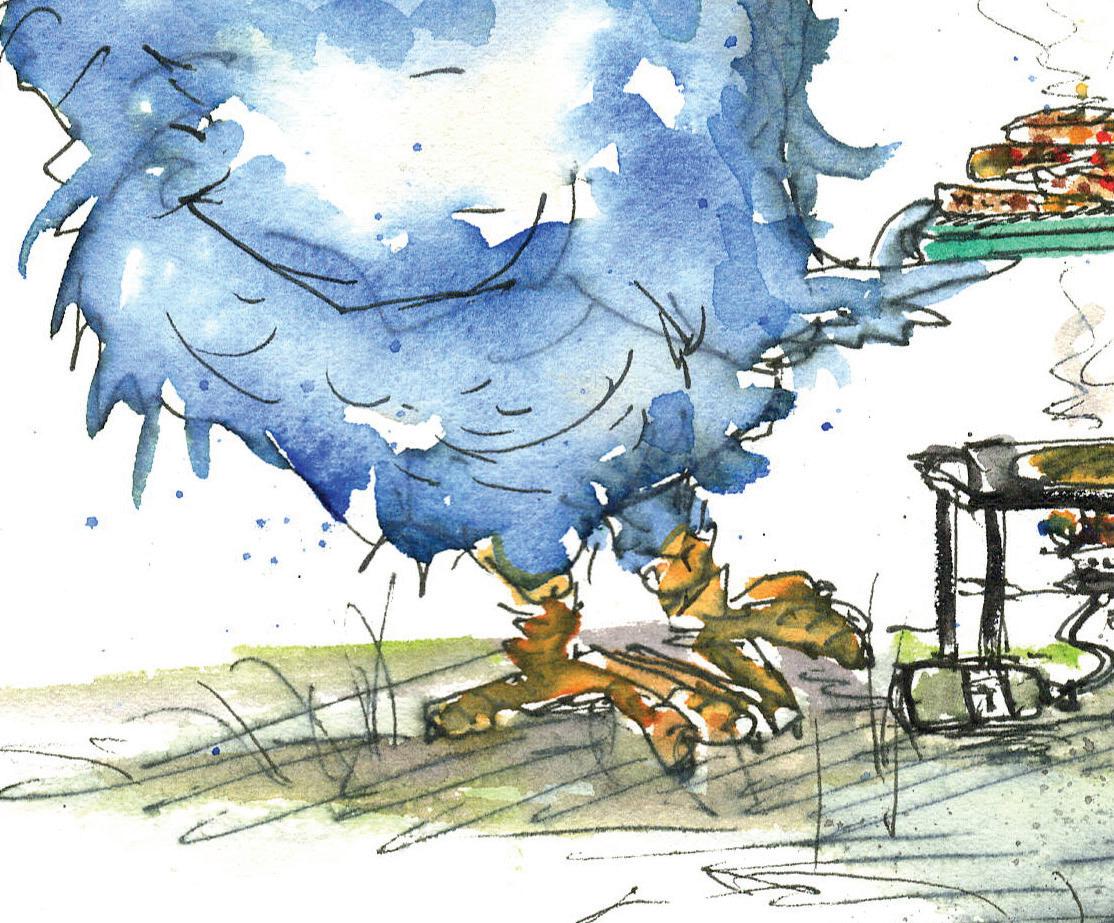


M ICHAEL H AUN

F rom seaside getaways to mountain retreats, the Pacific Yurt goes where you want to be. • Comfortable • Affordable • Easy to Set Up • Eco Friendly Call today 800-944 -0240 yur ts.com Design & price your yurt in 3D at The Original Modern Yurt TM See #20 on page 63
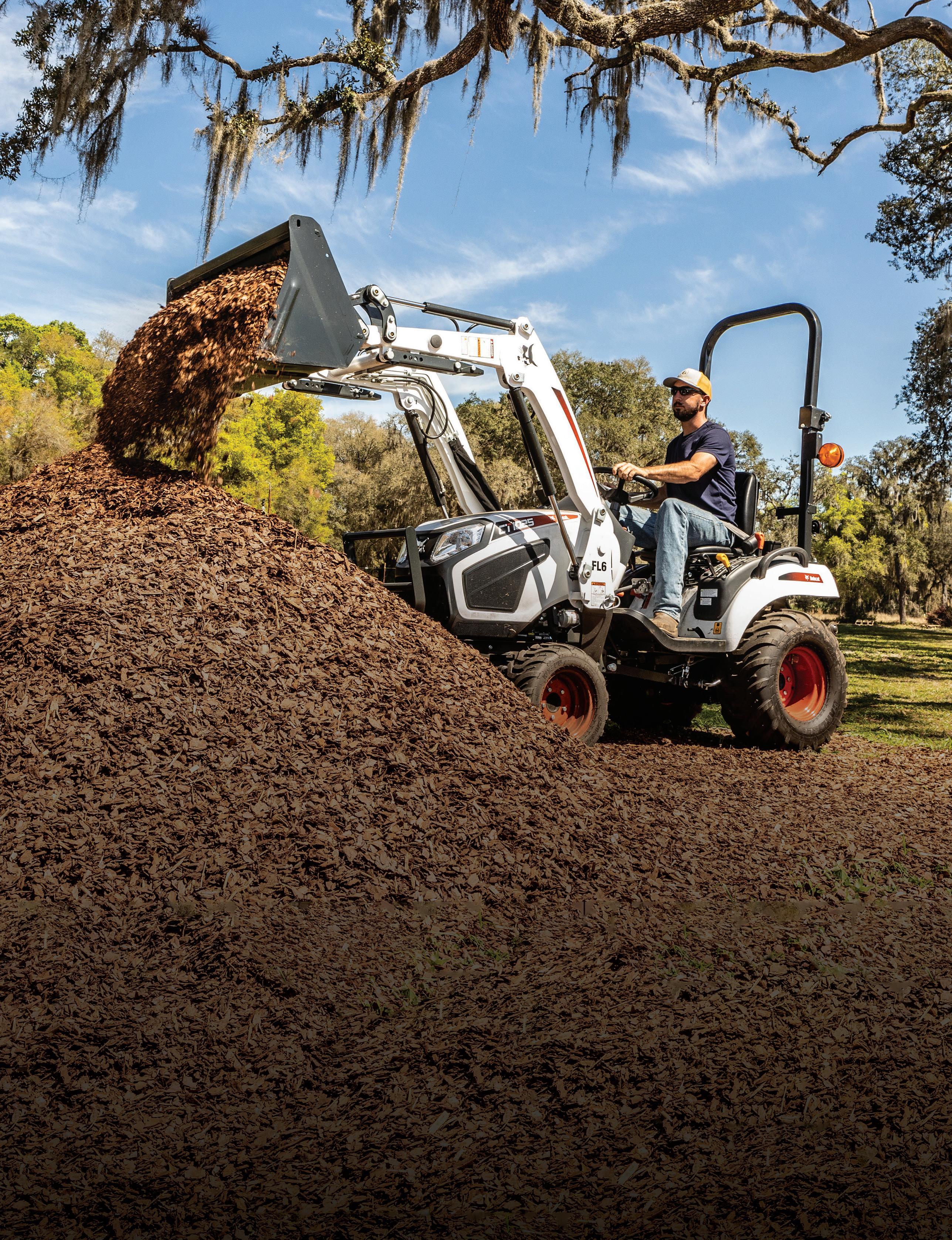

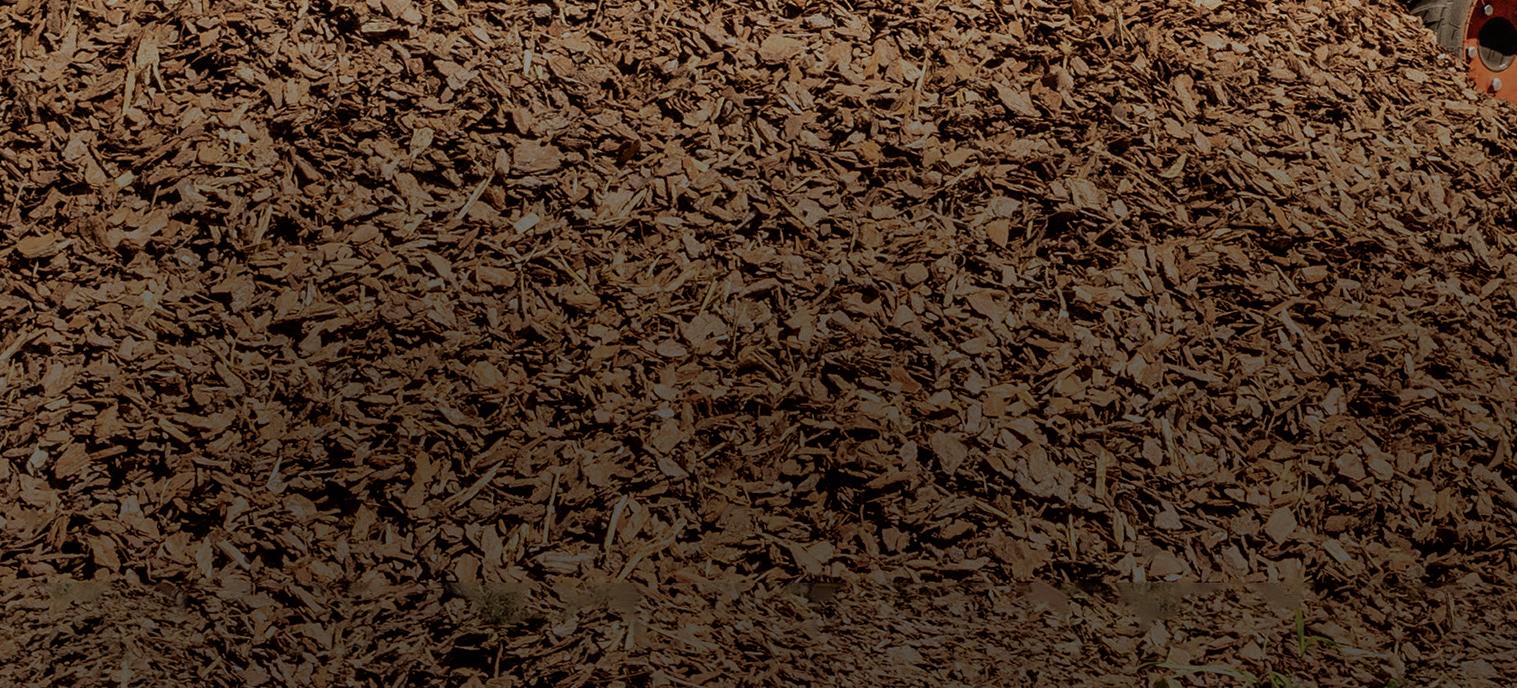
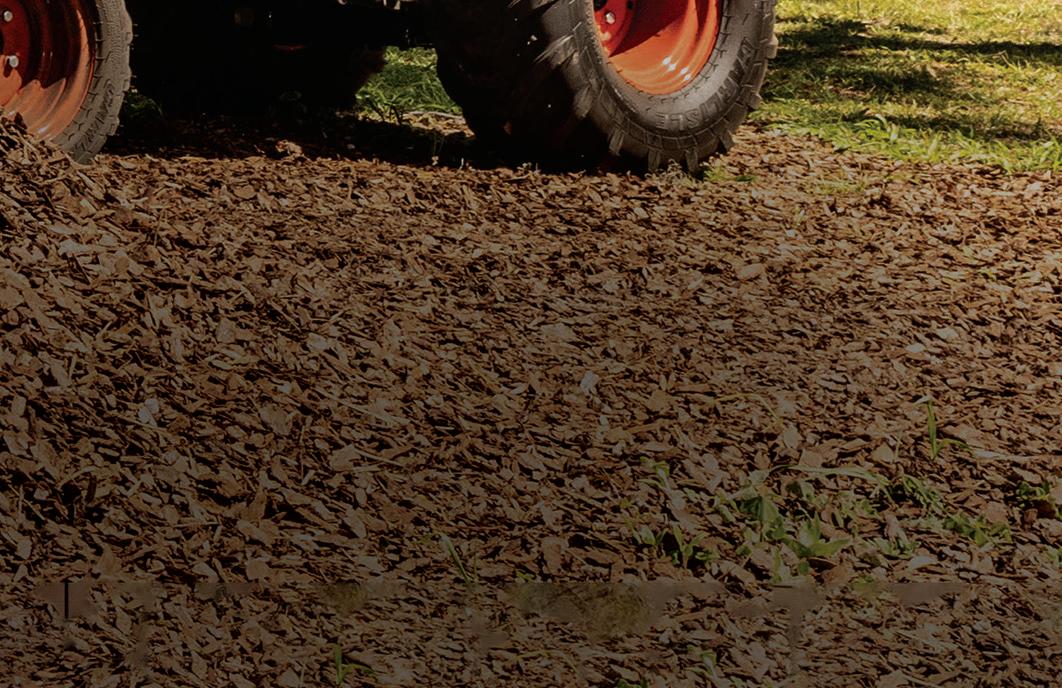





If you have the will to get more done on your property, Bobcat has the way – with a lineup of compact tractors that works as hard as you do. Bobcat Company is a member of the Doosan Group. Doosan is a global leader in construction, grounds maintenance and material handling equipment, power and water solutions, and engineering that has proudly served customers and communities for more than a century. Bobcat ®, the Bobcat logo and the colors of the Bobcat machine are registered trademarks of Bobcat Company in the United States and various other countries. ©2023 Bobcat Company. All rights reserved. | 1550 WHAT WILL YOU DO WHEN ANYTHING IS POSSIBLE? BOBCAT.COM
































































 JAMES LEO VIA EMAIL
JAMES LEO VIA EMAIL











































 MARY H. GAPLAND, MARYLAND
MARY H. GAPLAND, MARYLAND

 ASHLEY WALKER VIA EMAIL
ASHLEY WALKER VIA EMAIL




 G rit READER VIA EMAIL
G rit READER VIA EMAIL



























 Story and photos by Kristina Seleshanko
Story and photos by Kristina Seleshanko









































 By Ashleigh Krispense
By Ashleigh Krispense
























































 From top: Soft shells can mean a hen is stressed or lacking calcium. Young pullets might lay eggs with double yolks.
From top: Soft shells can mean a hen is stressed or lacking calcium. Young pullets might lay eggs with double yolks.





























































































































































































































































 By Kami McBride
By Kami McBride





























 By Virginia Montgomery
By Virginia Montgomery


































































































 Story and photos by Maggie Bullington
Story and photos by Maggie Bullington


















































 By Ed Brotak
By Ed Brotak
















































































































































































































































































 By Dana Benner
By Dana Benner


















































































































































